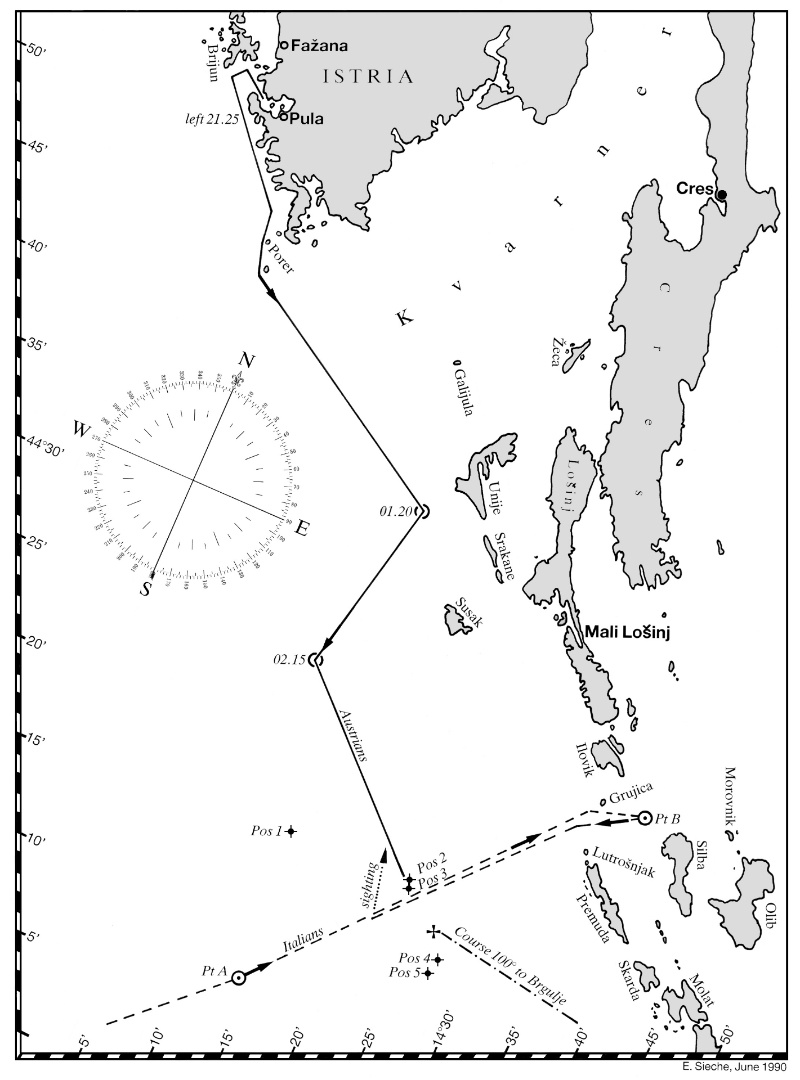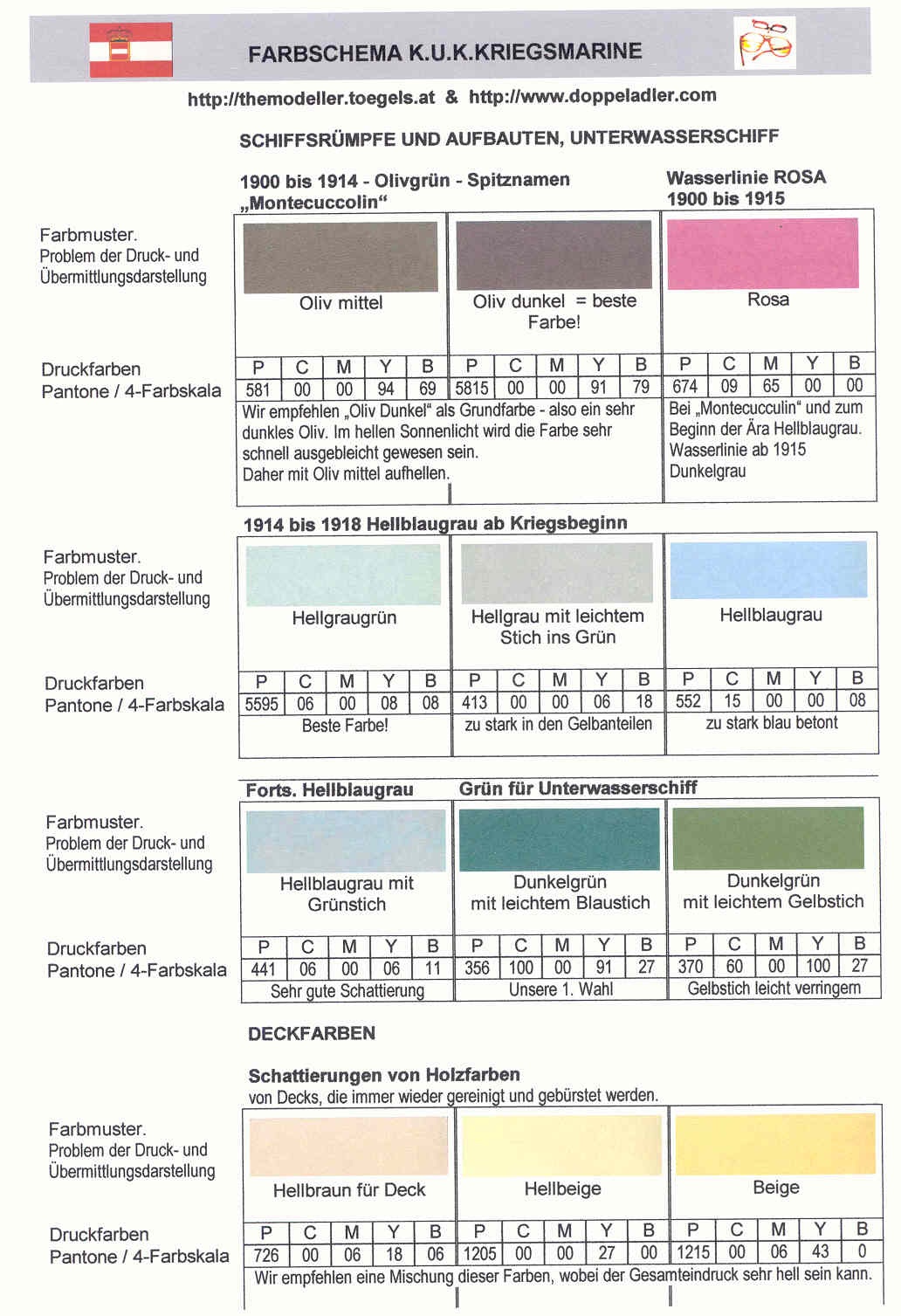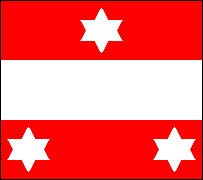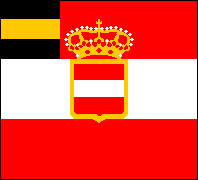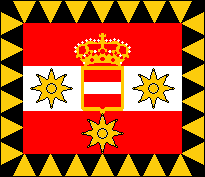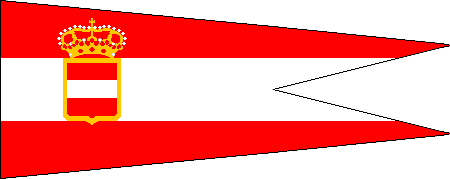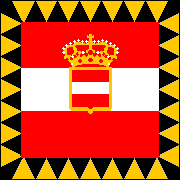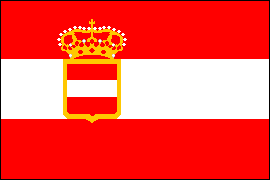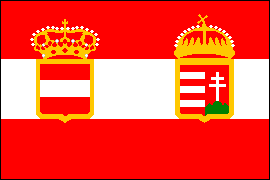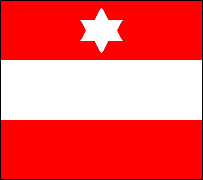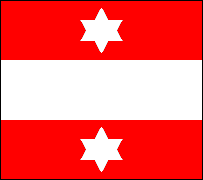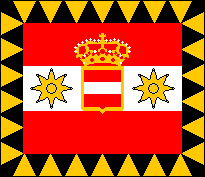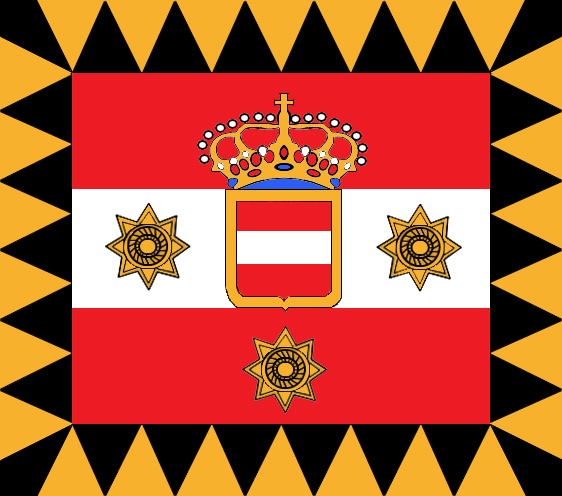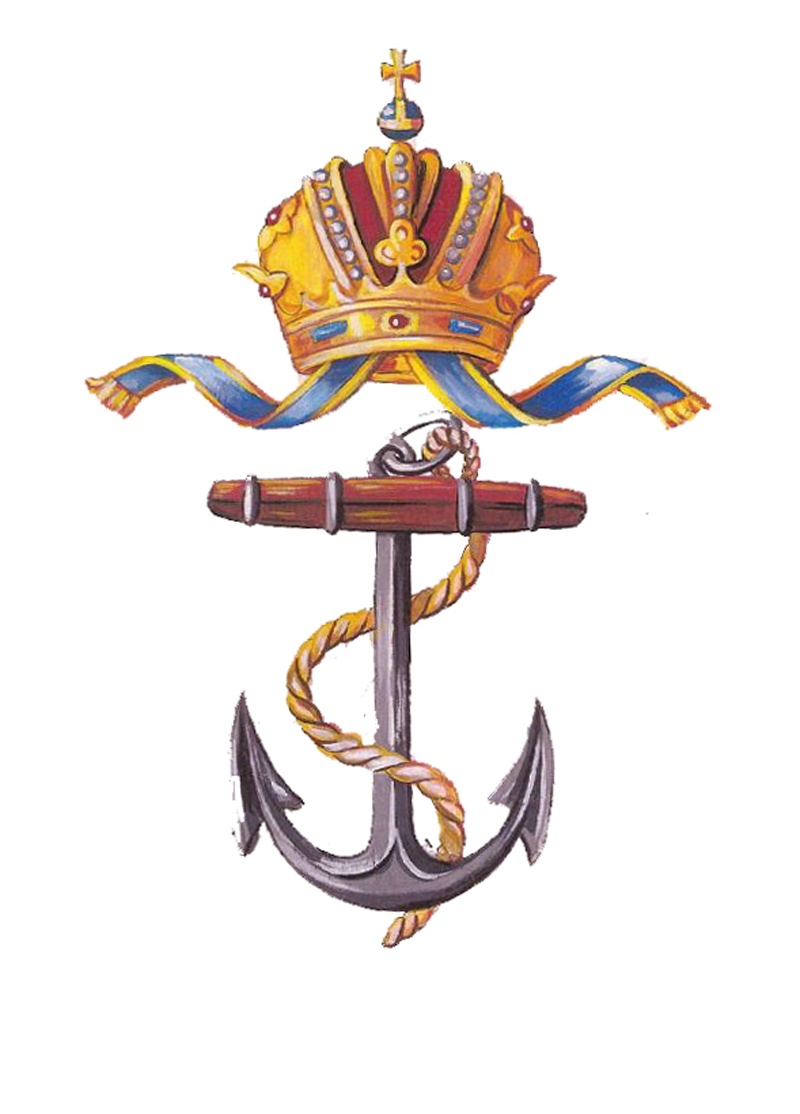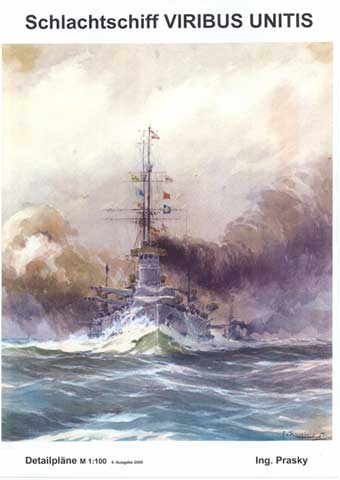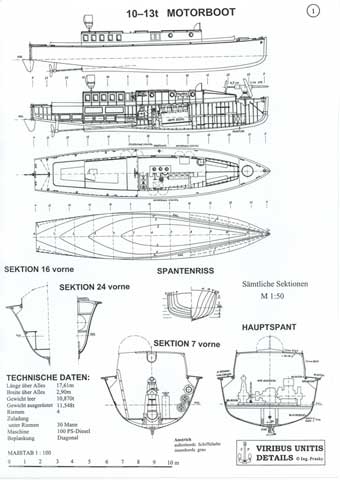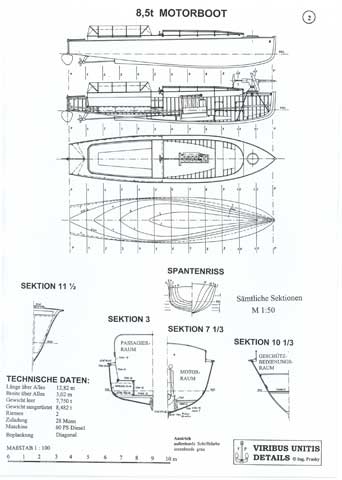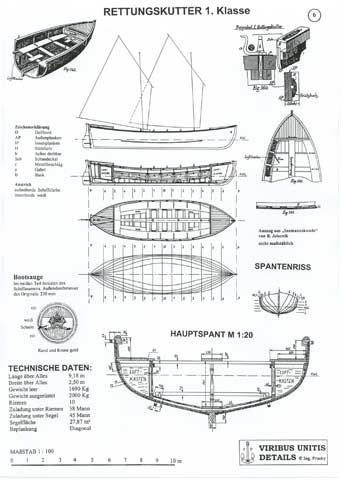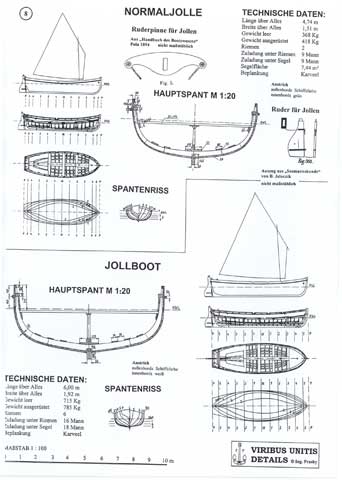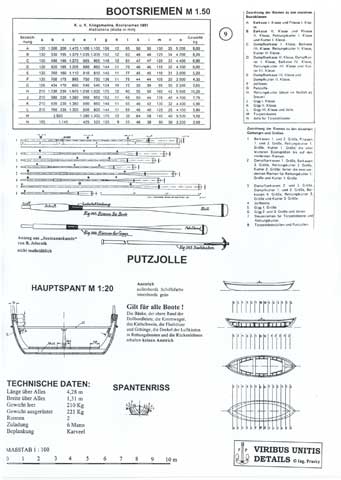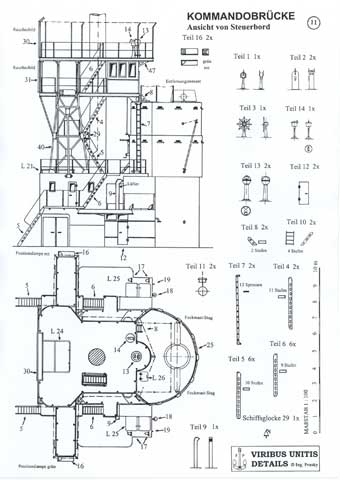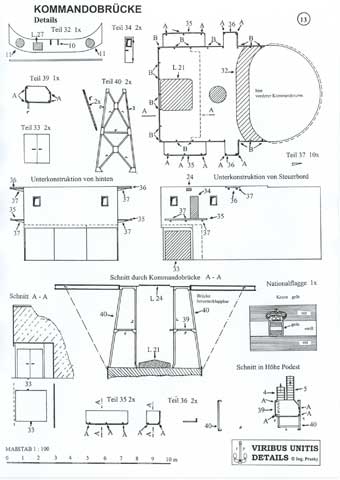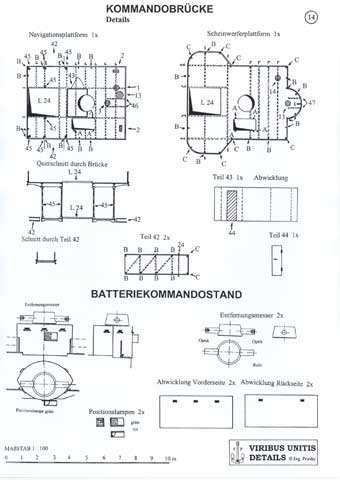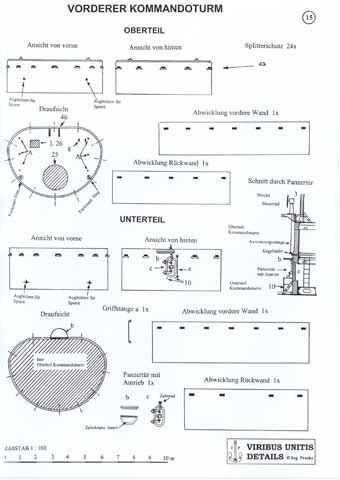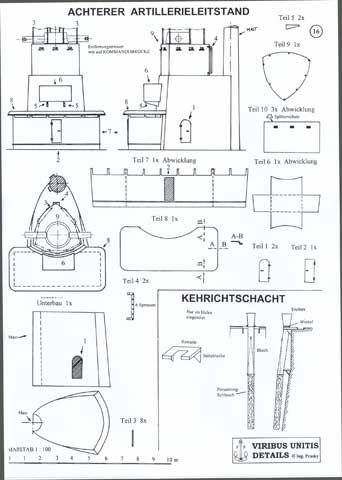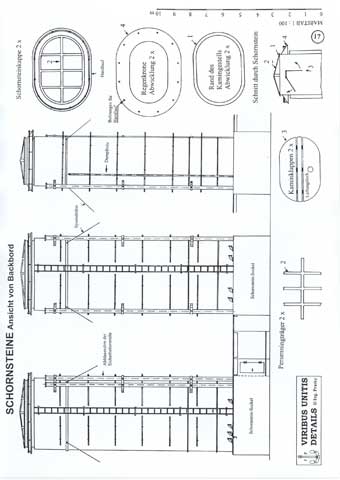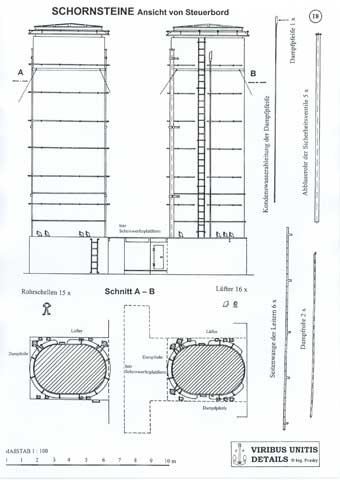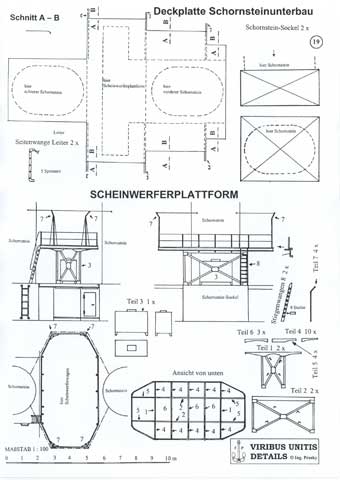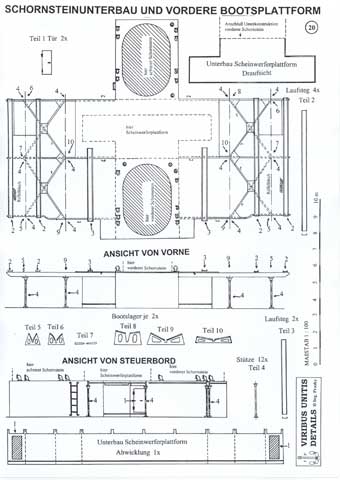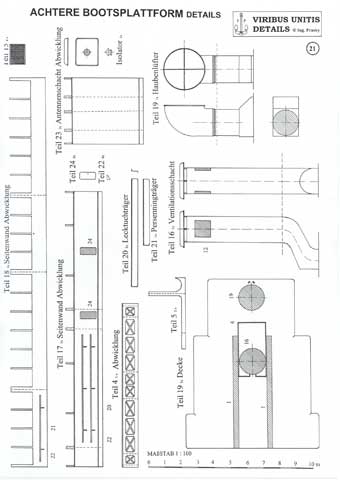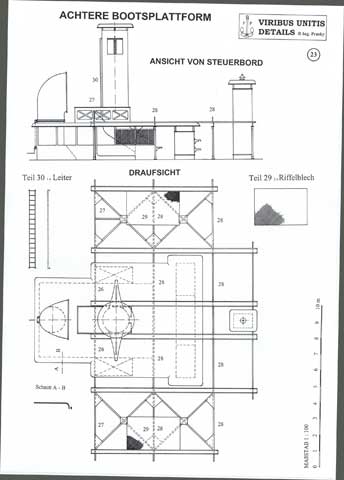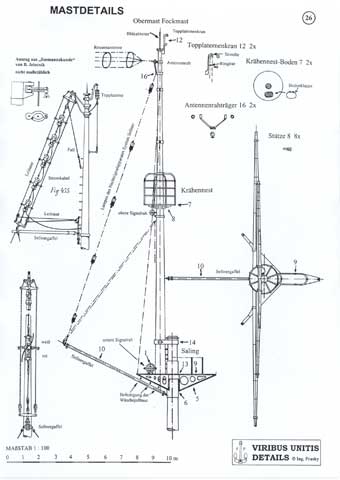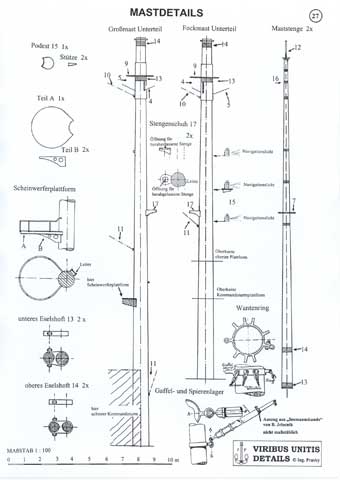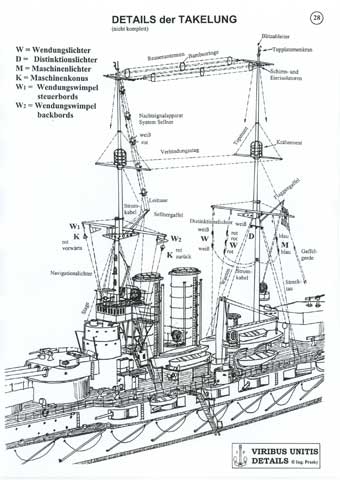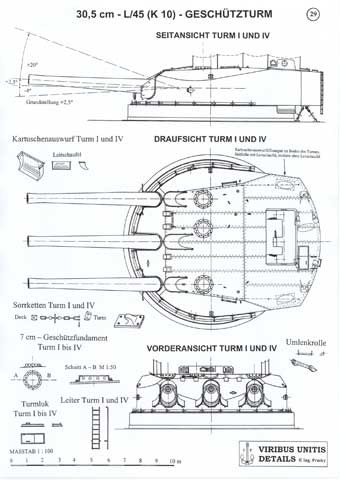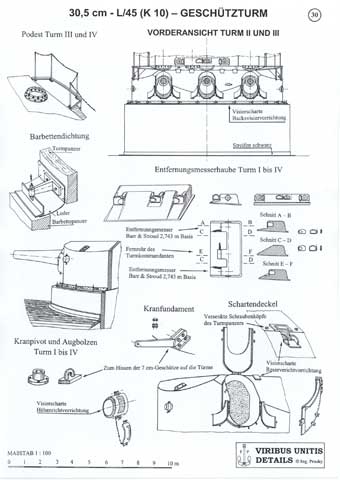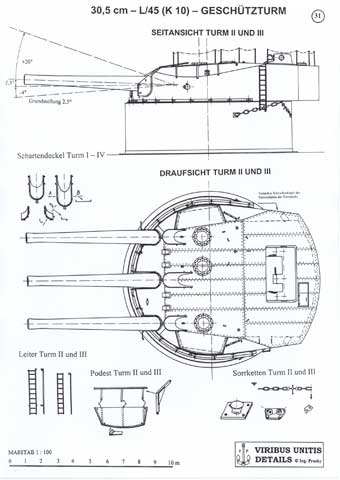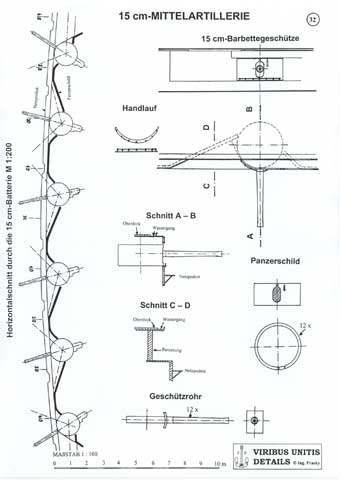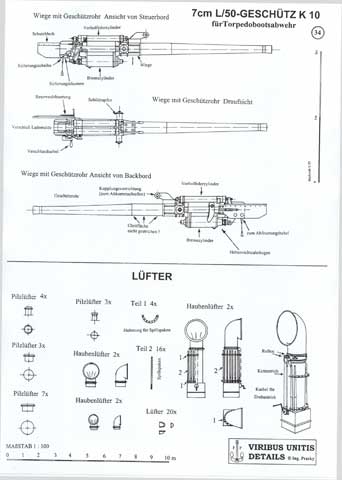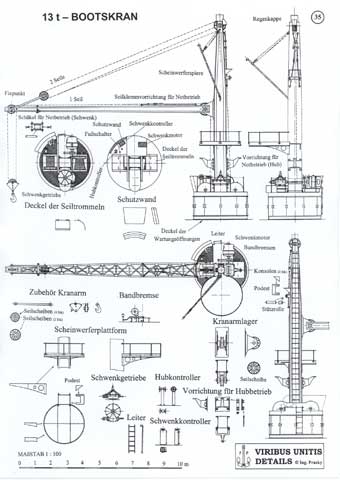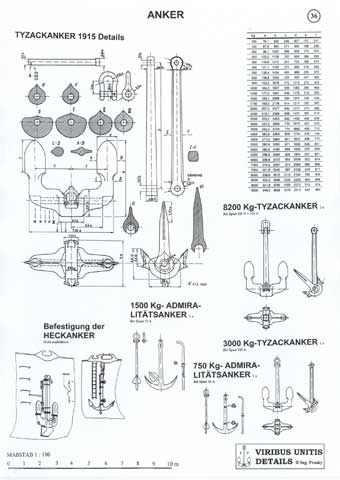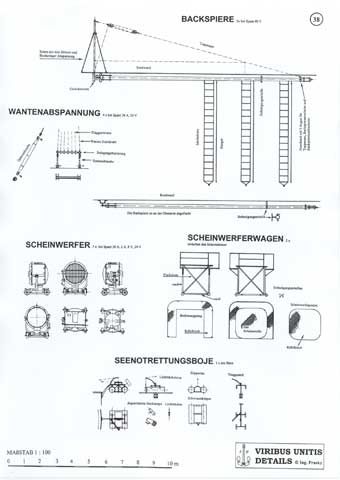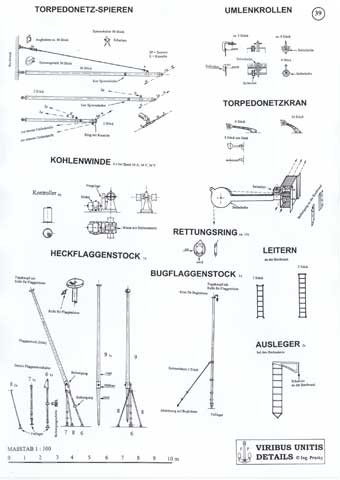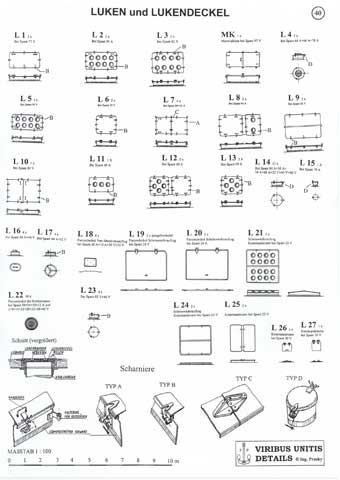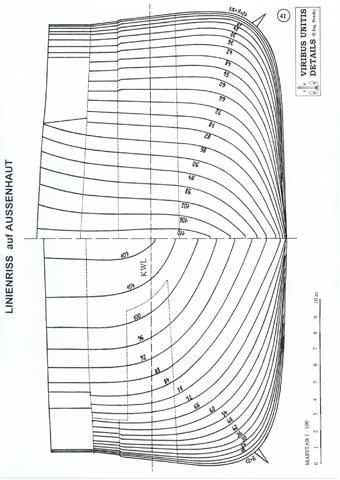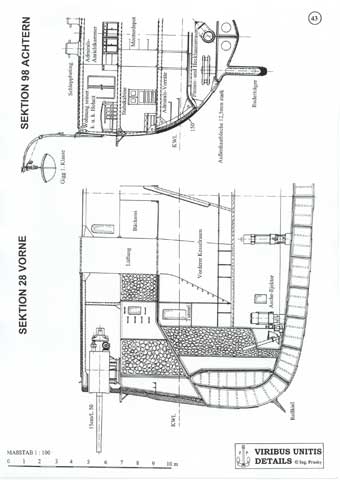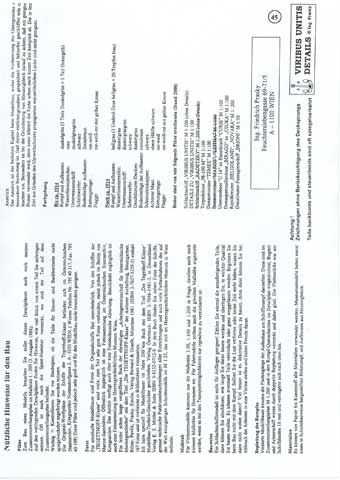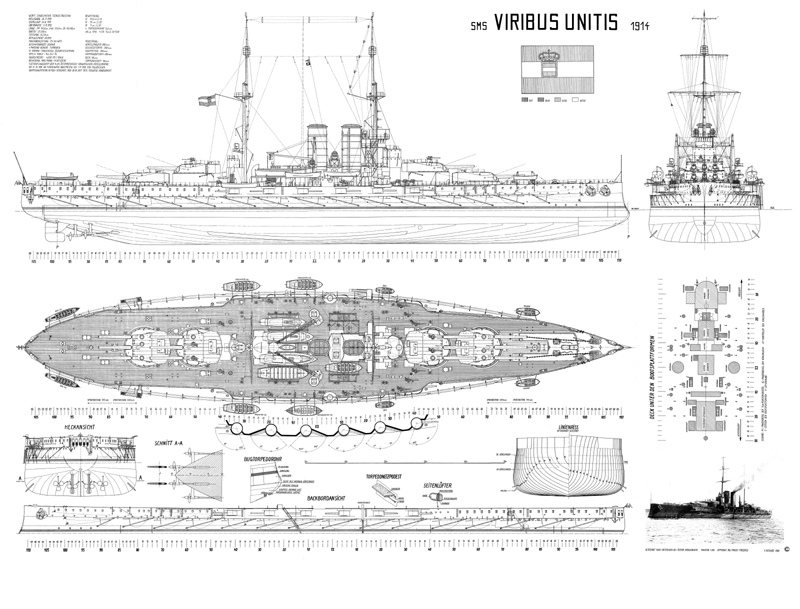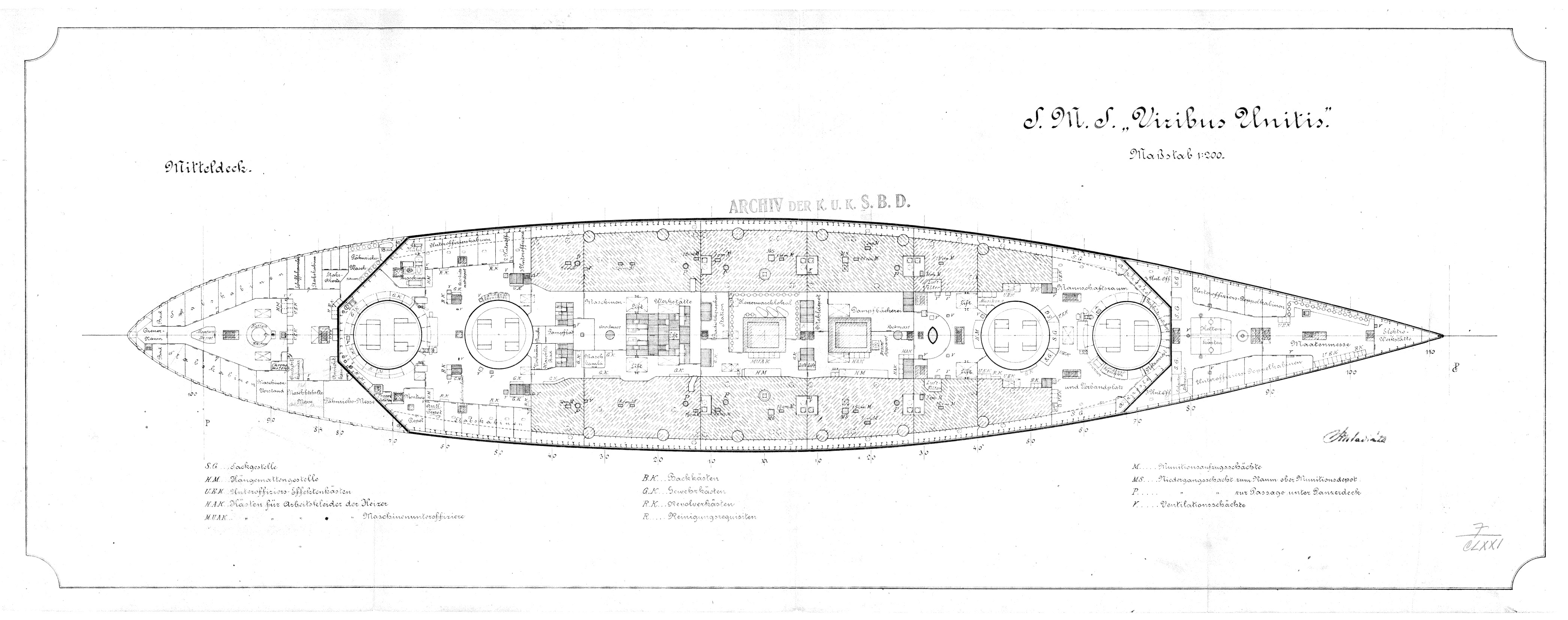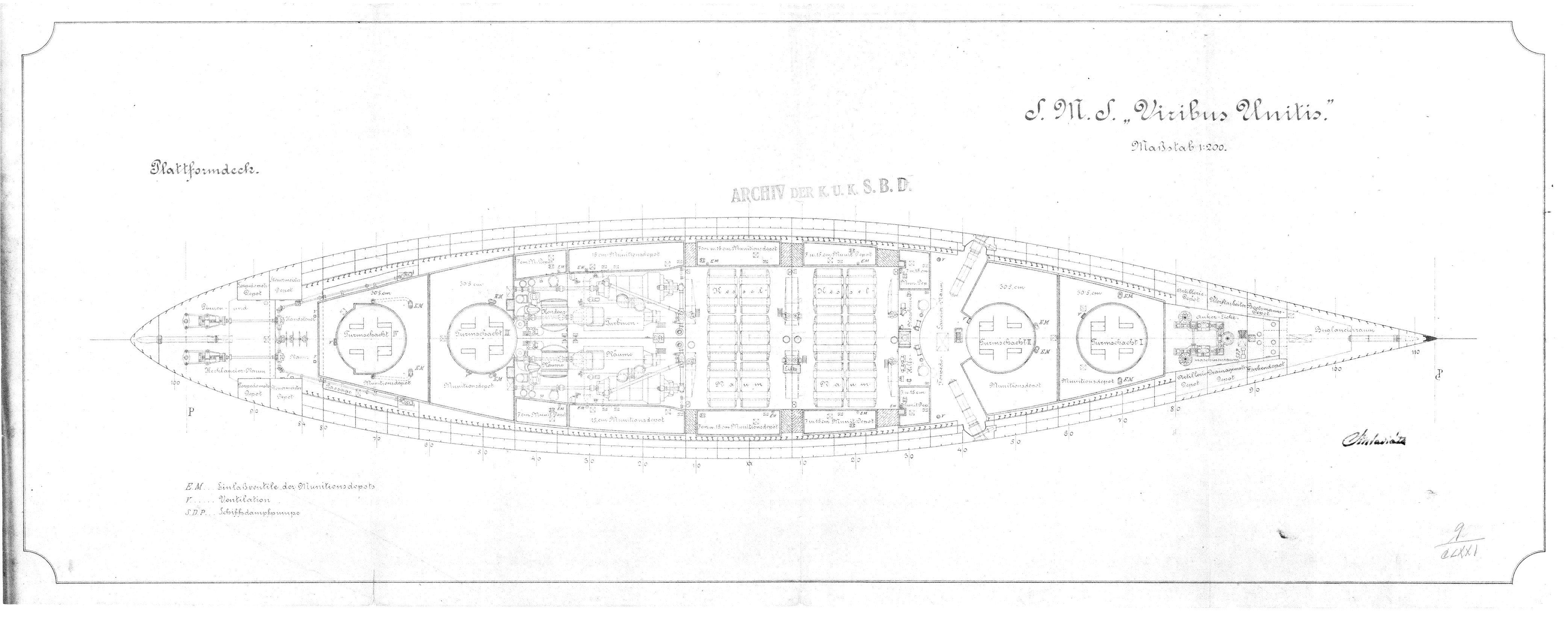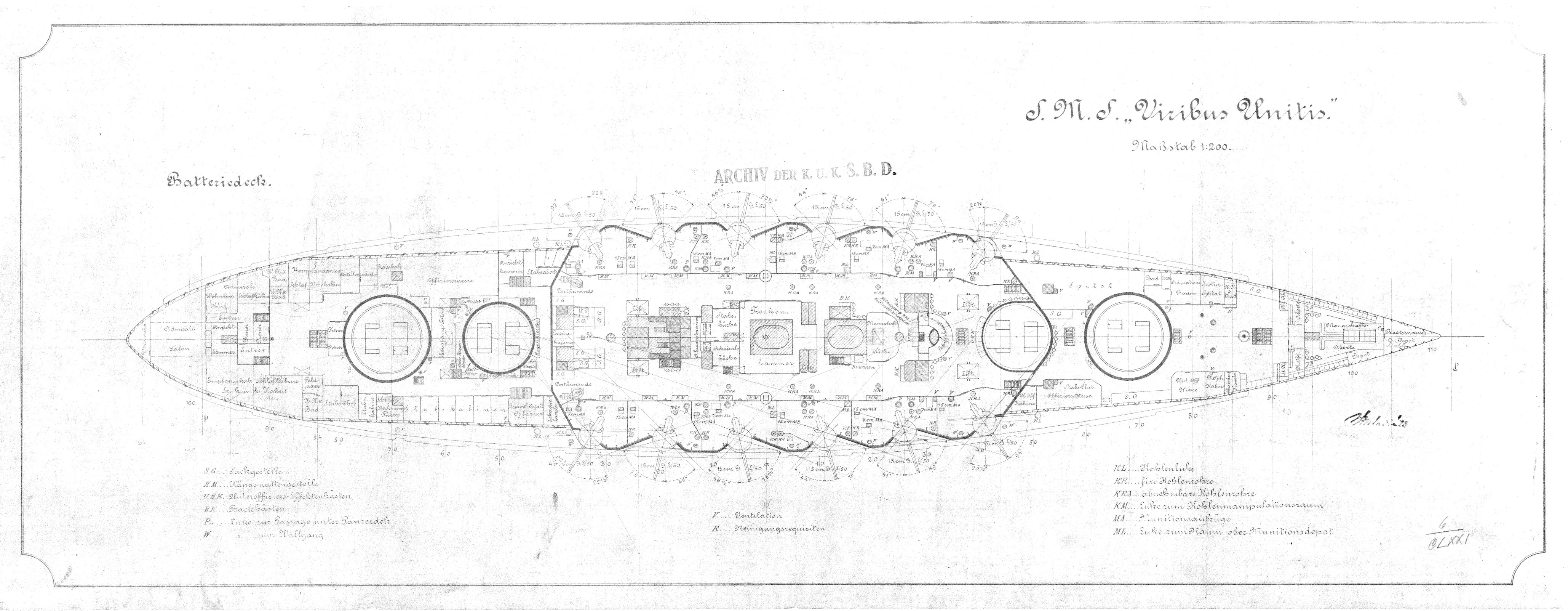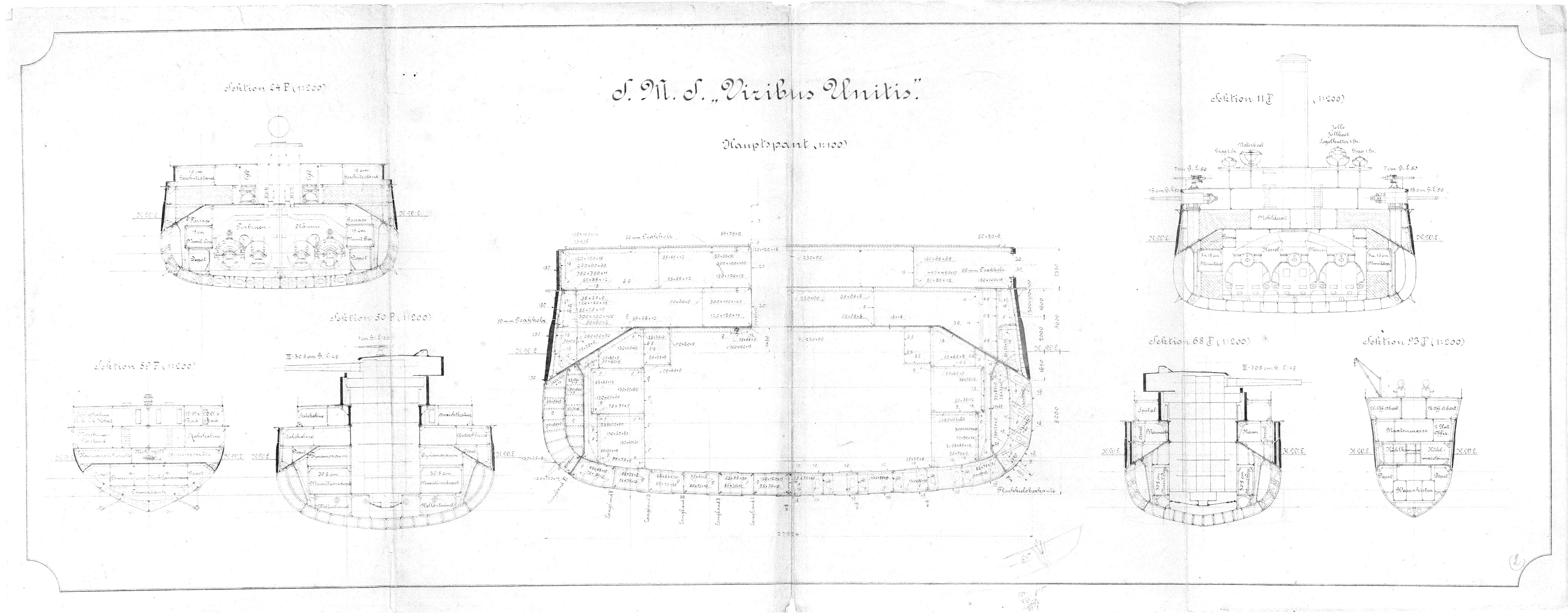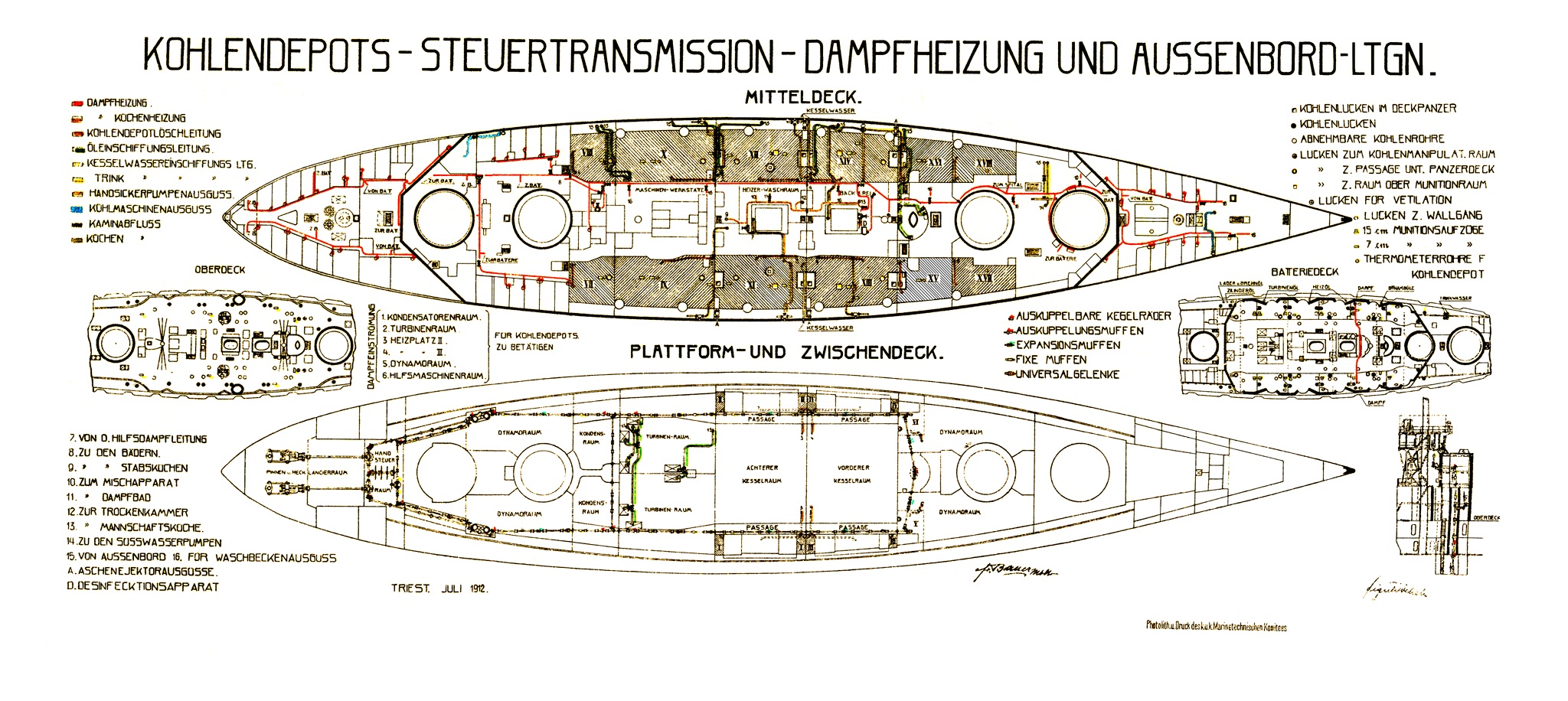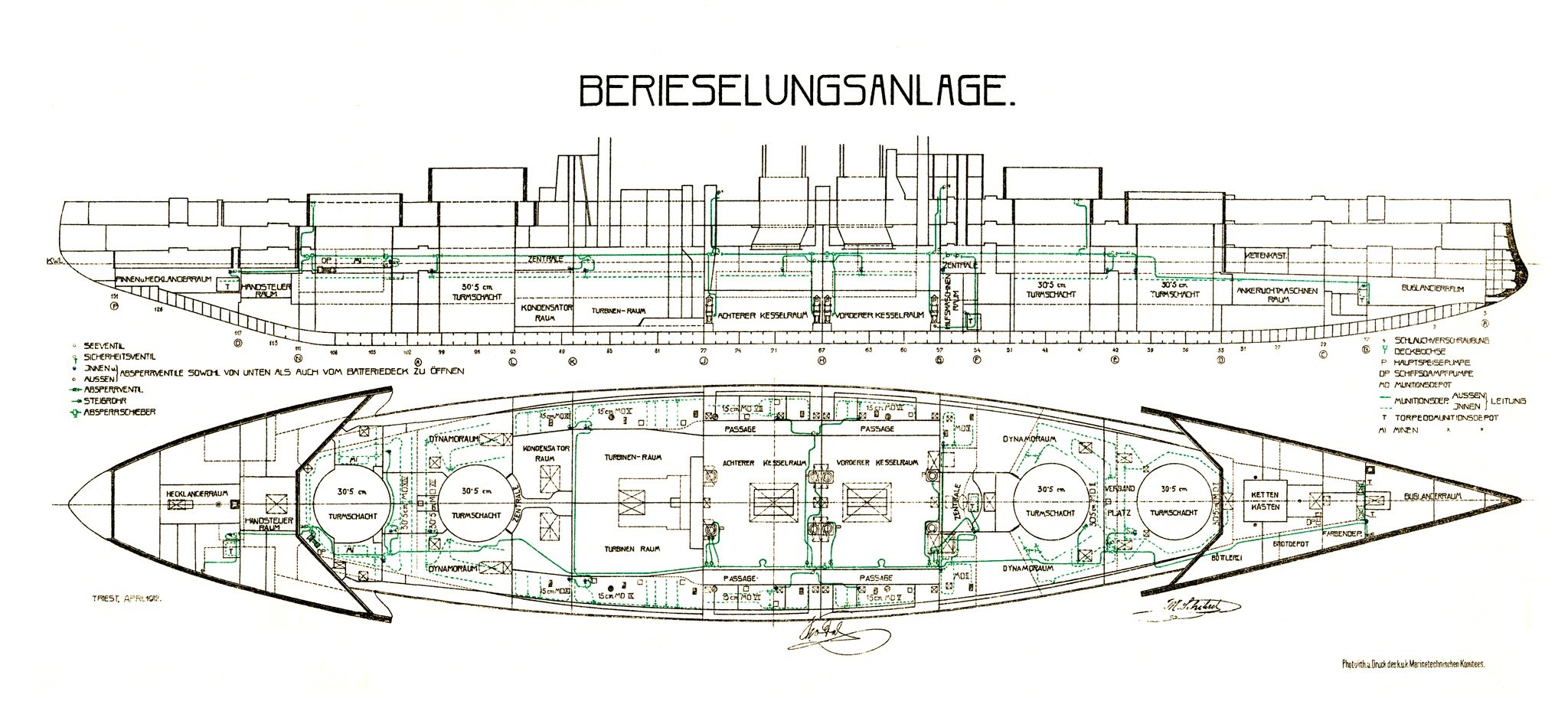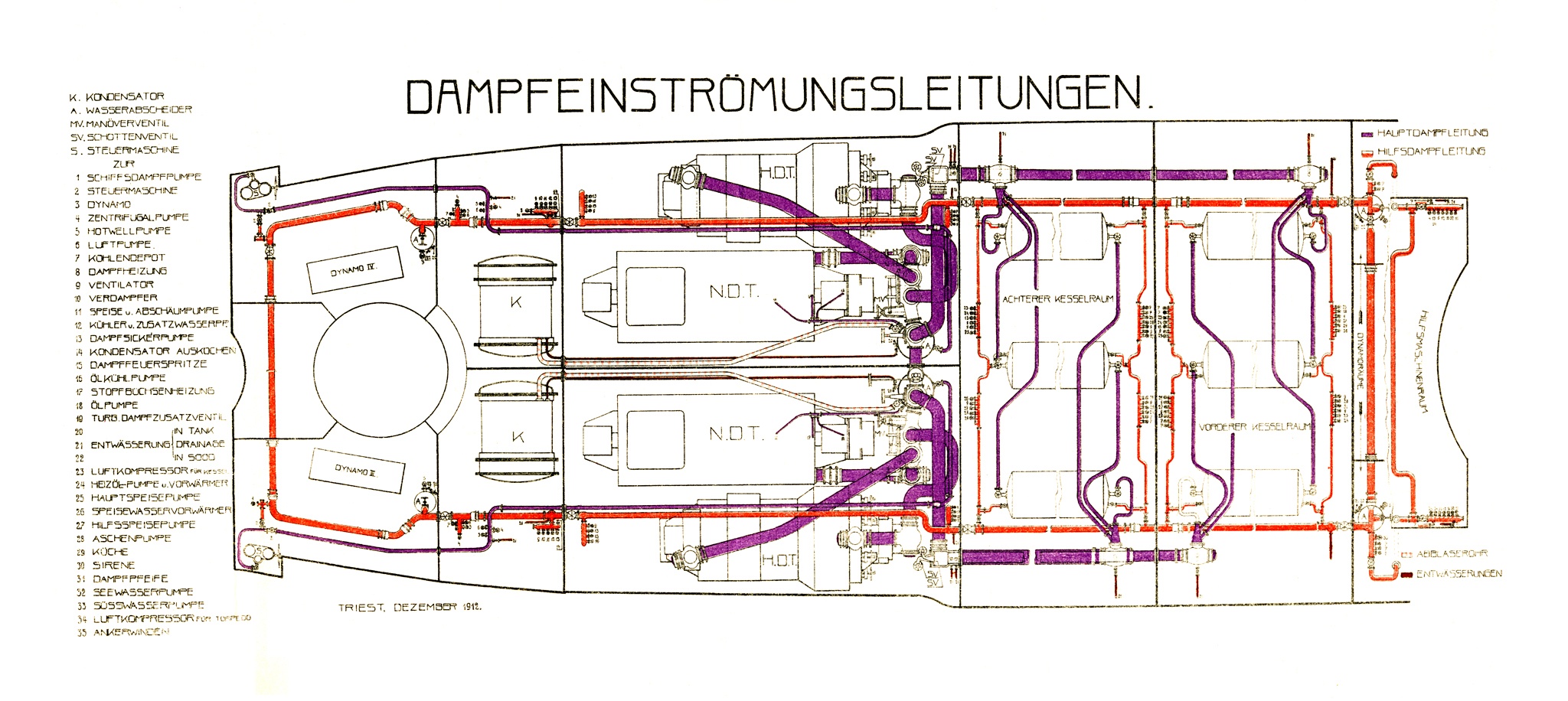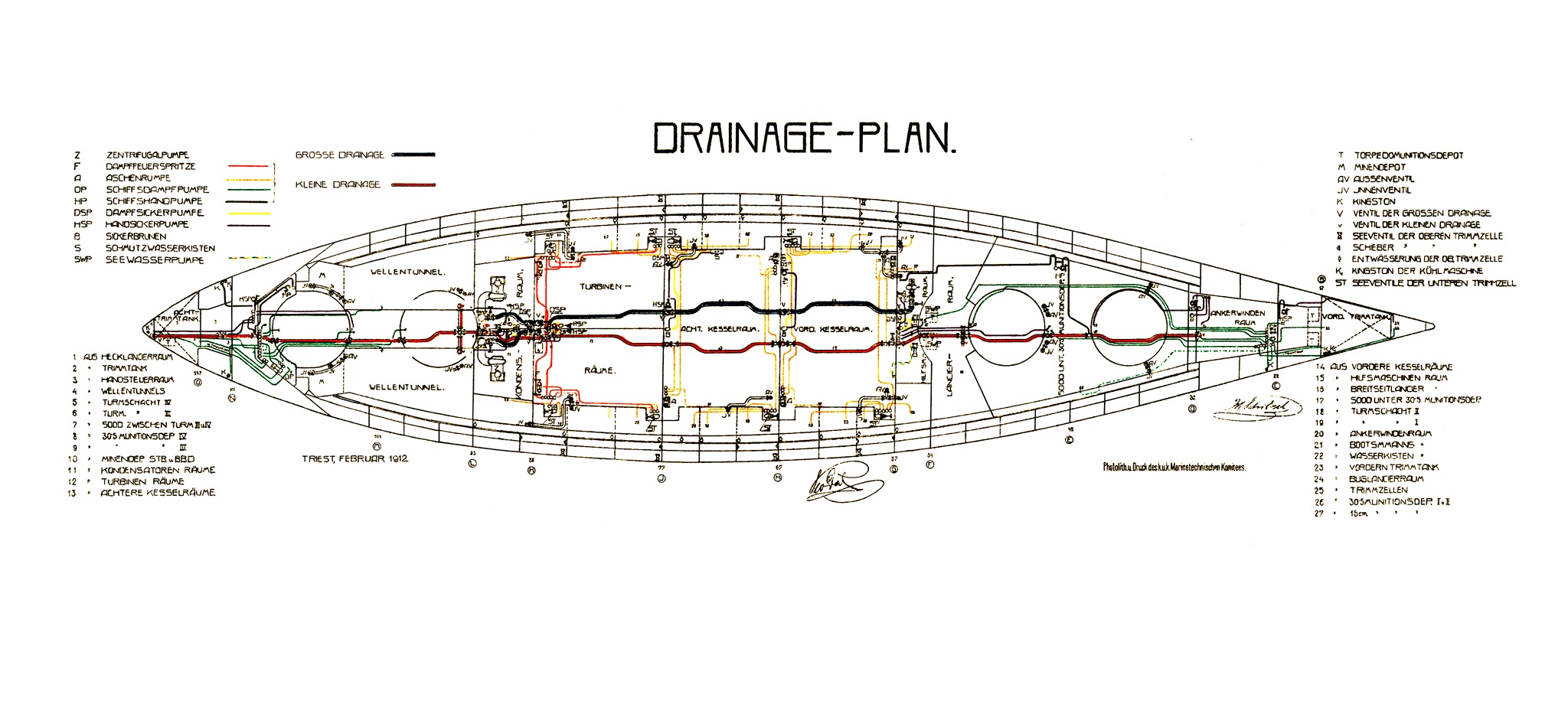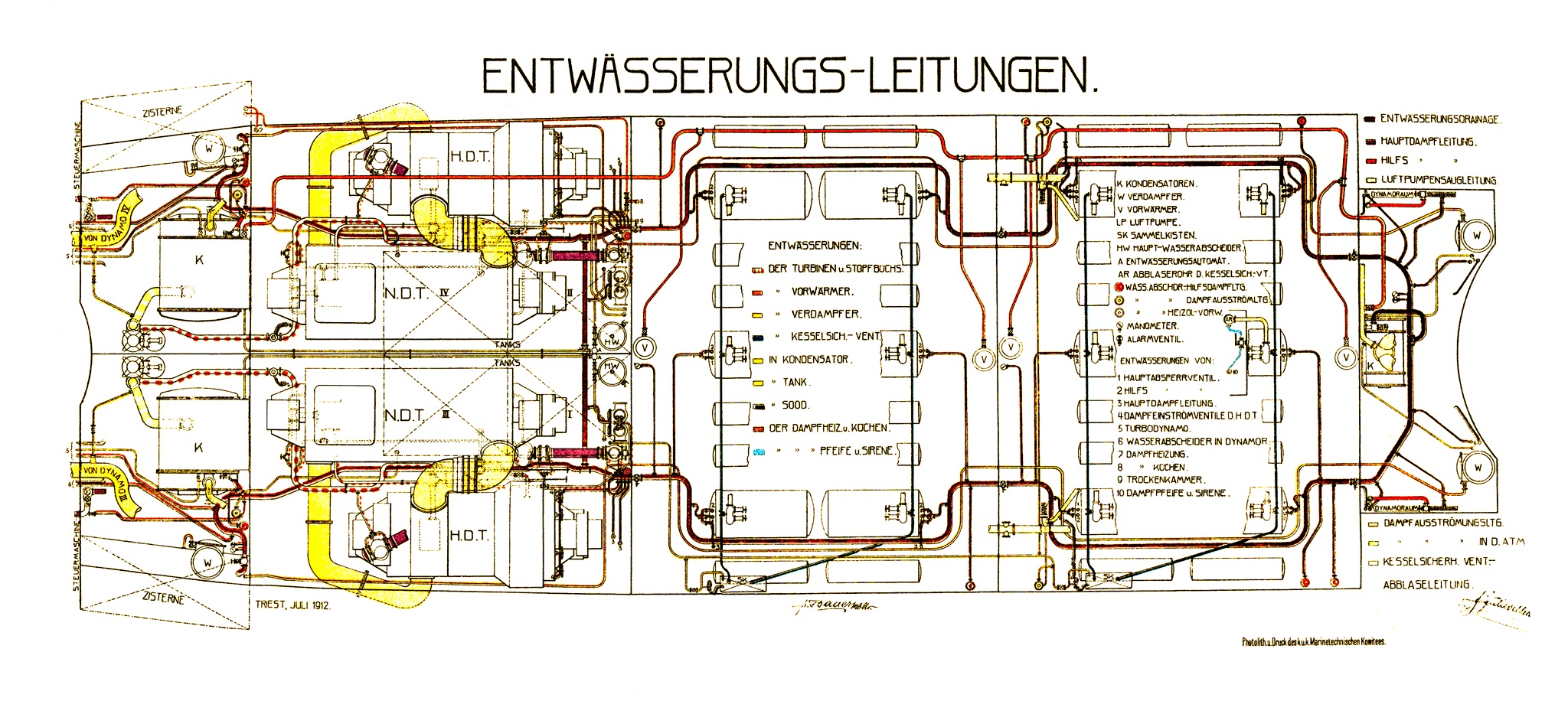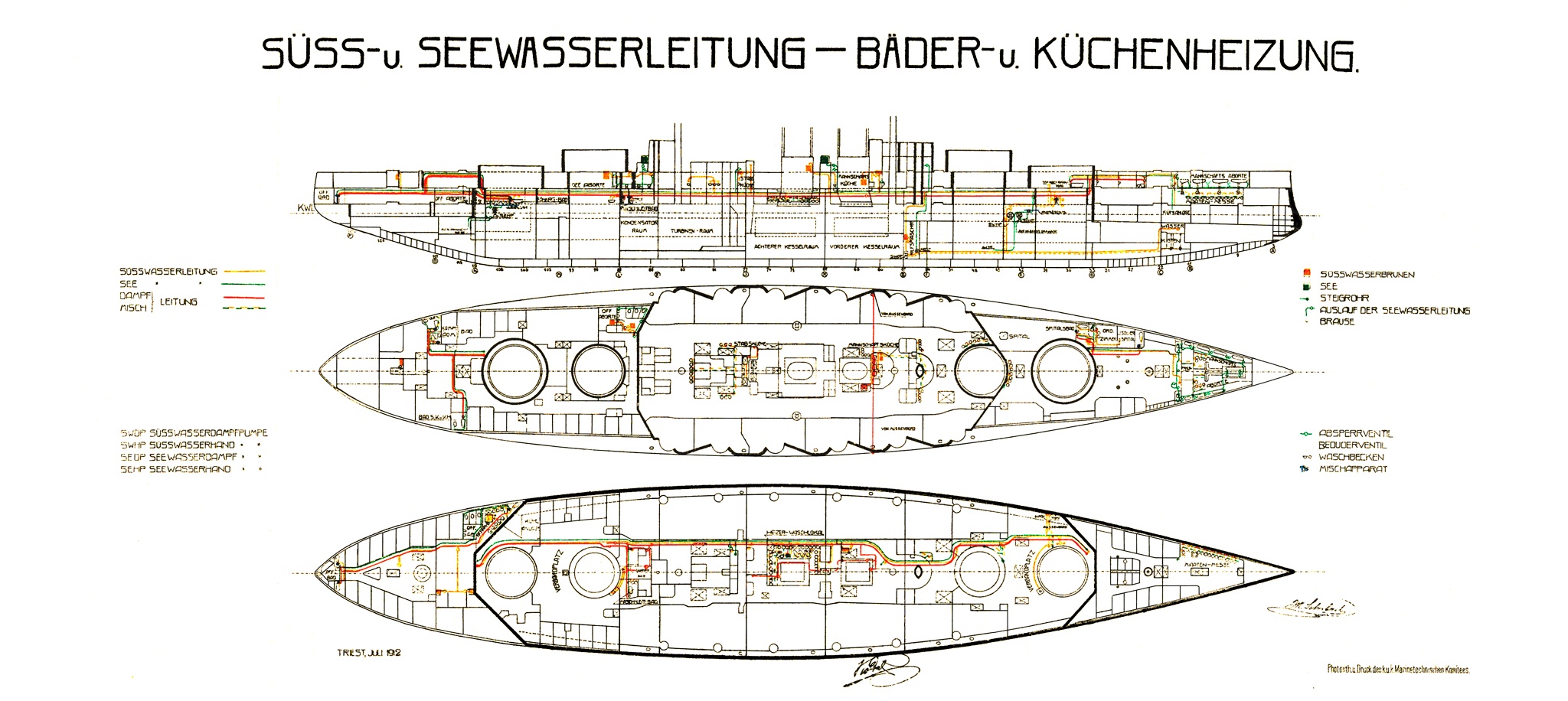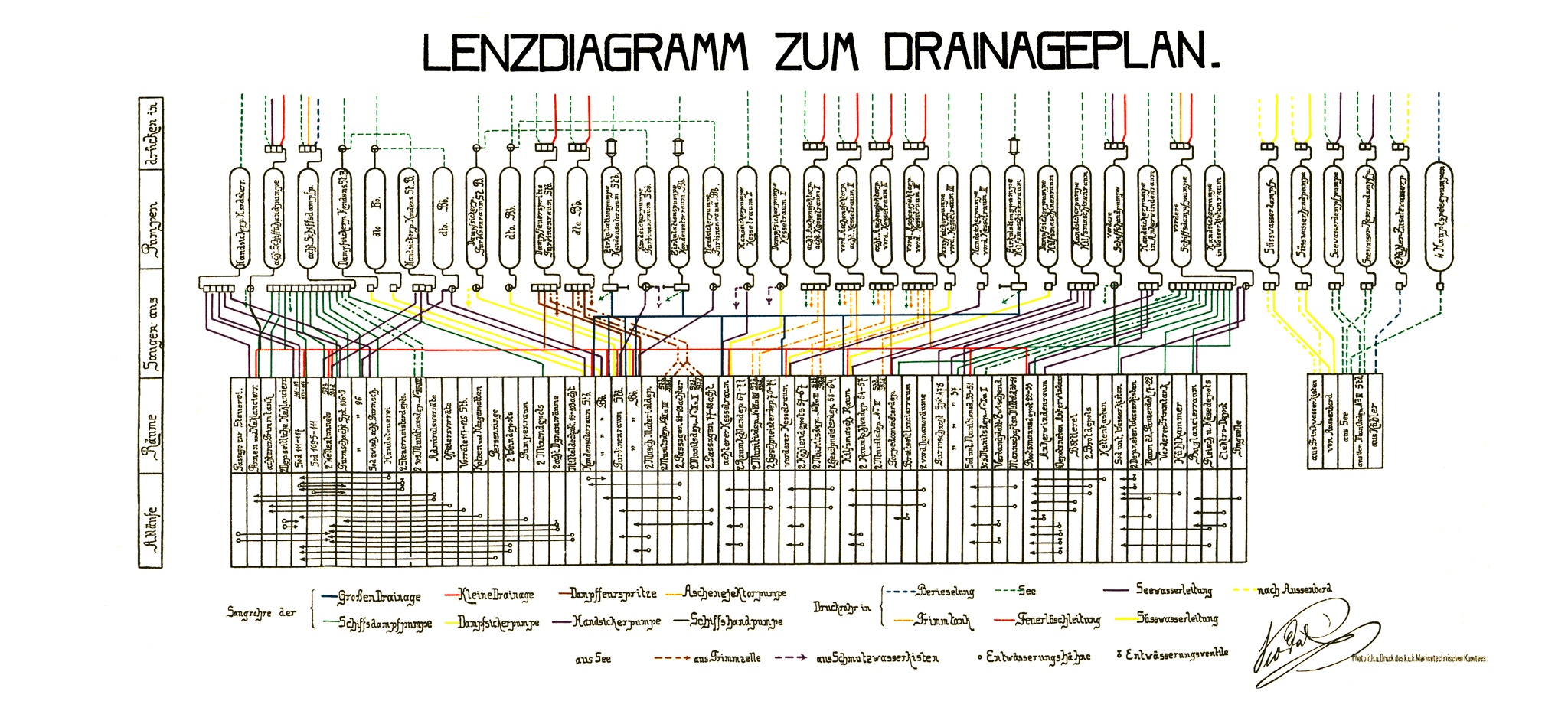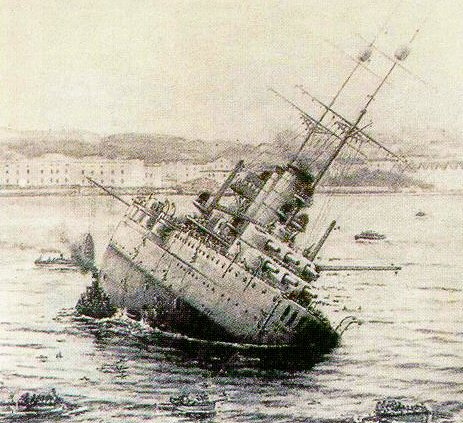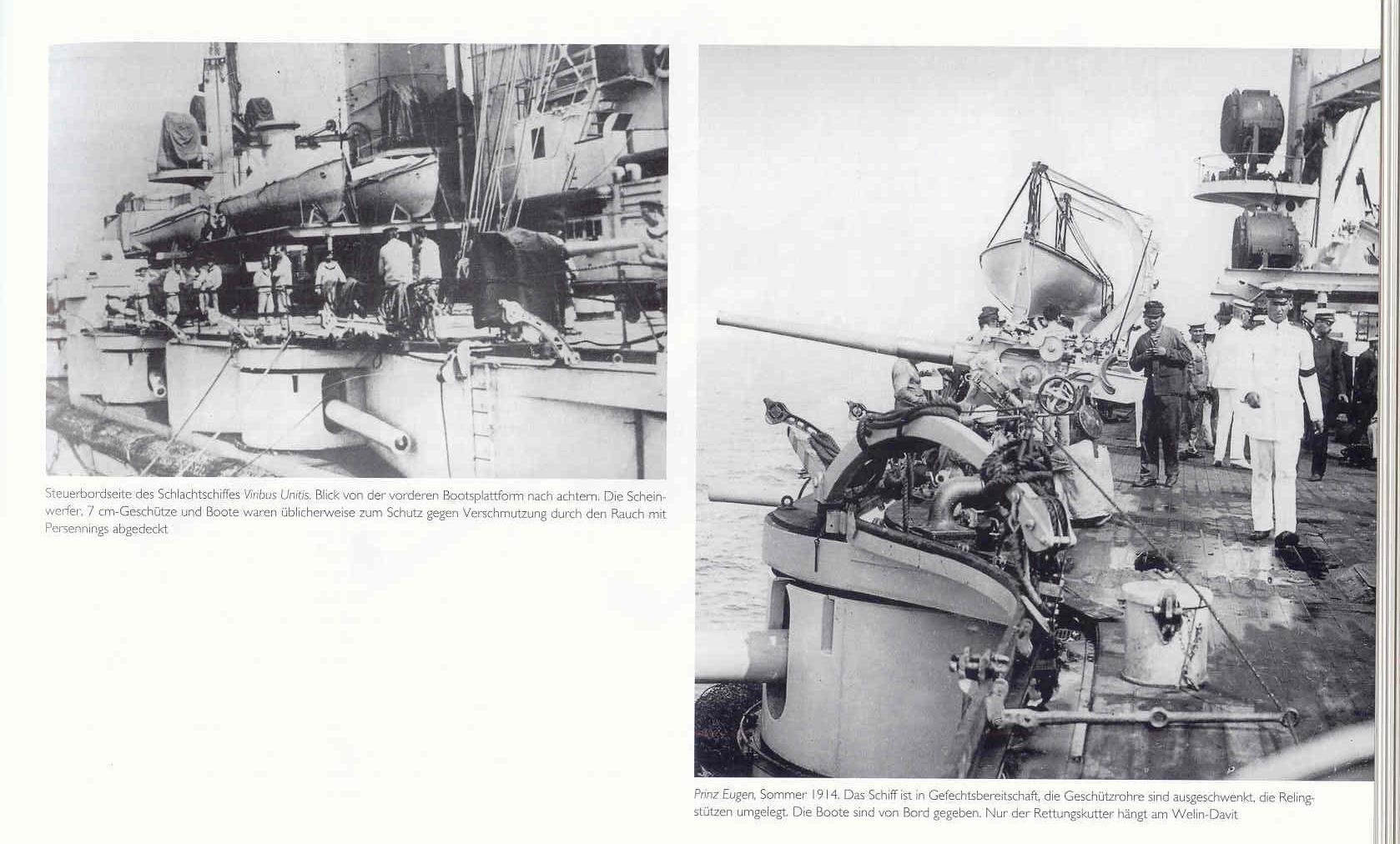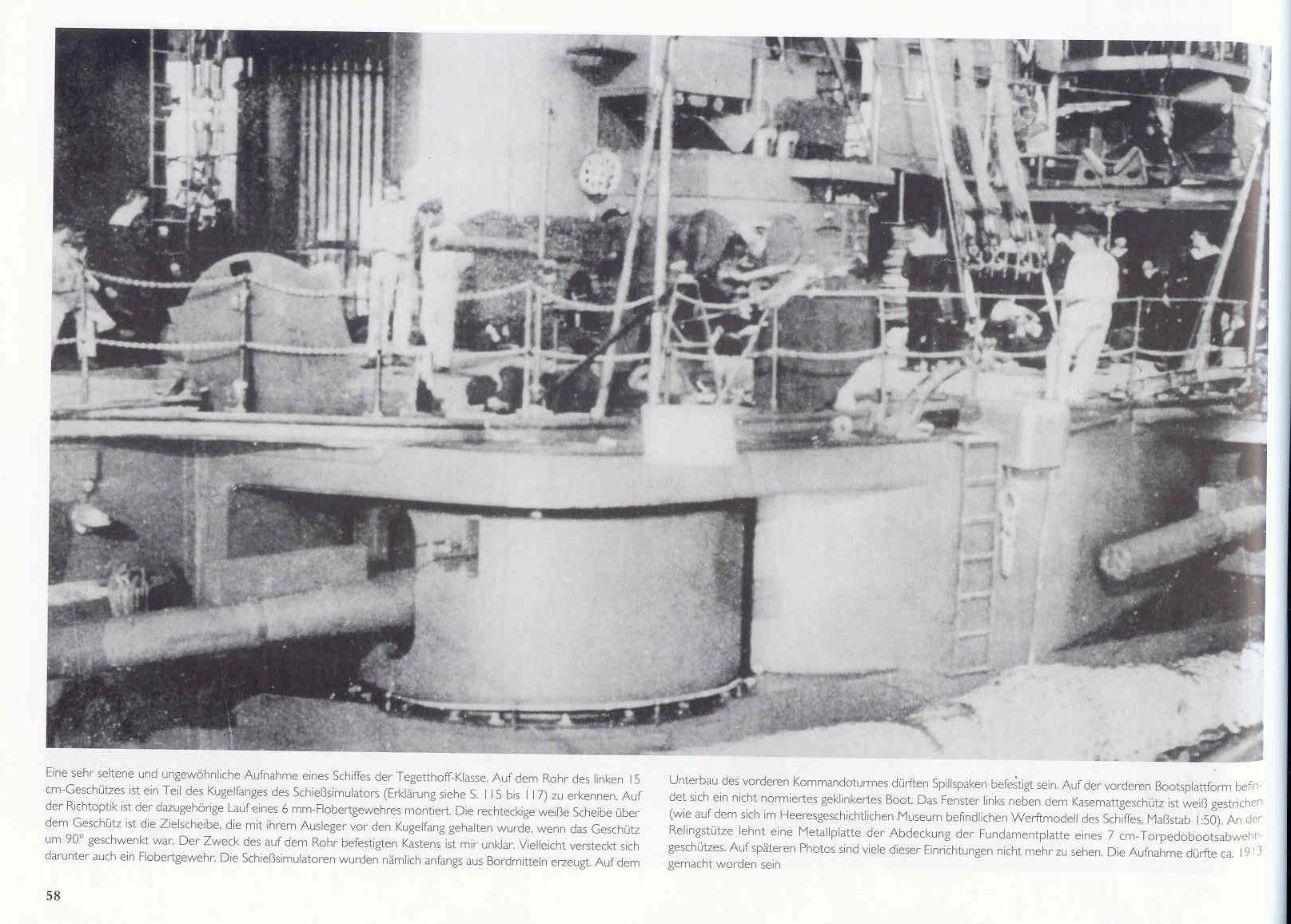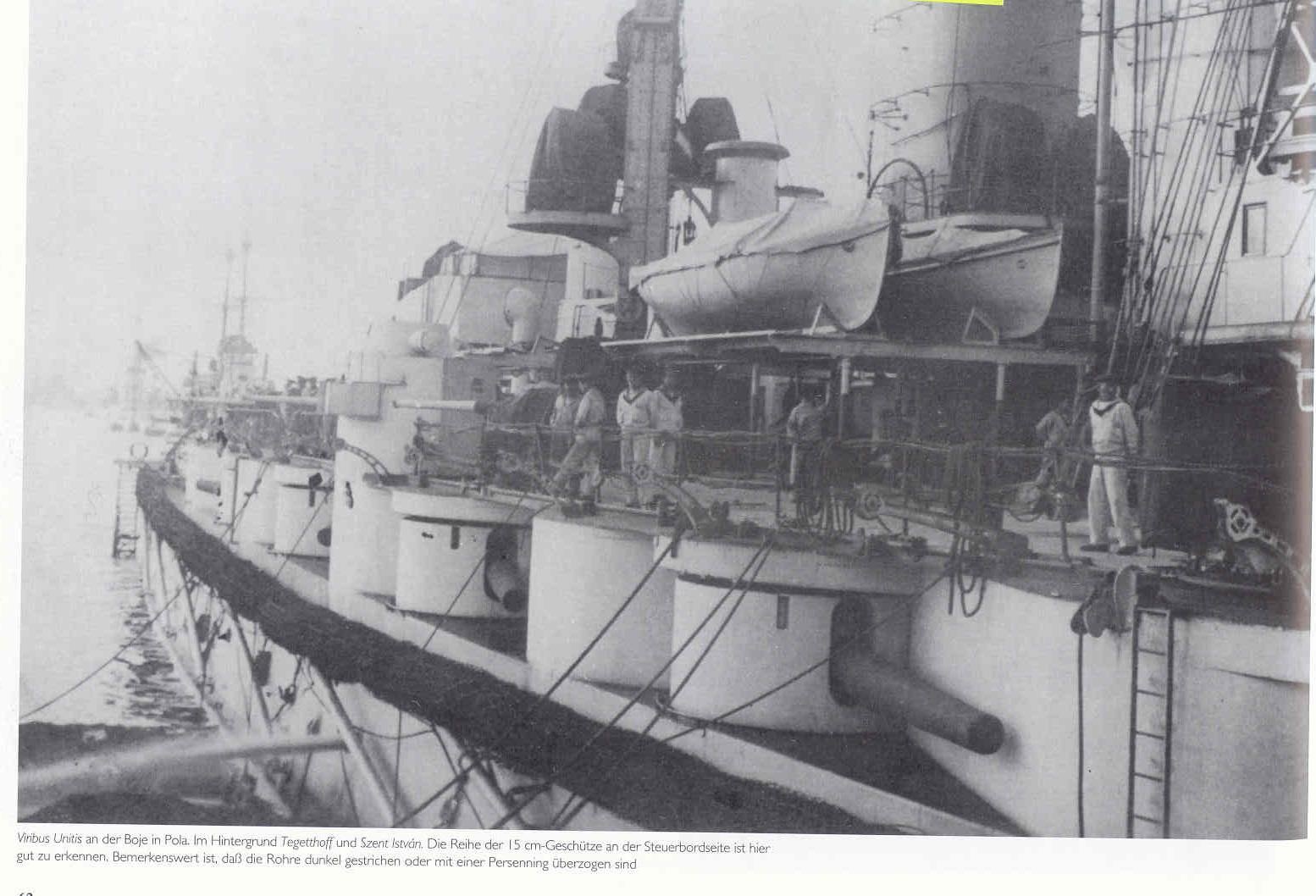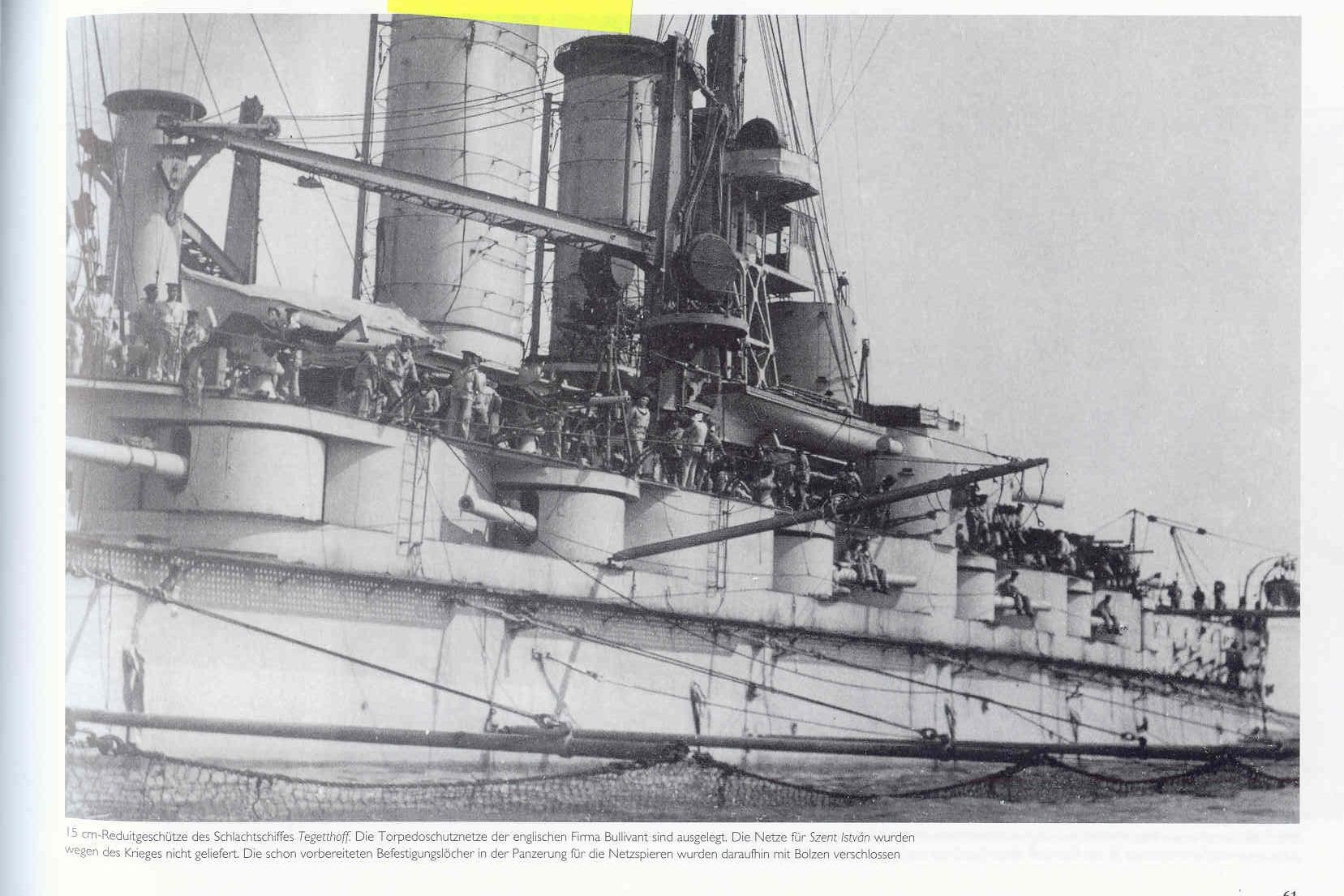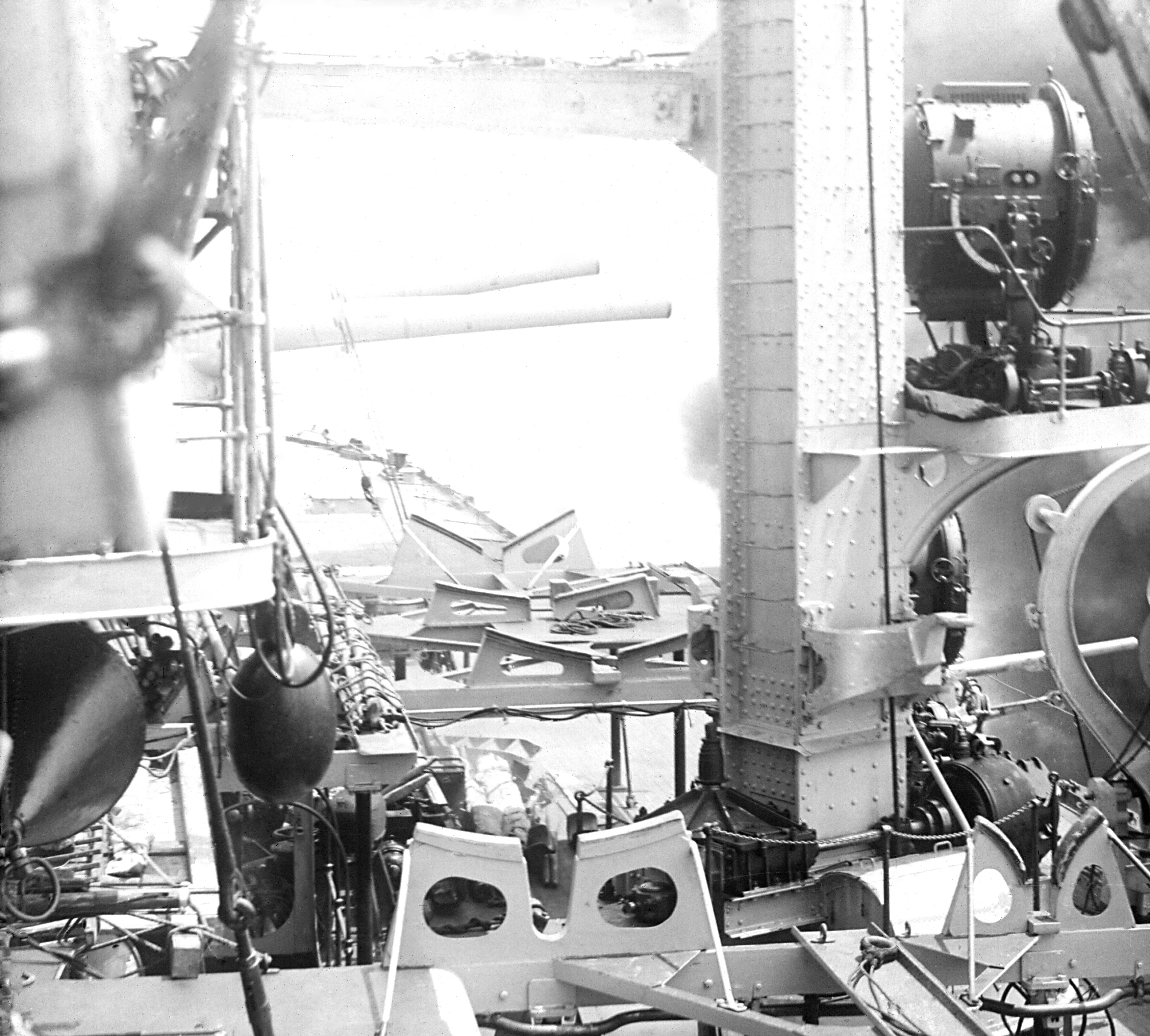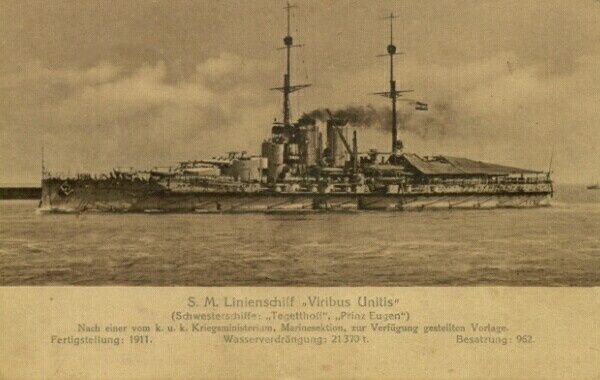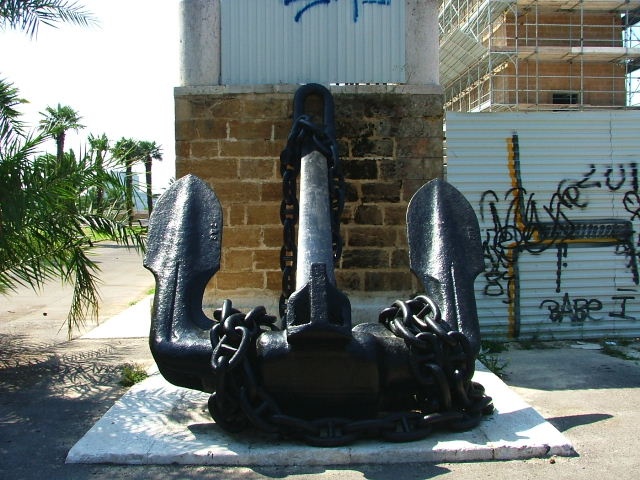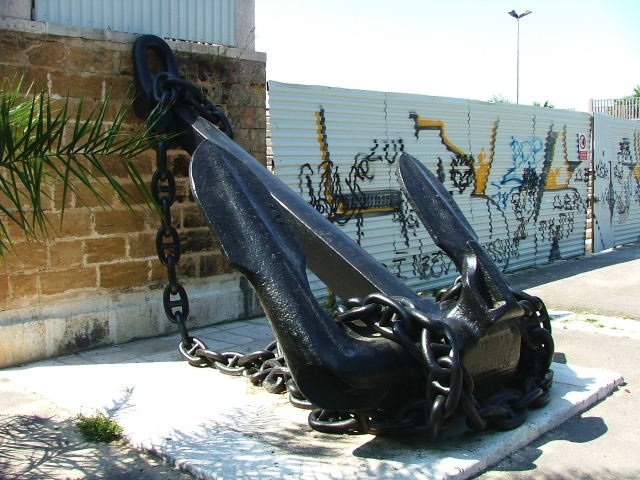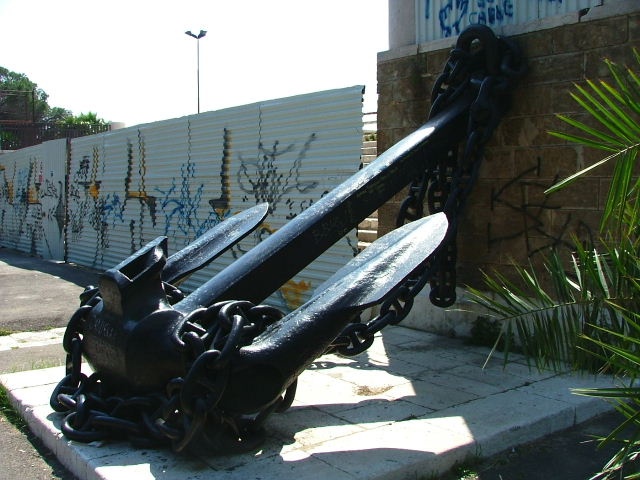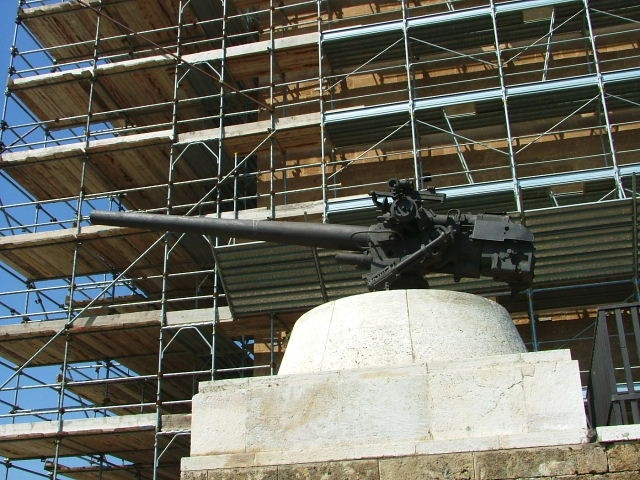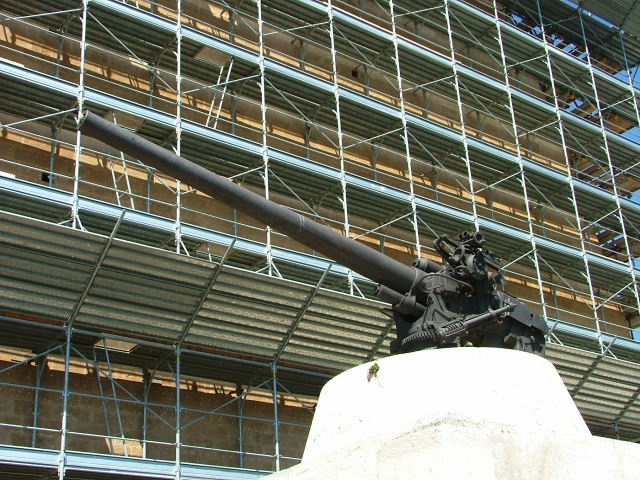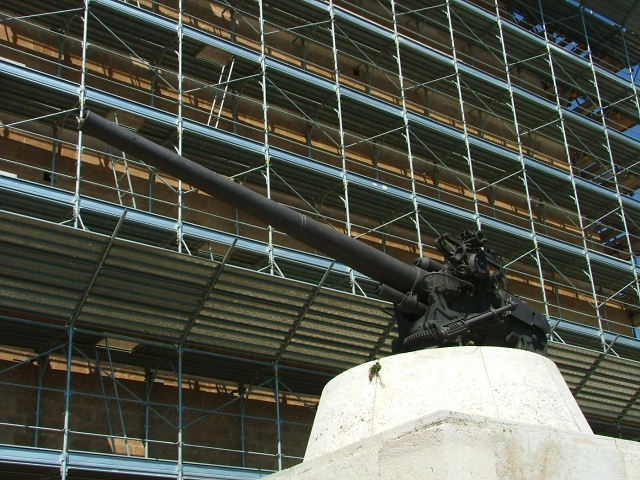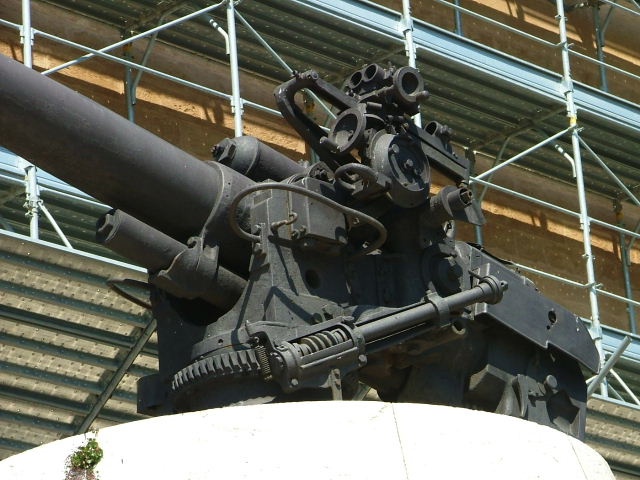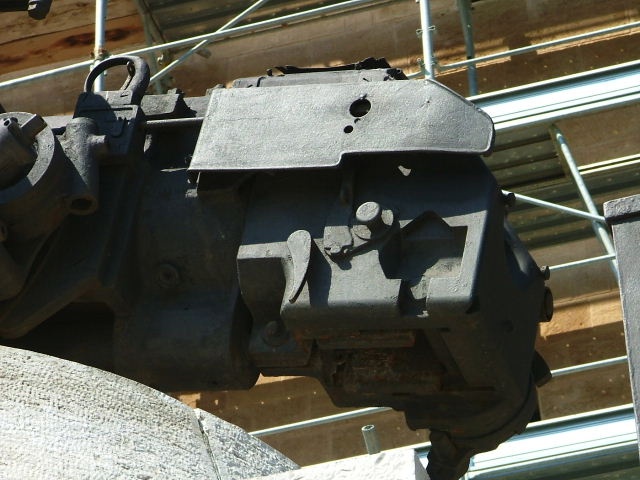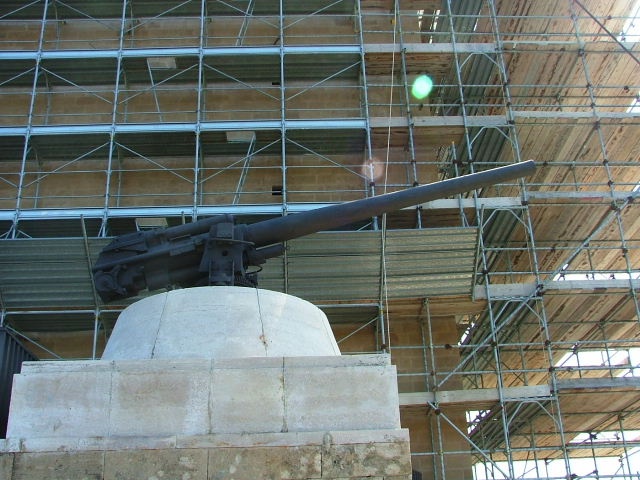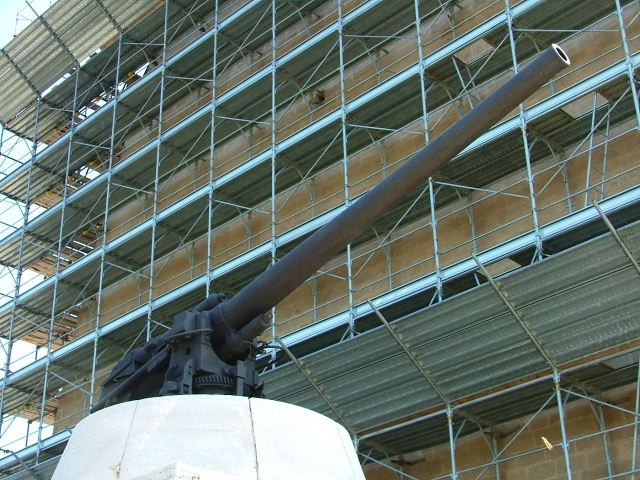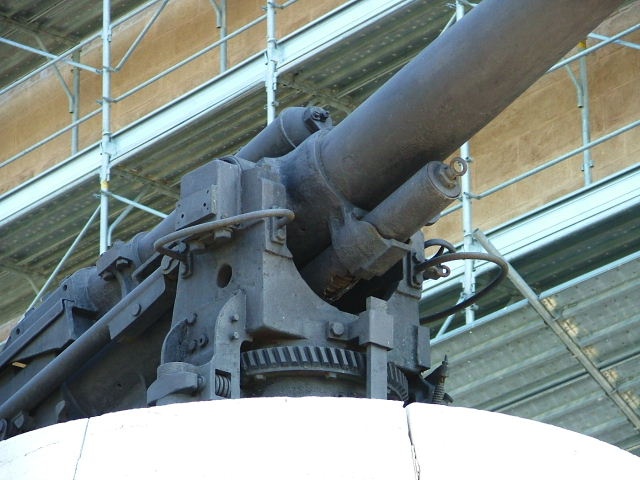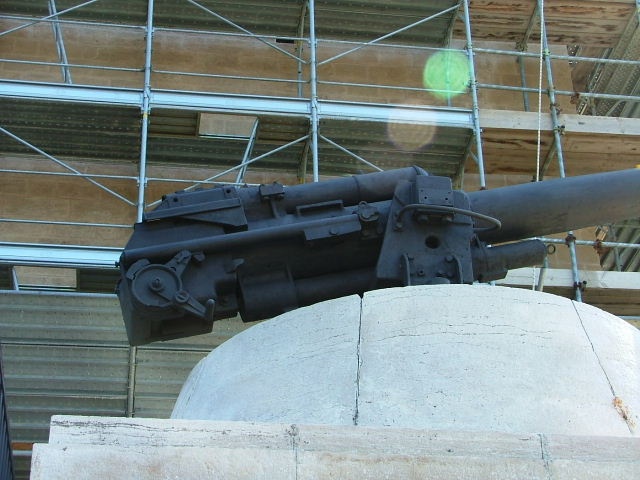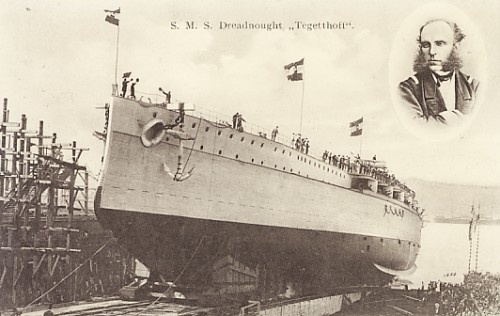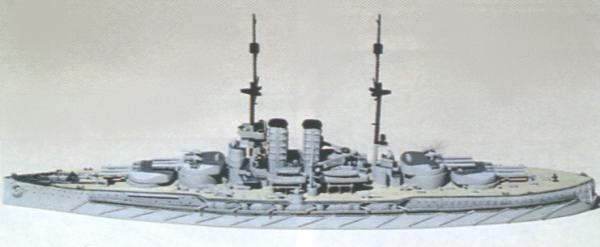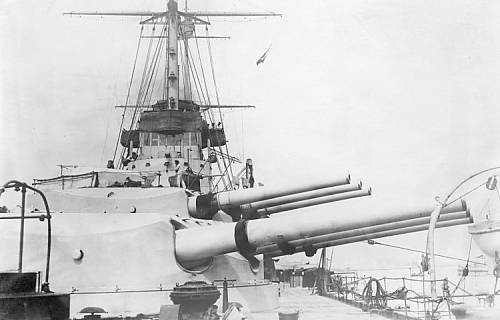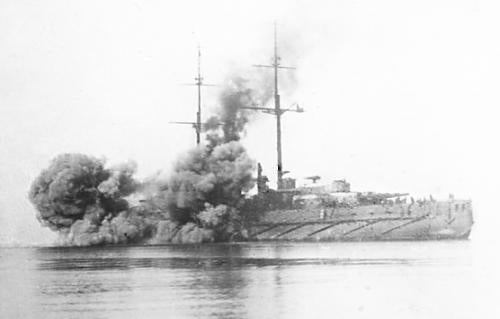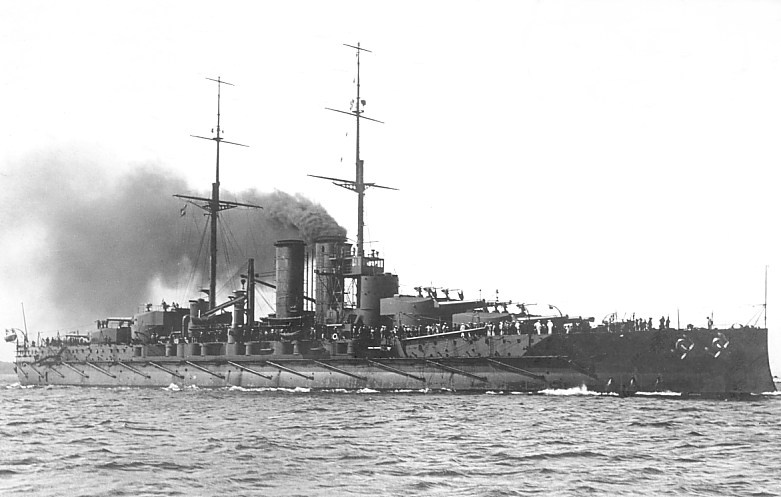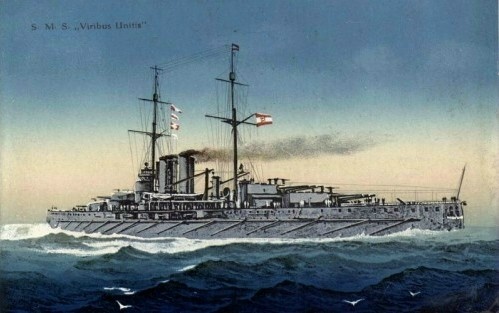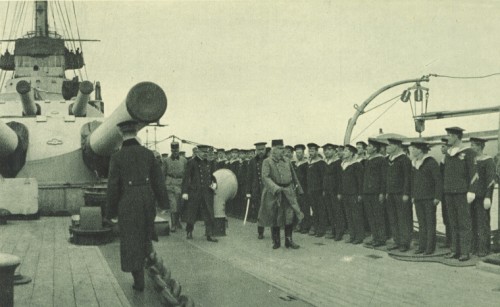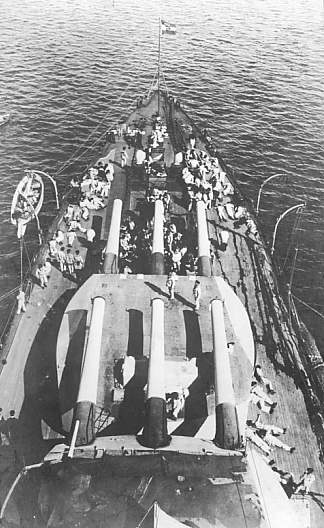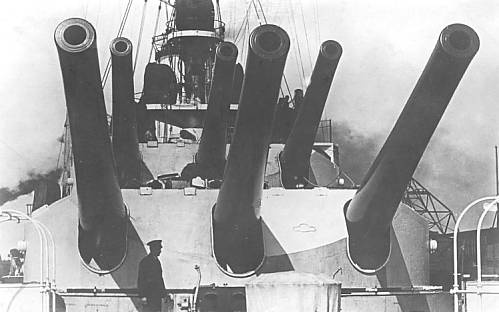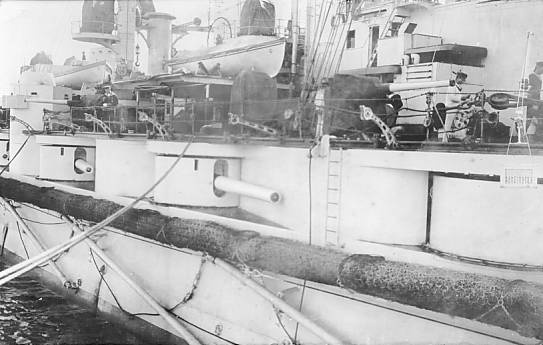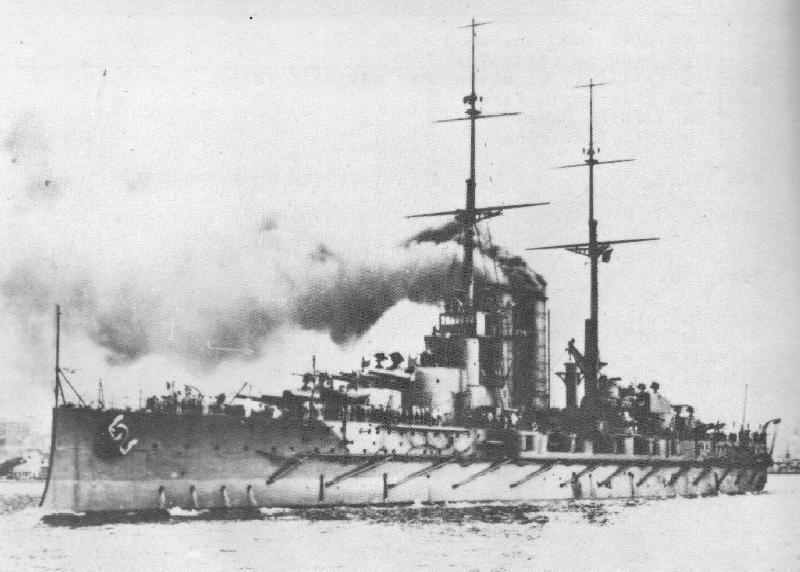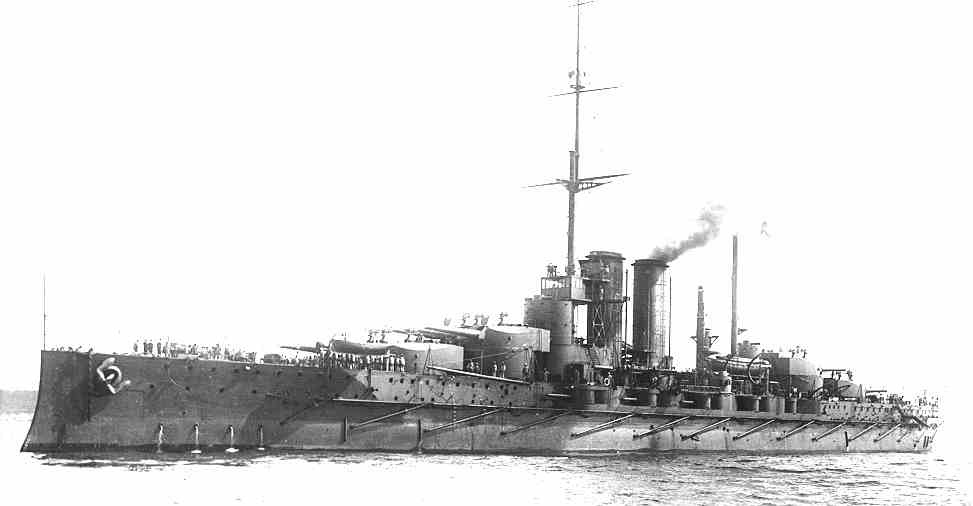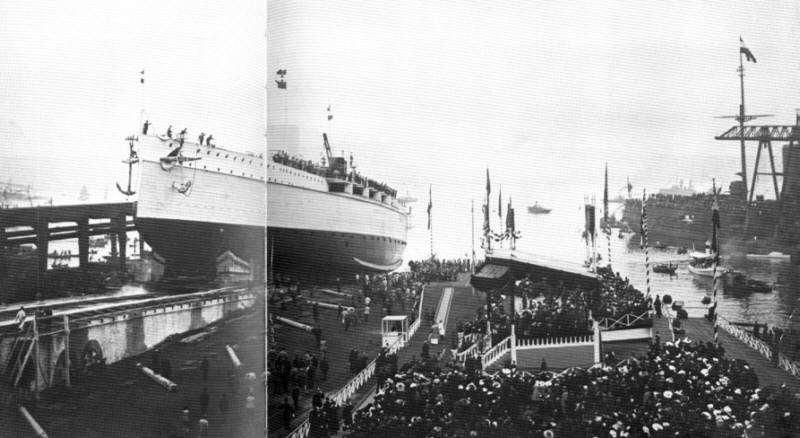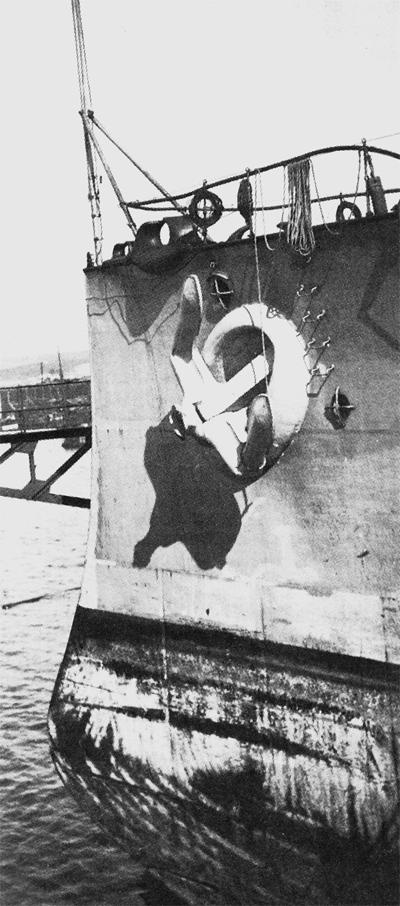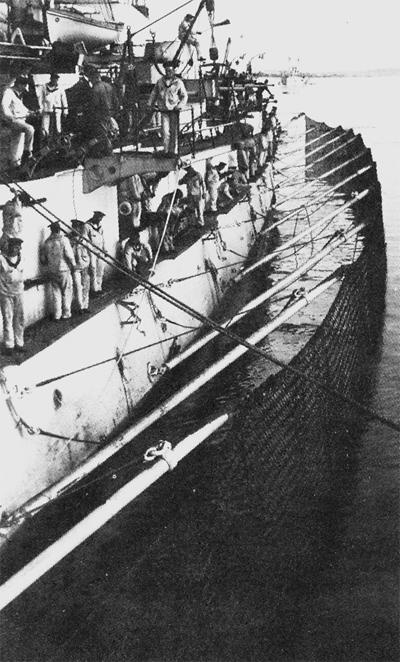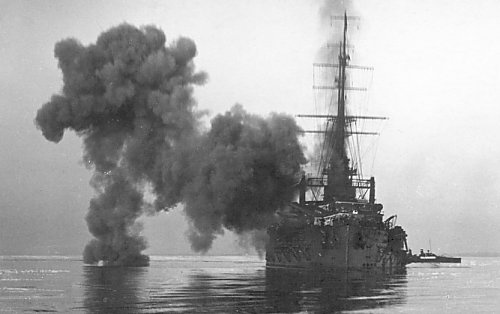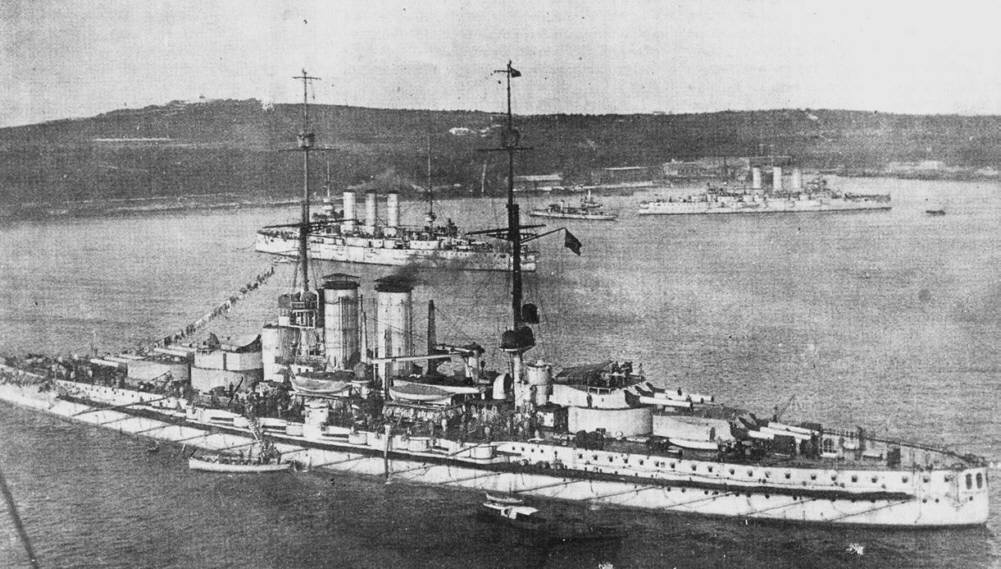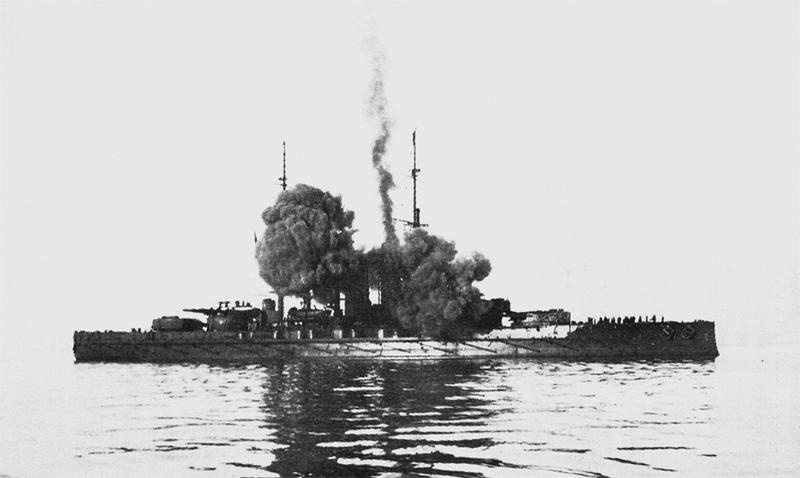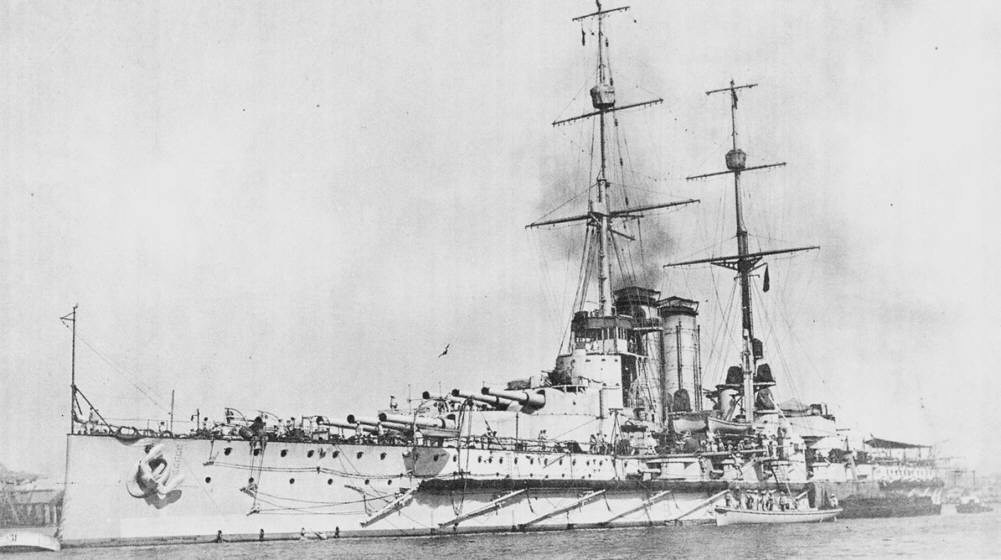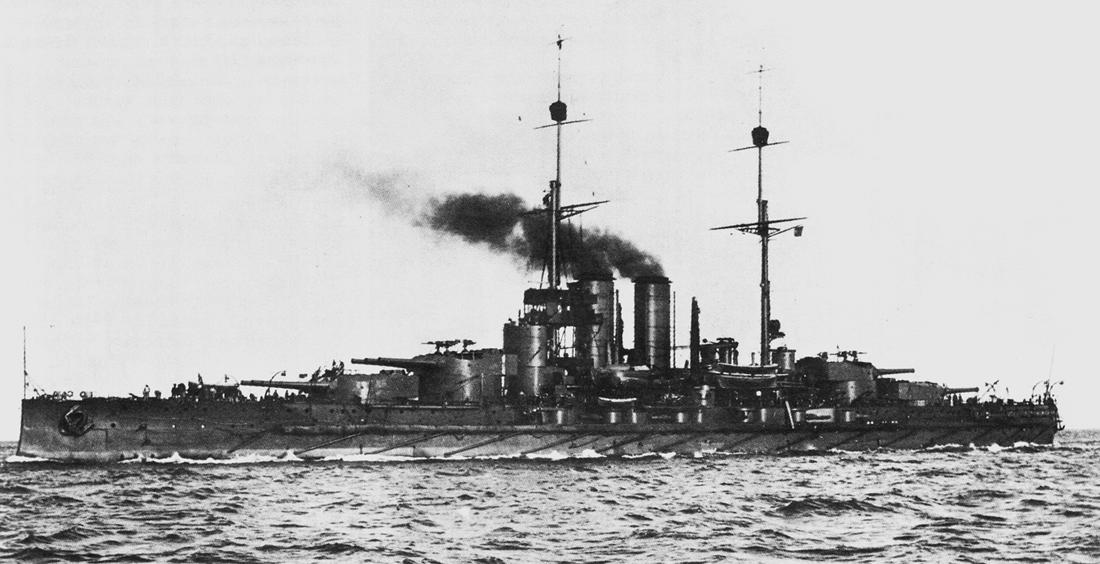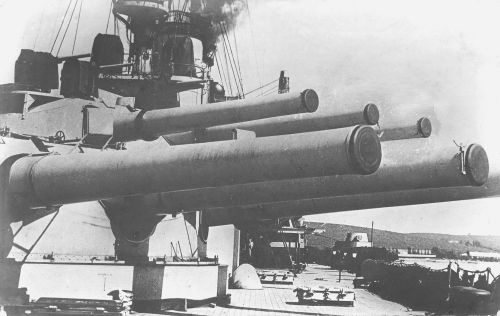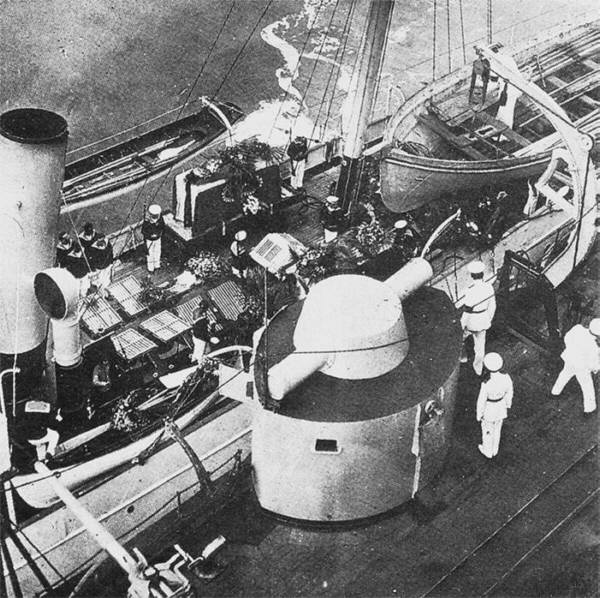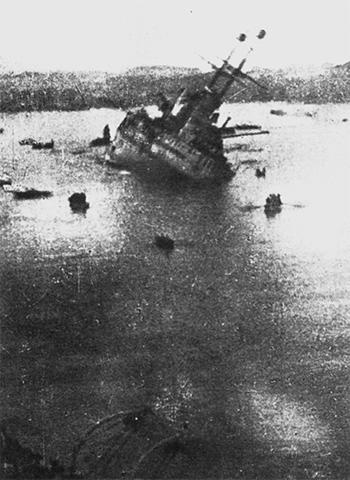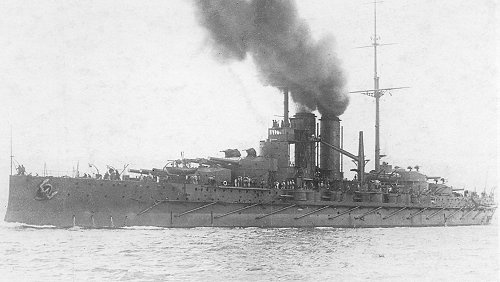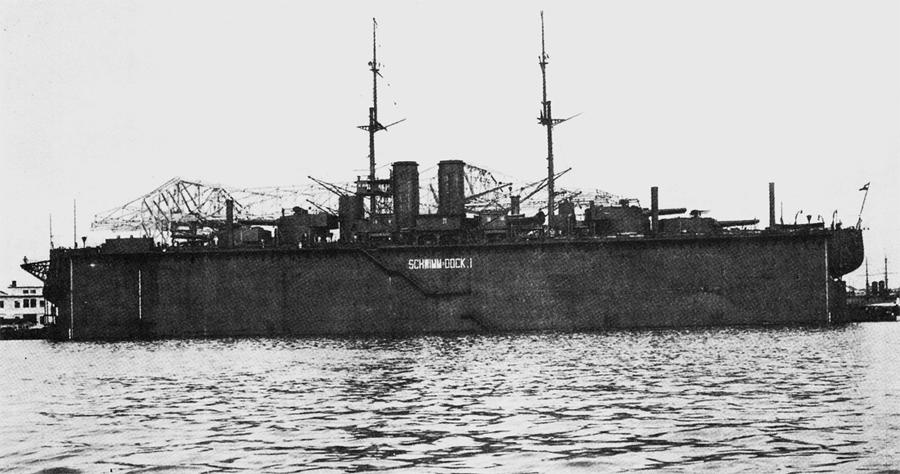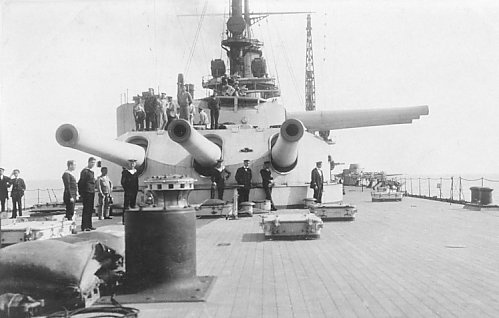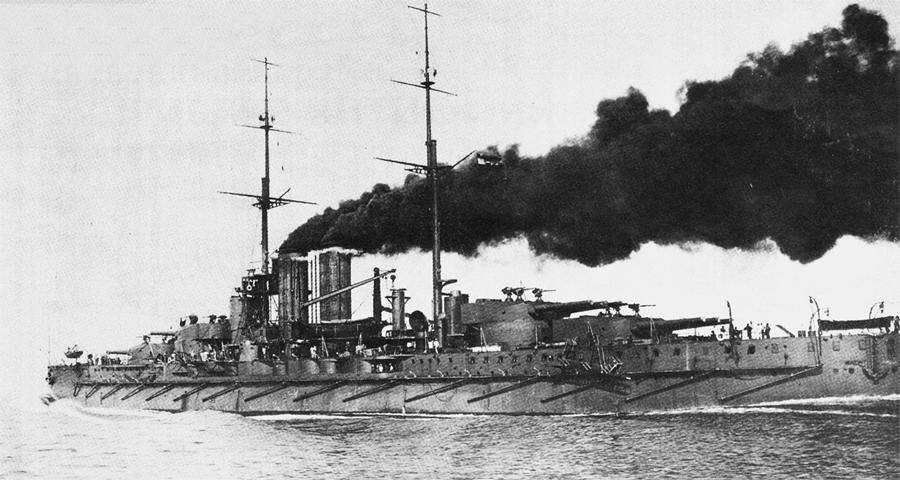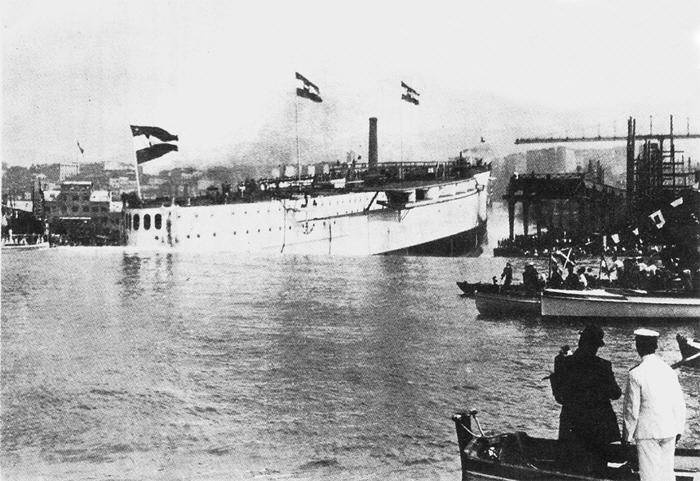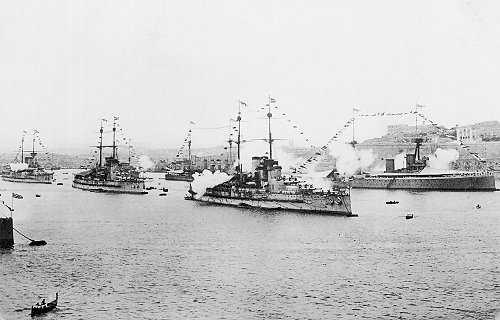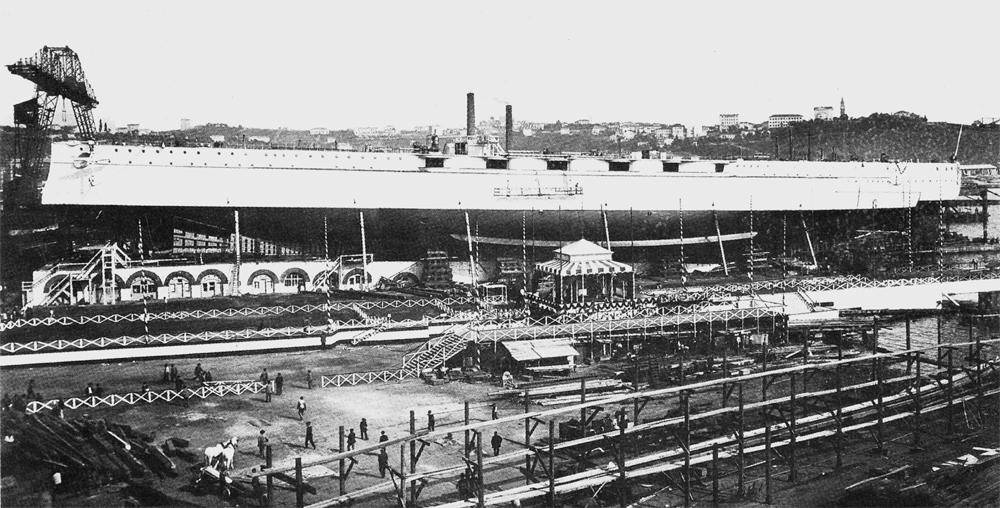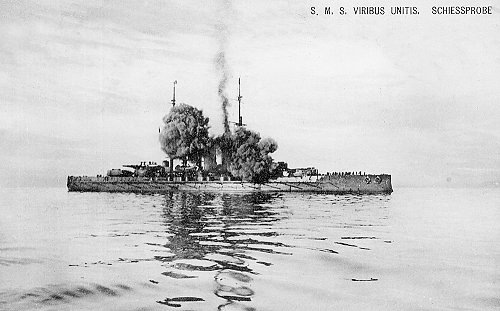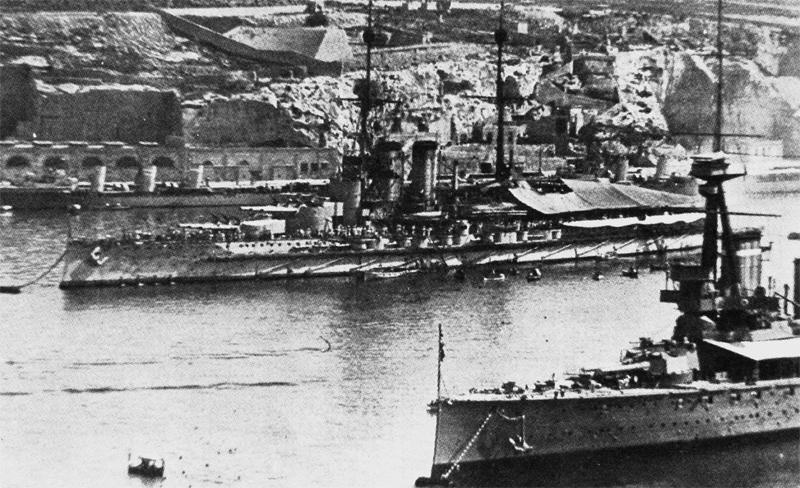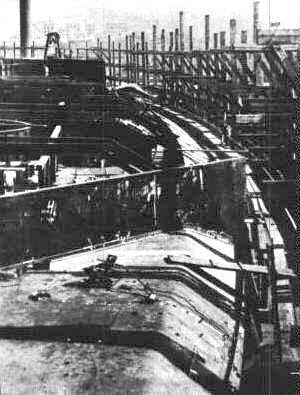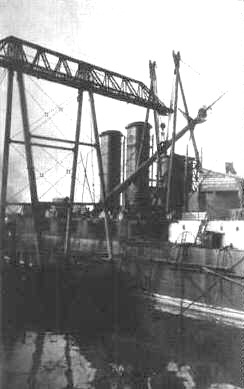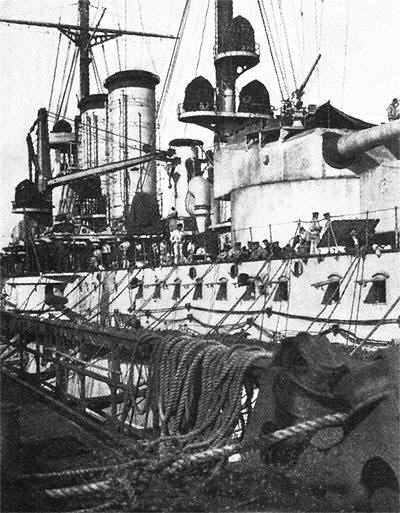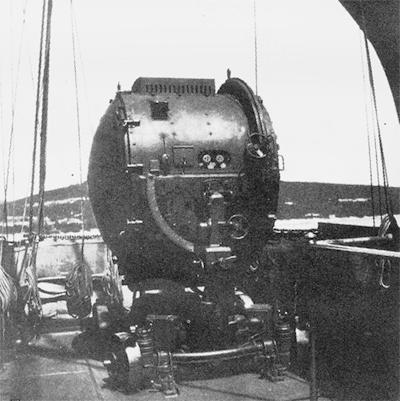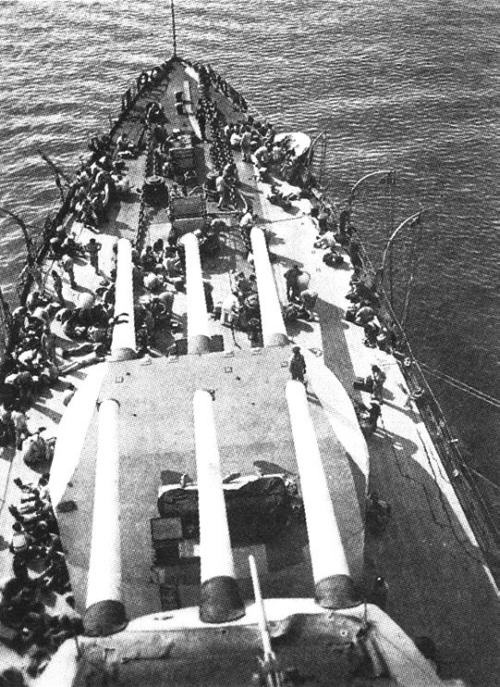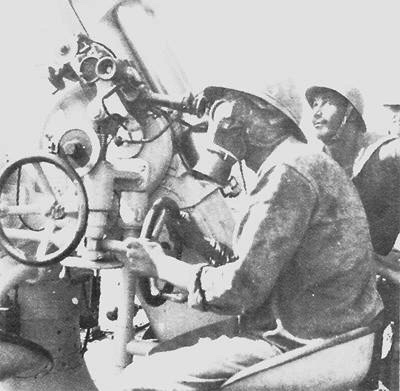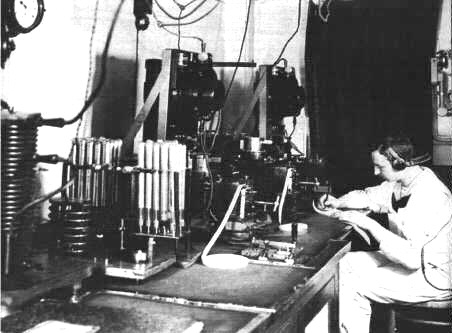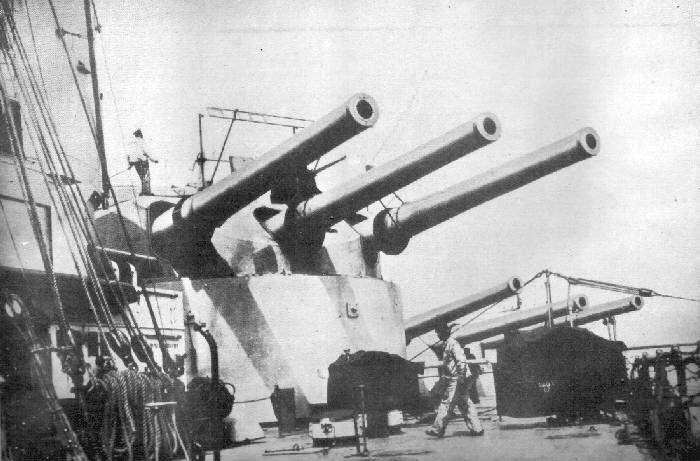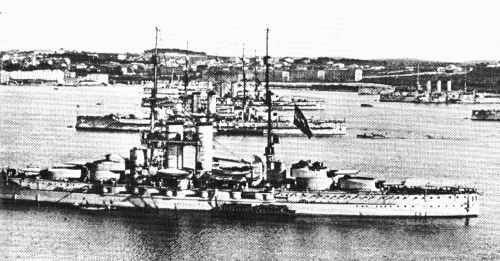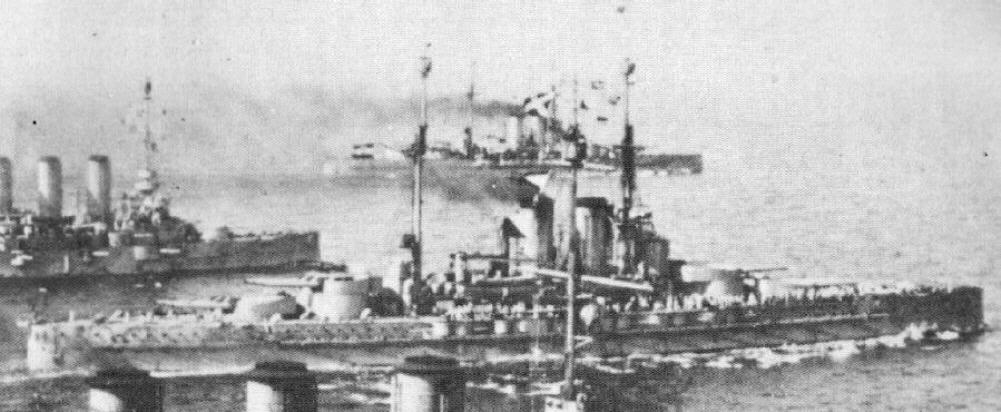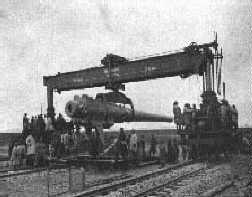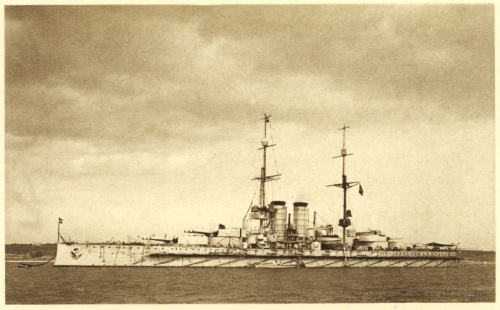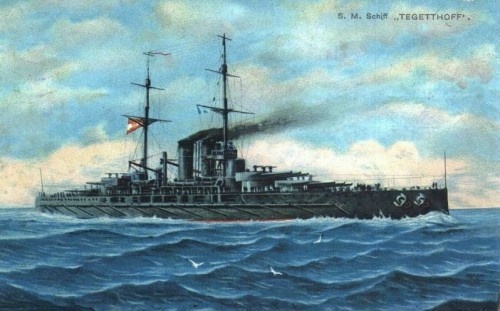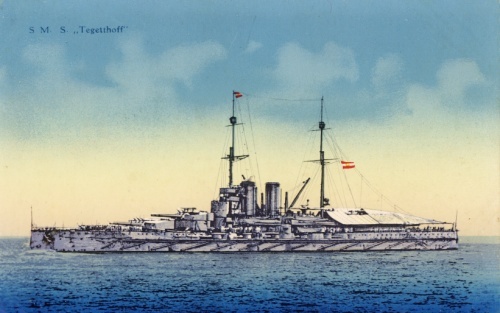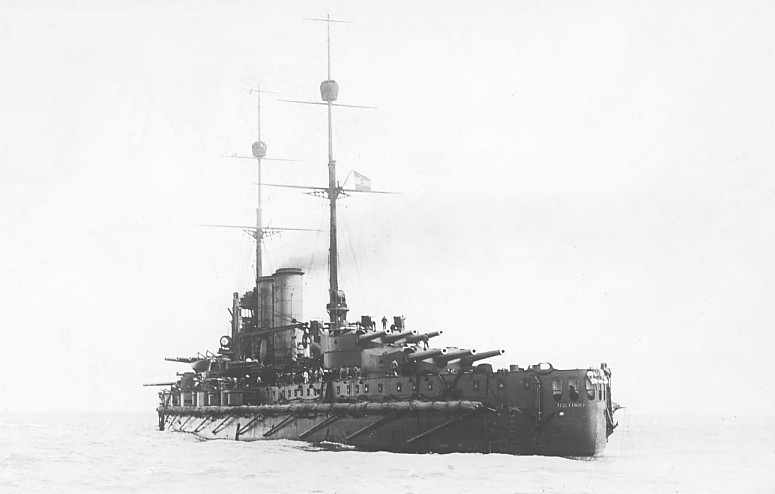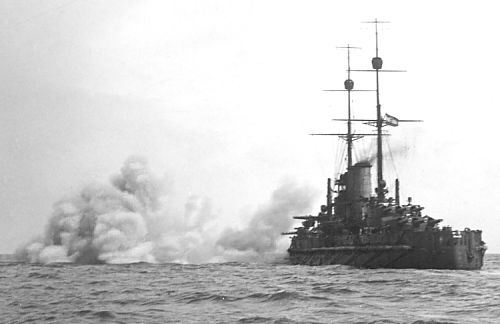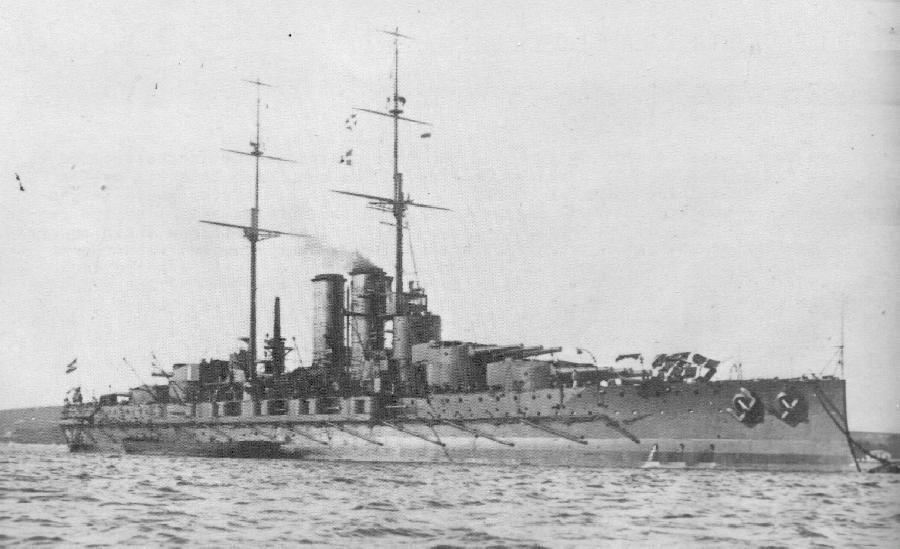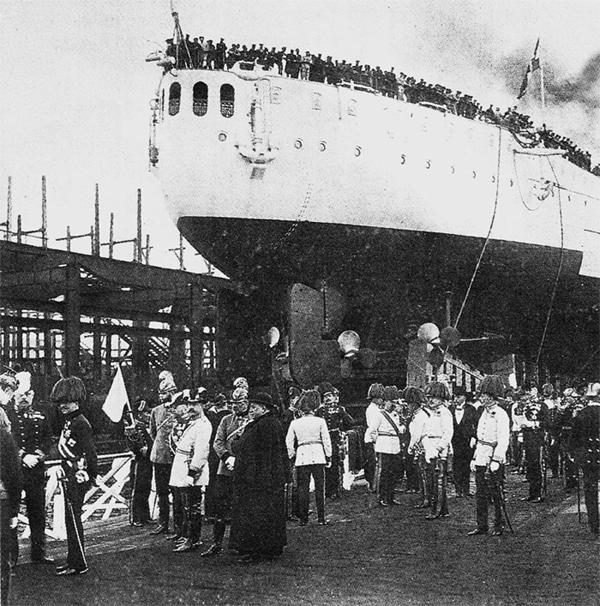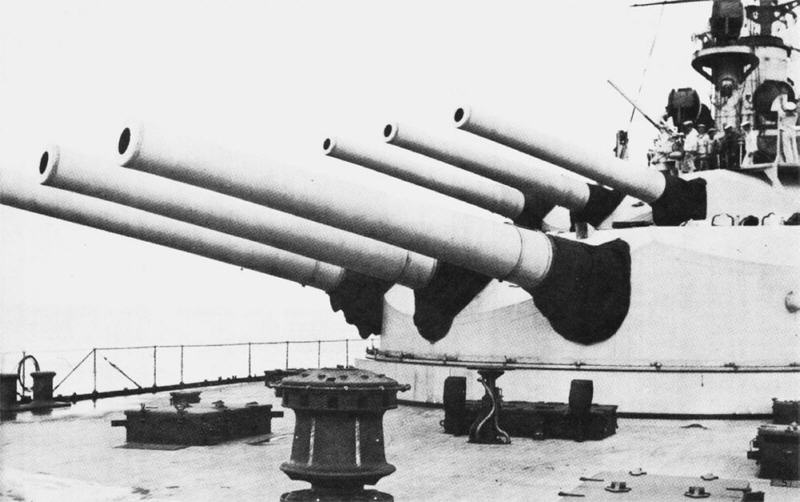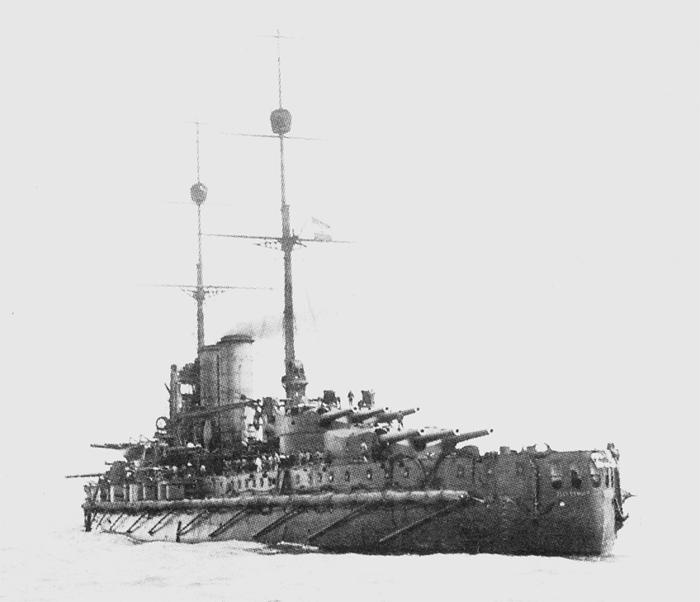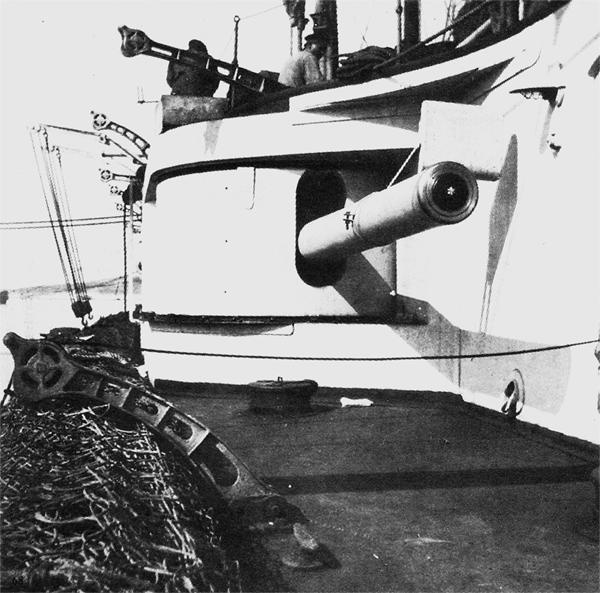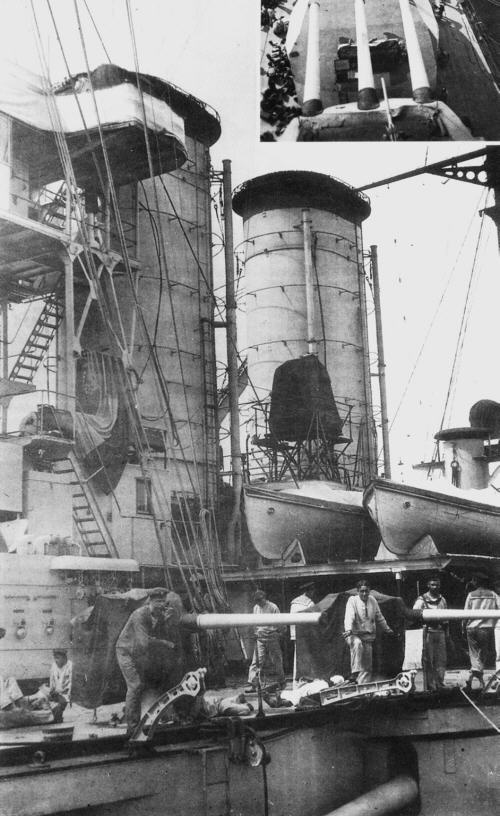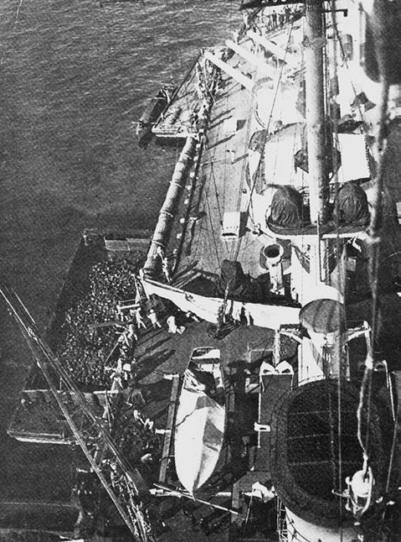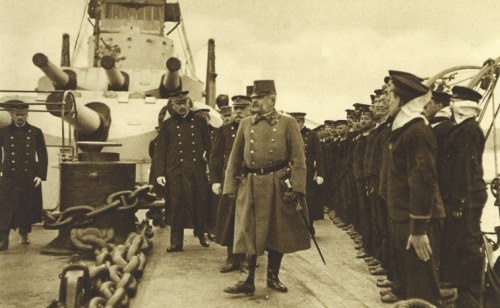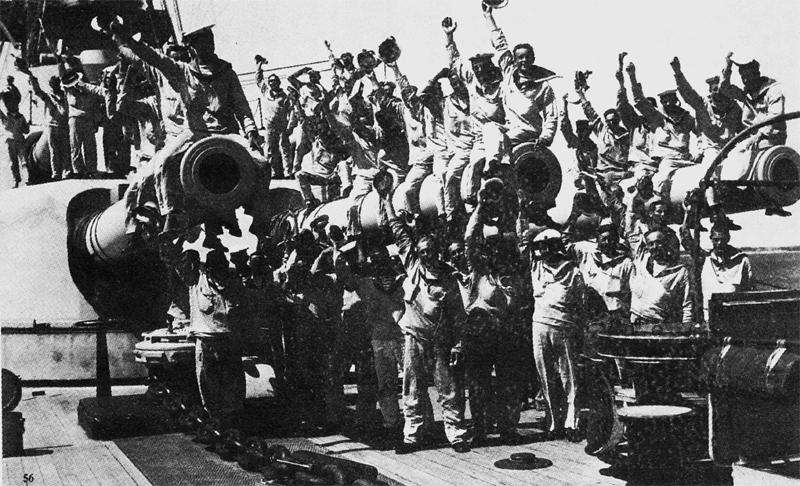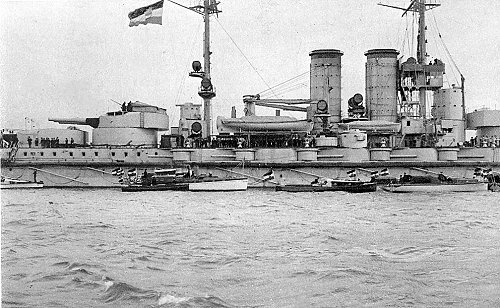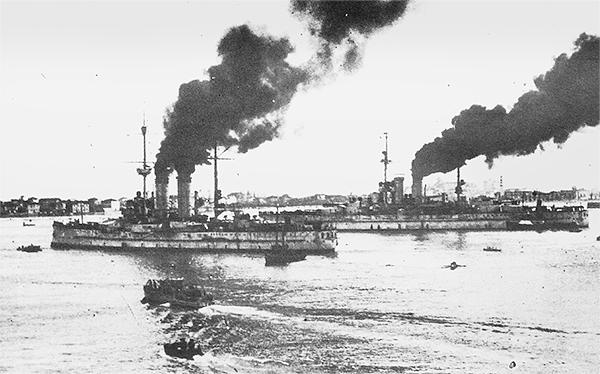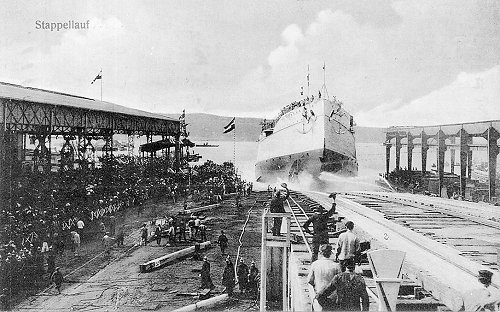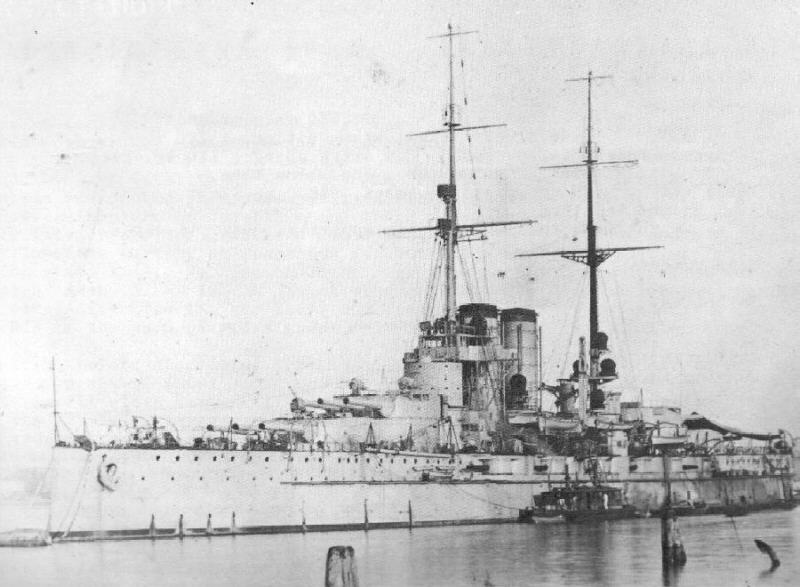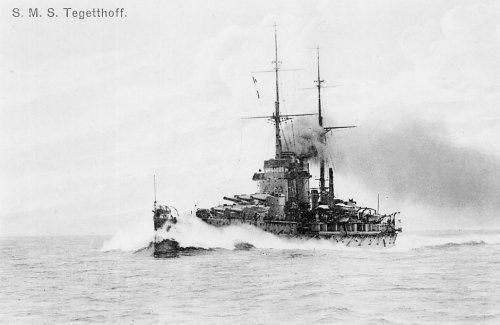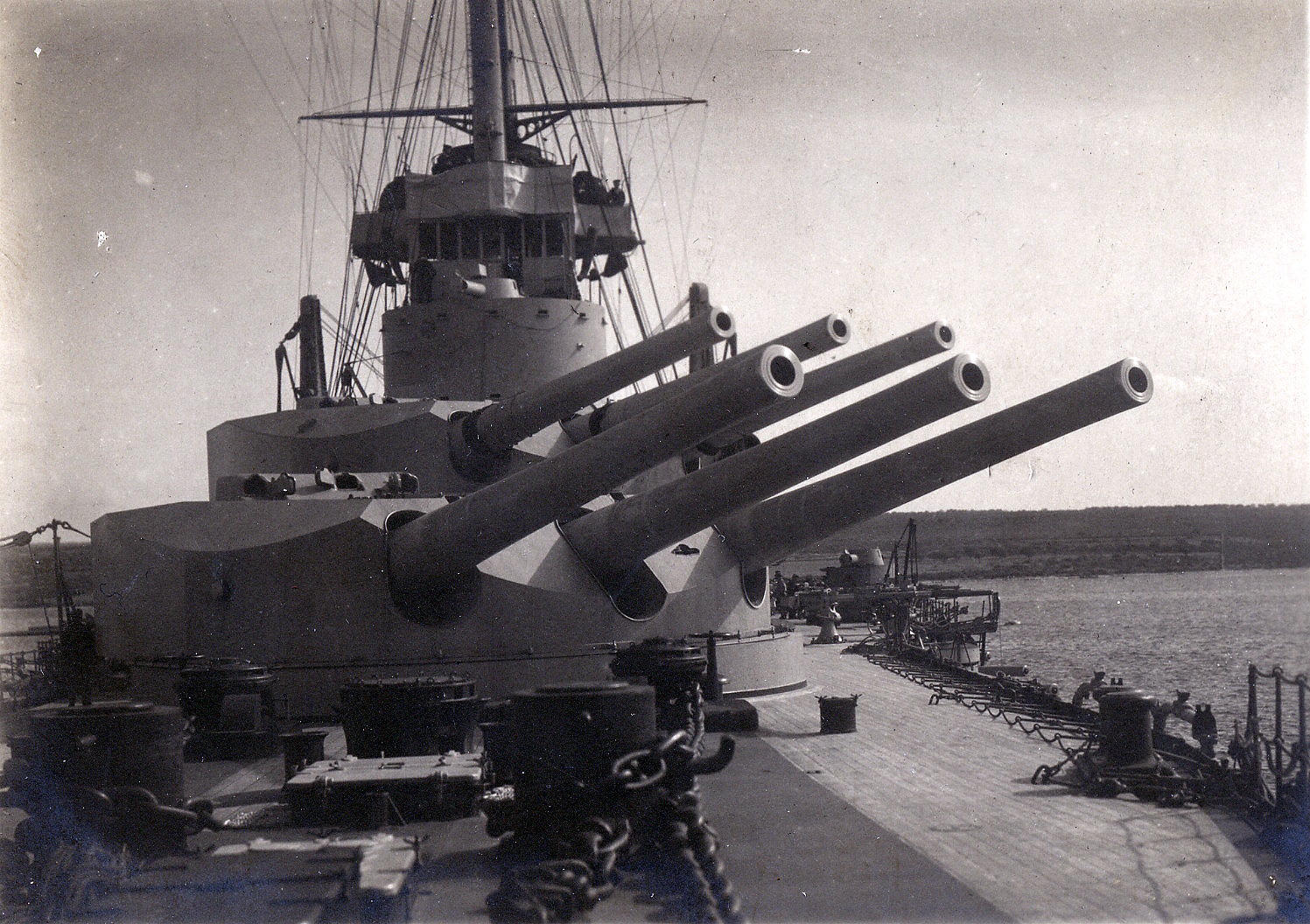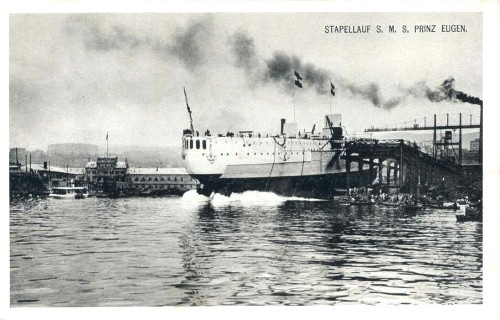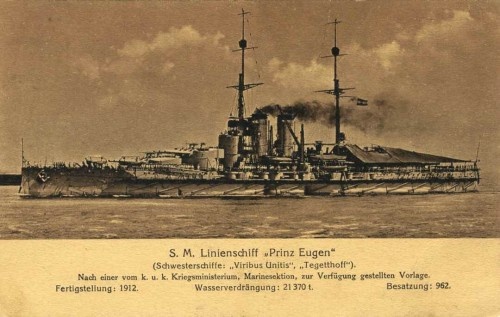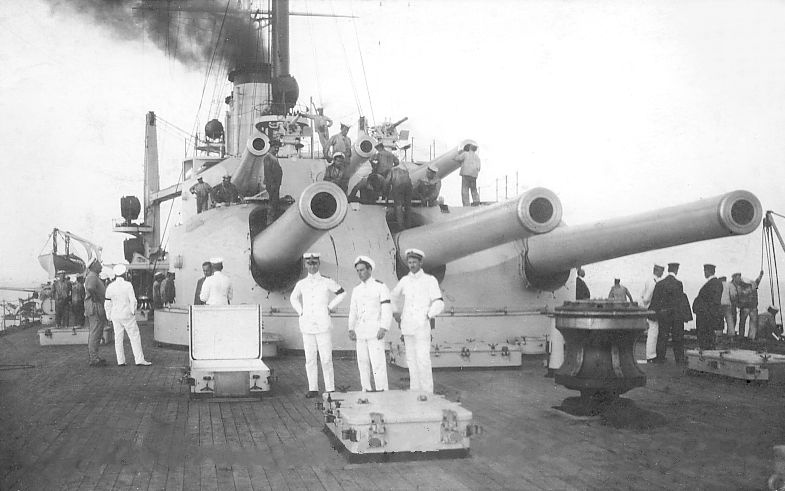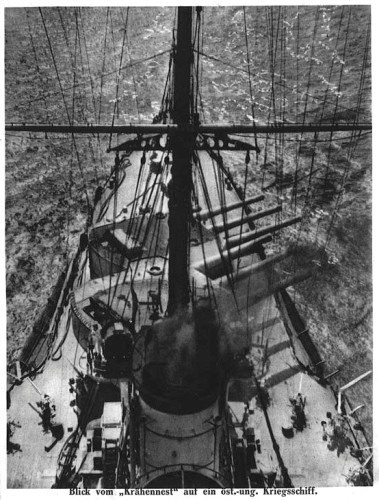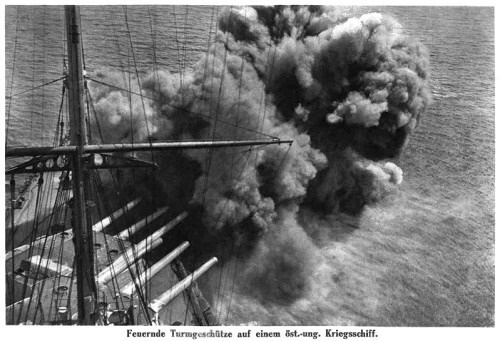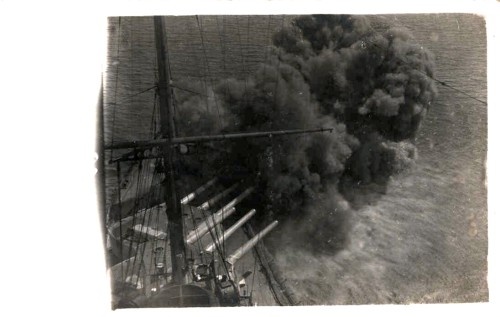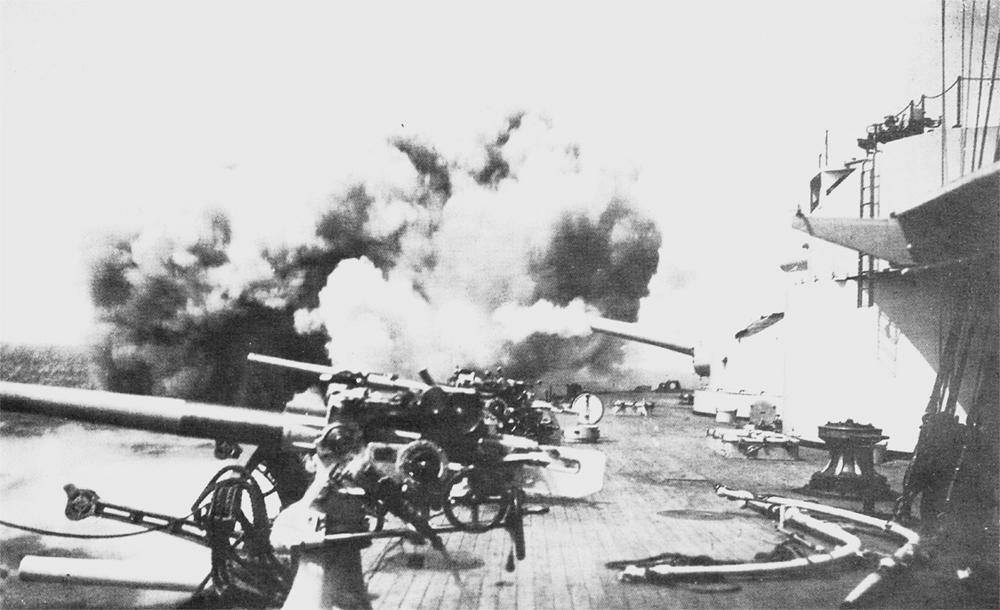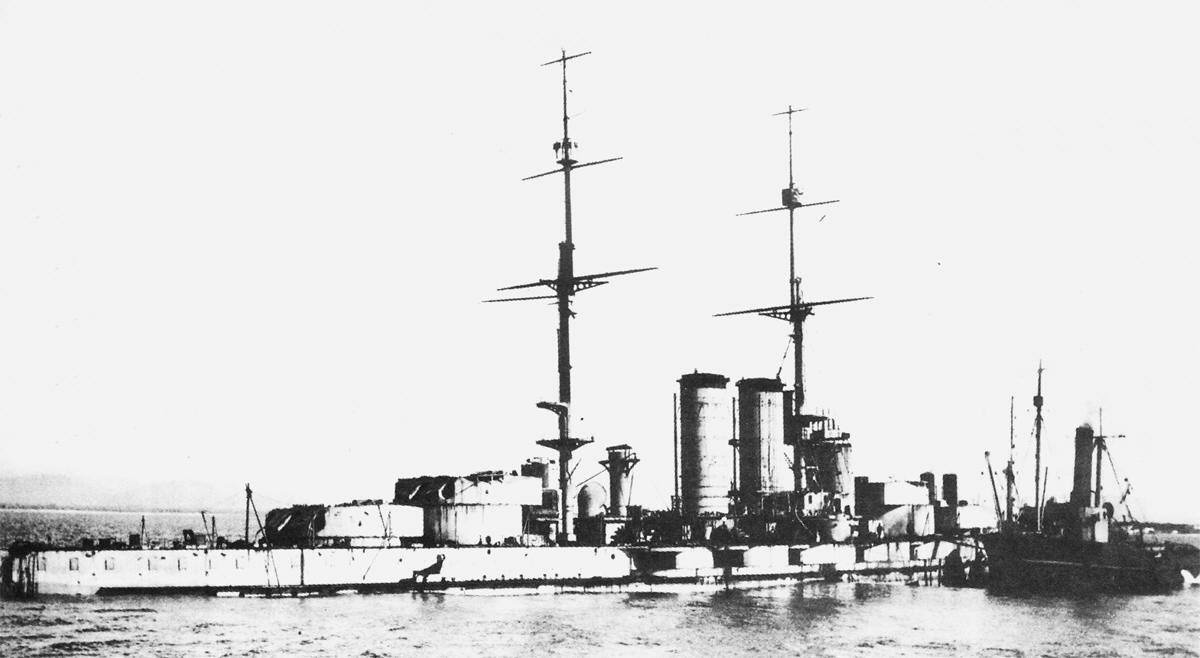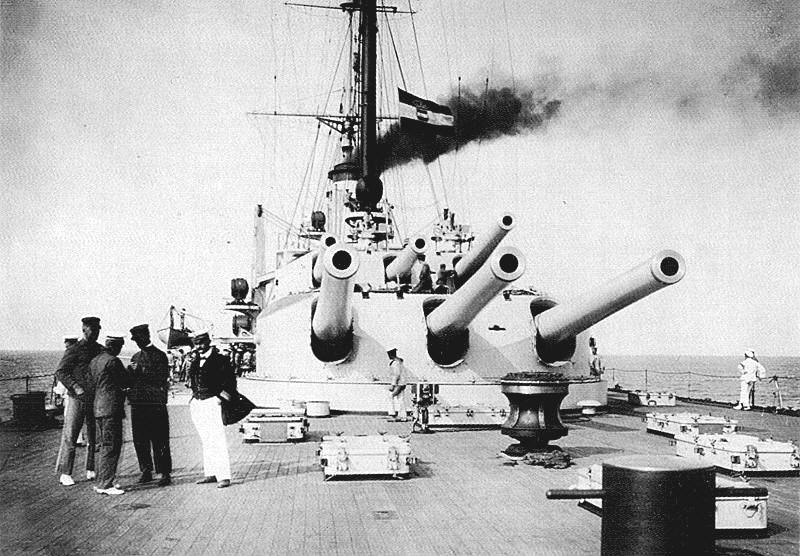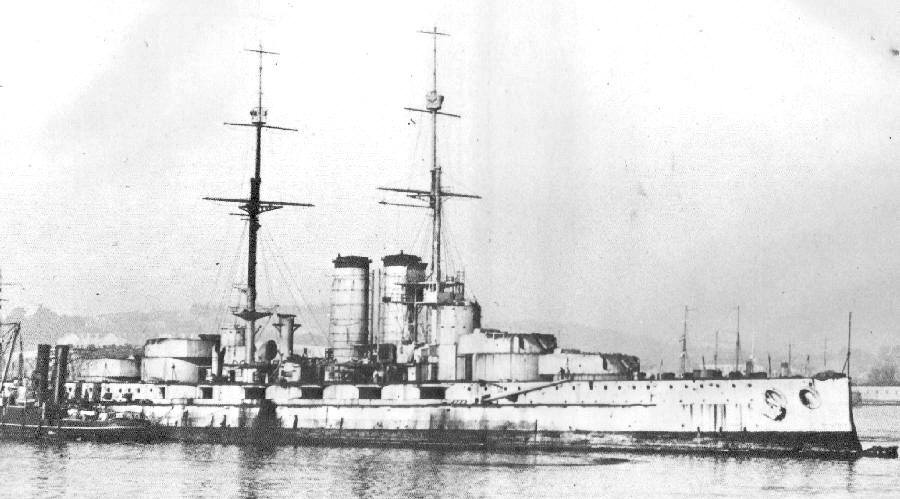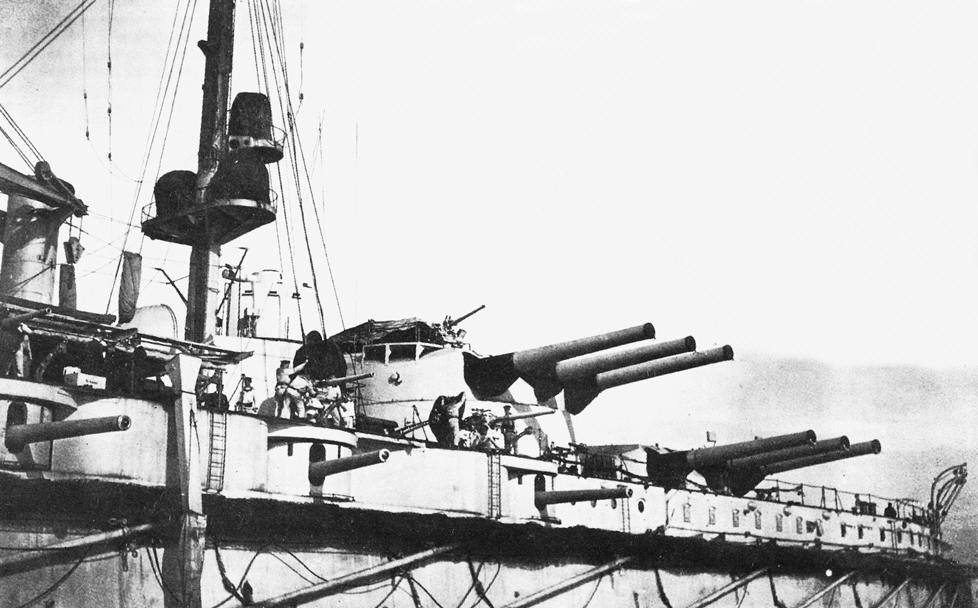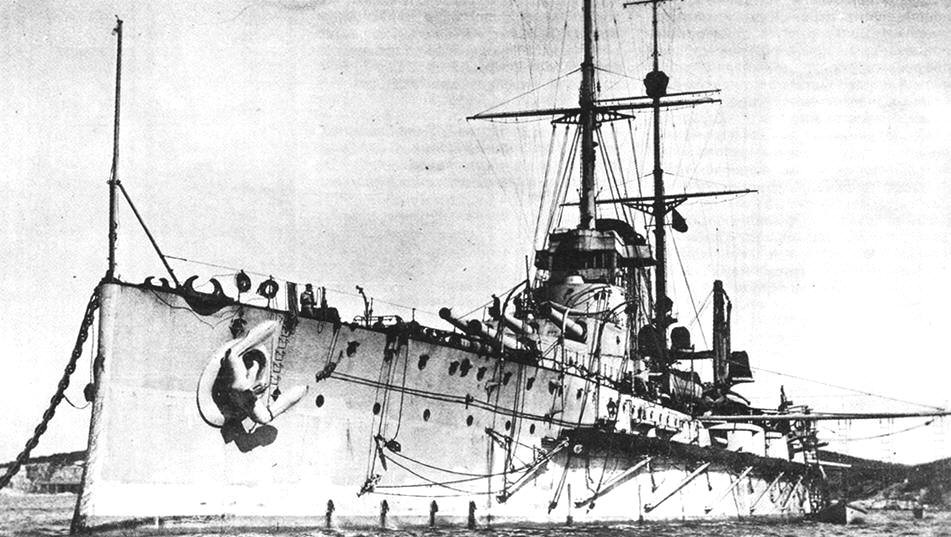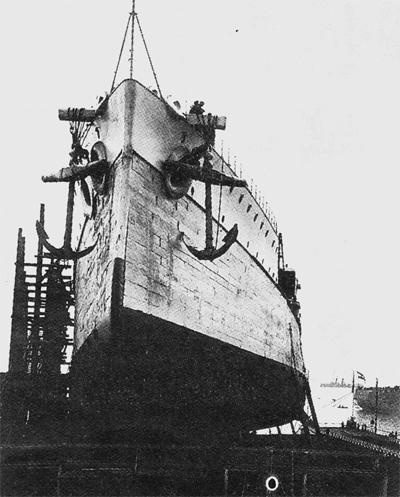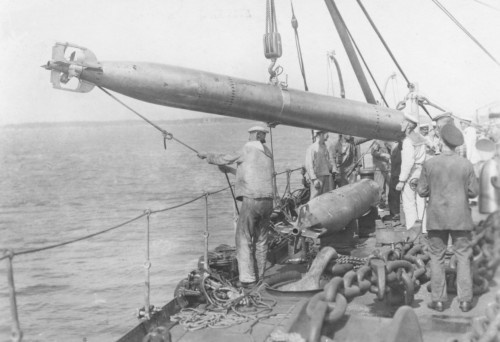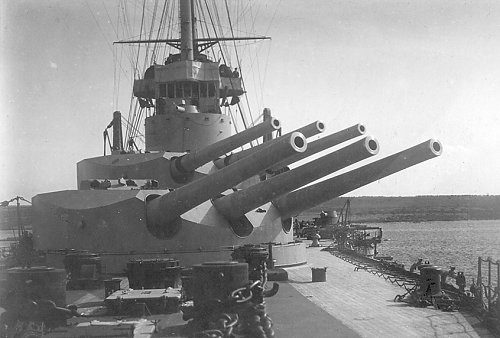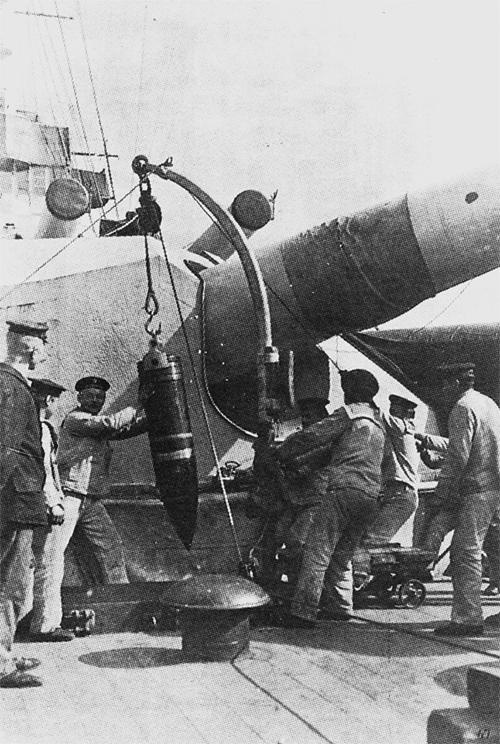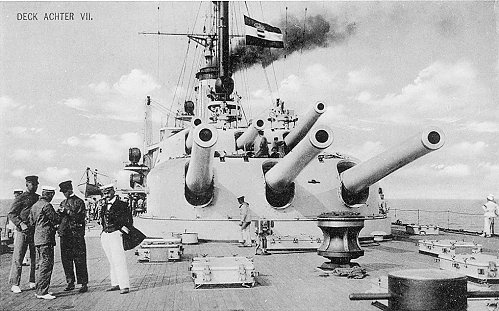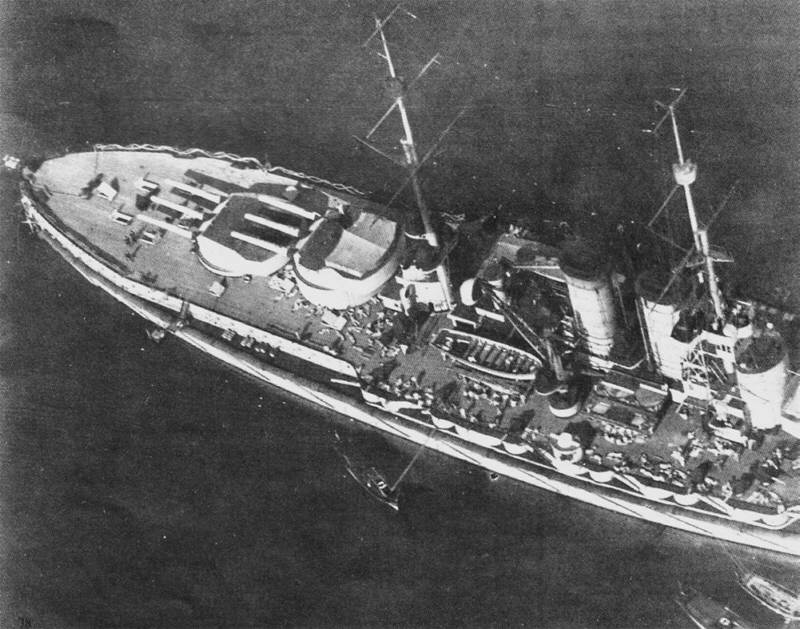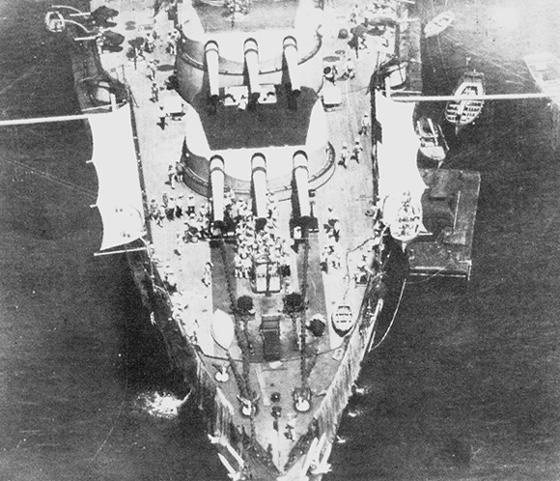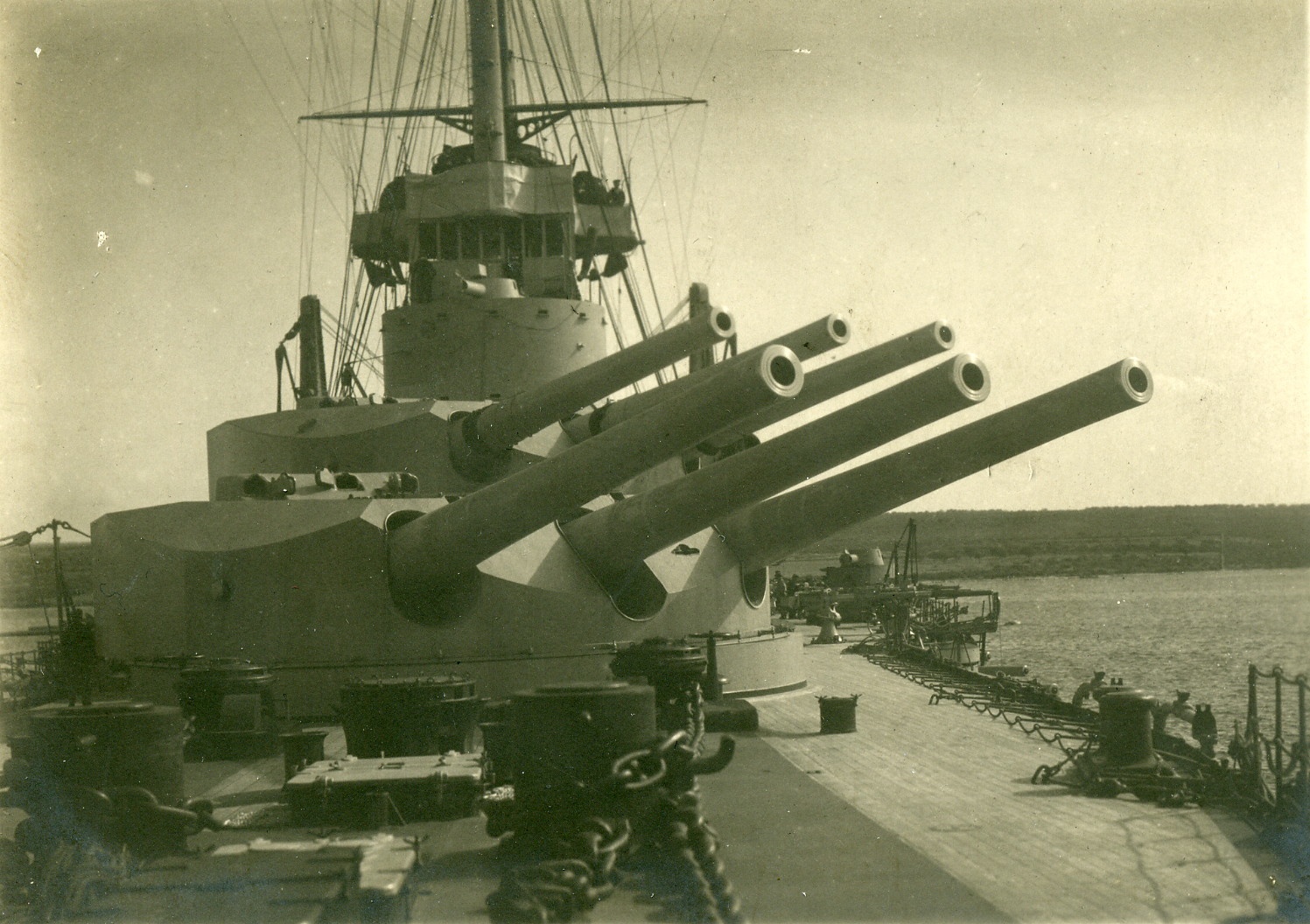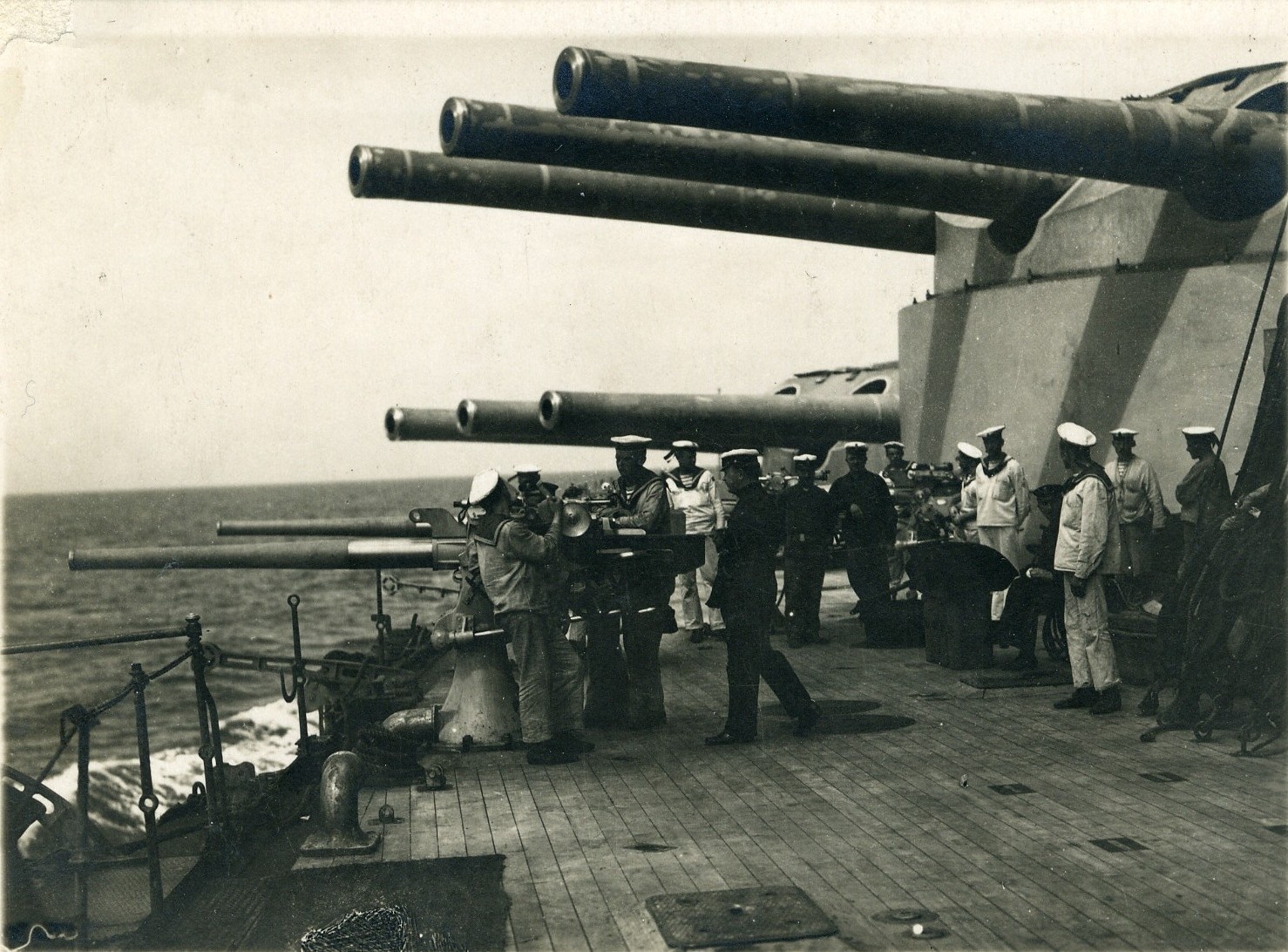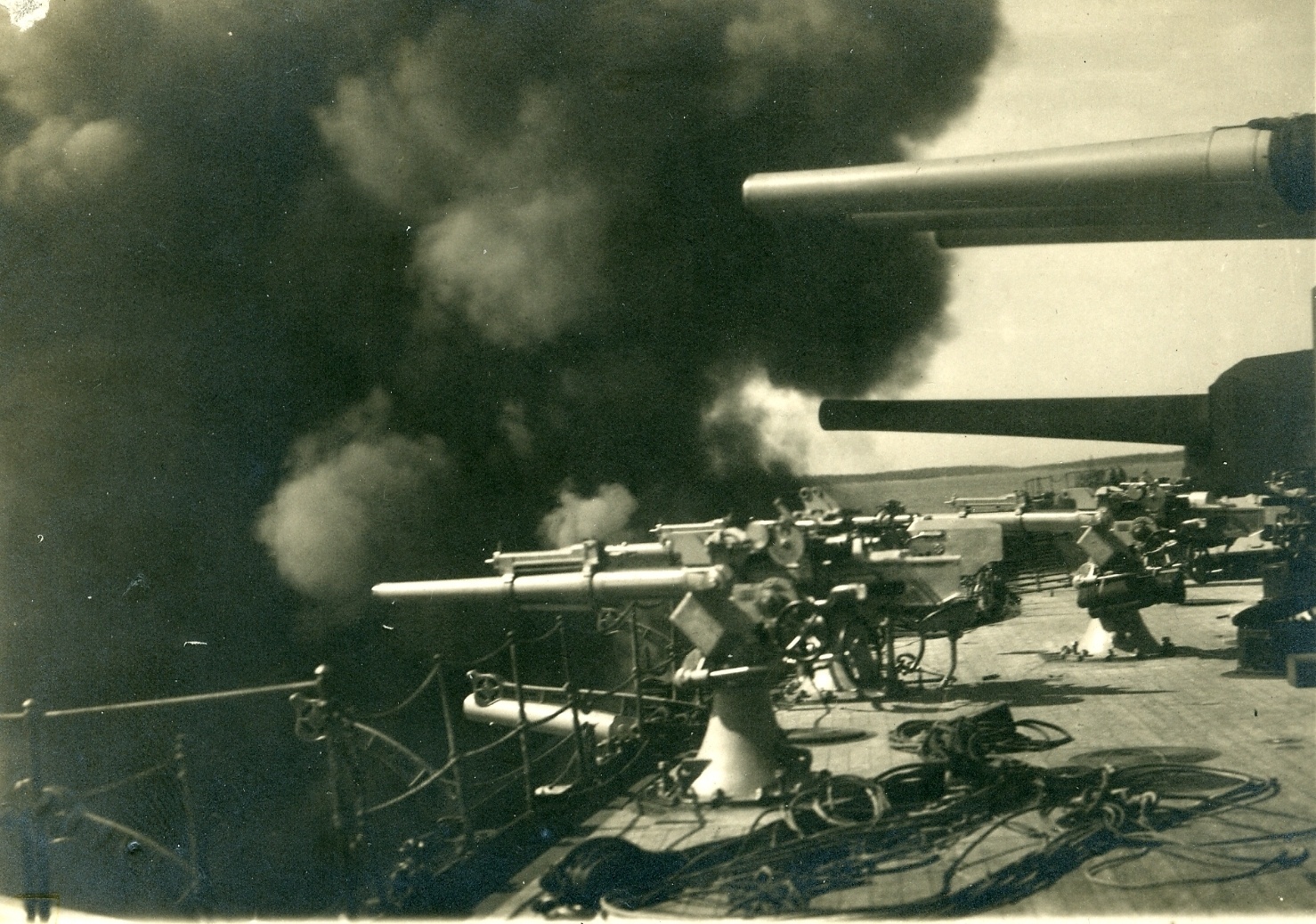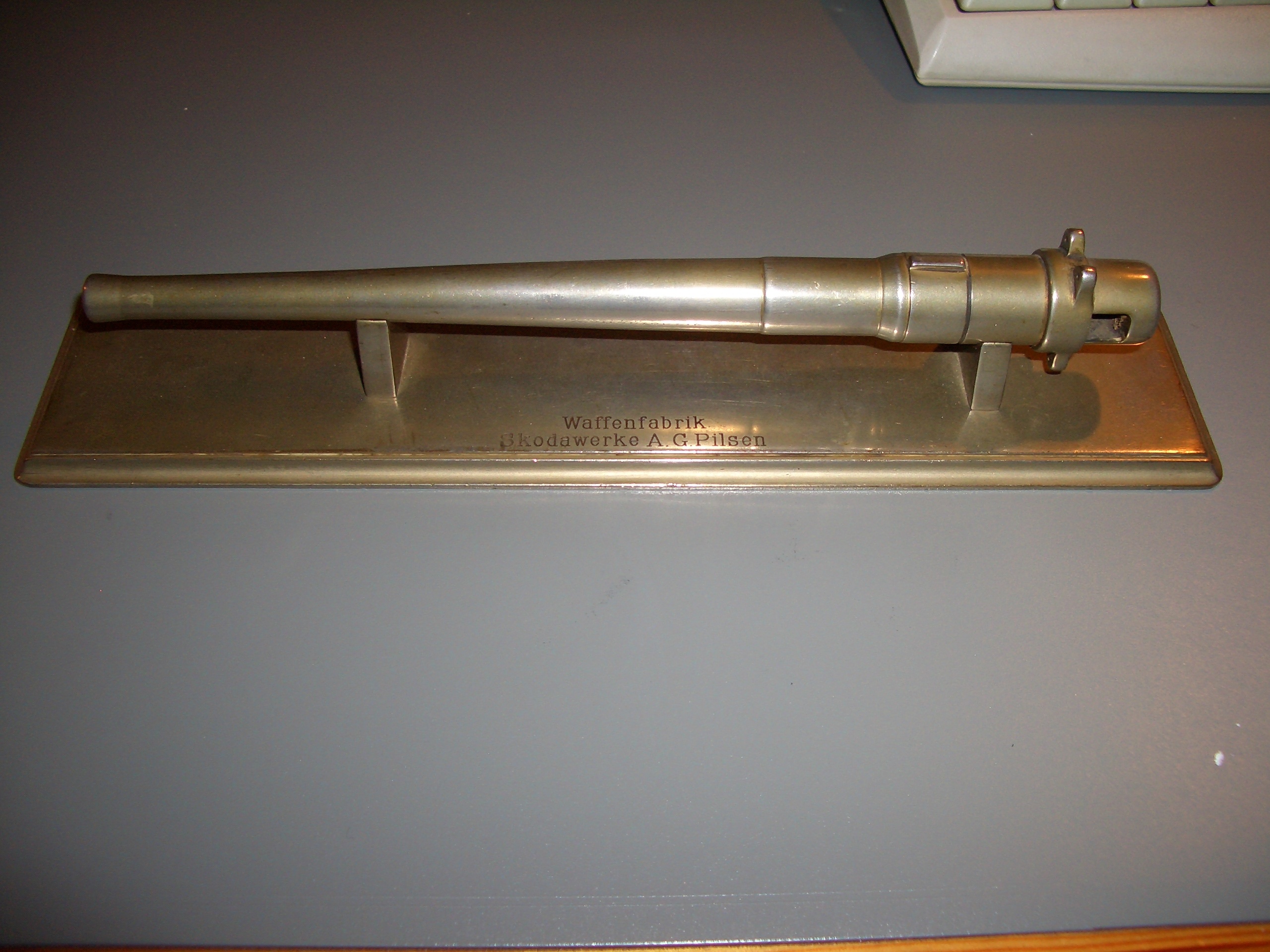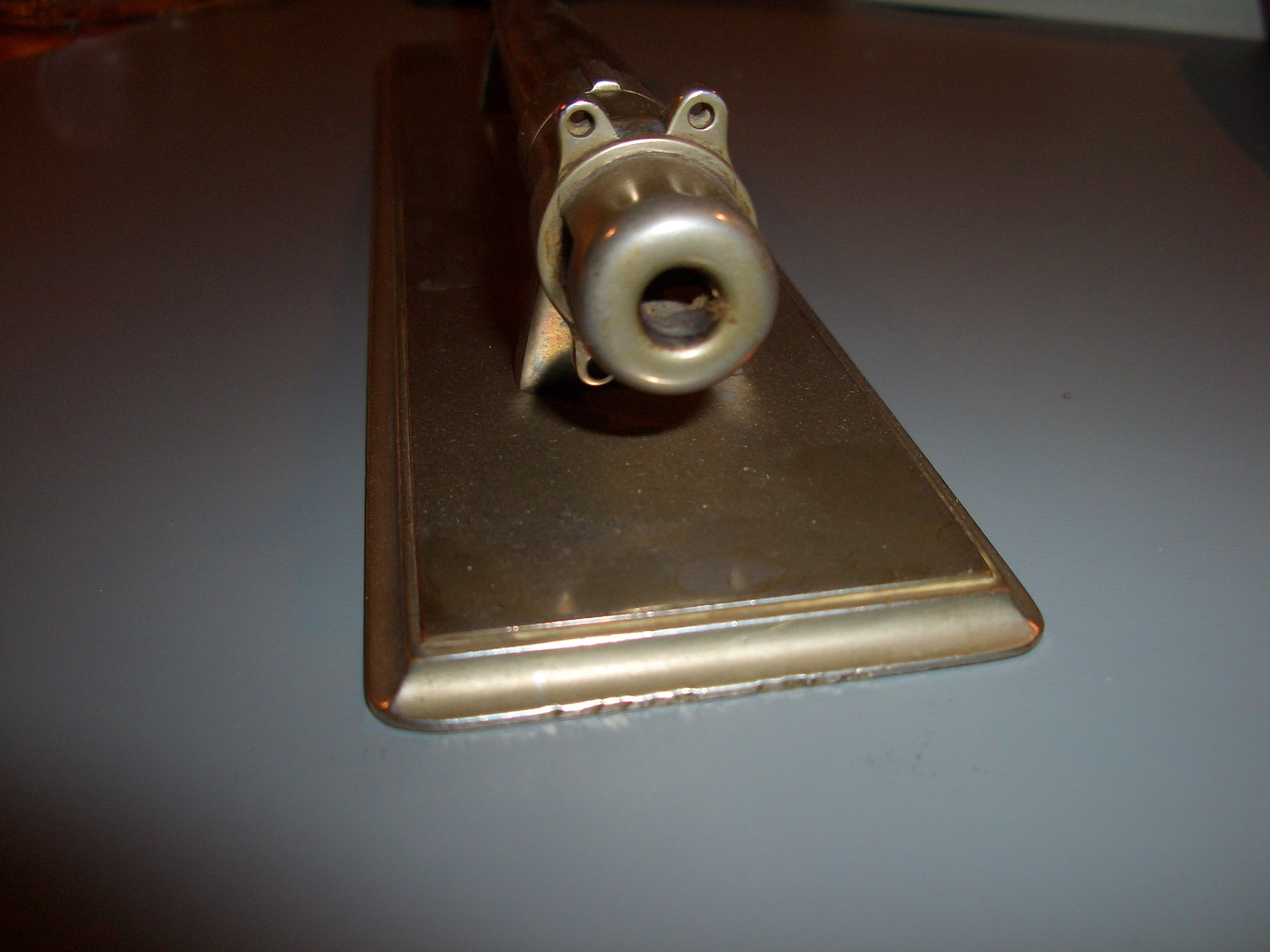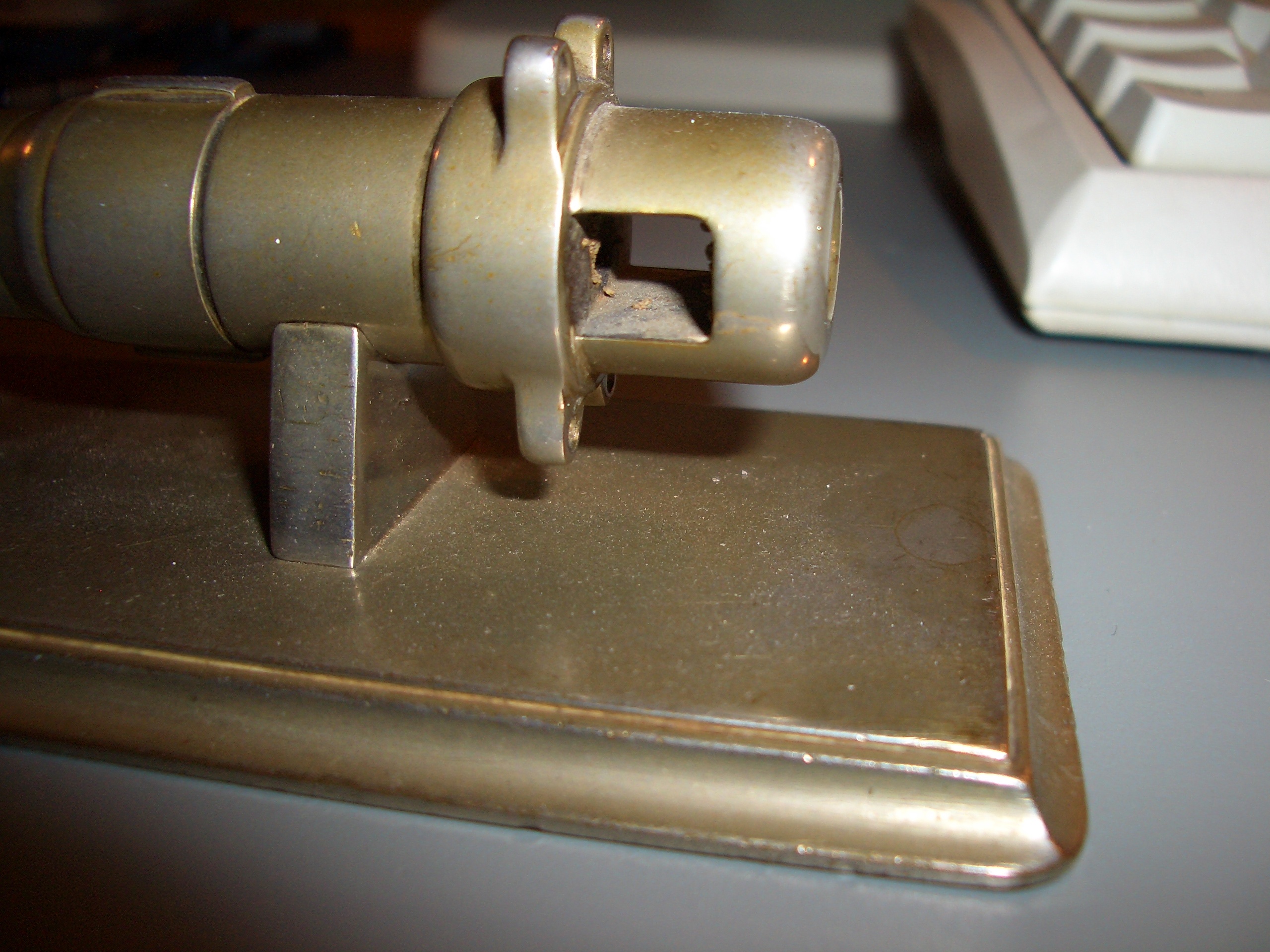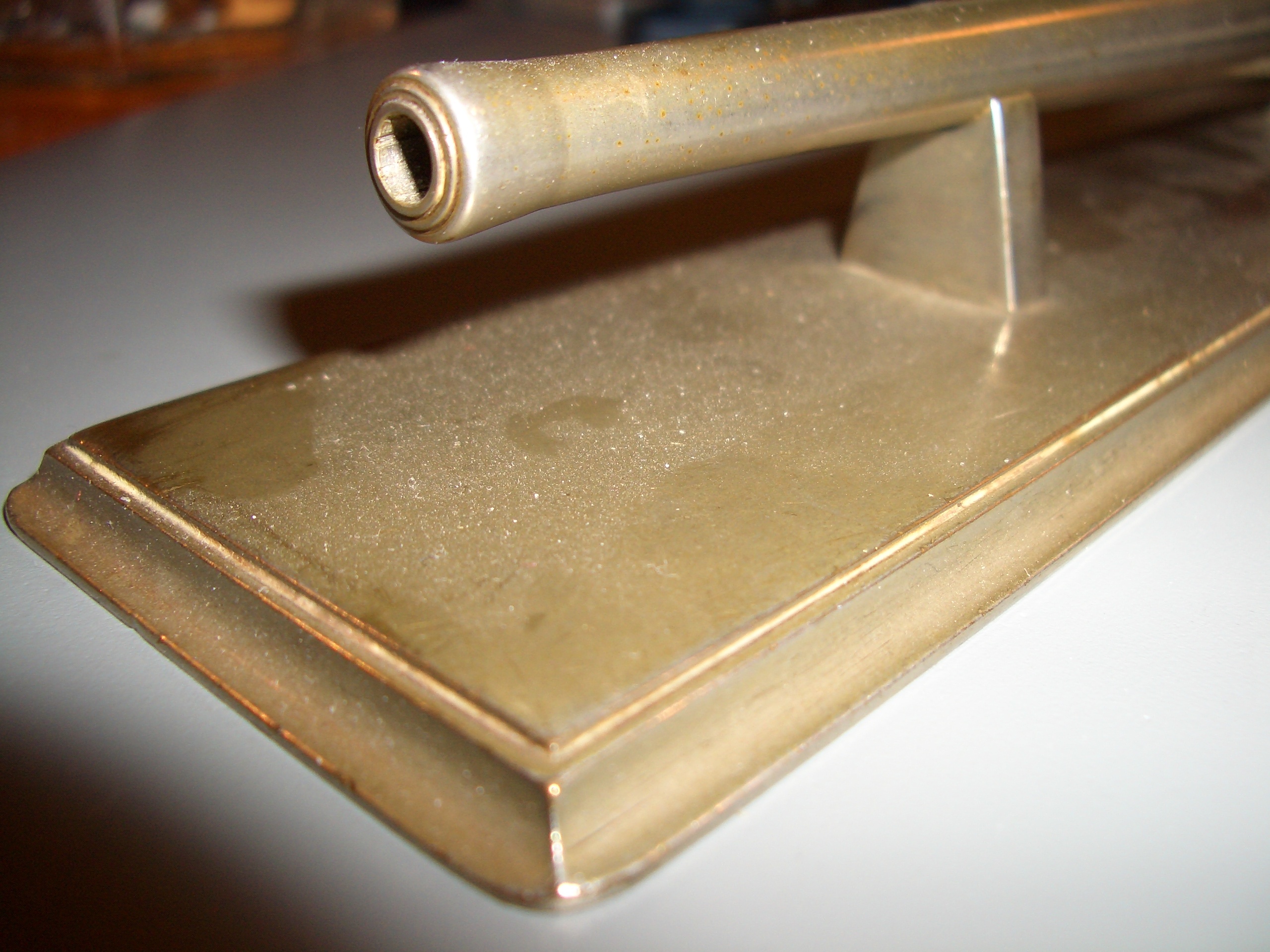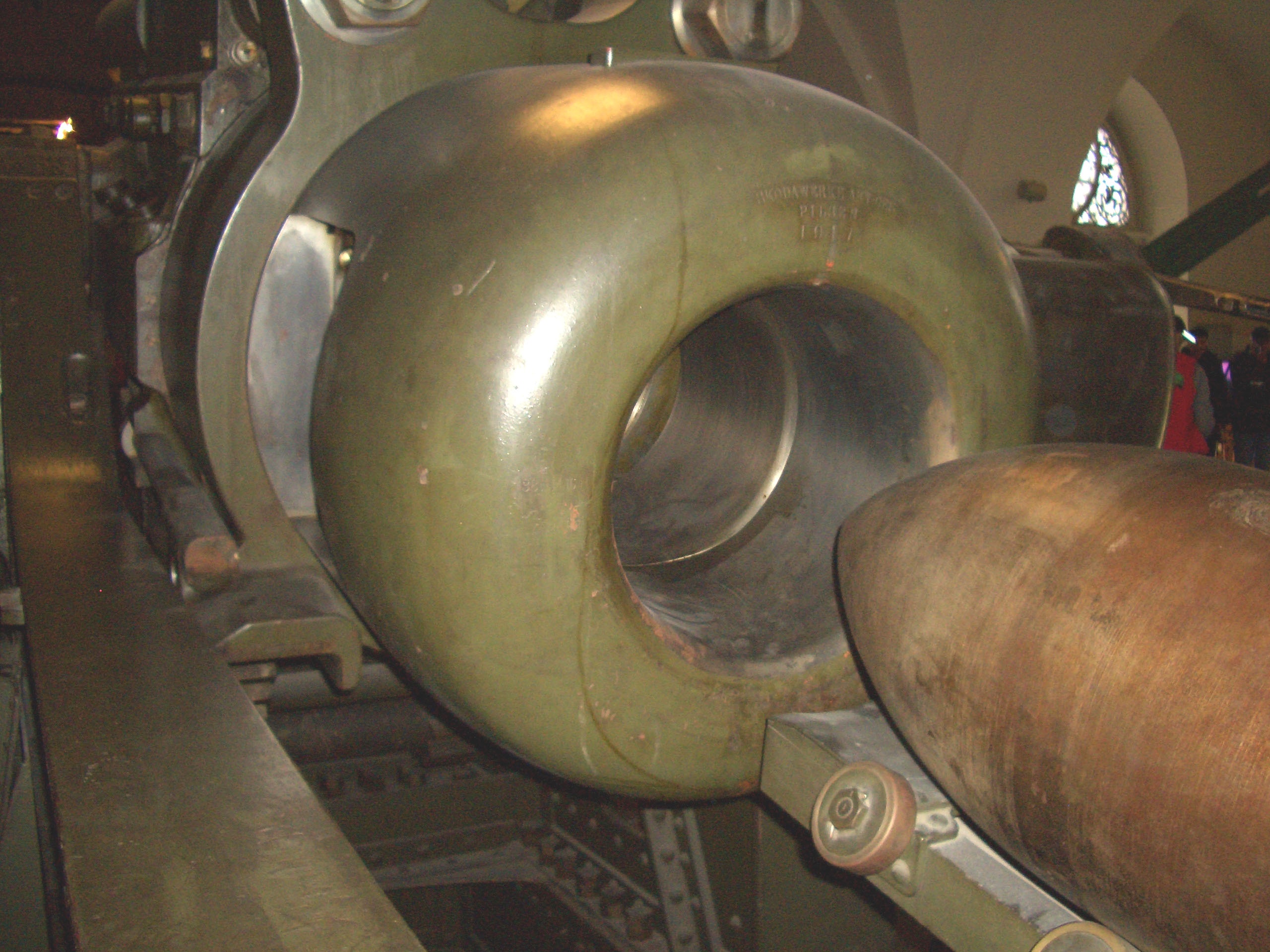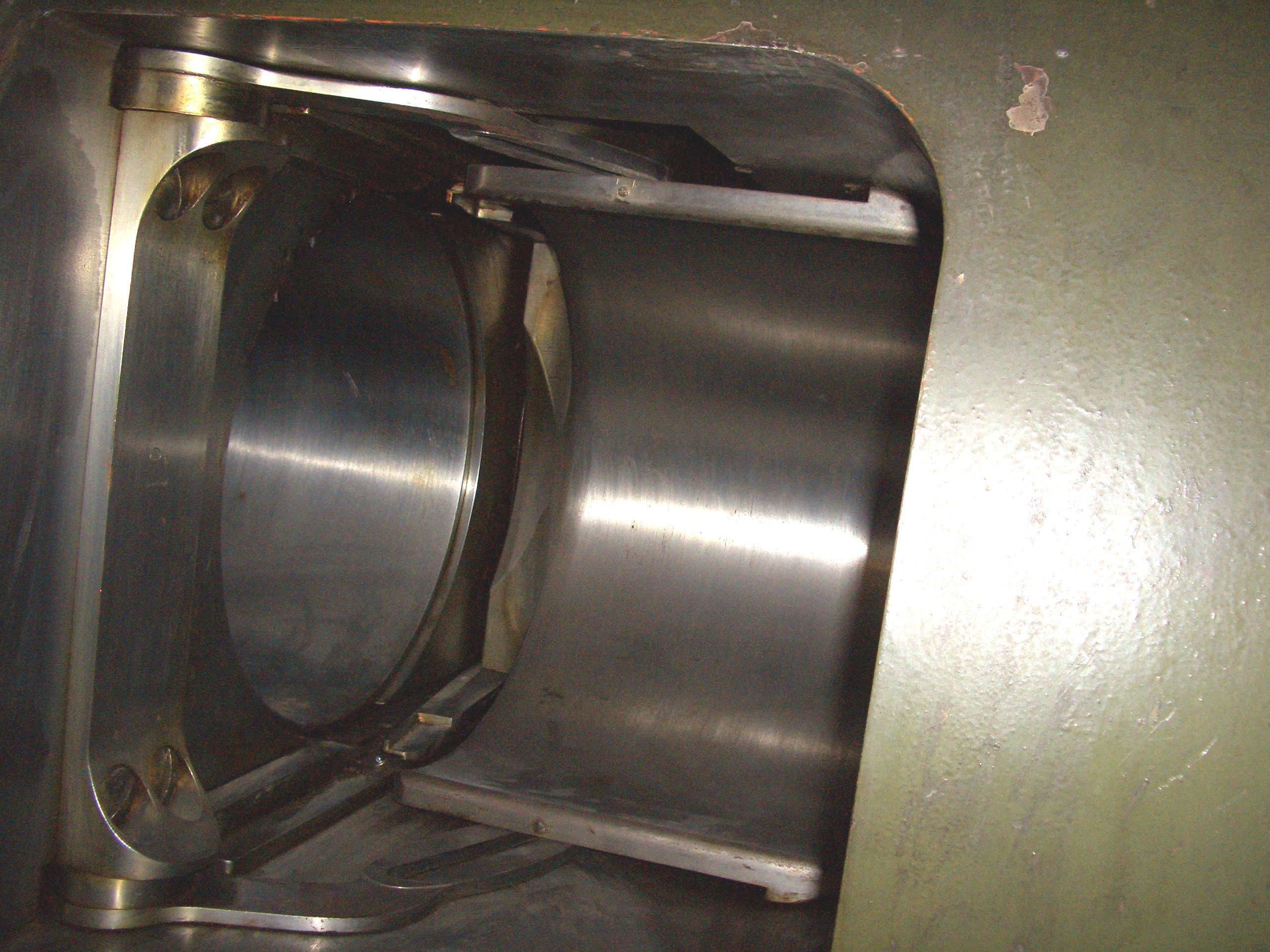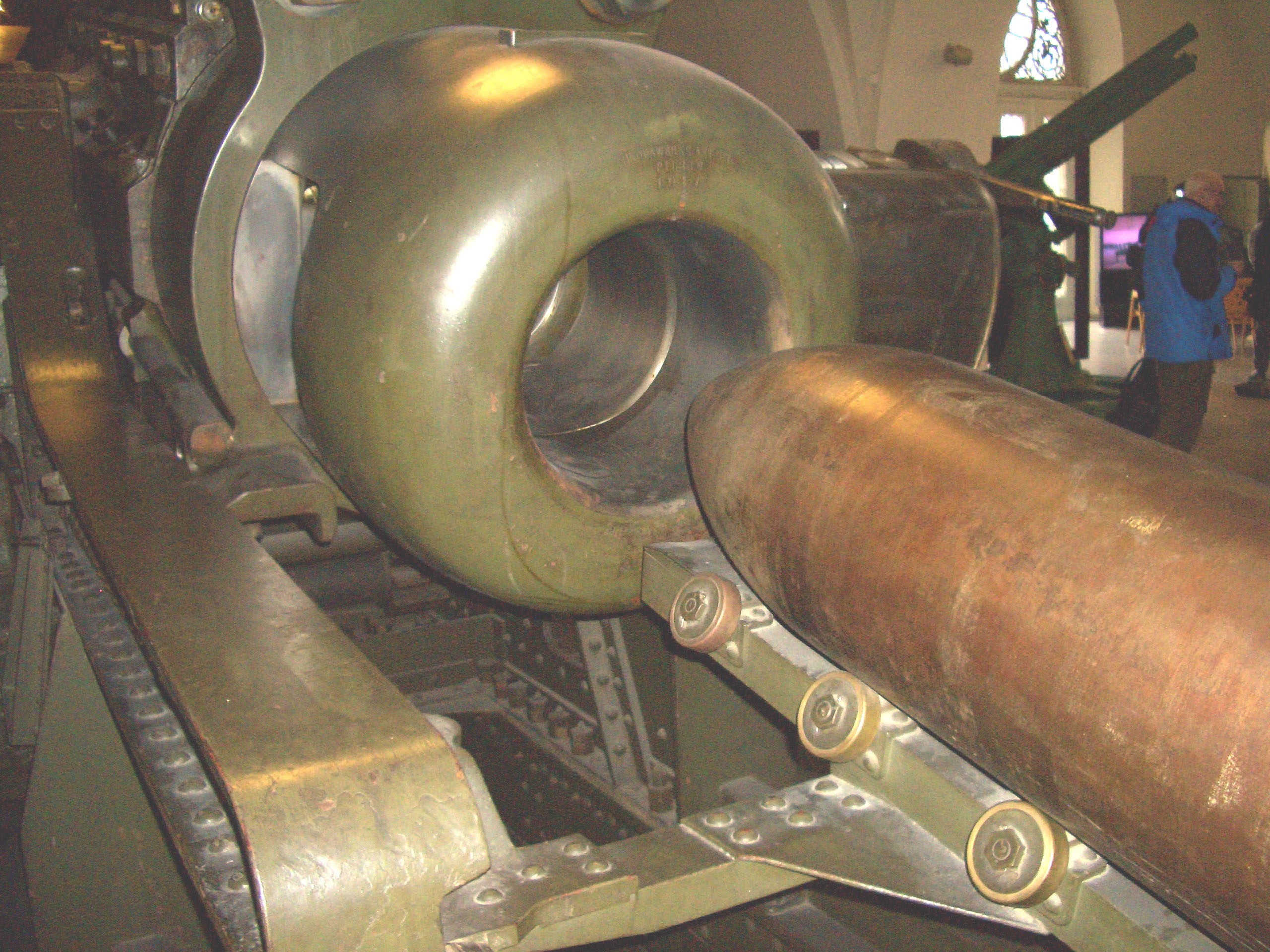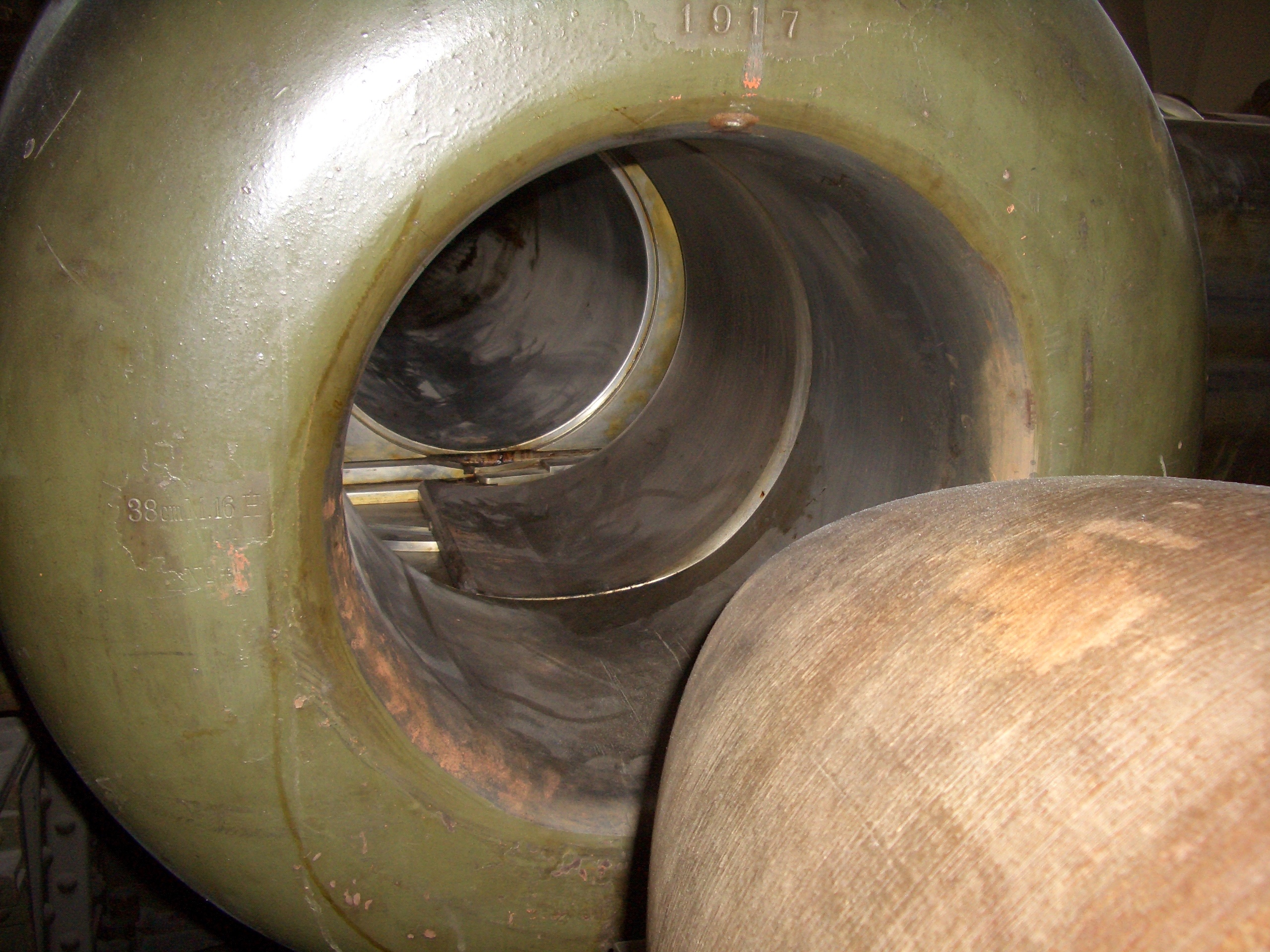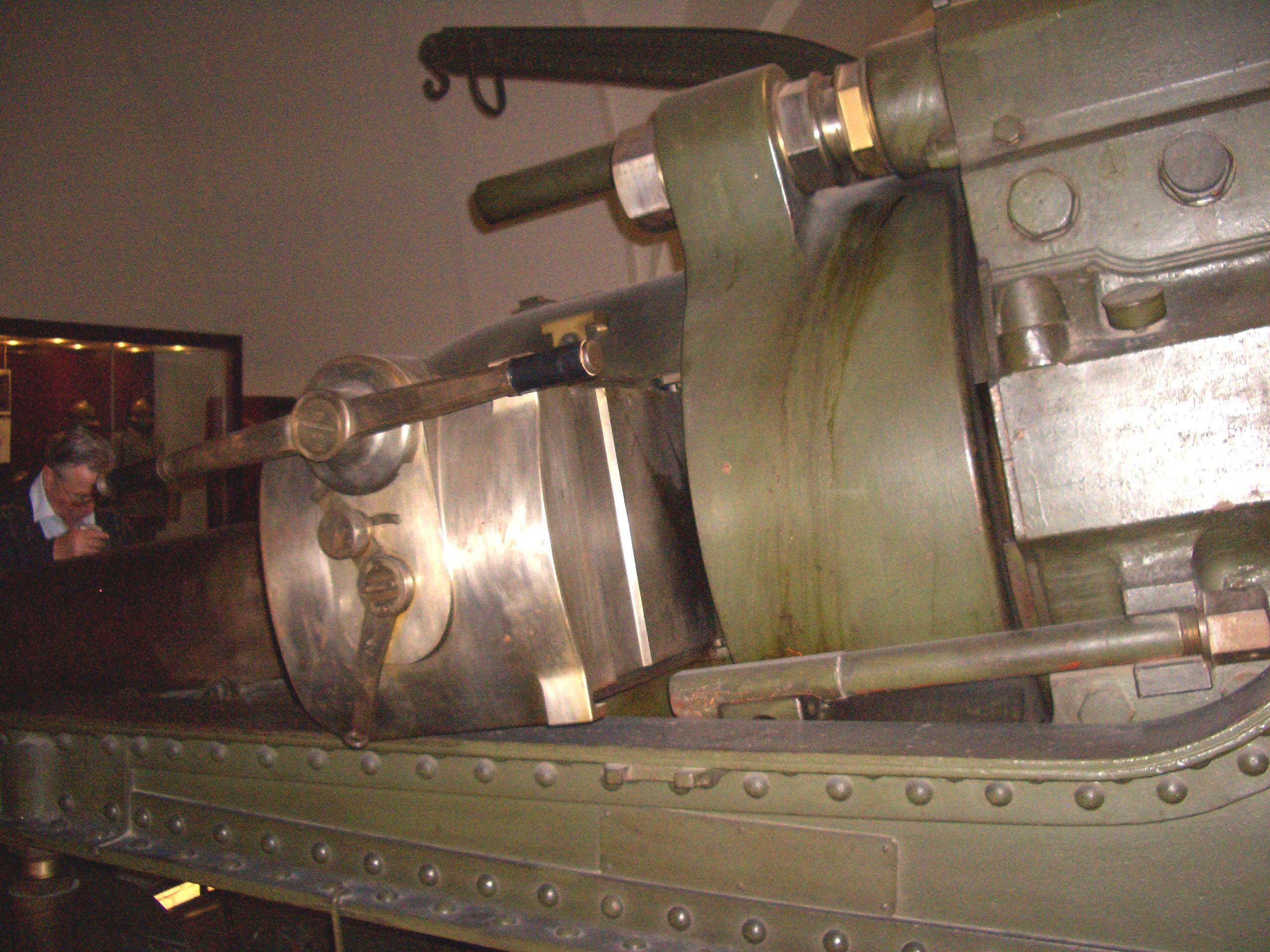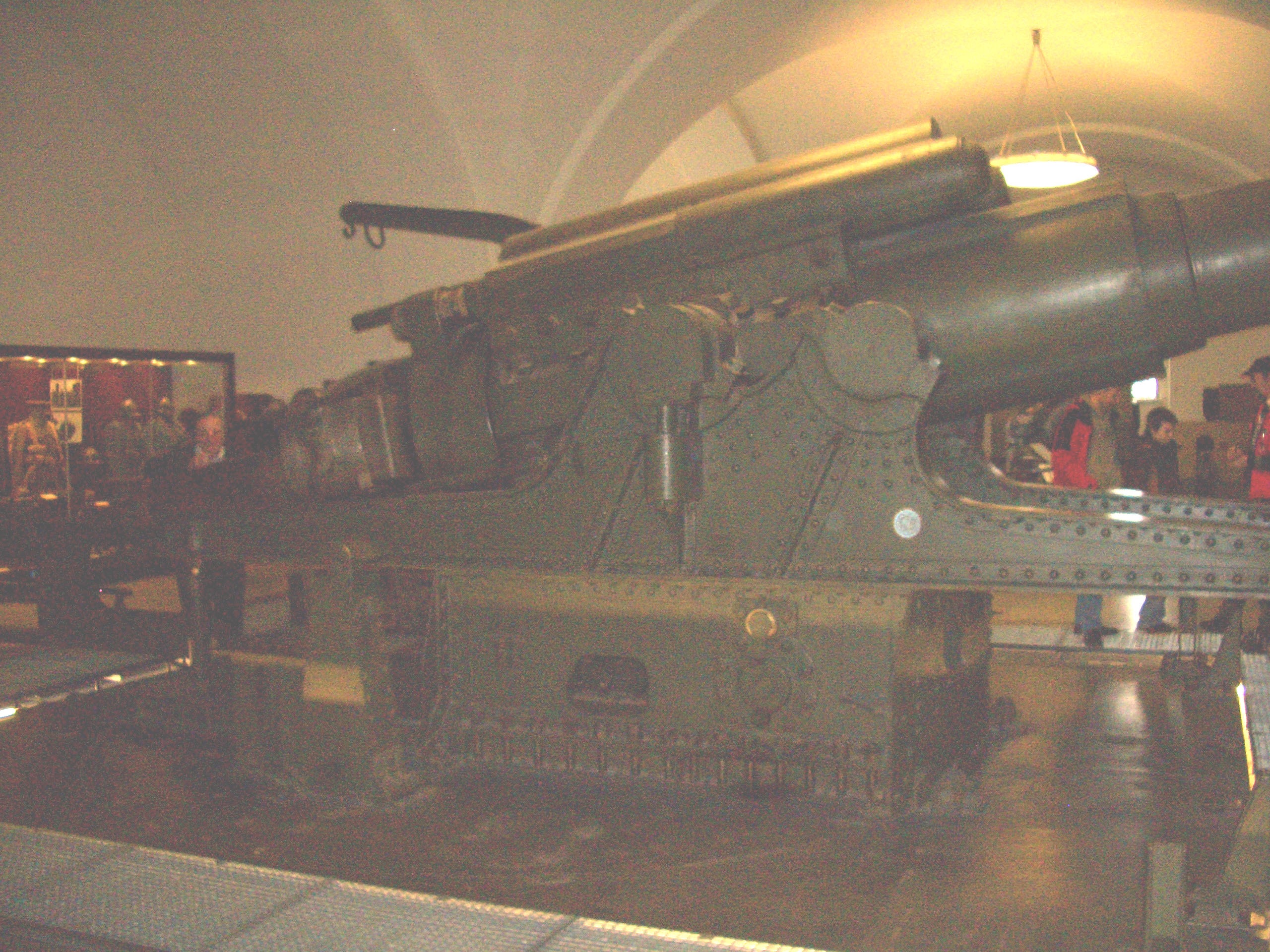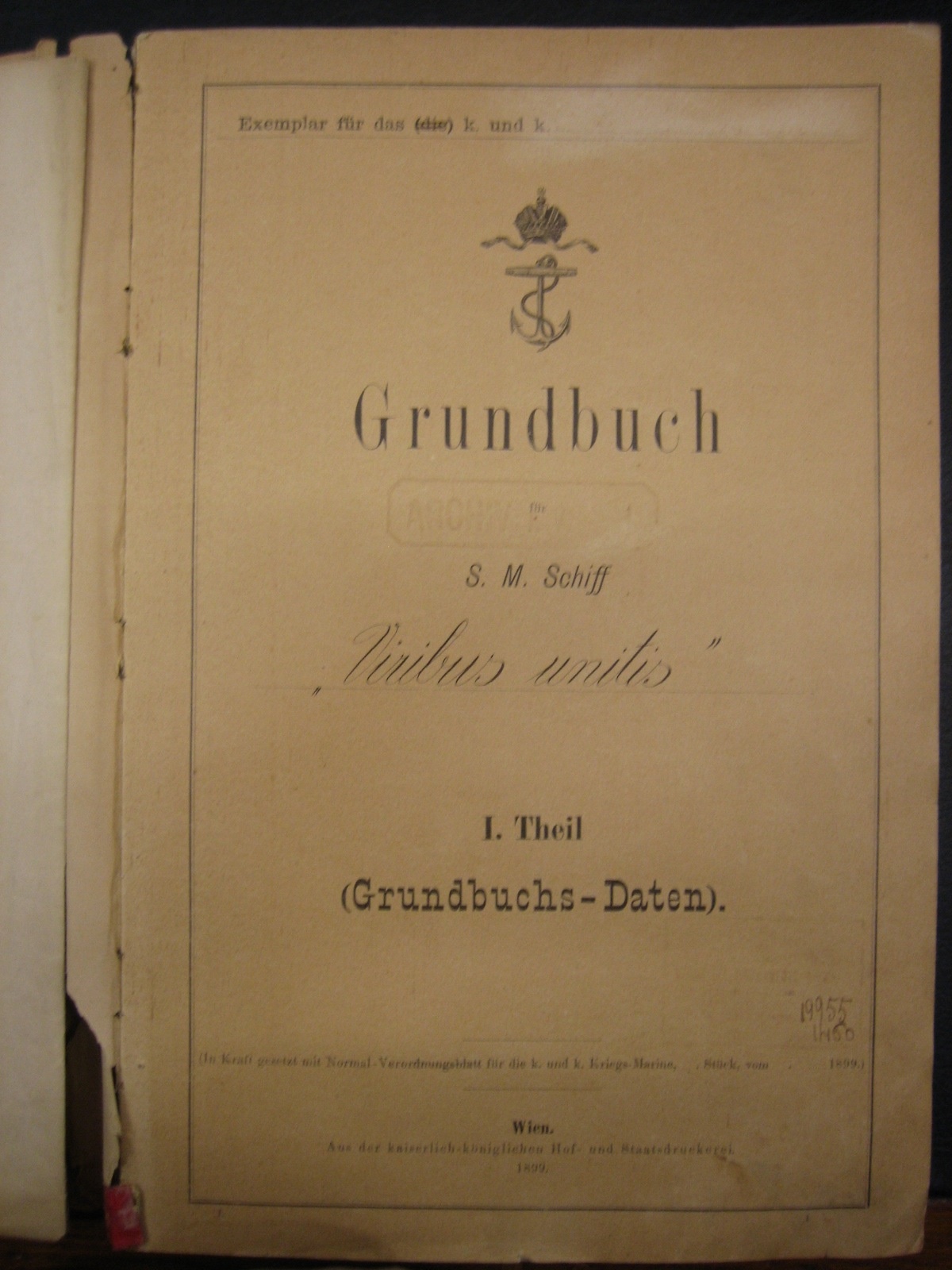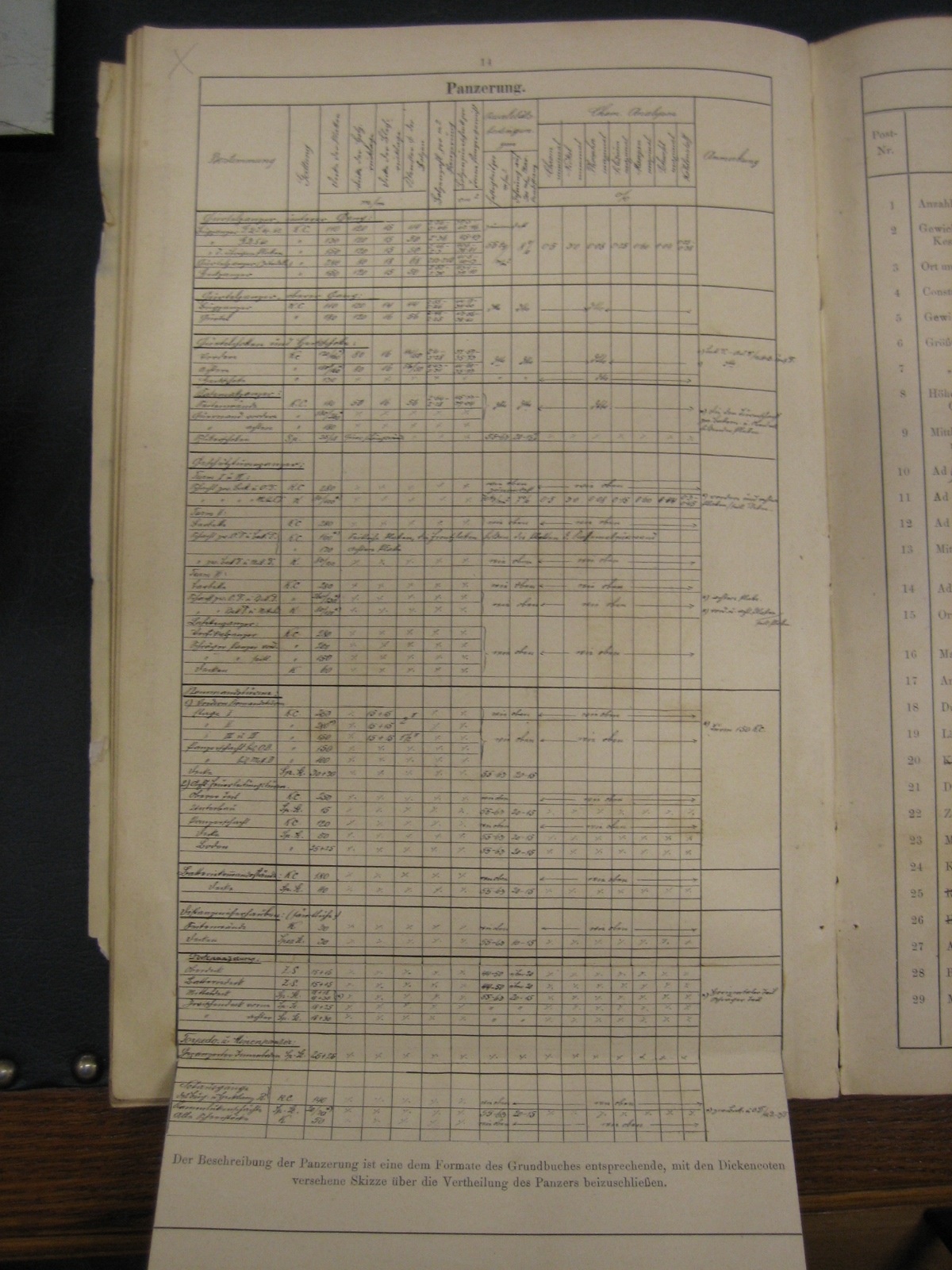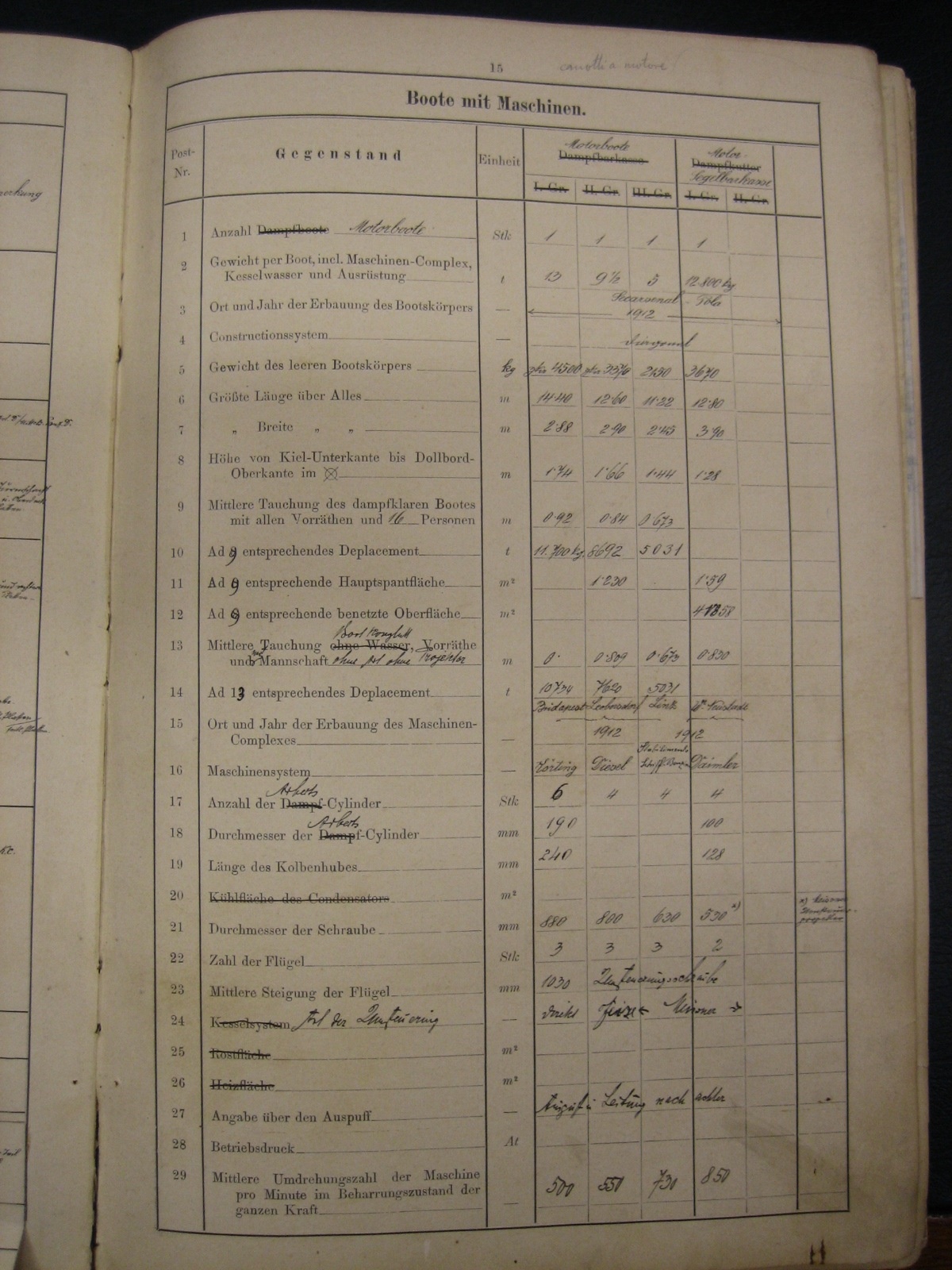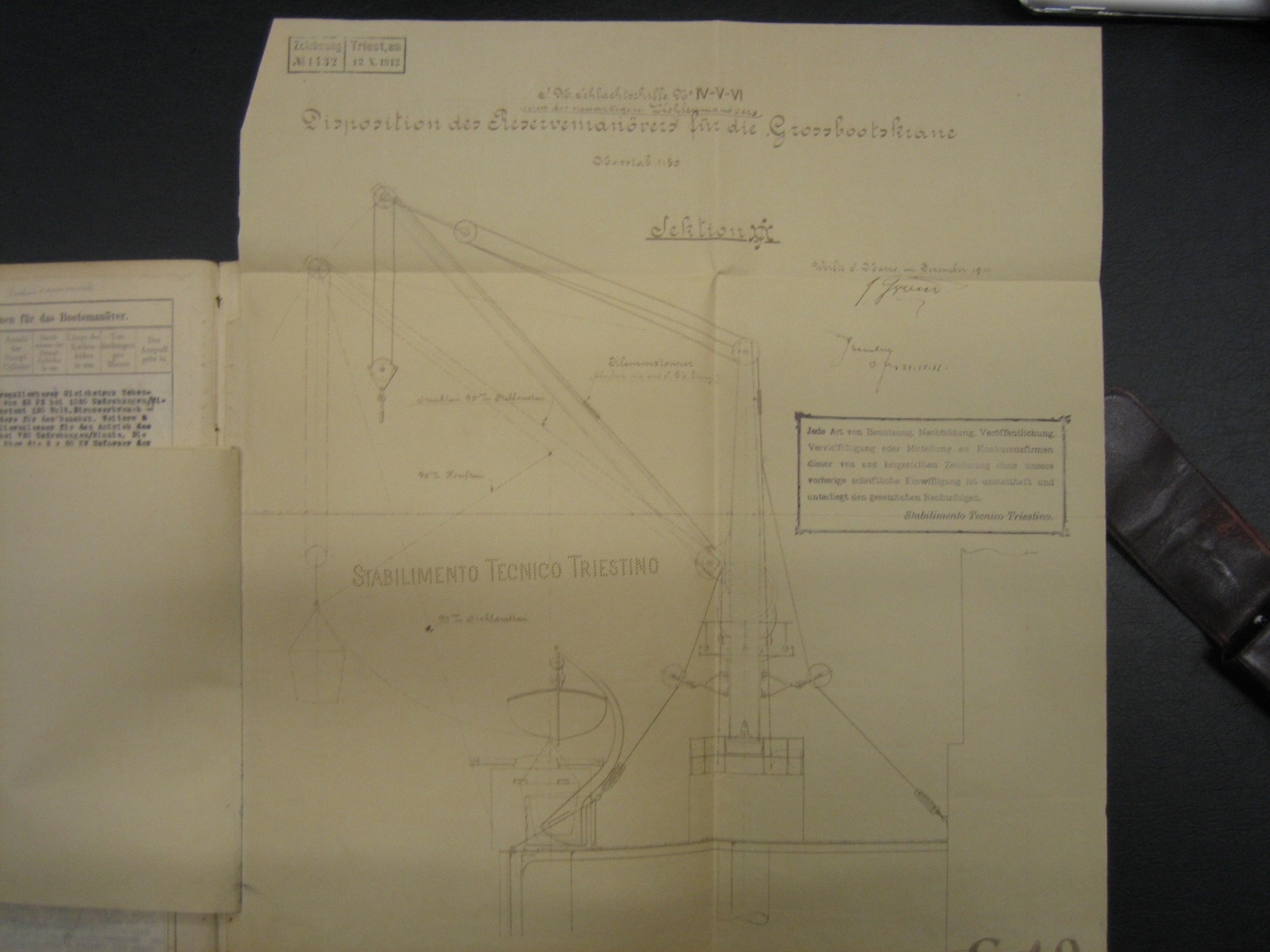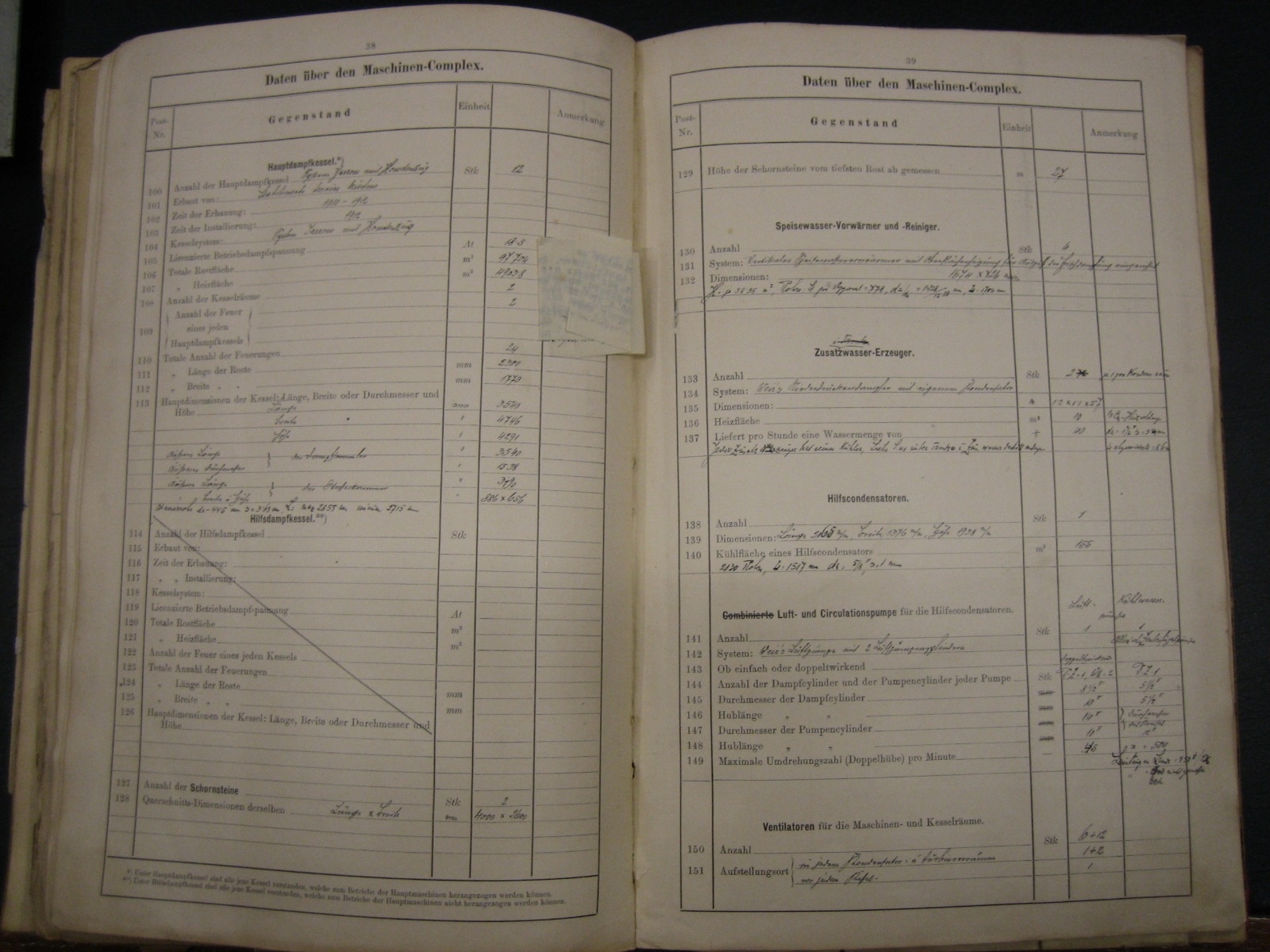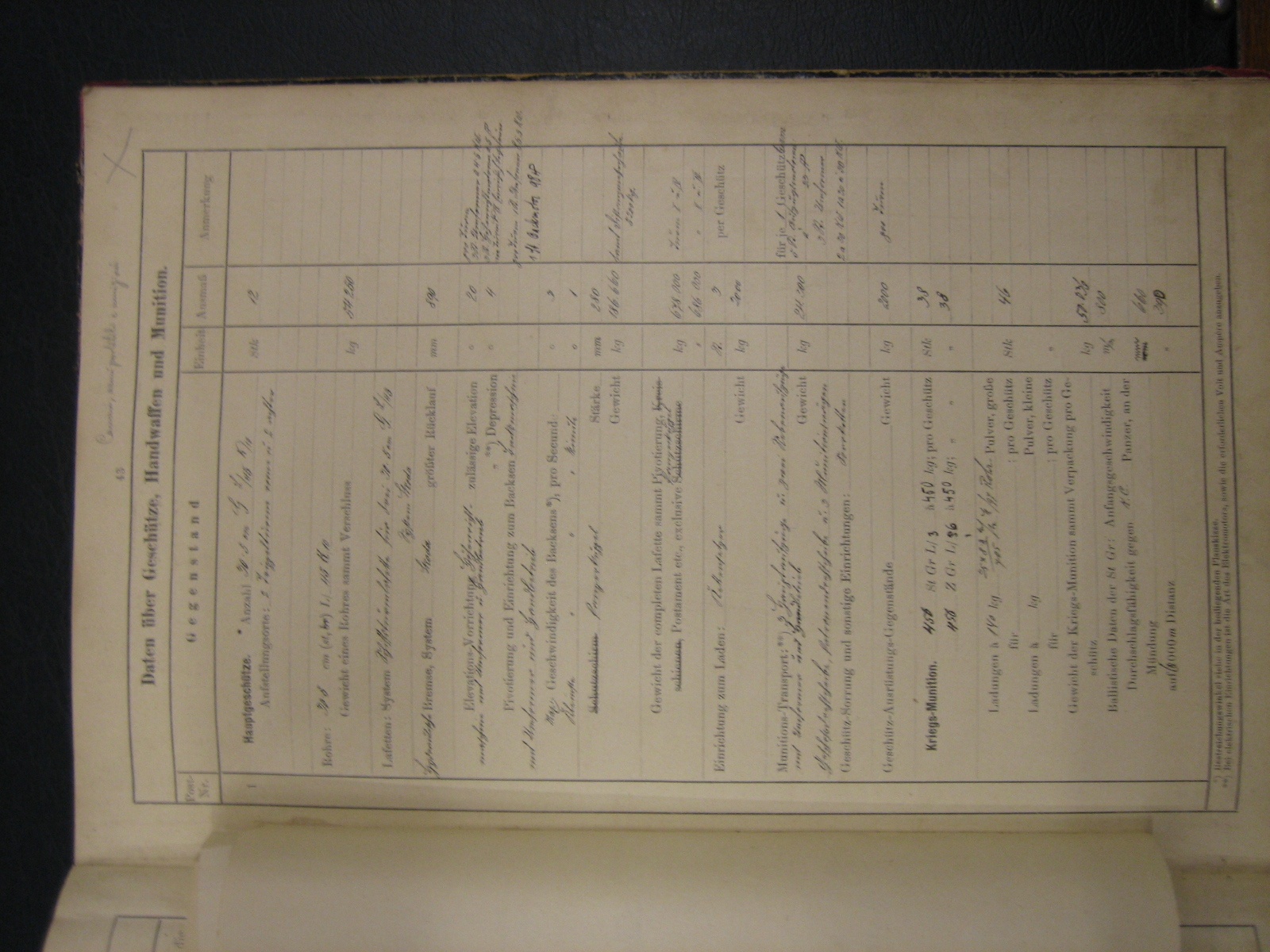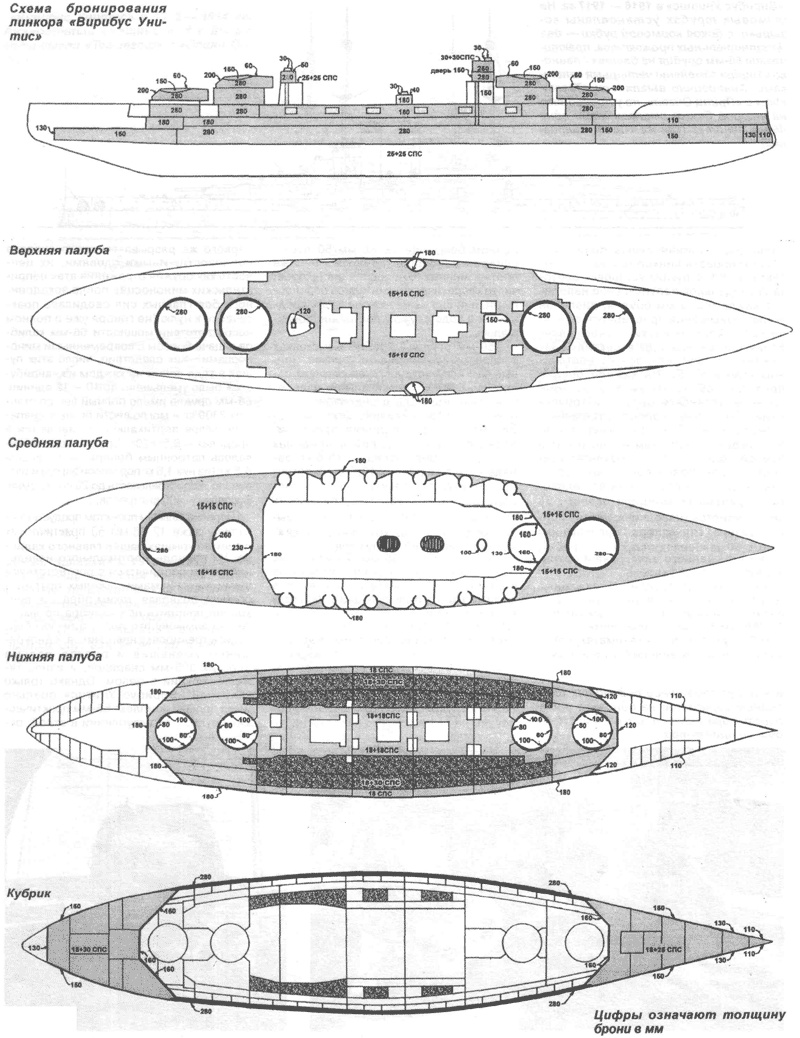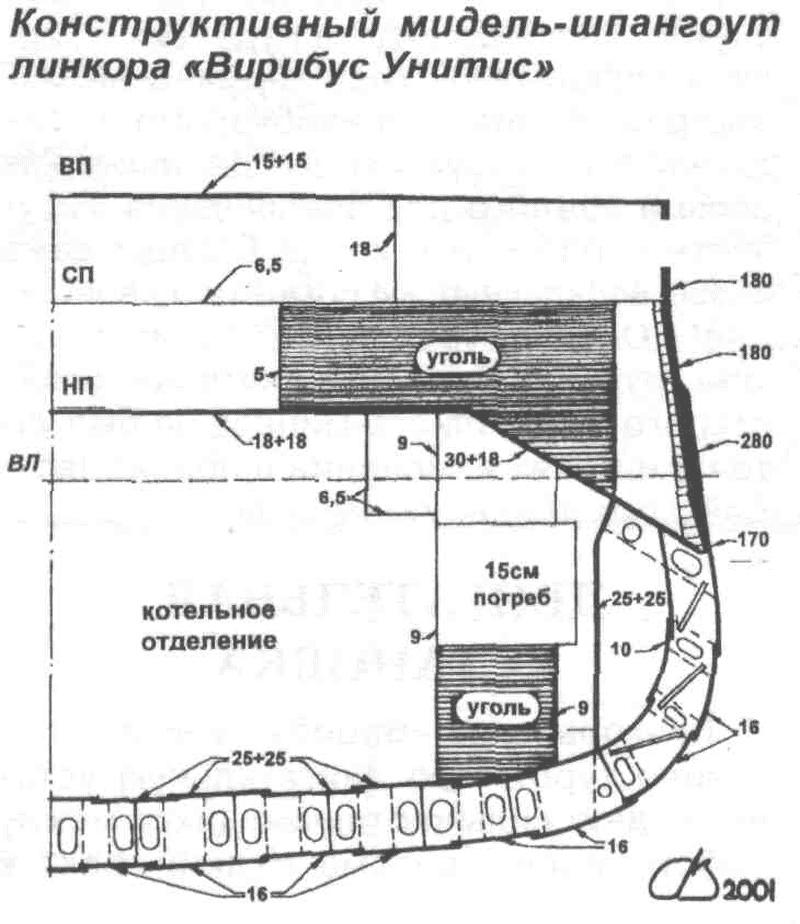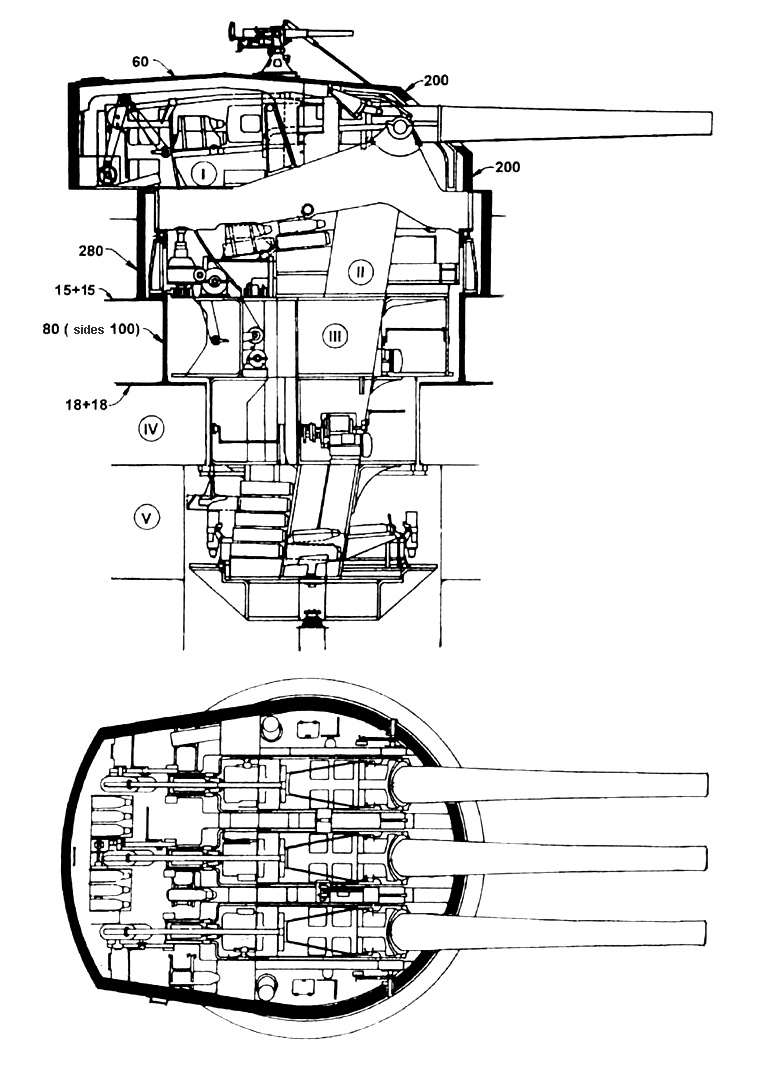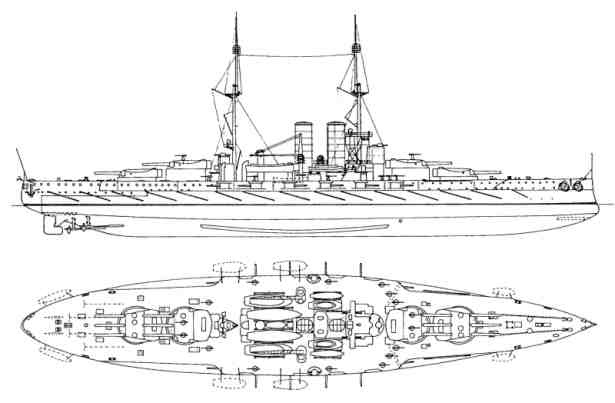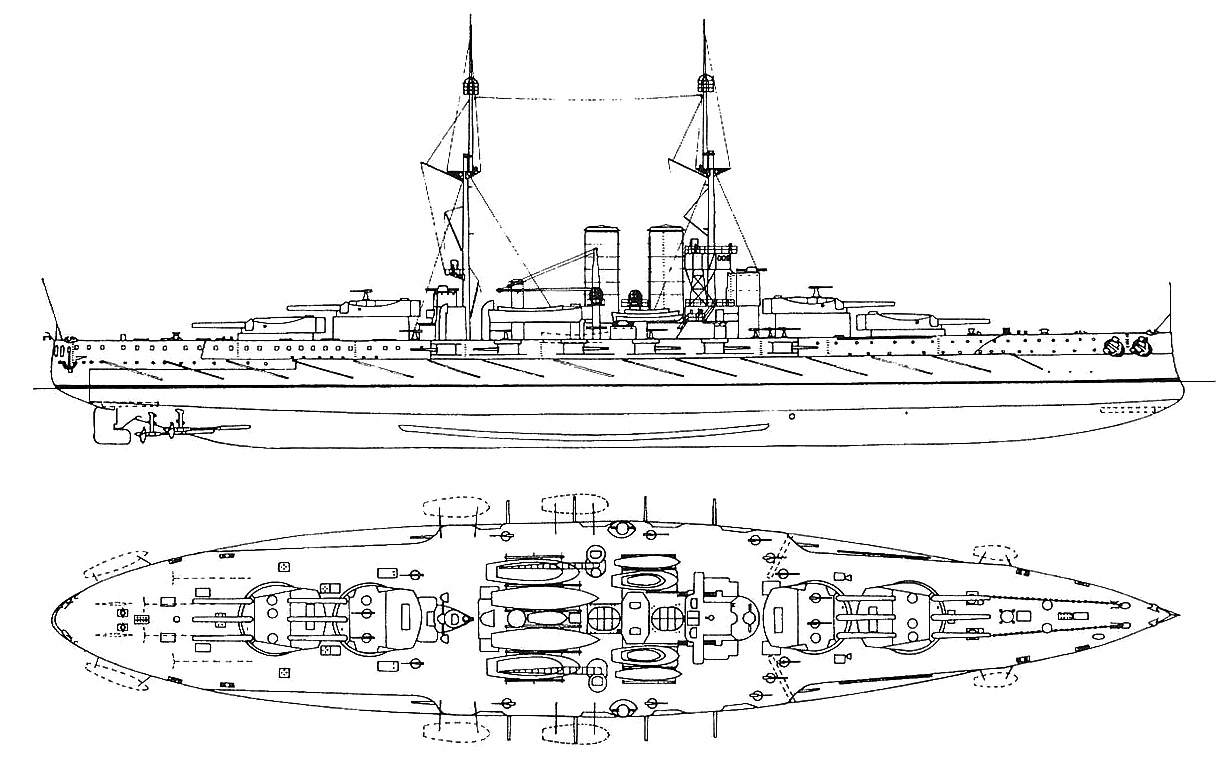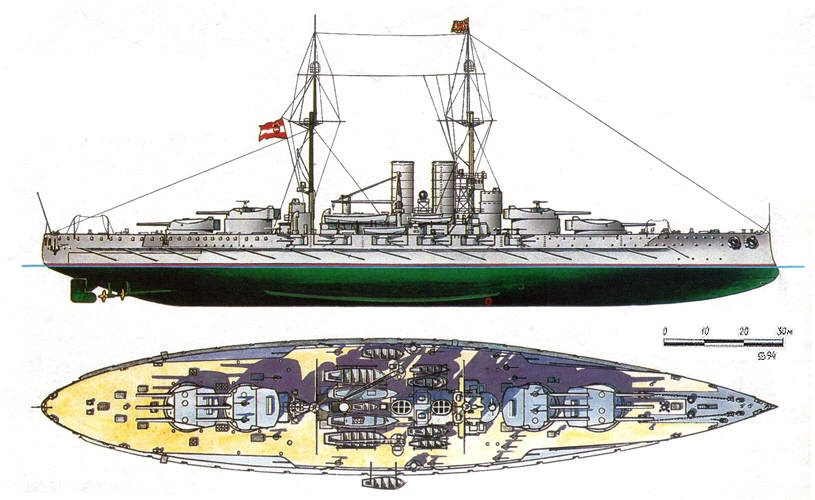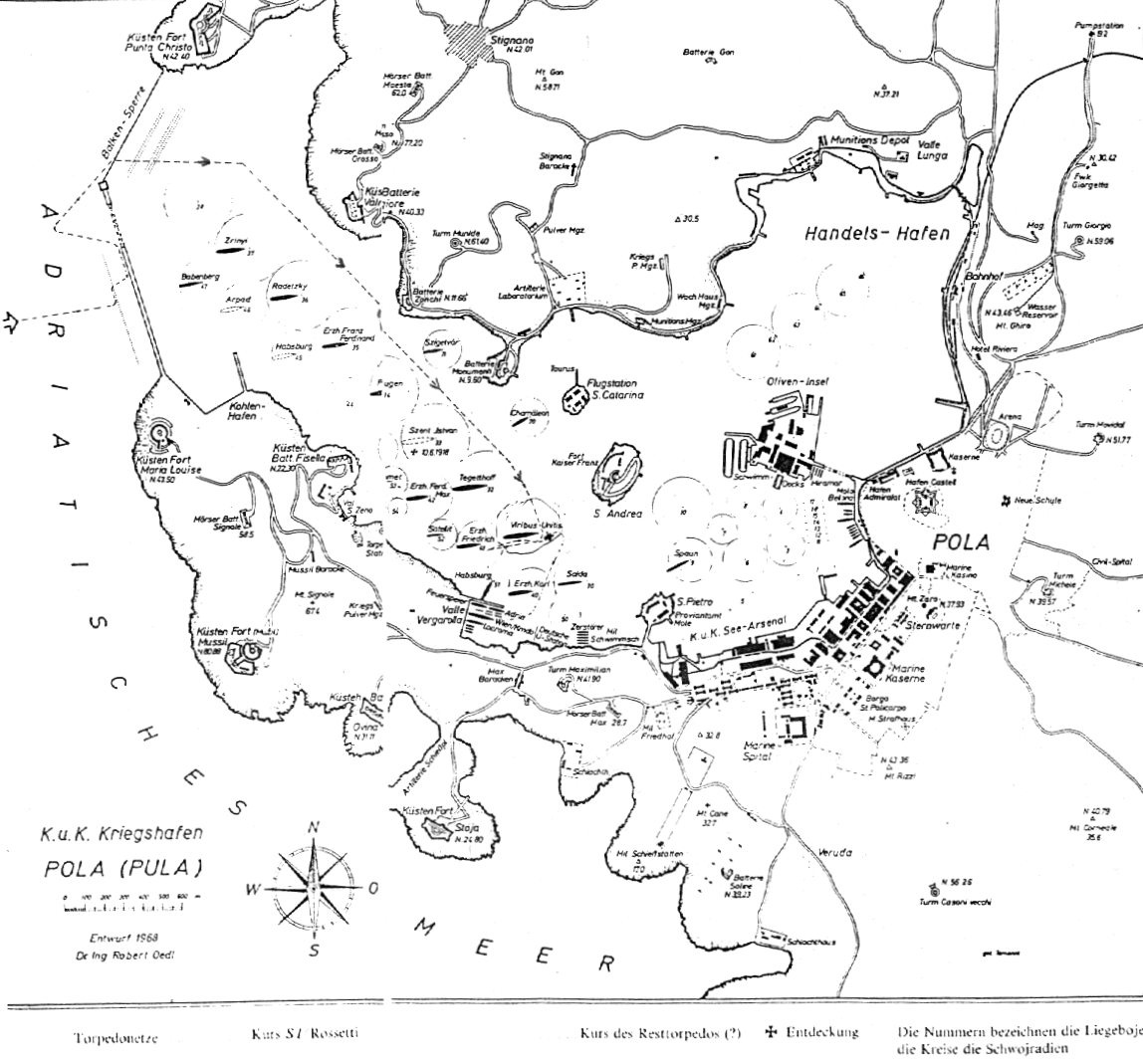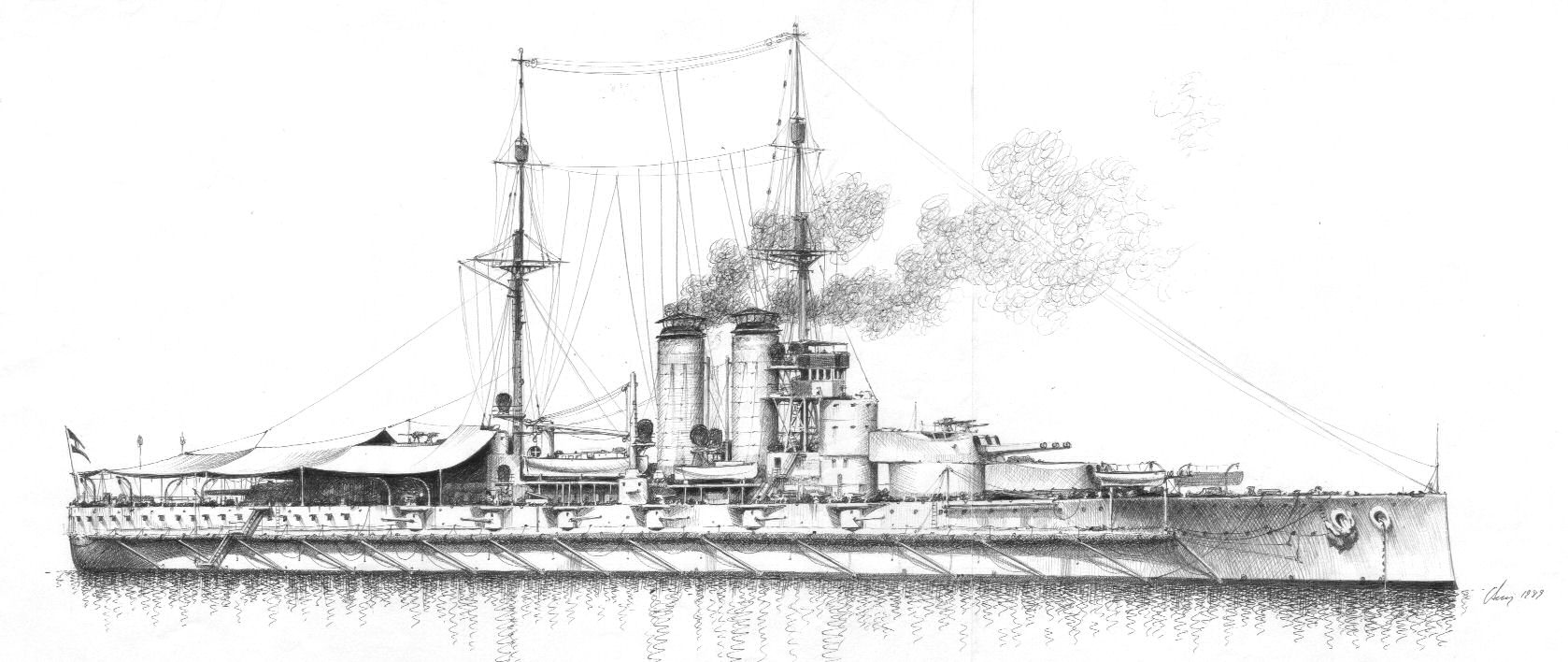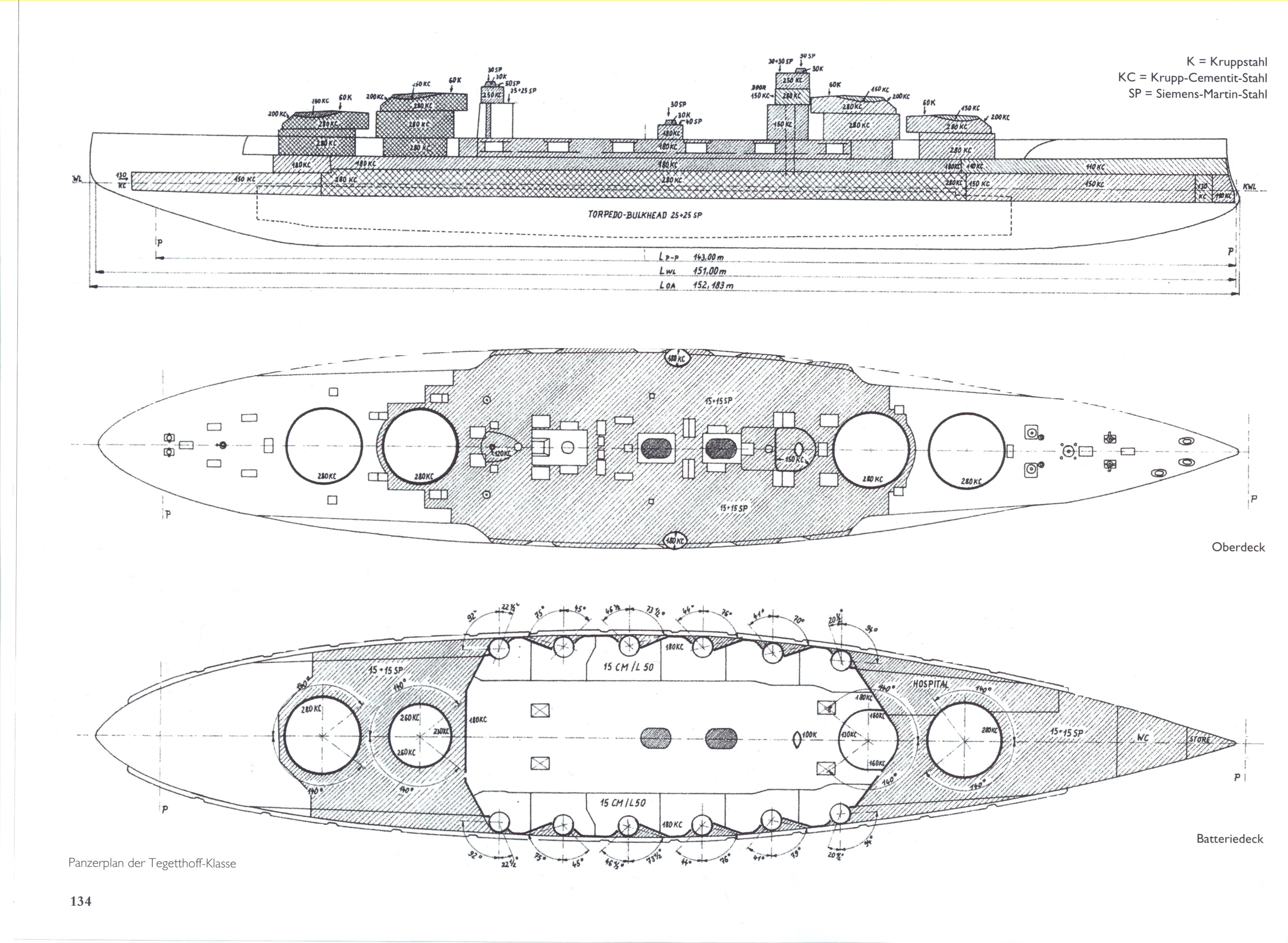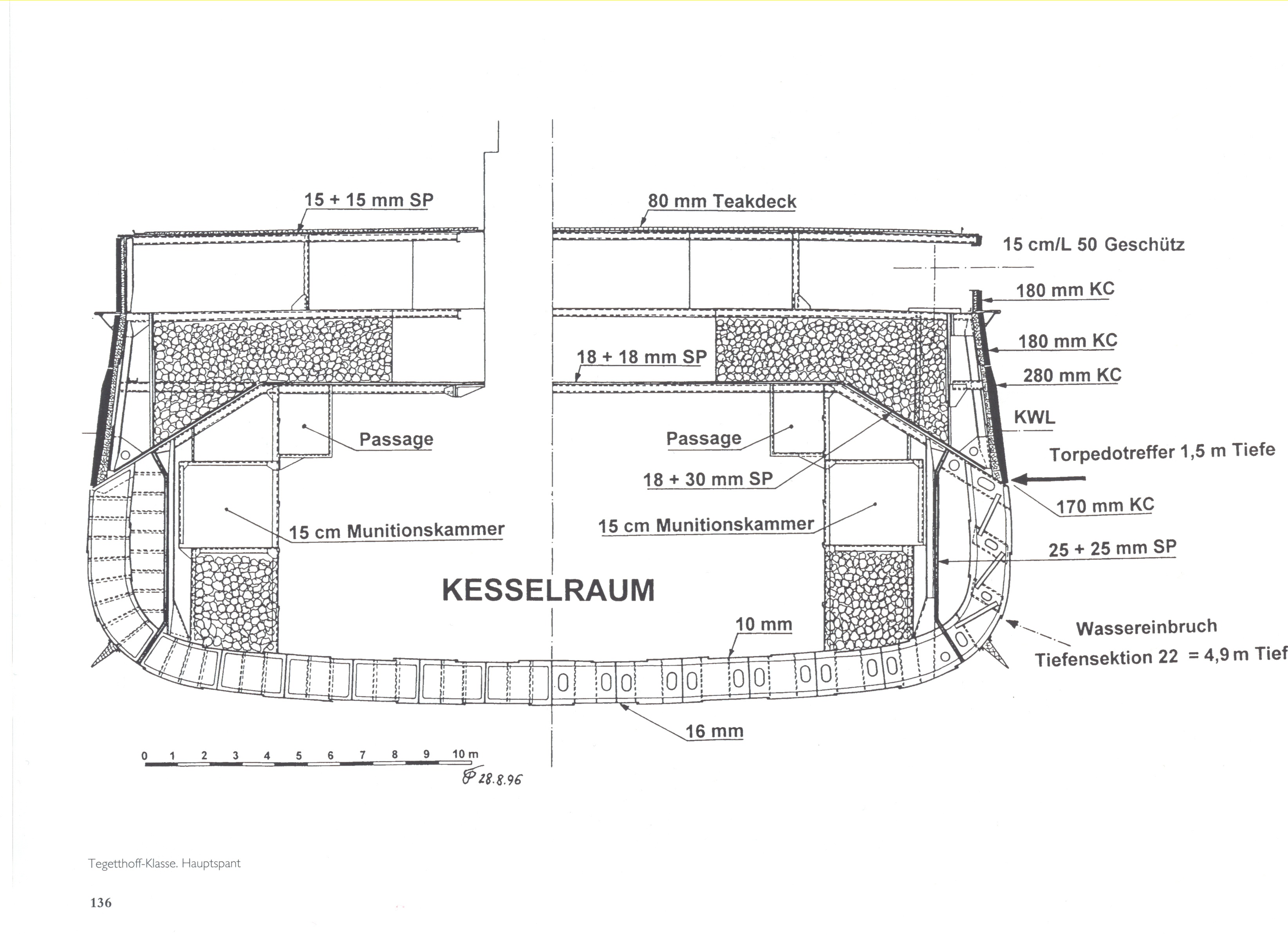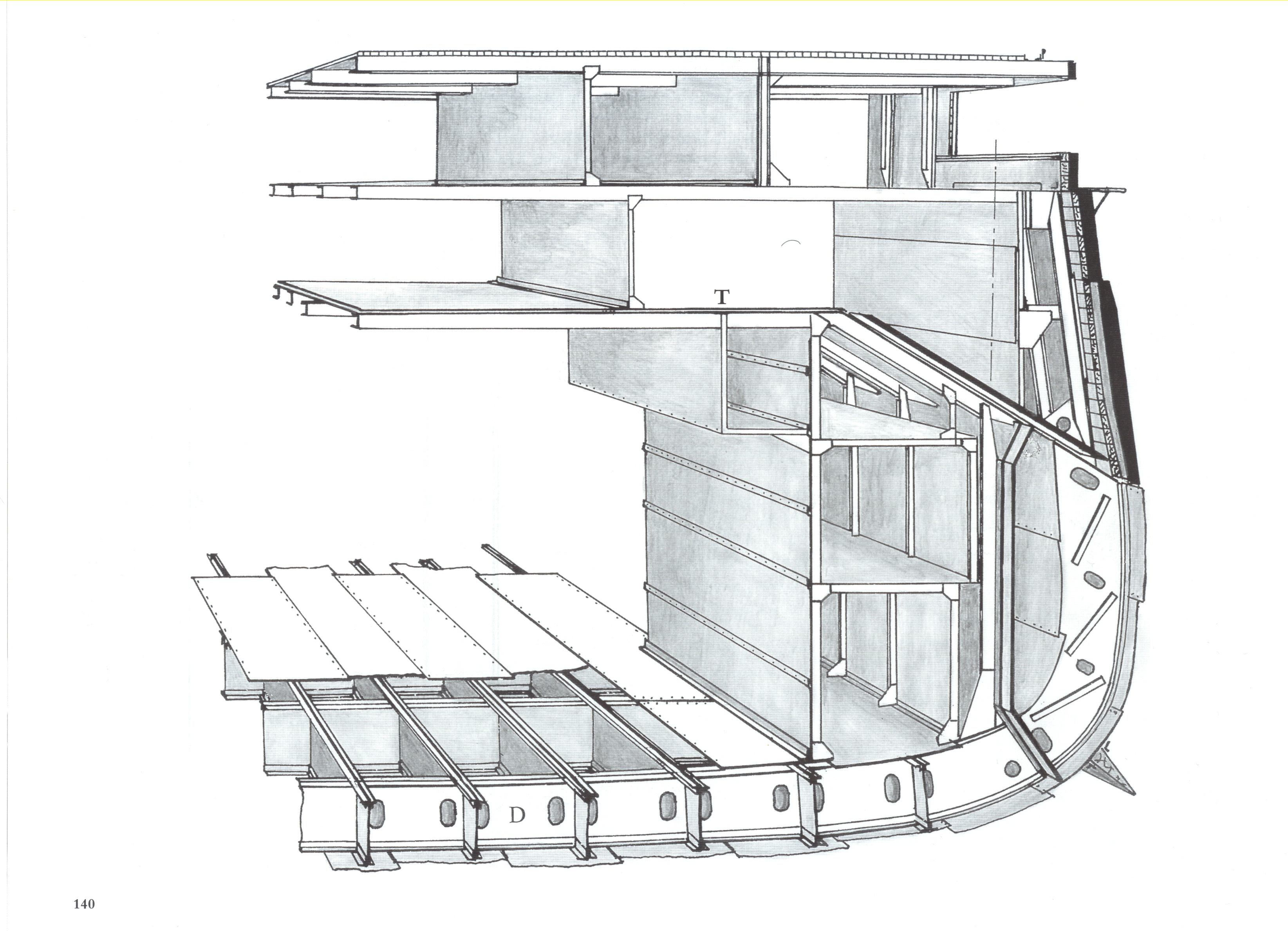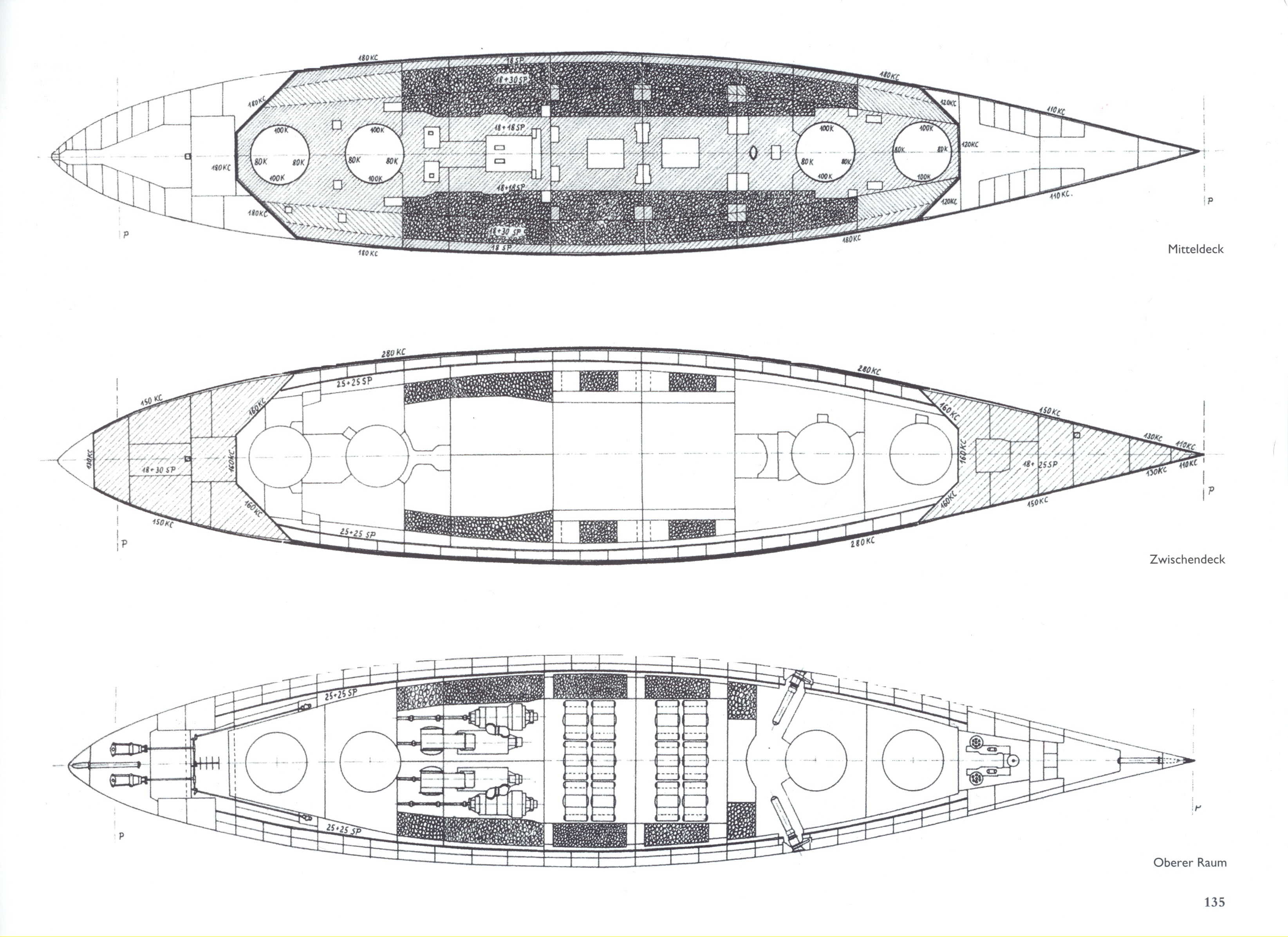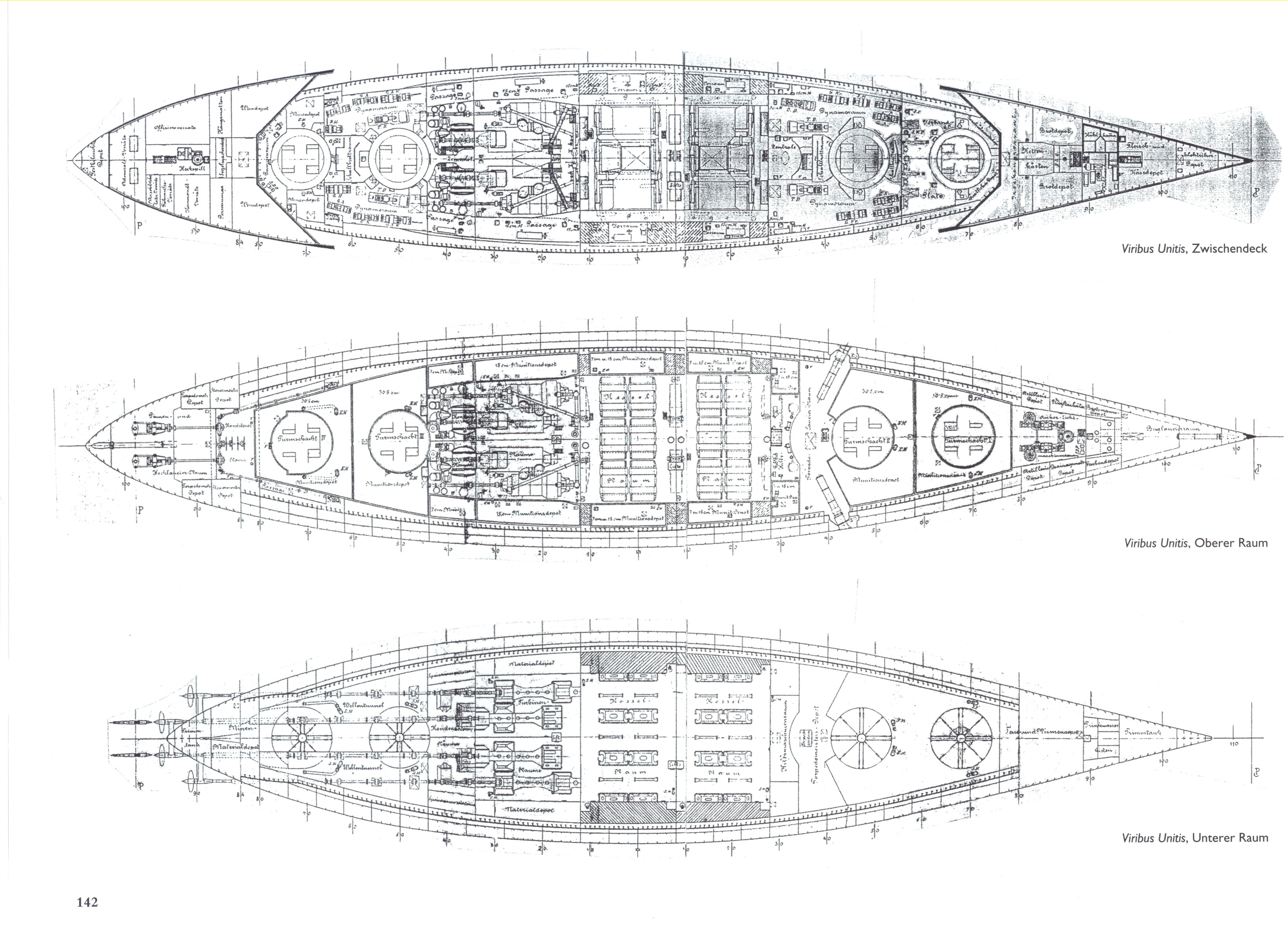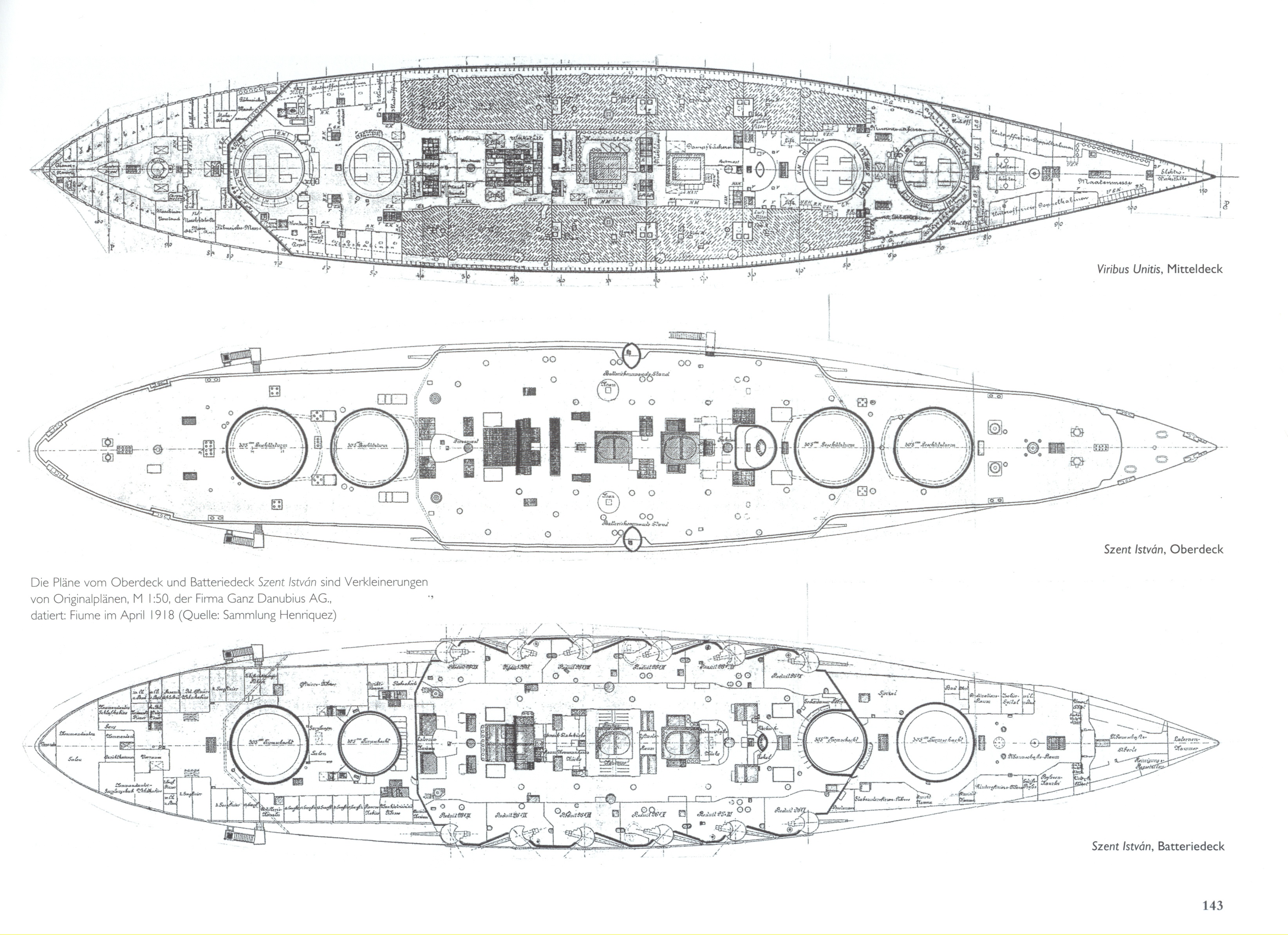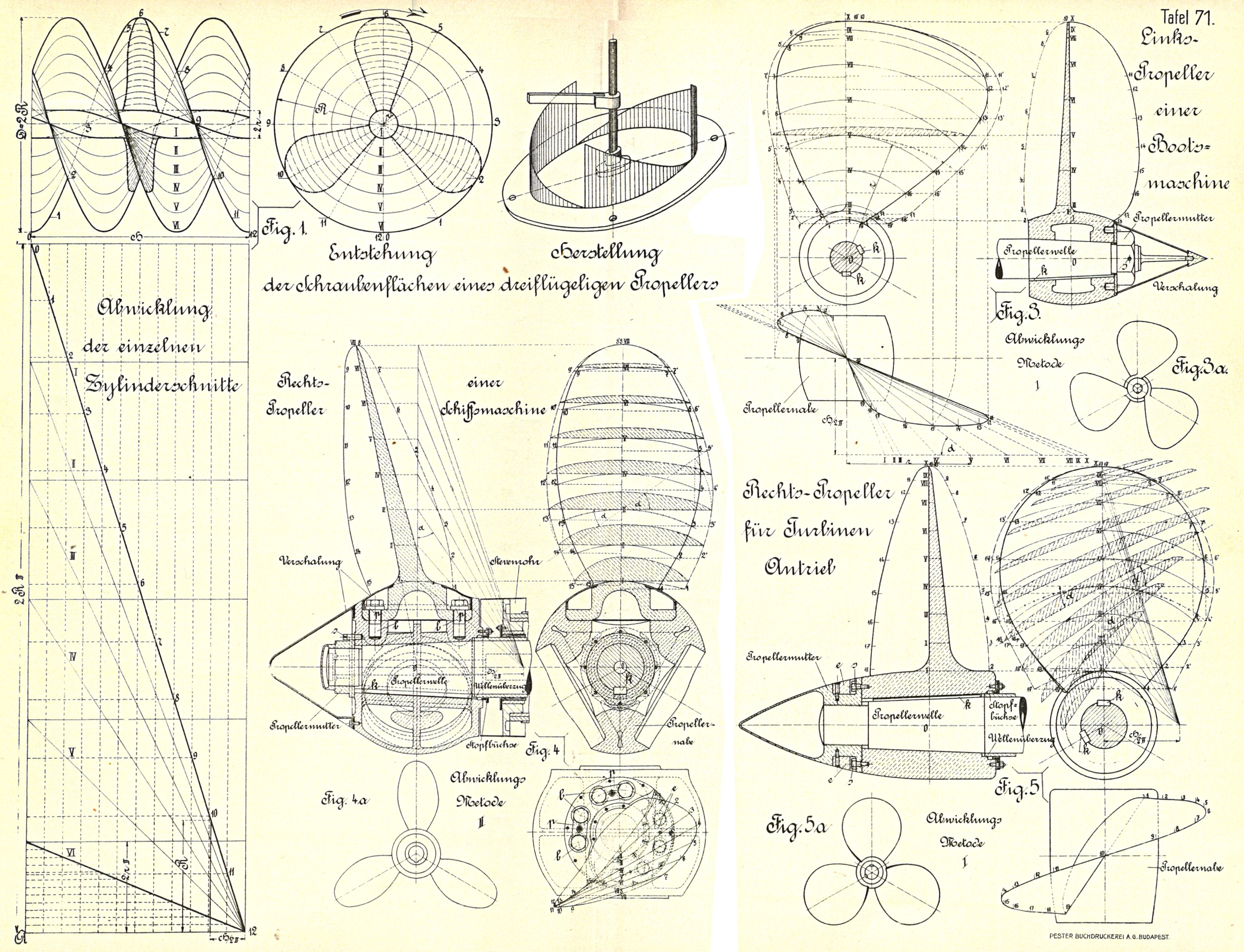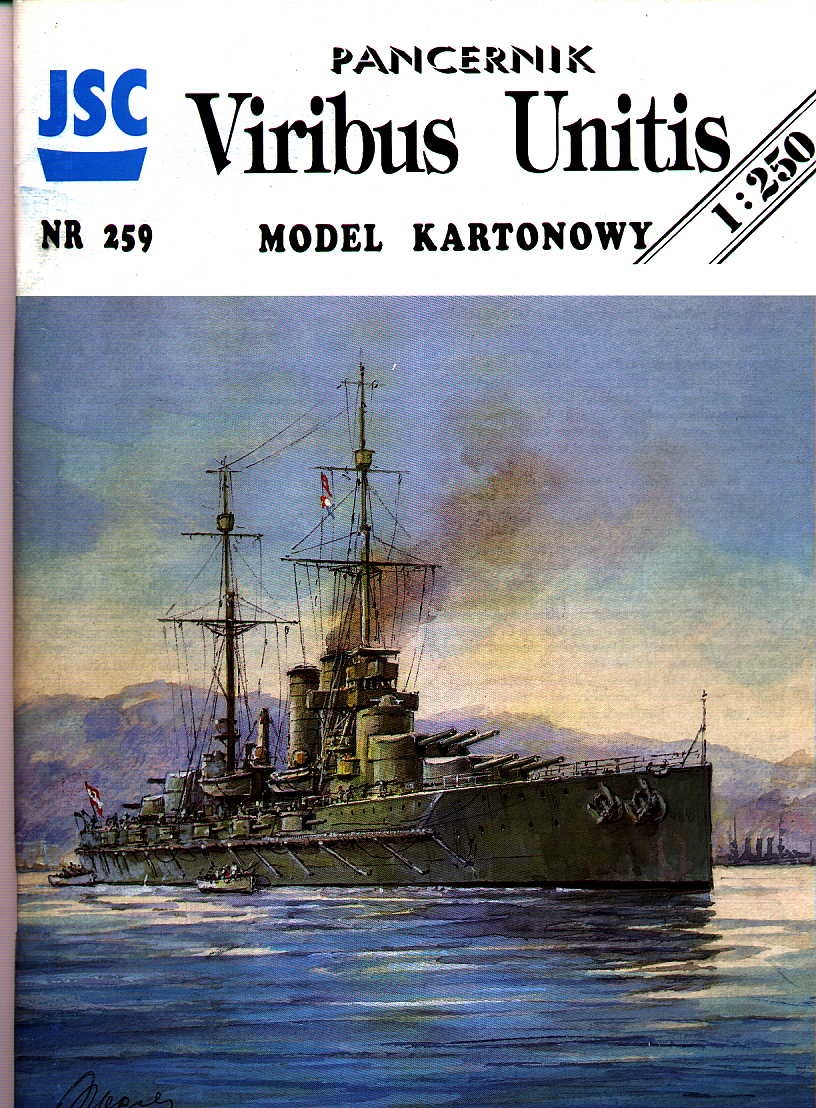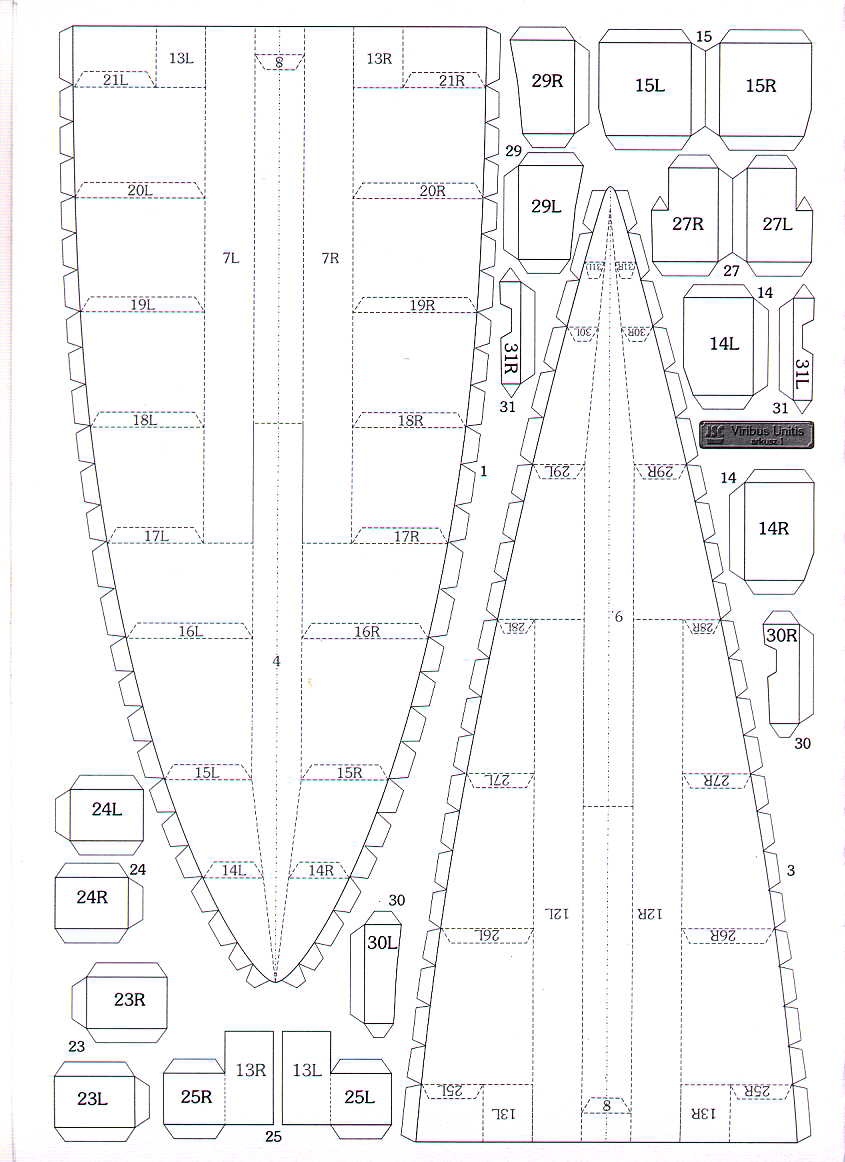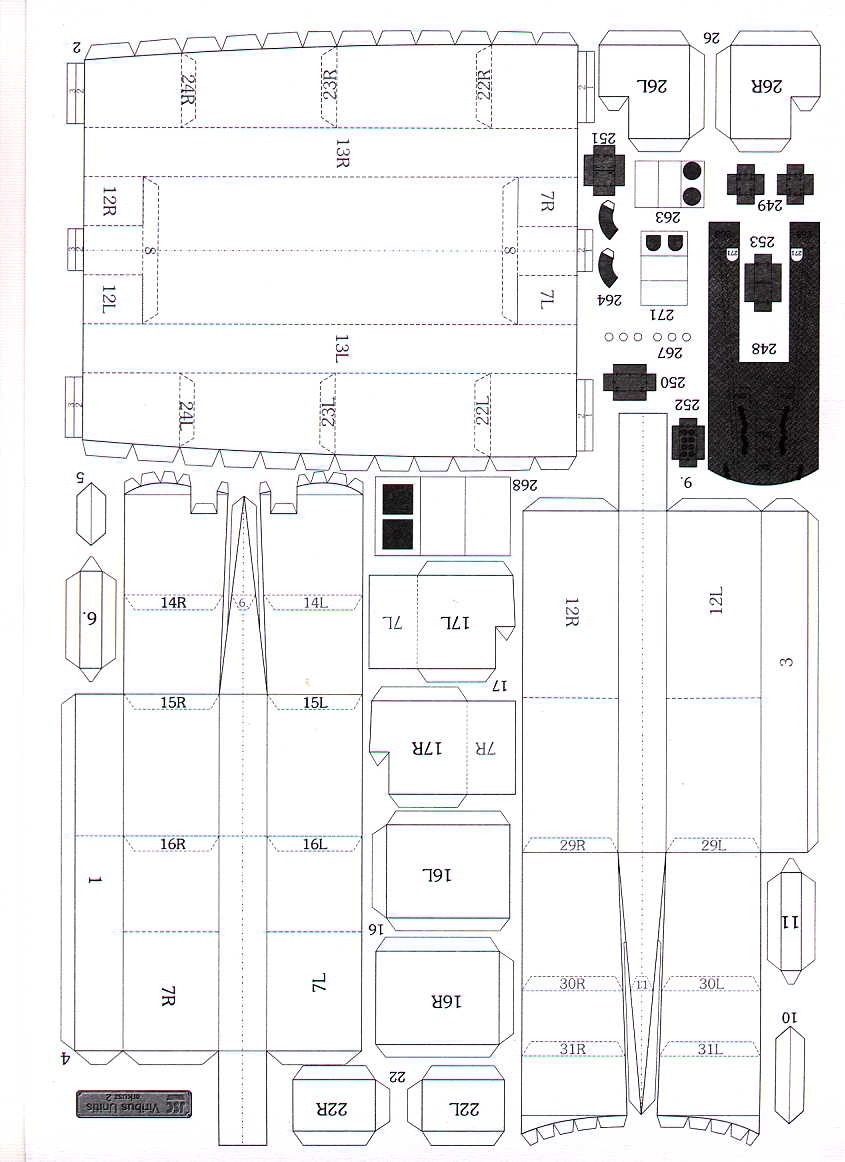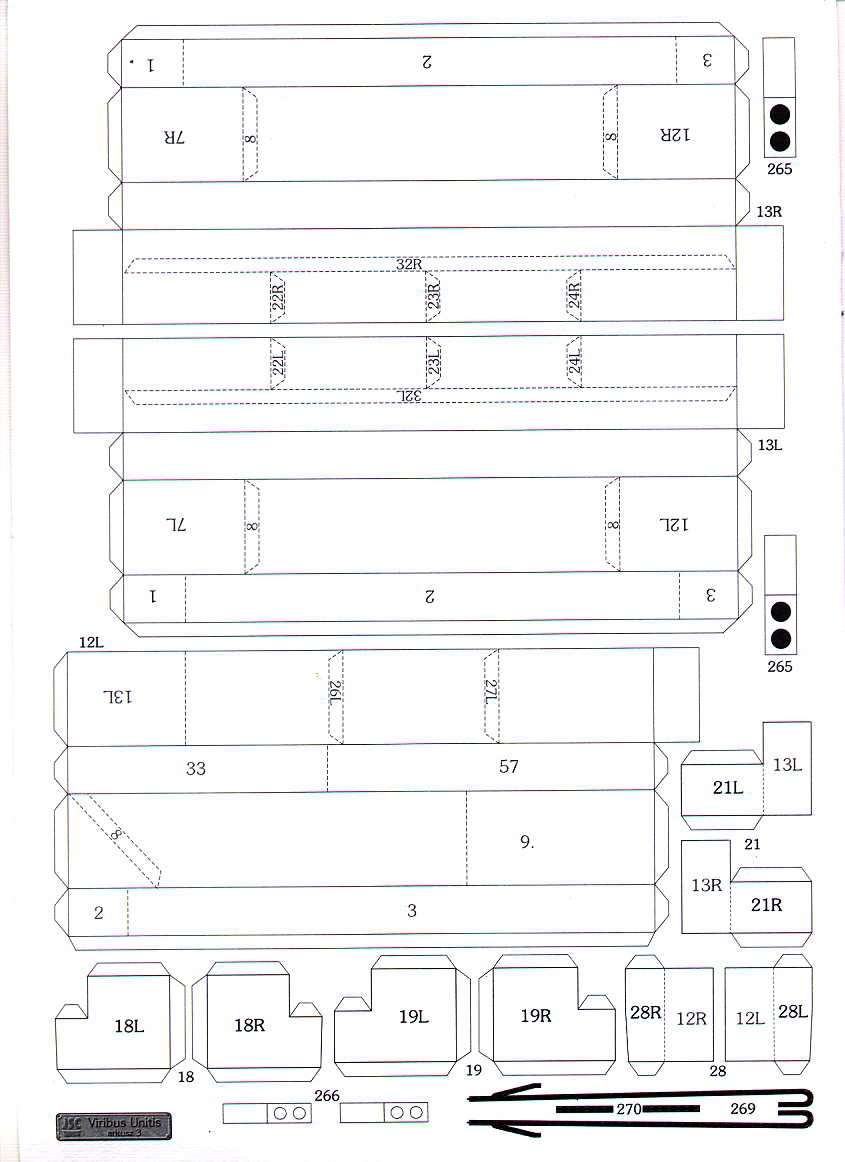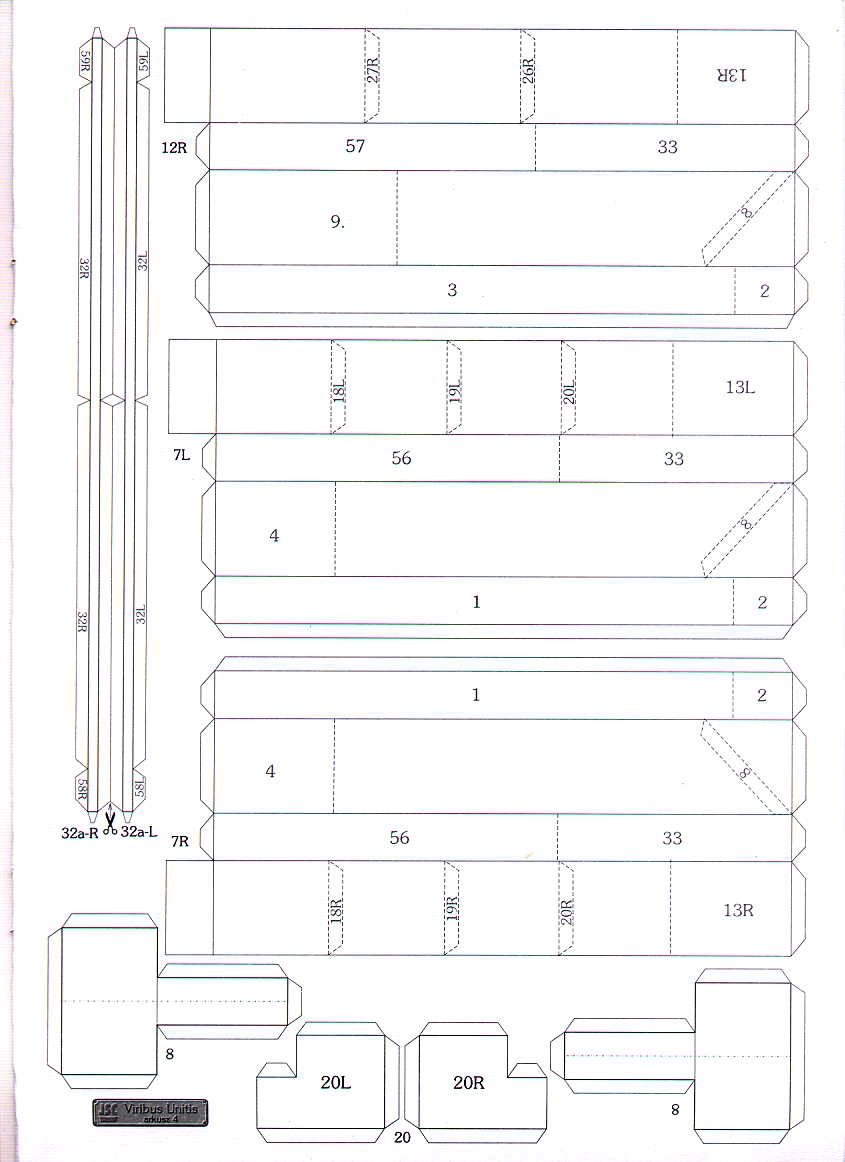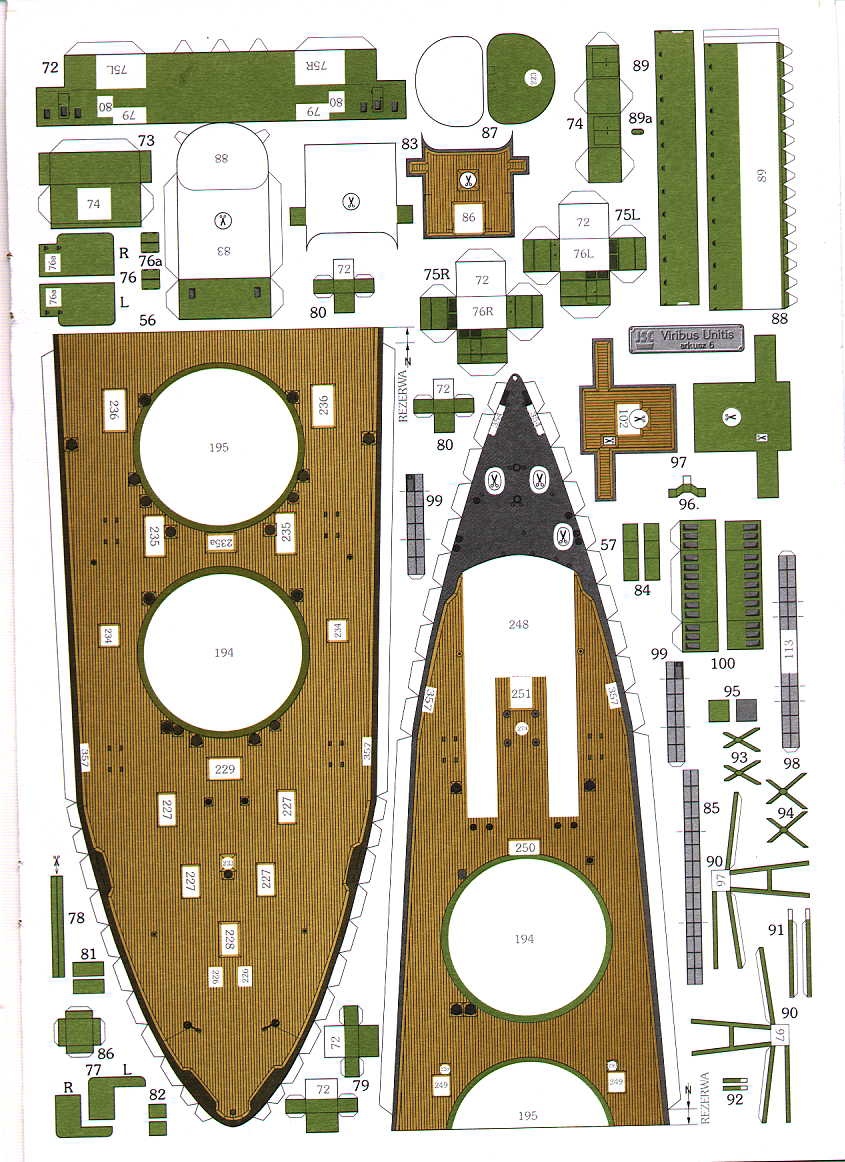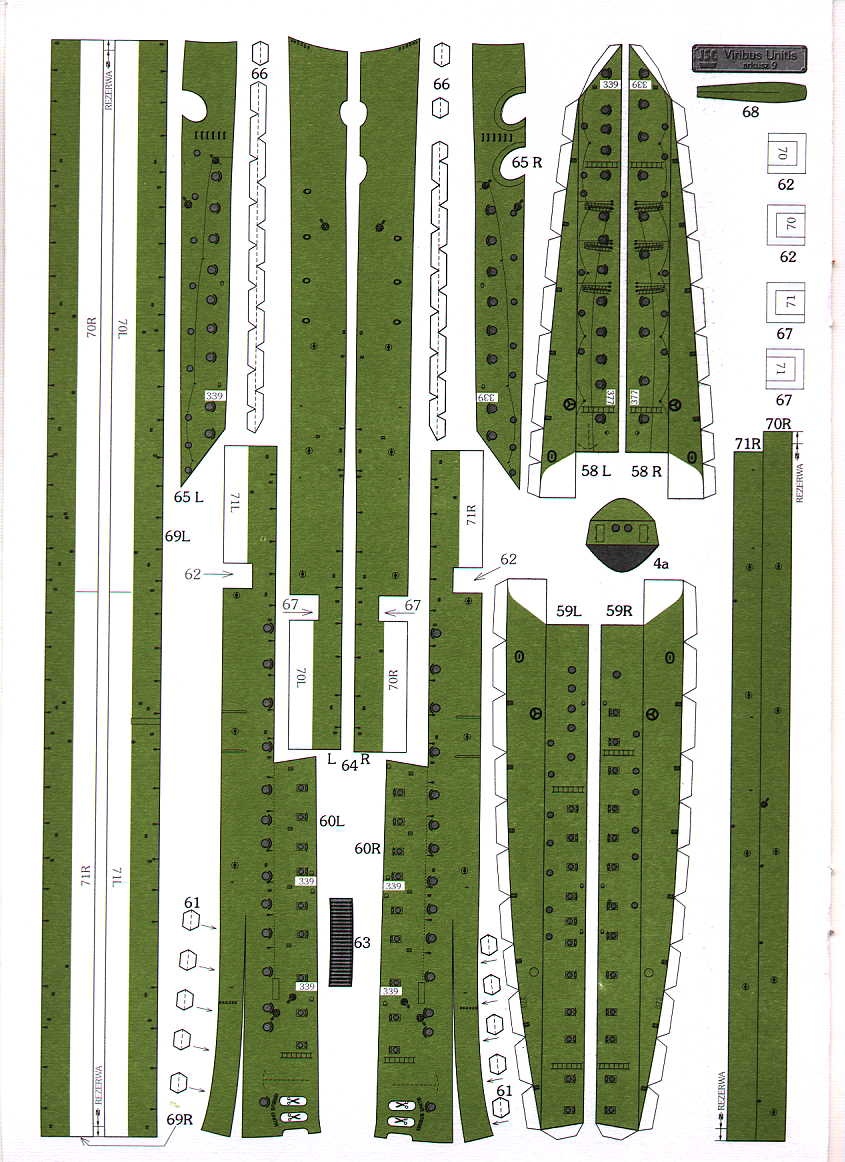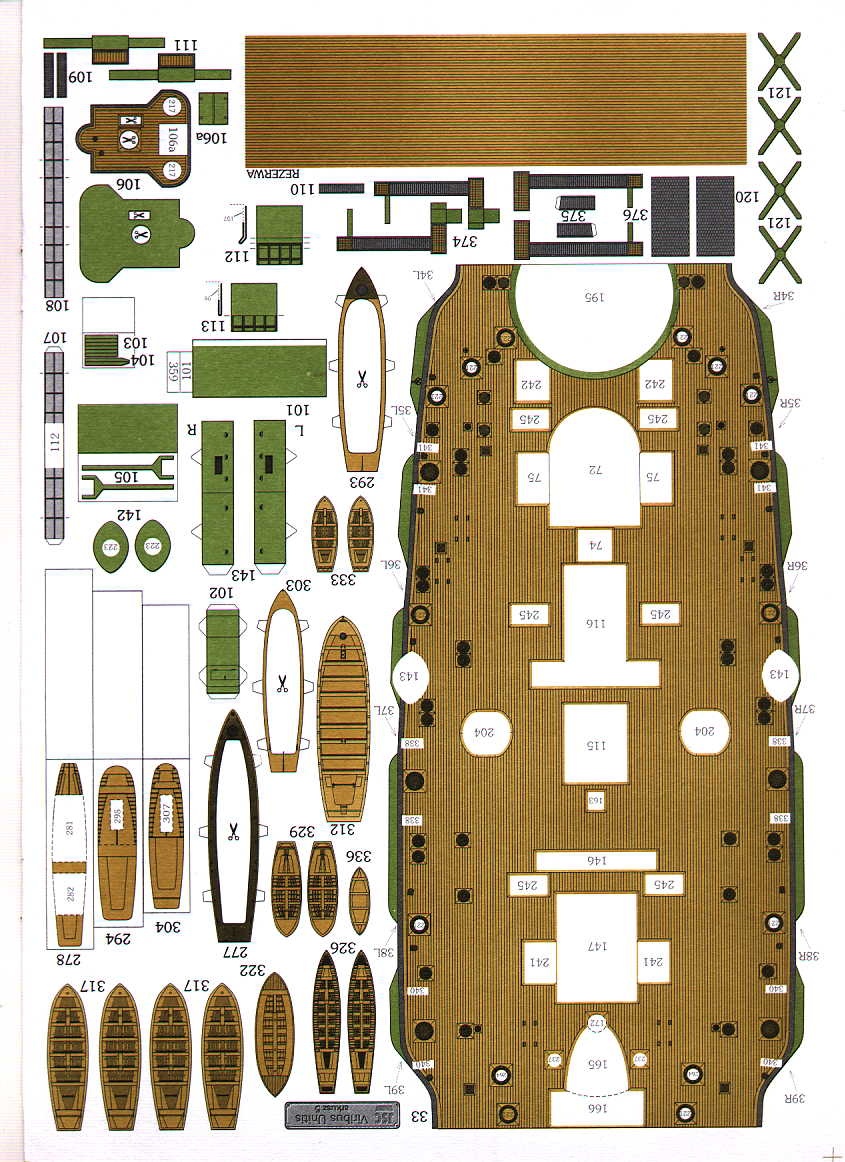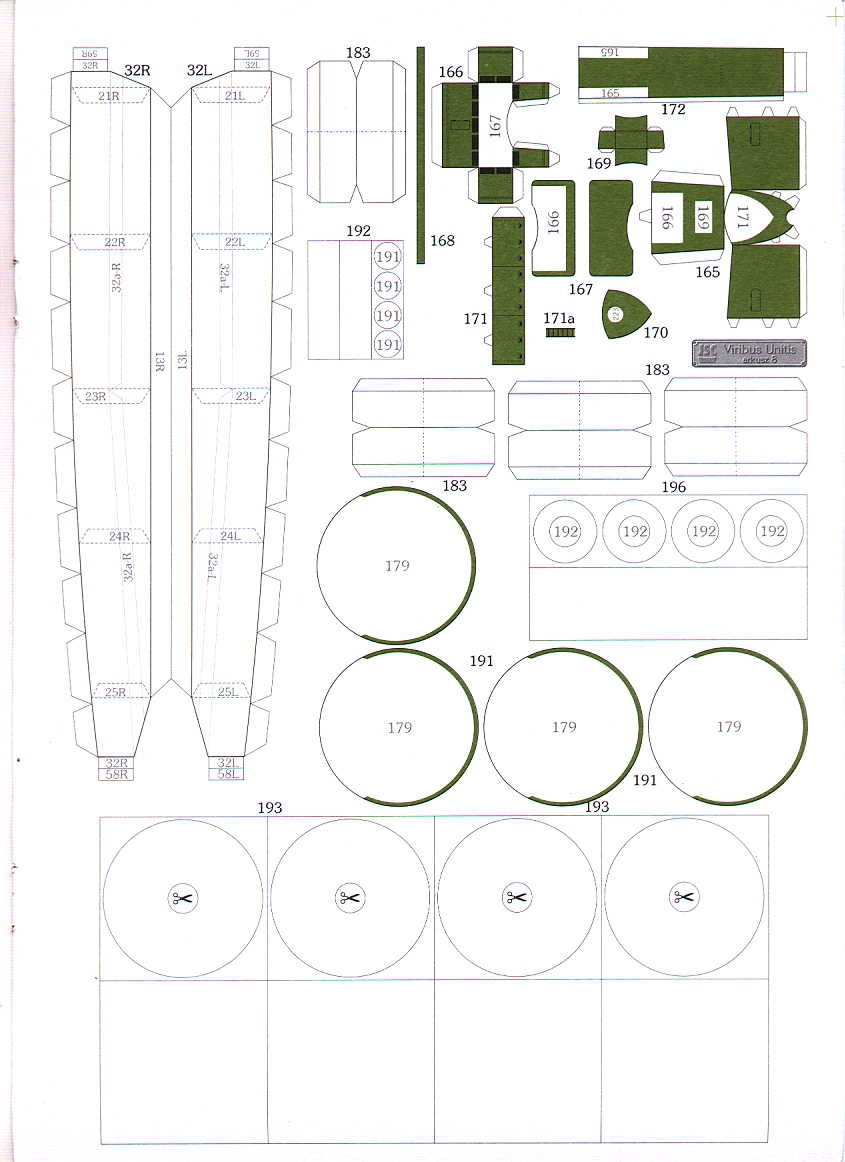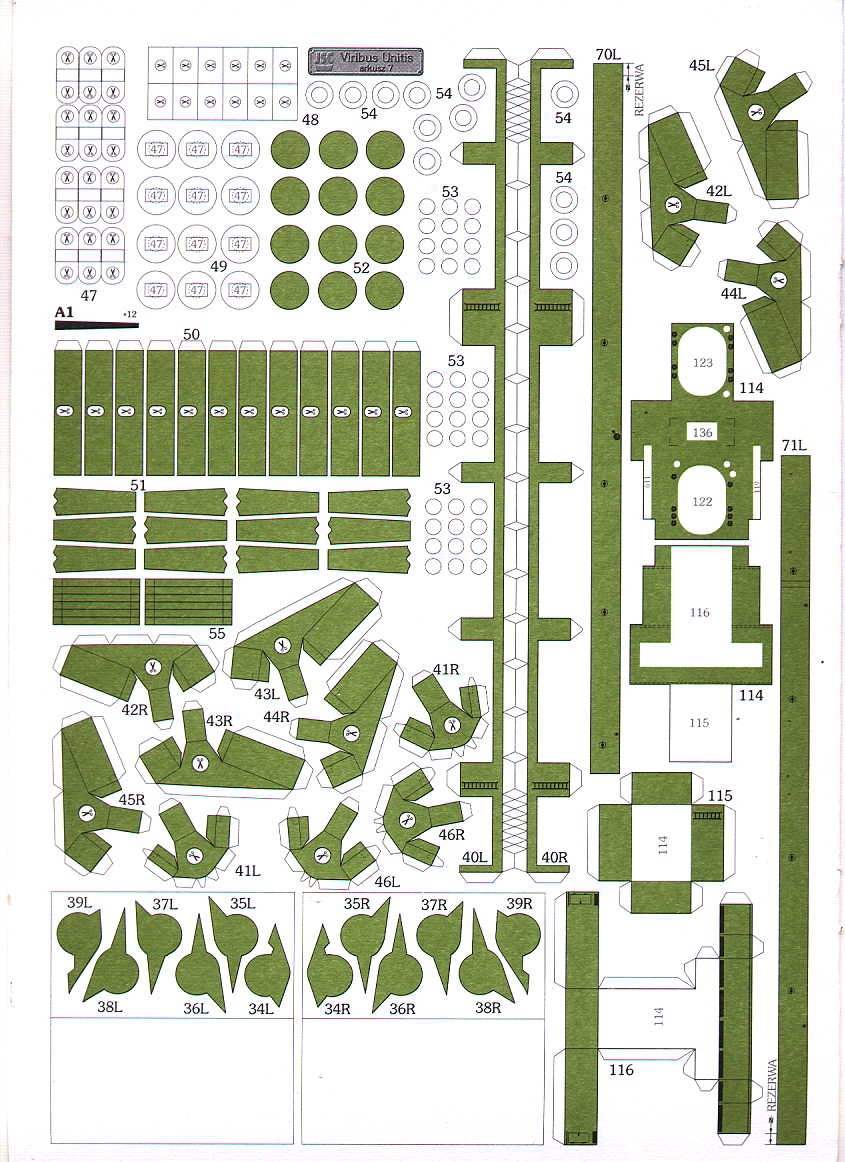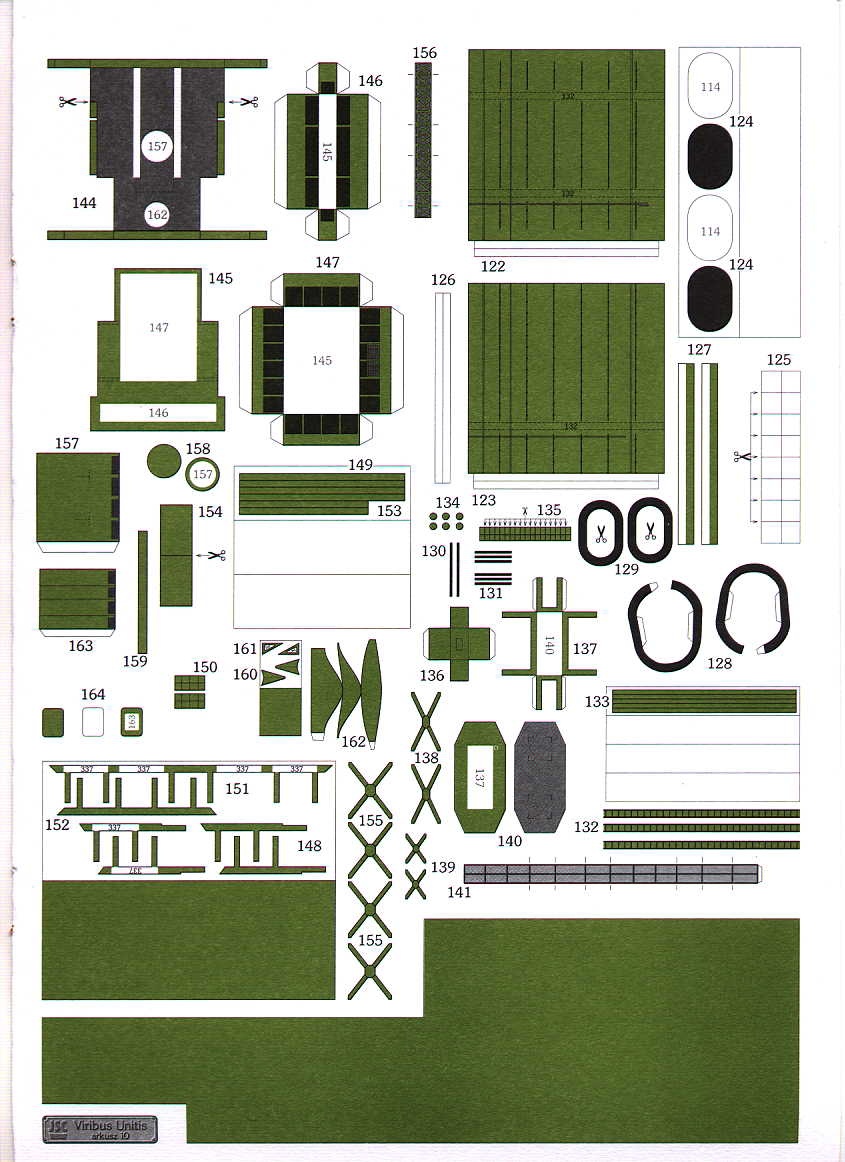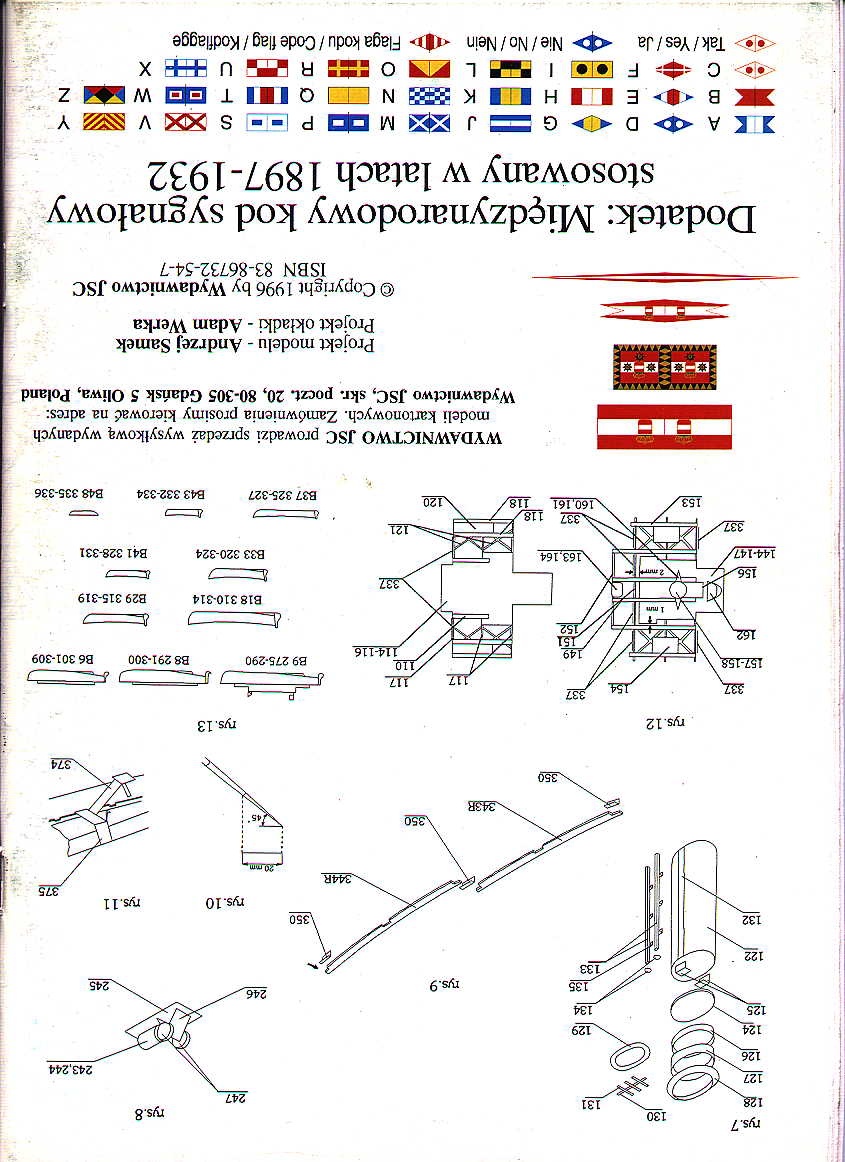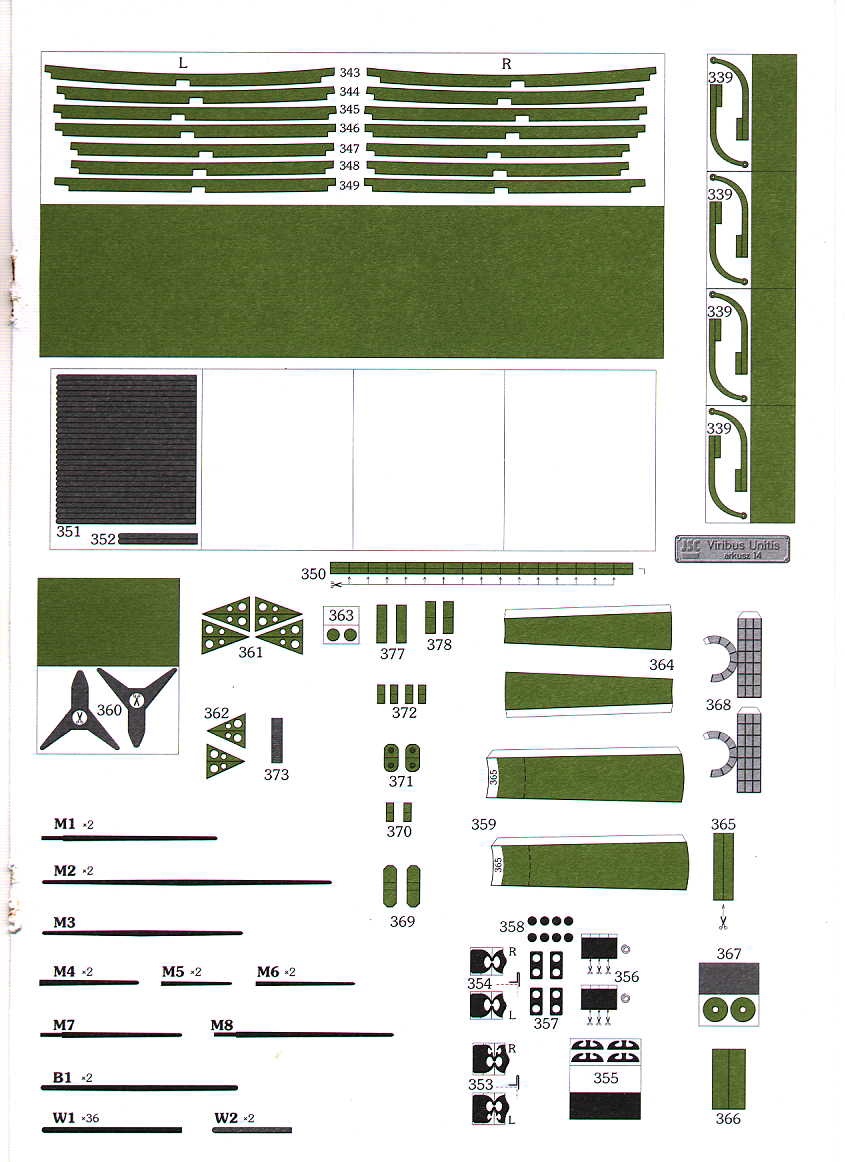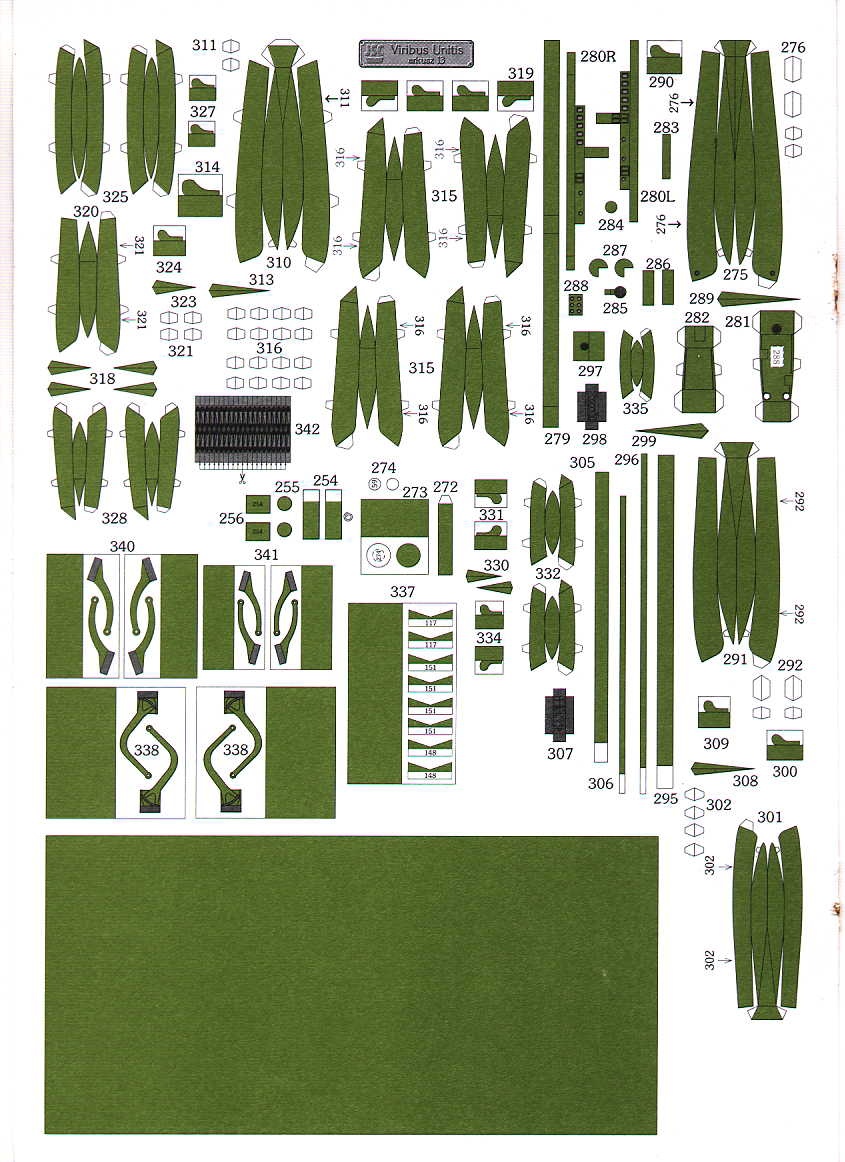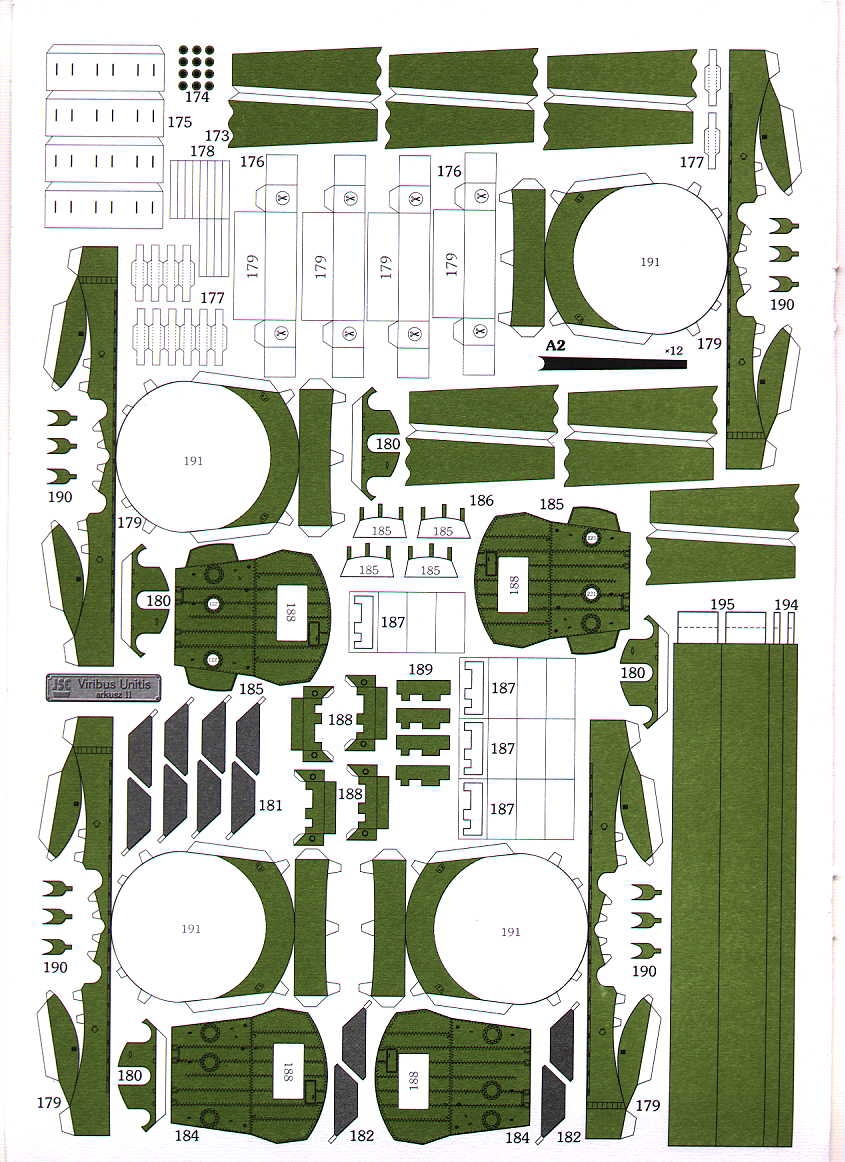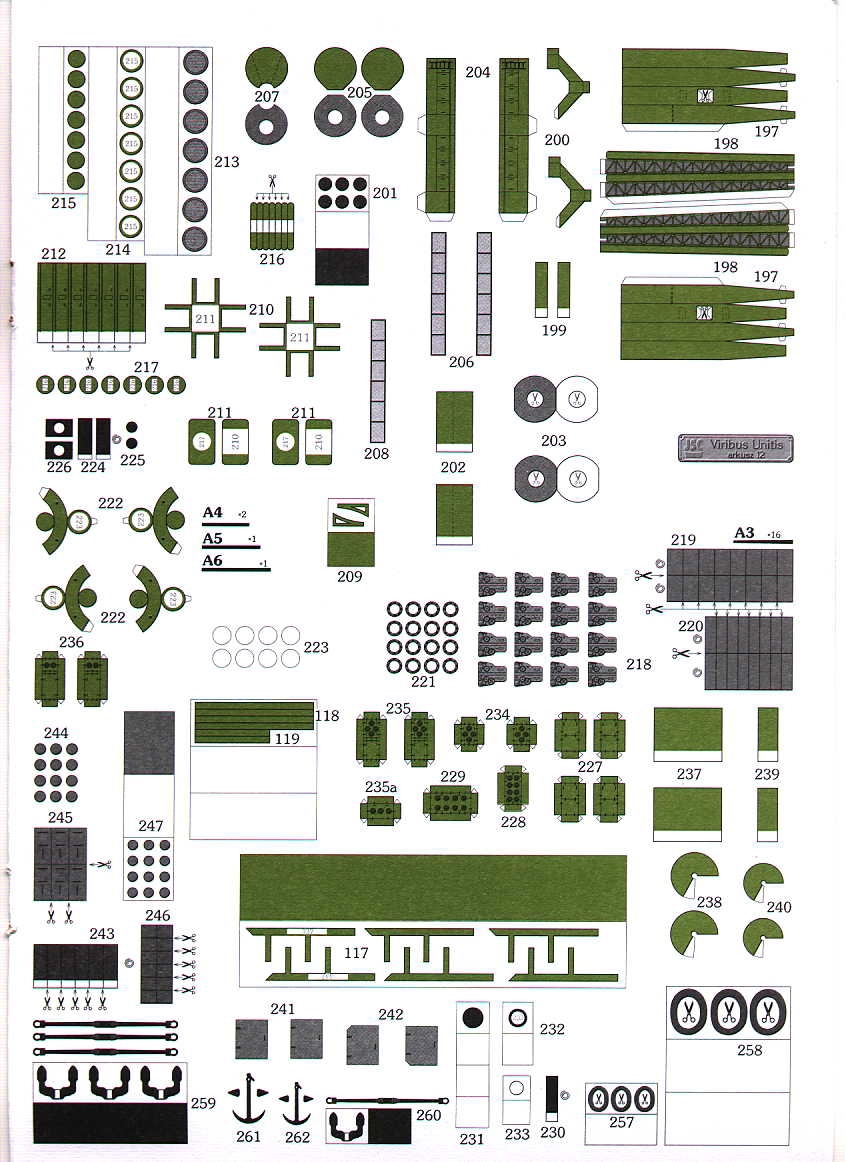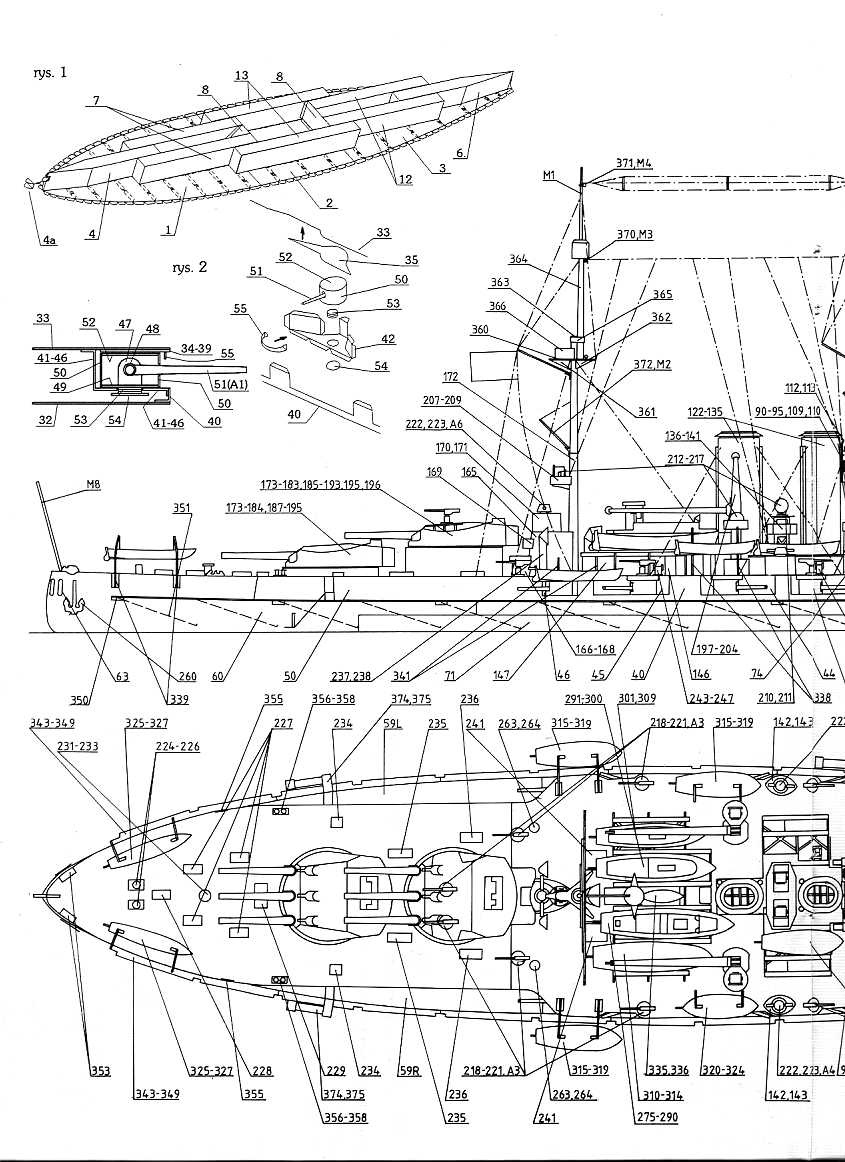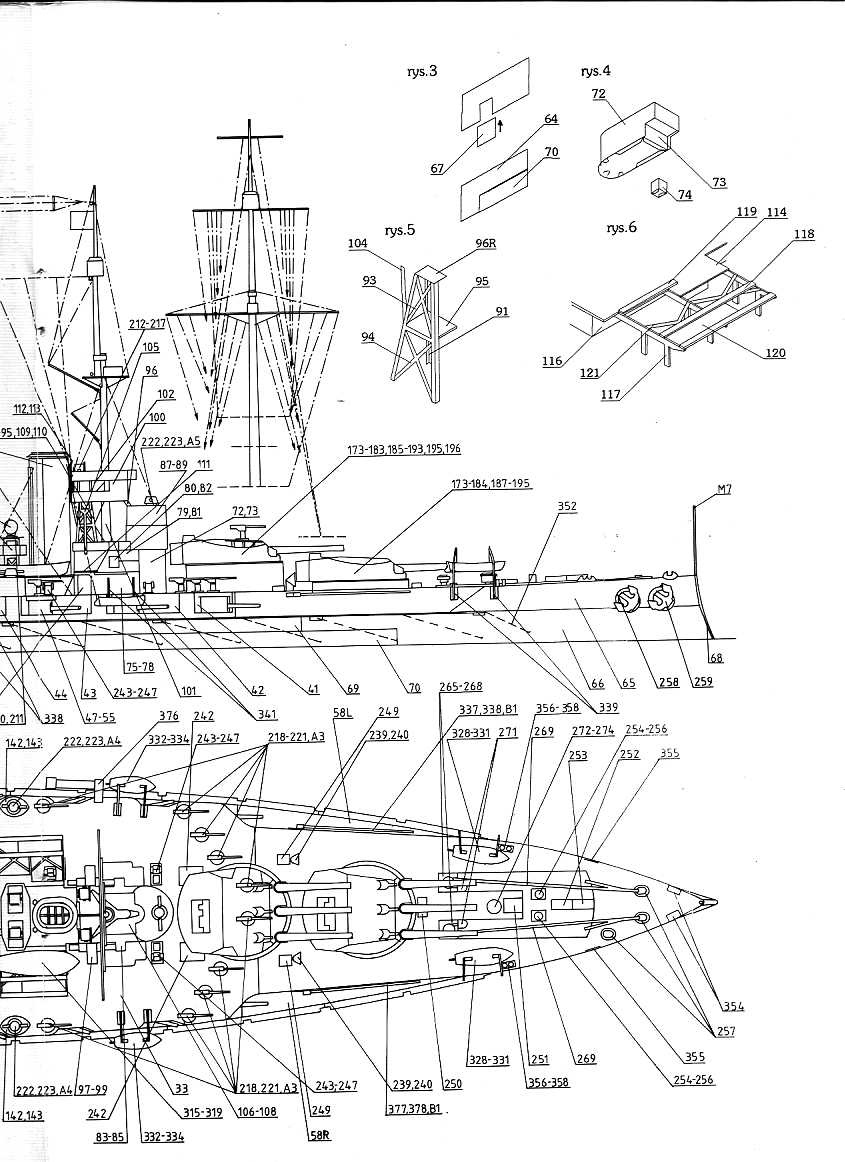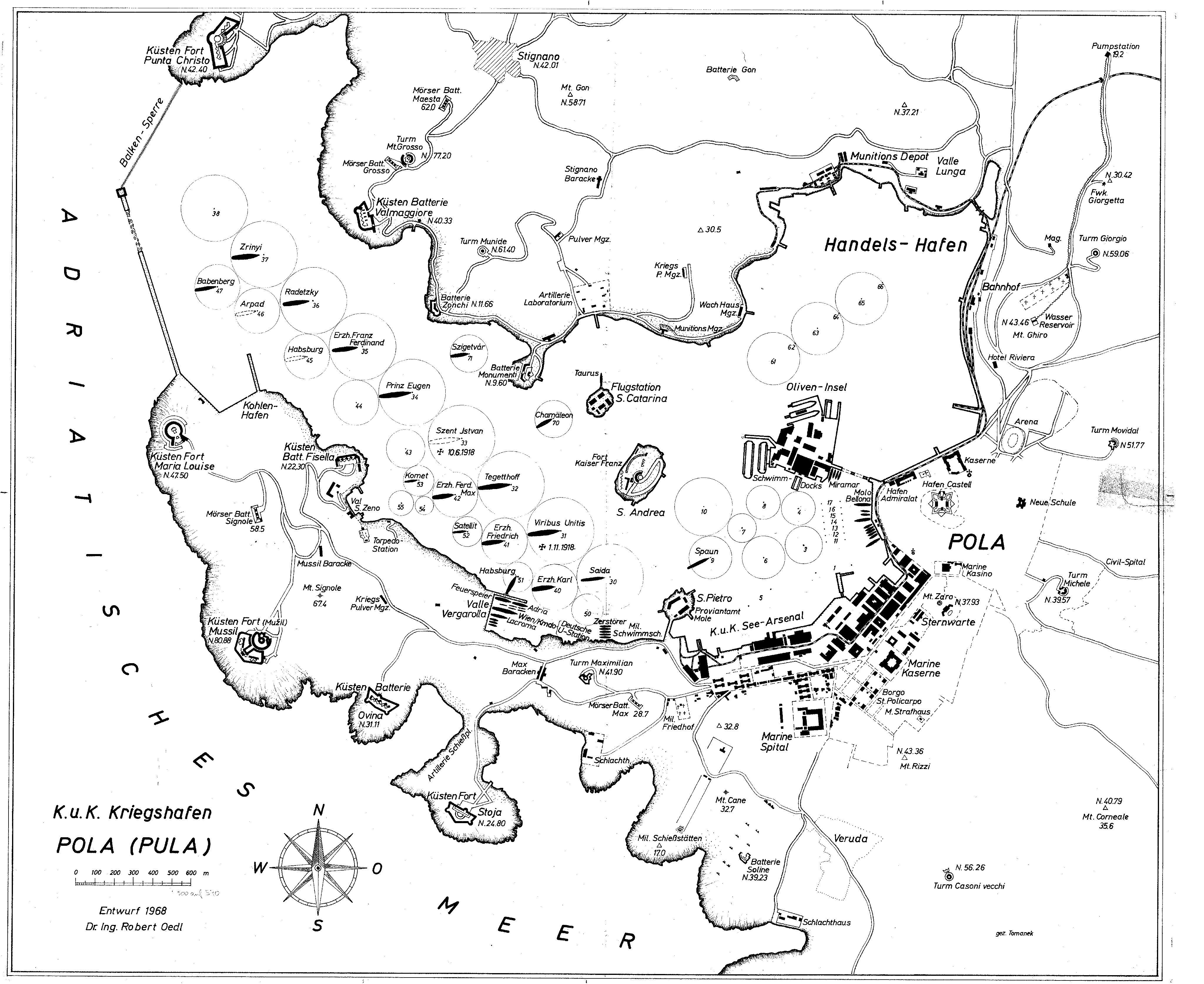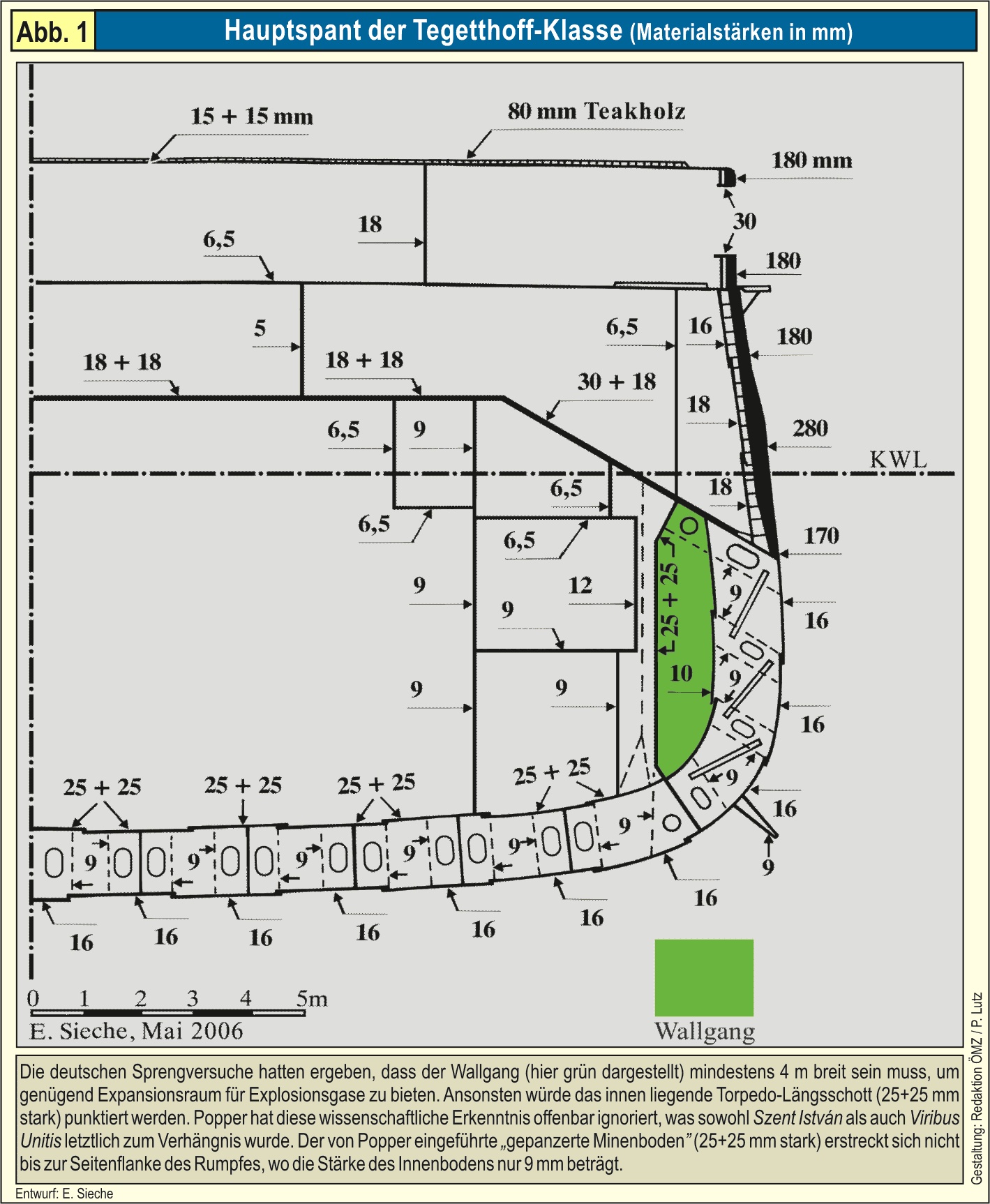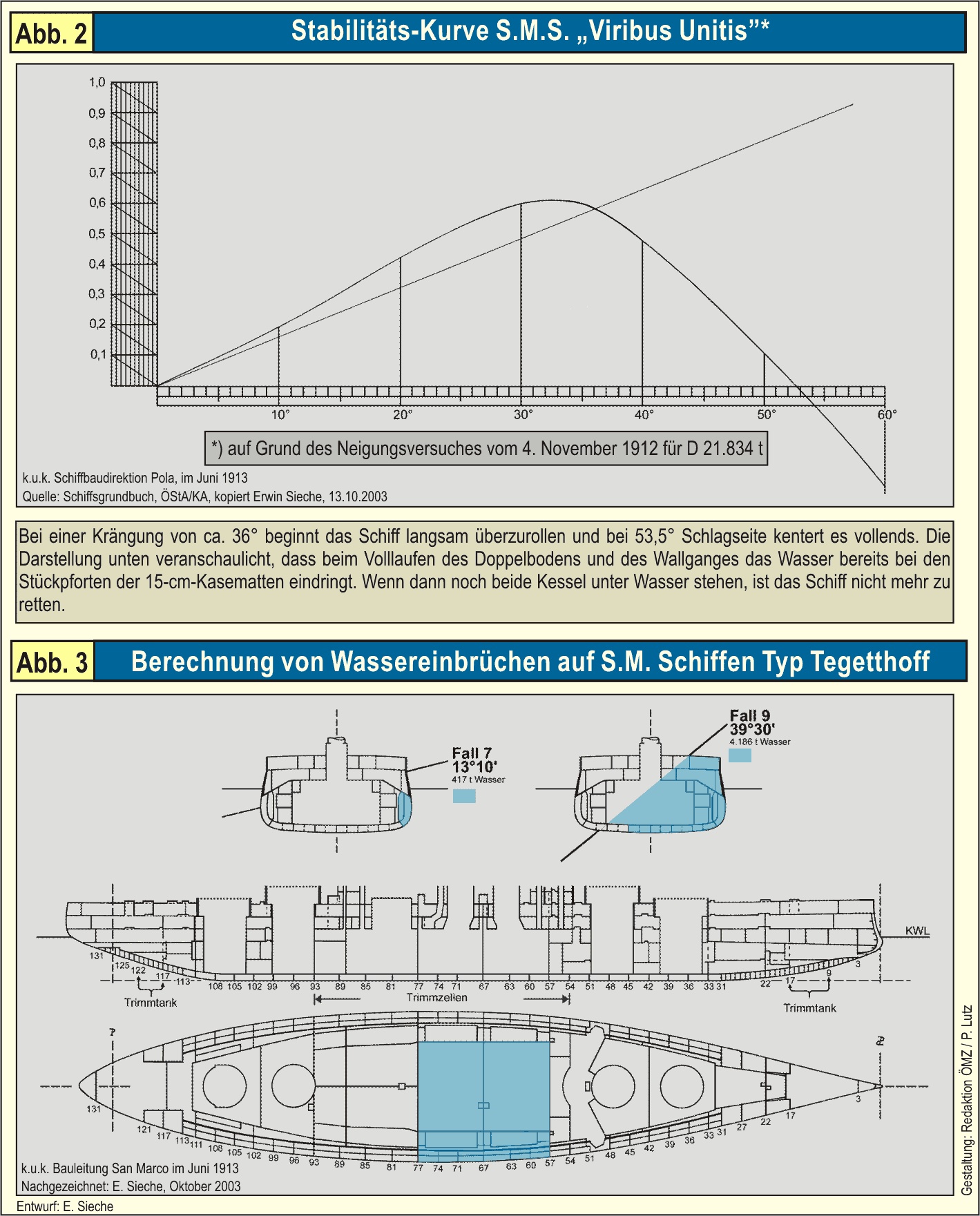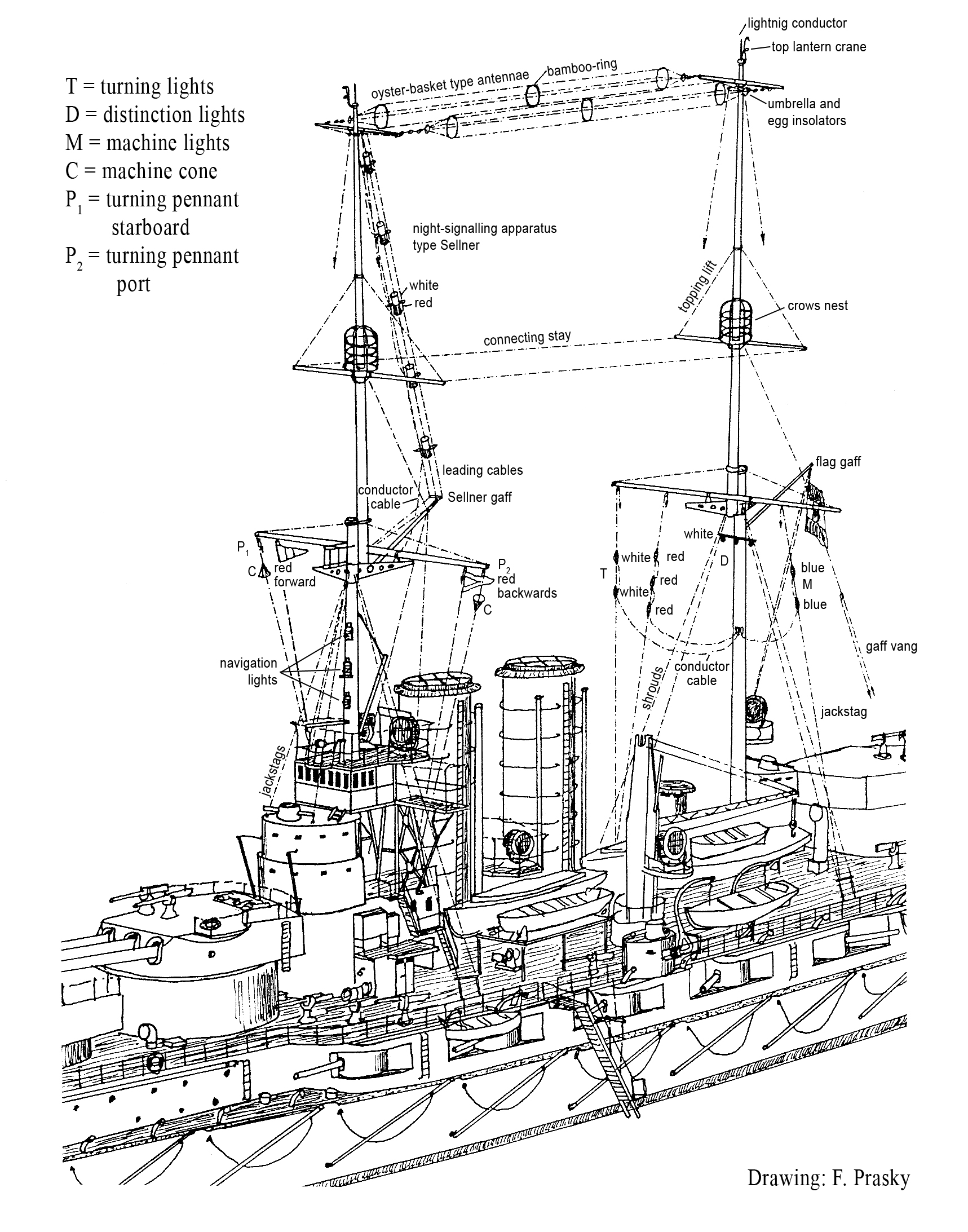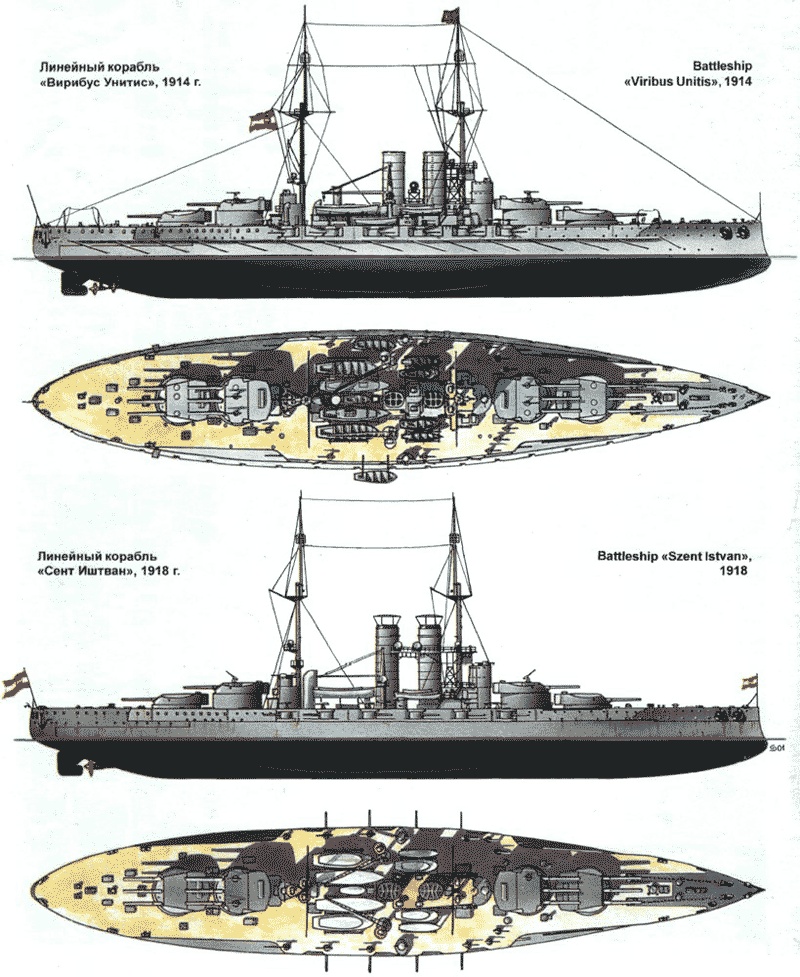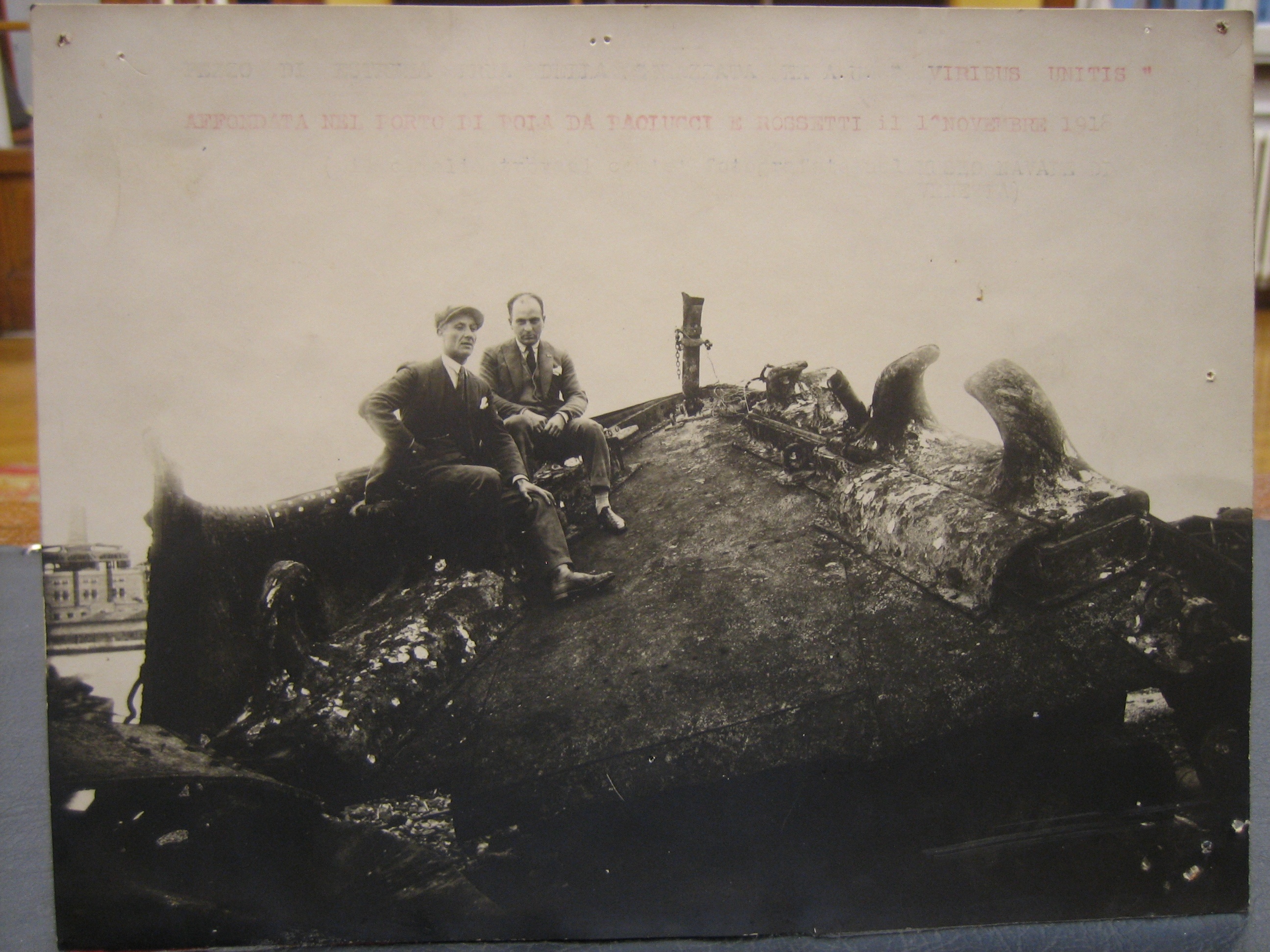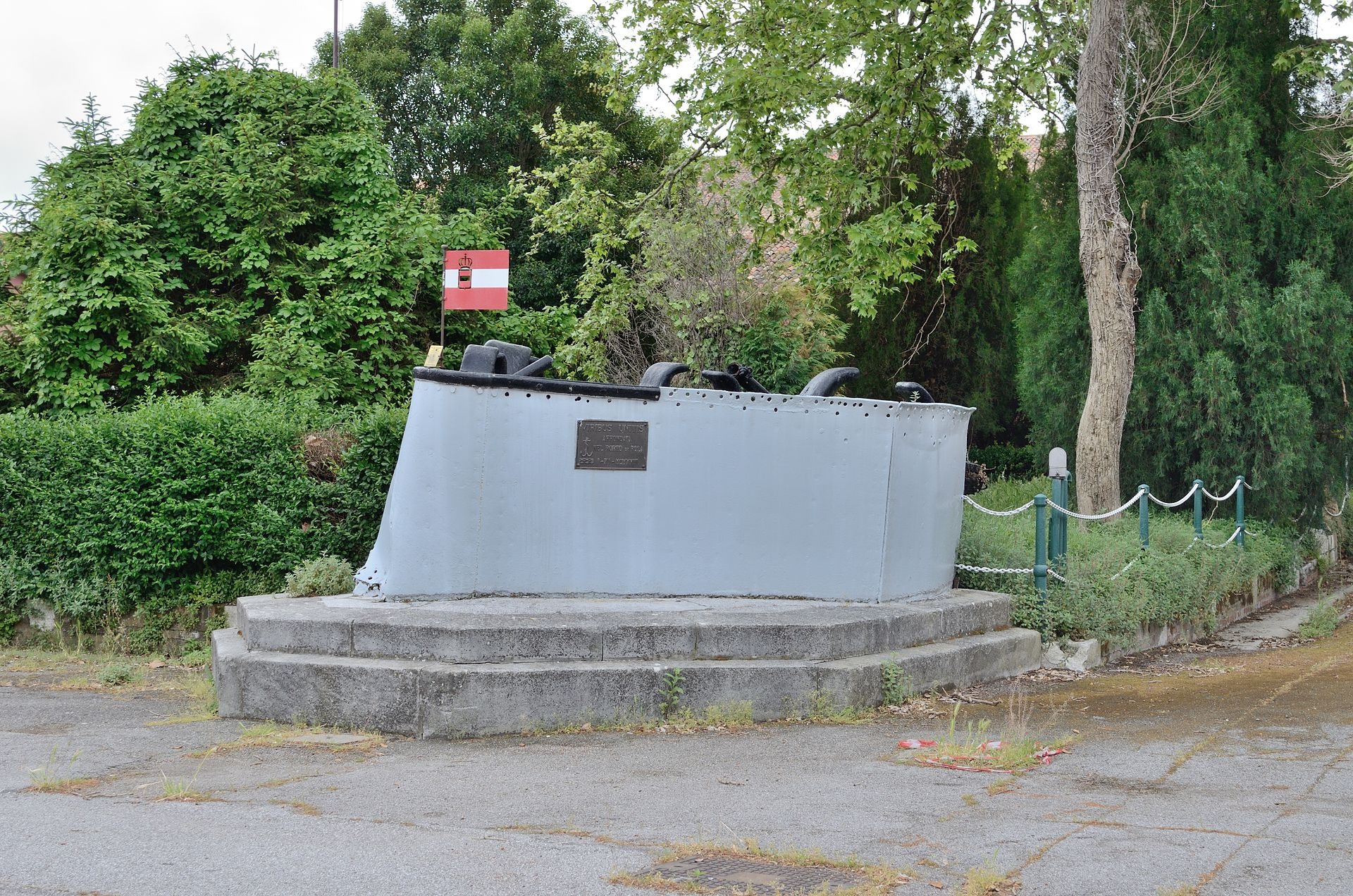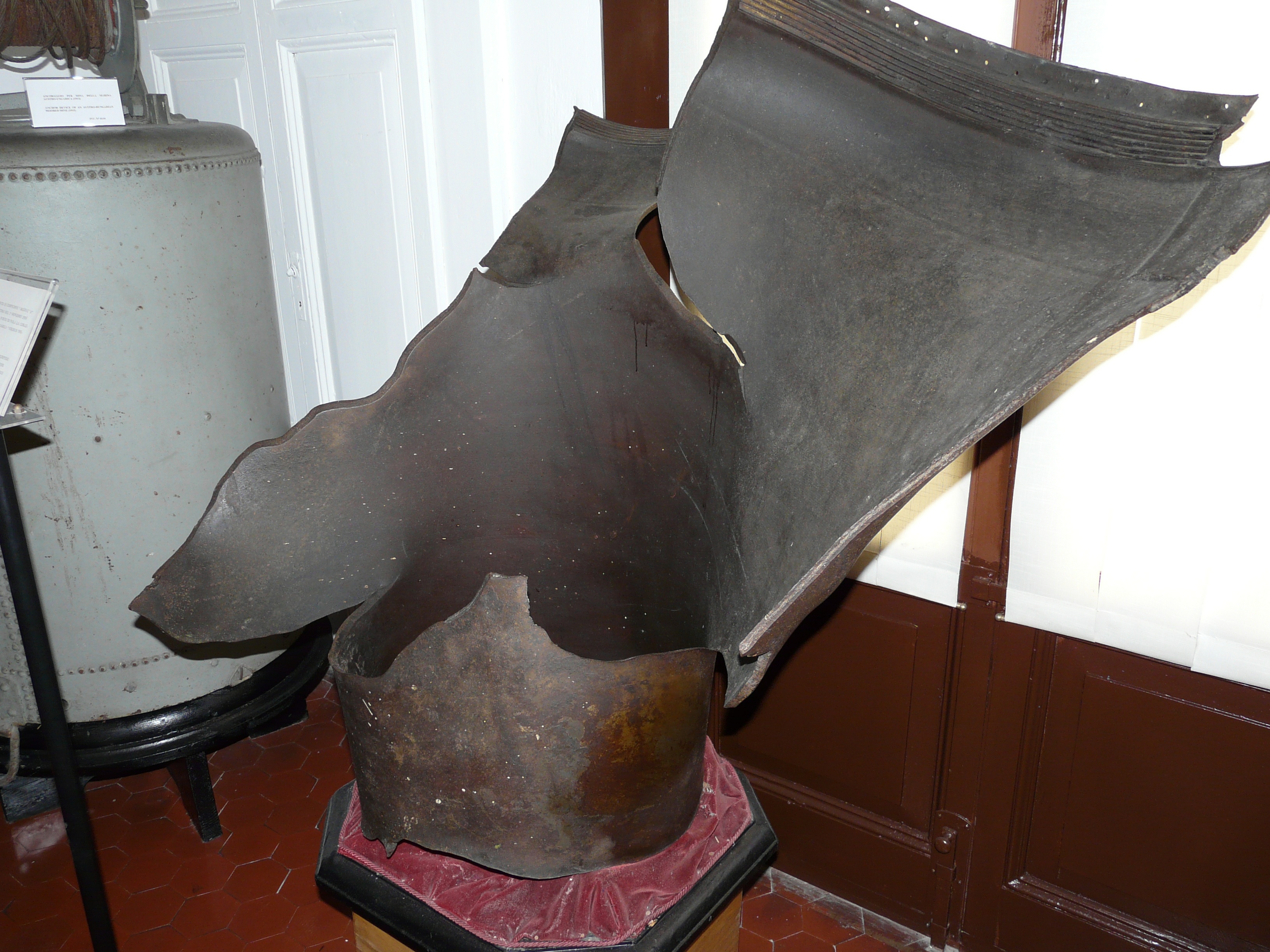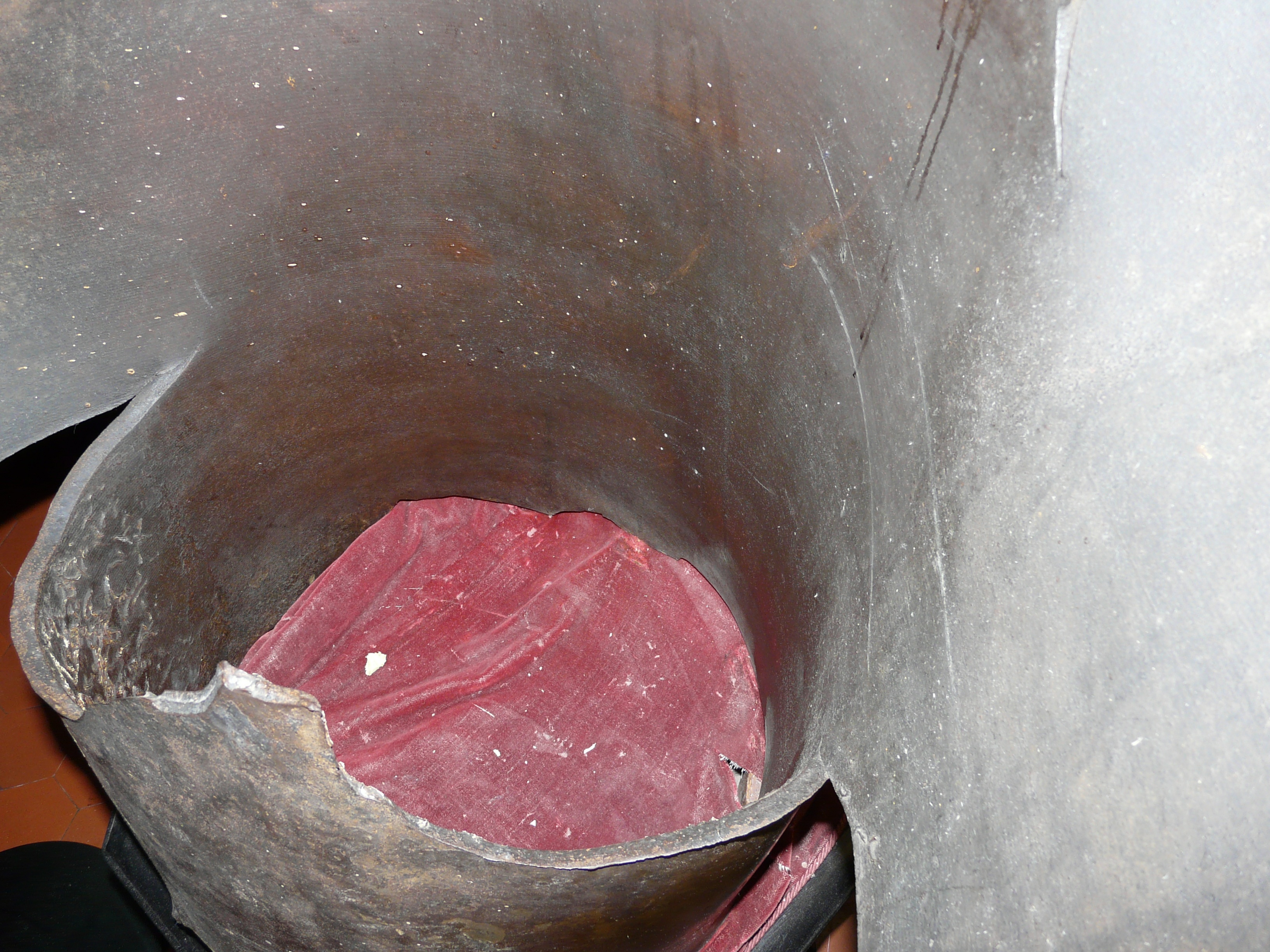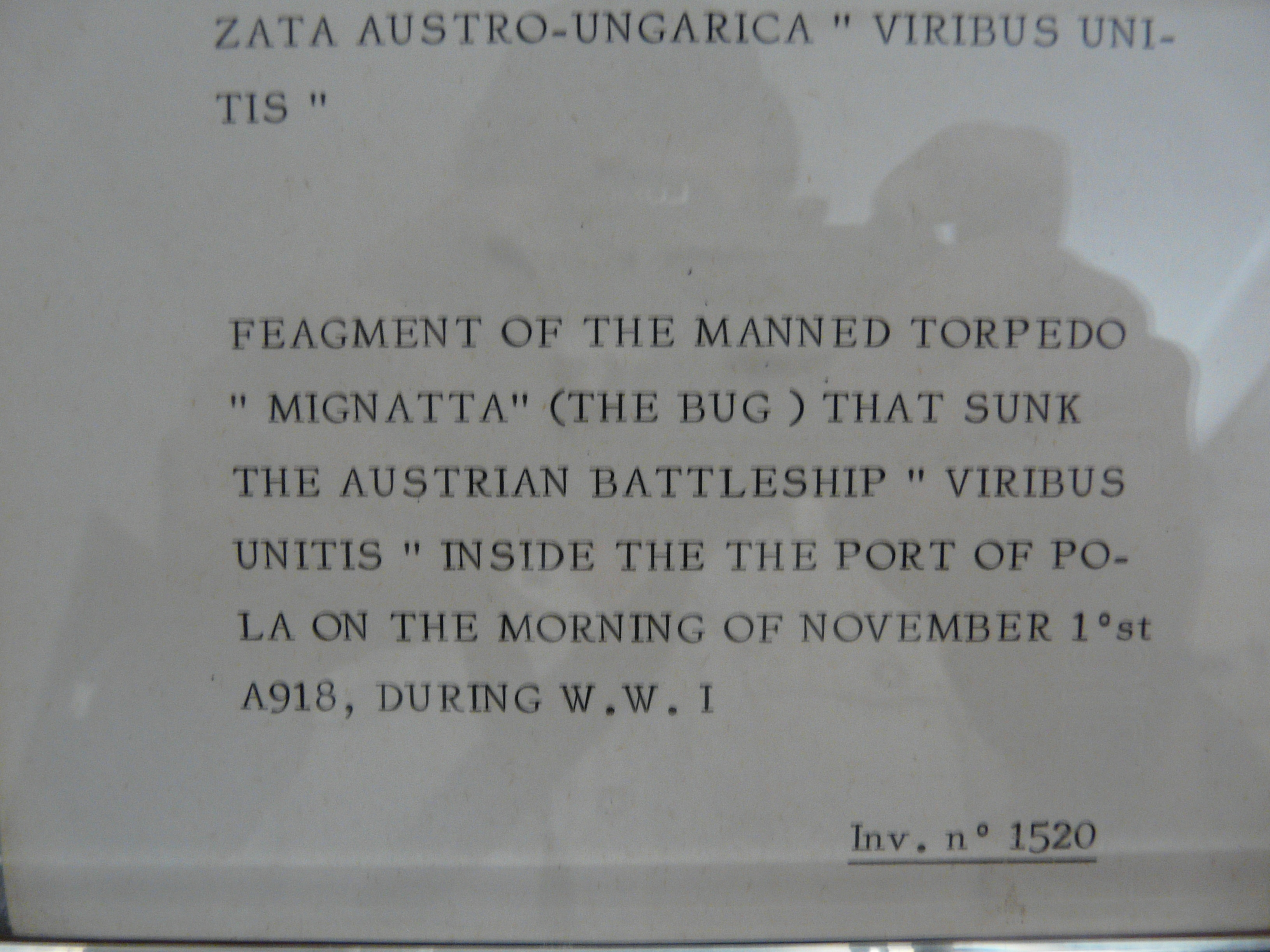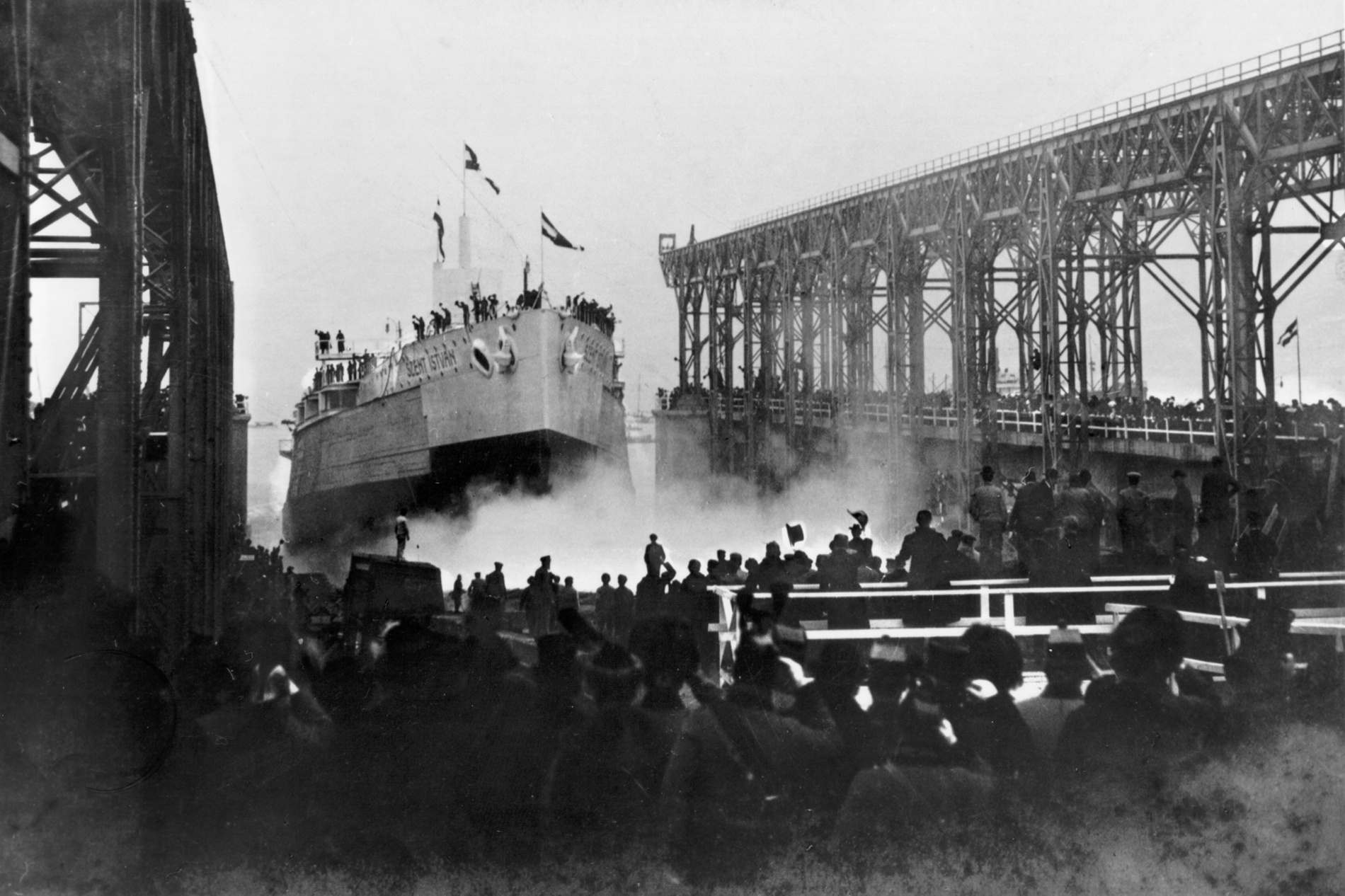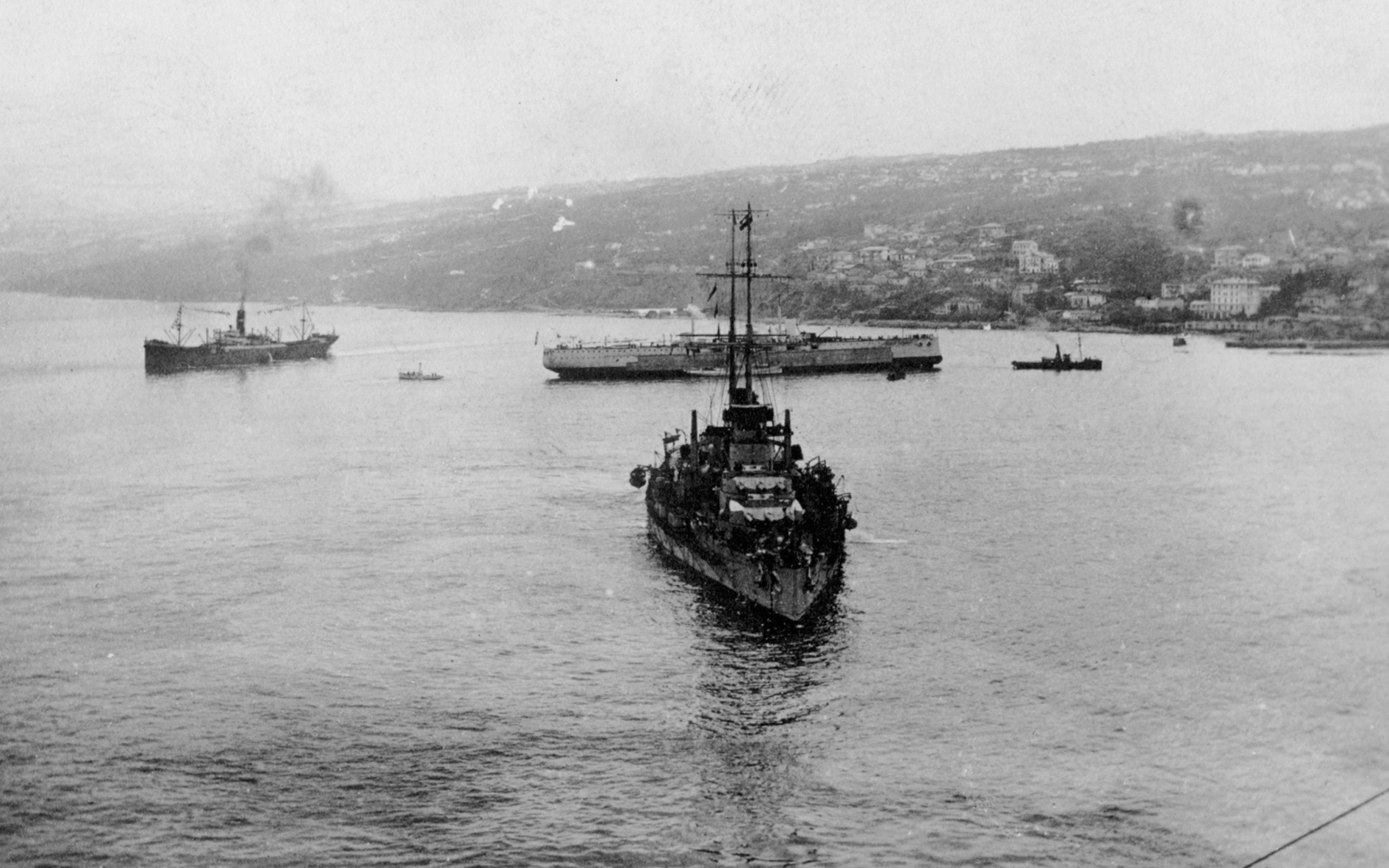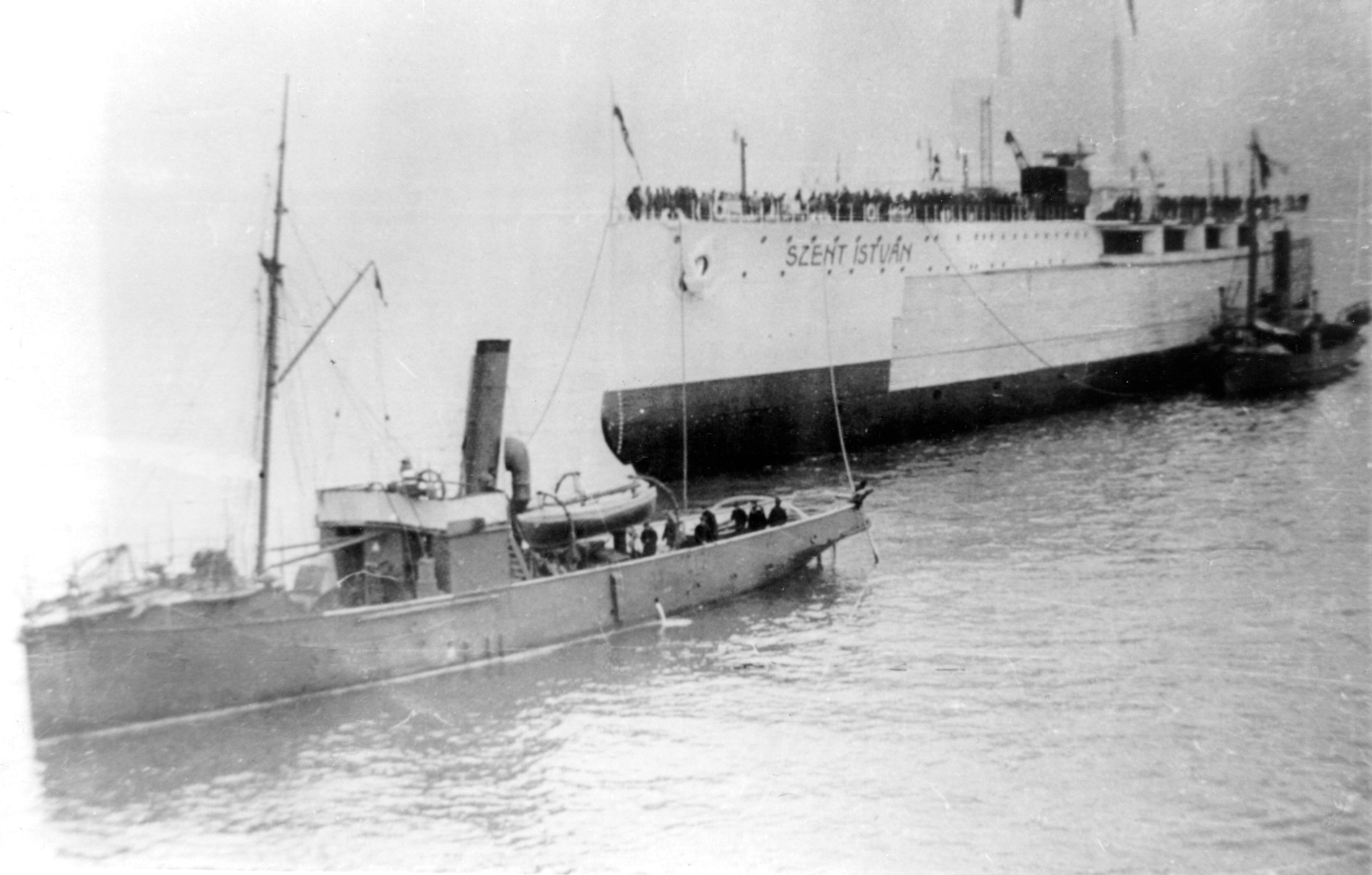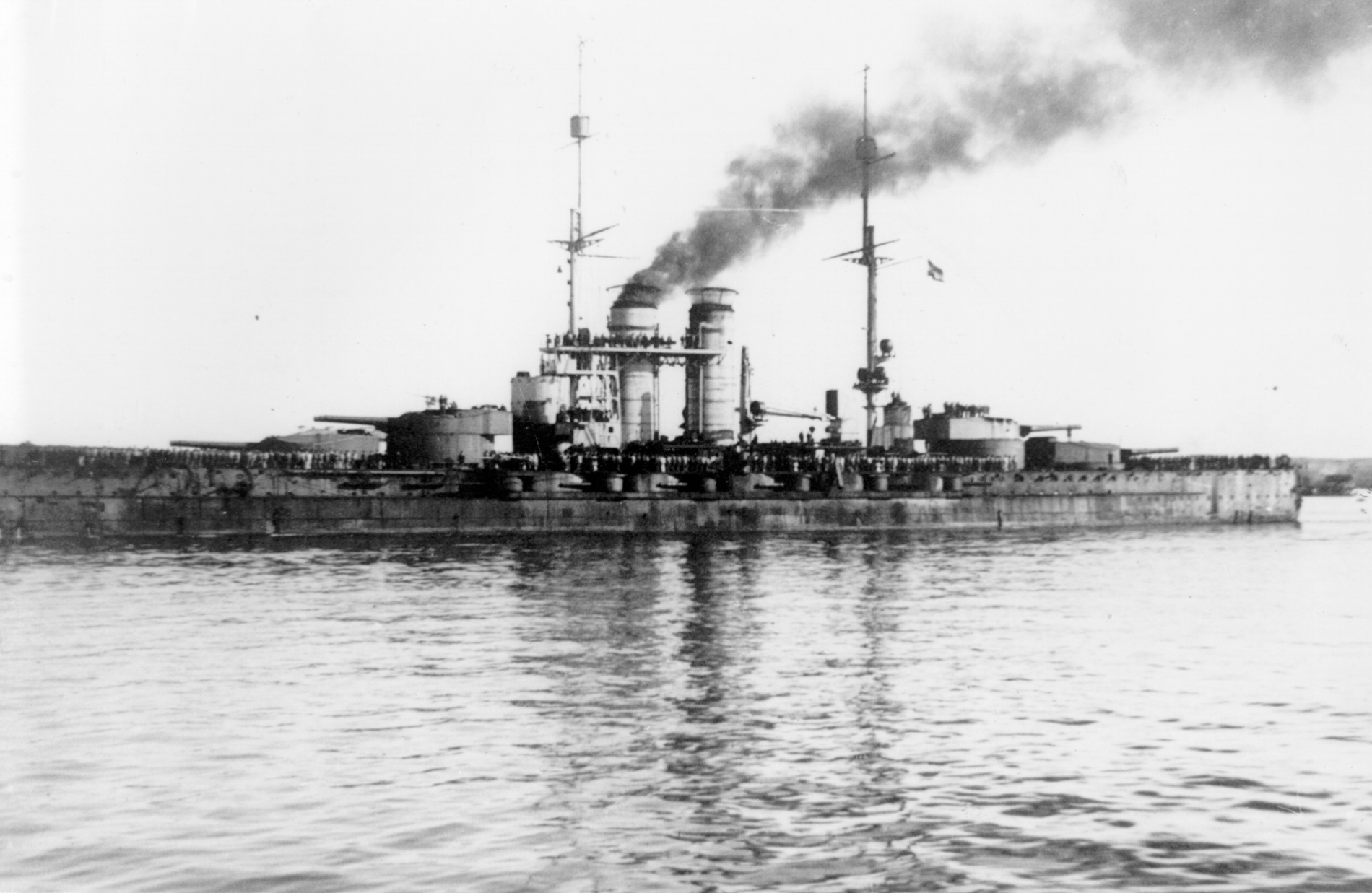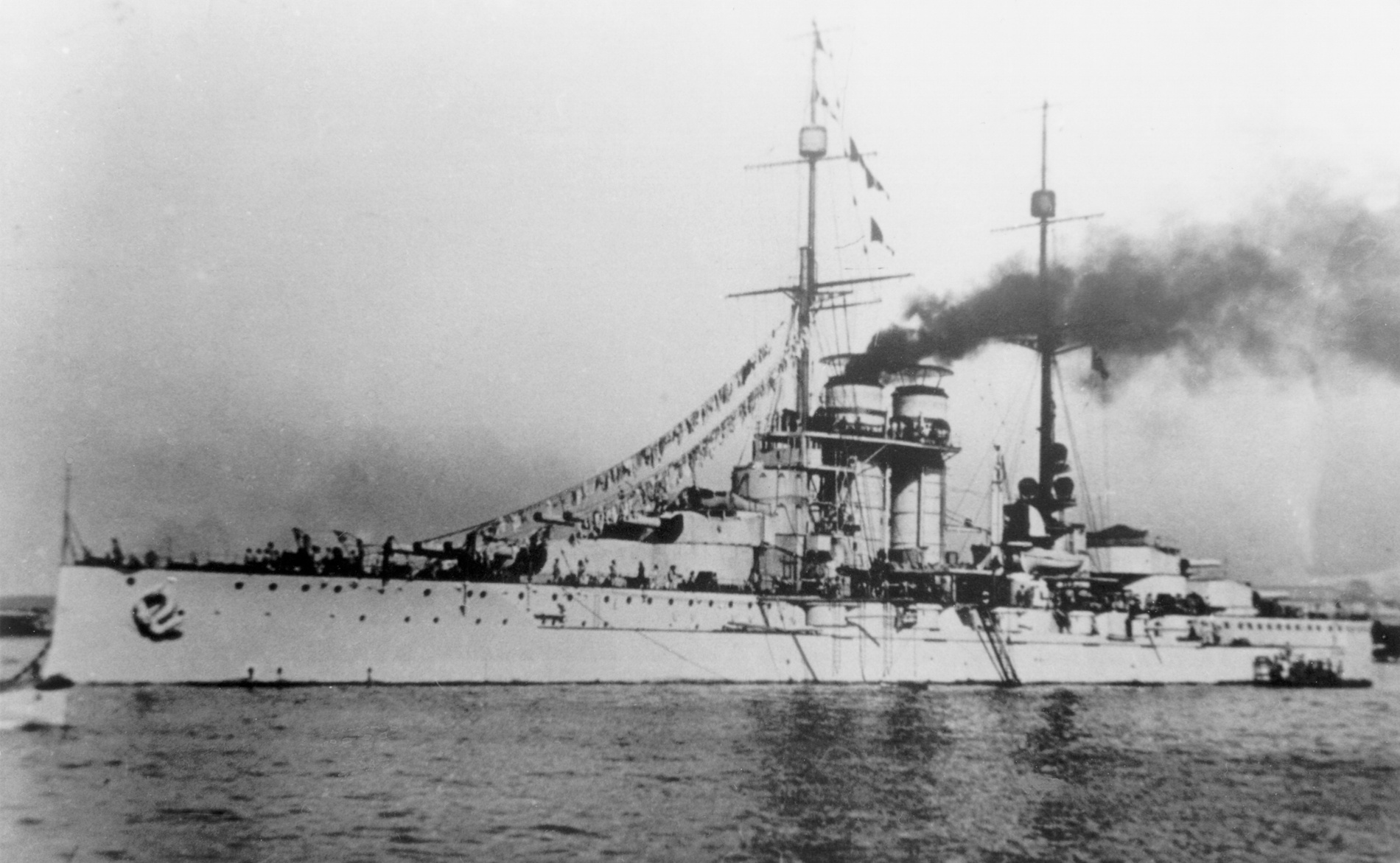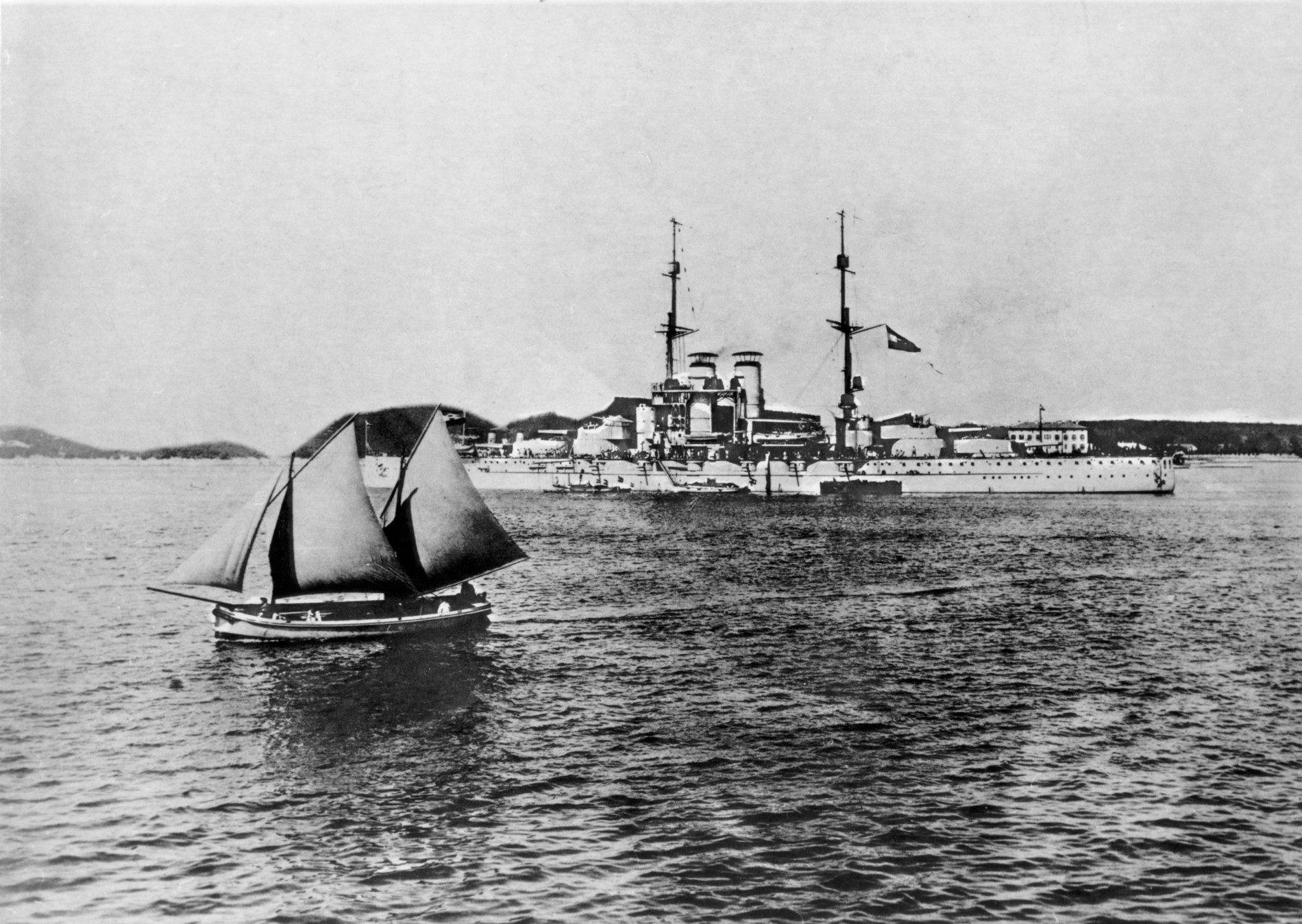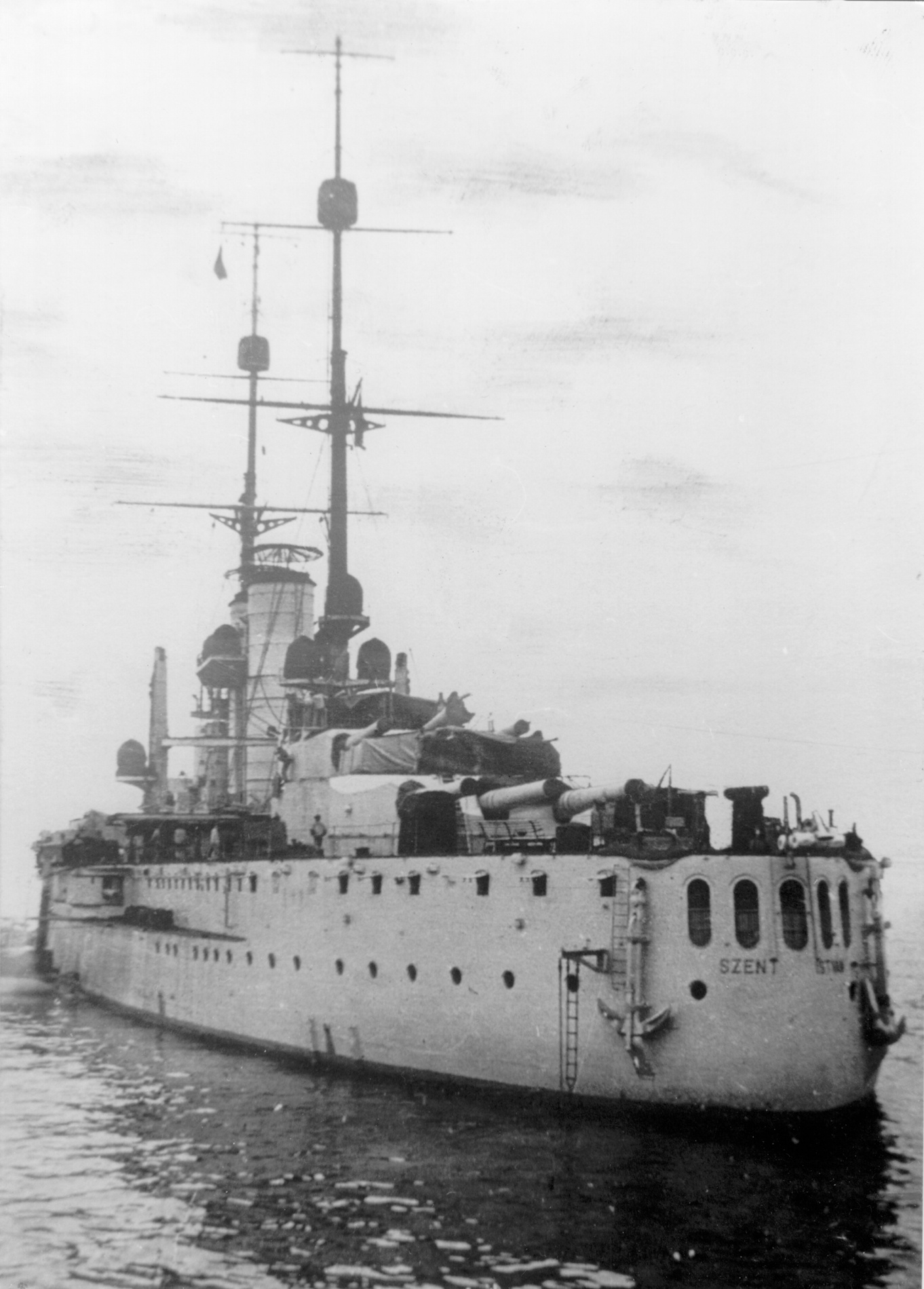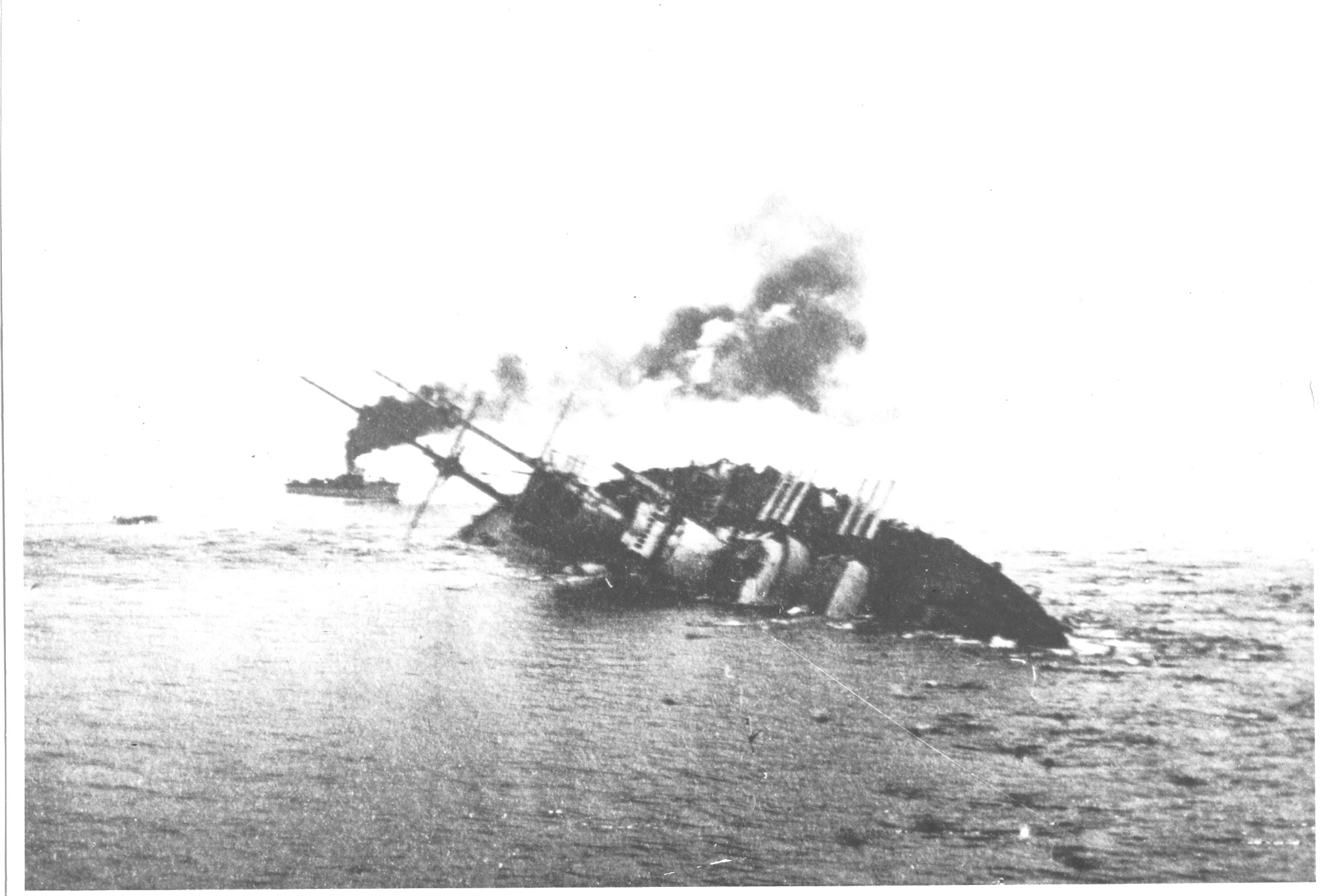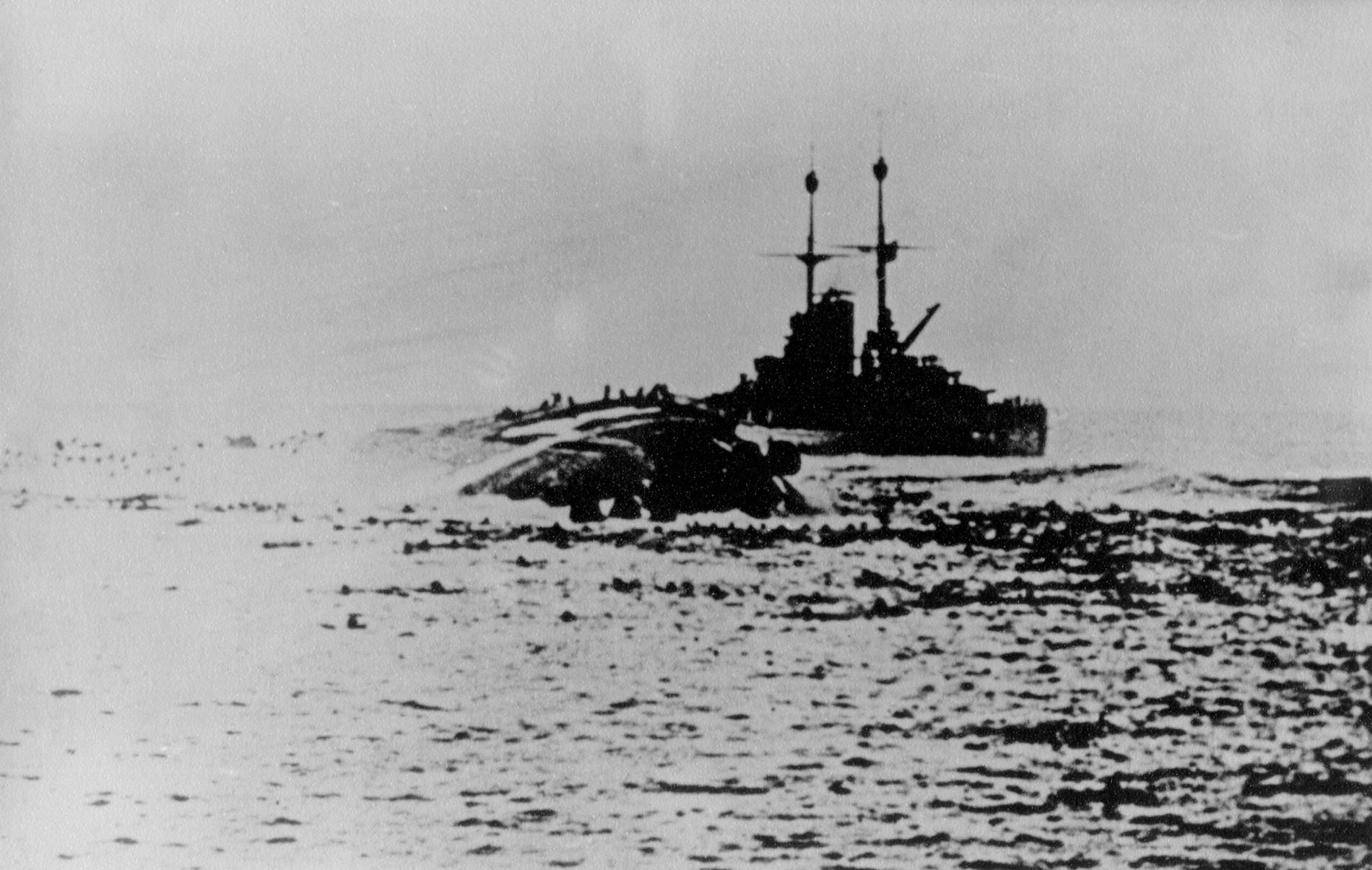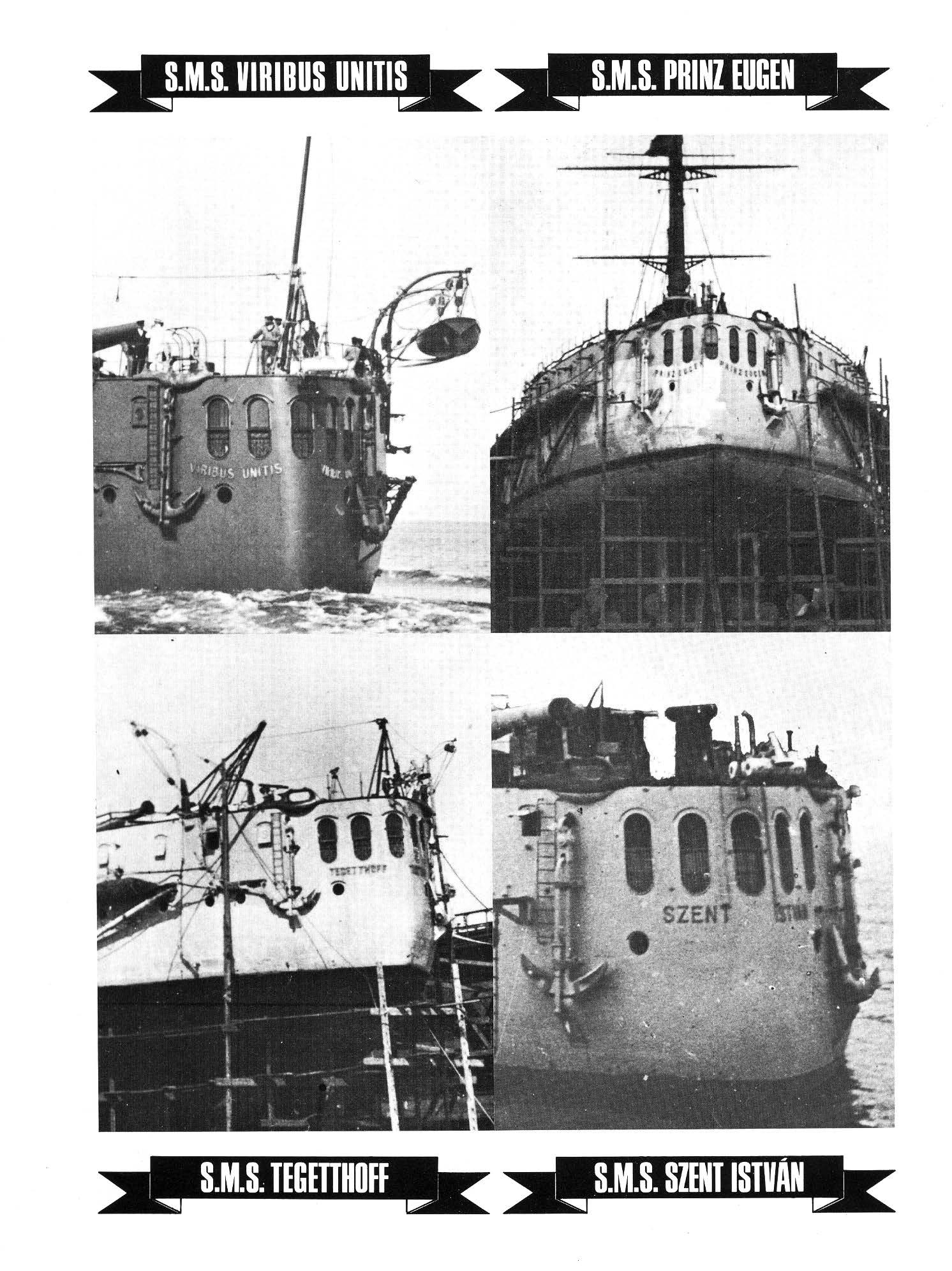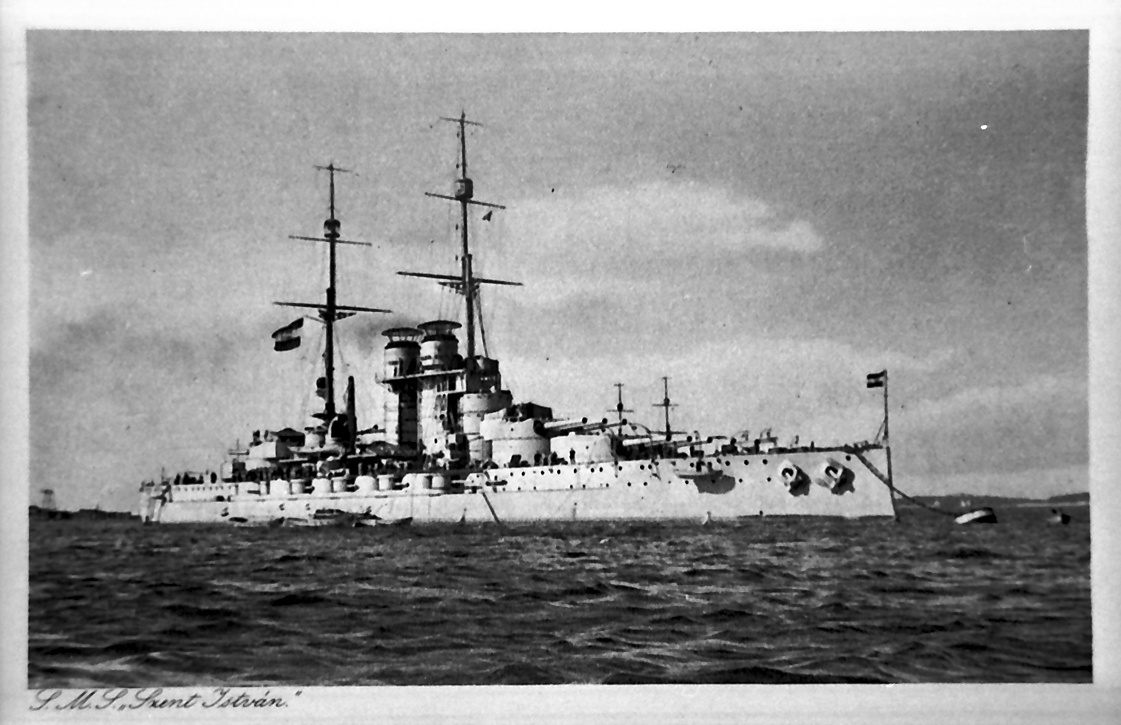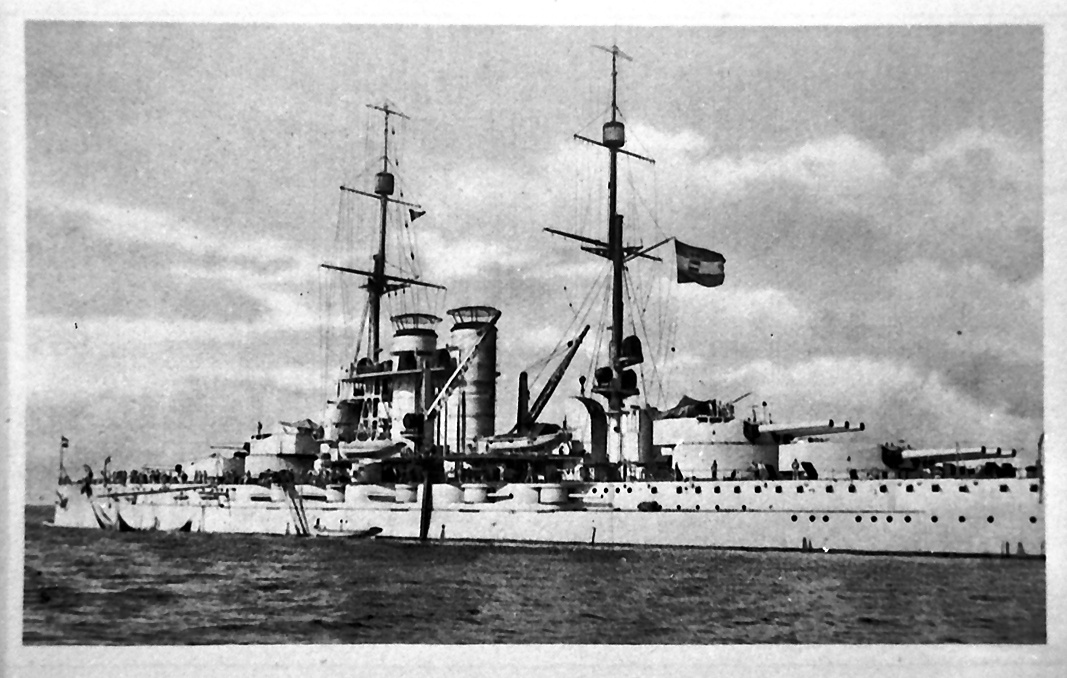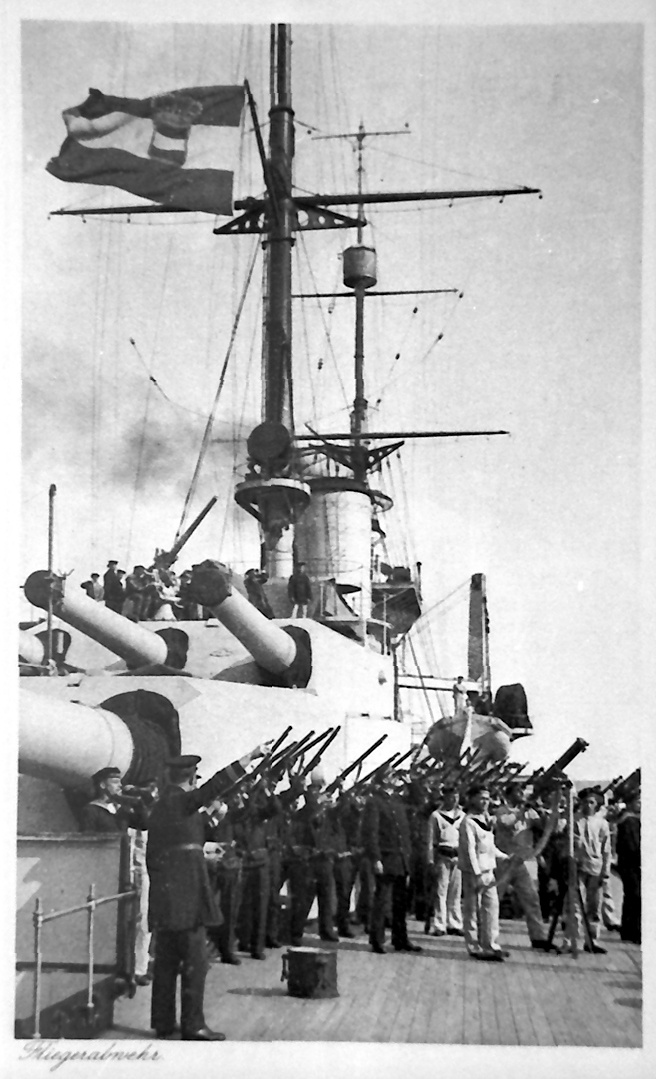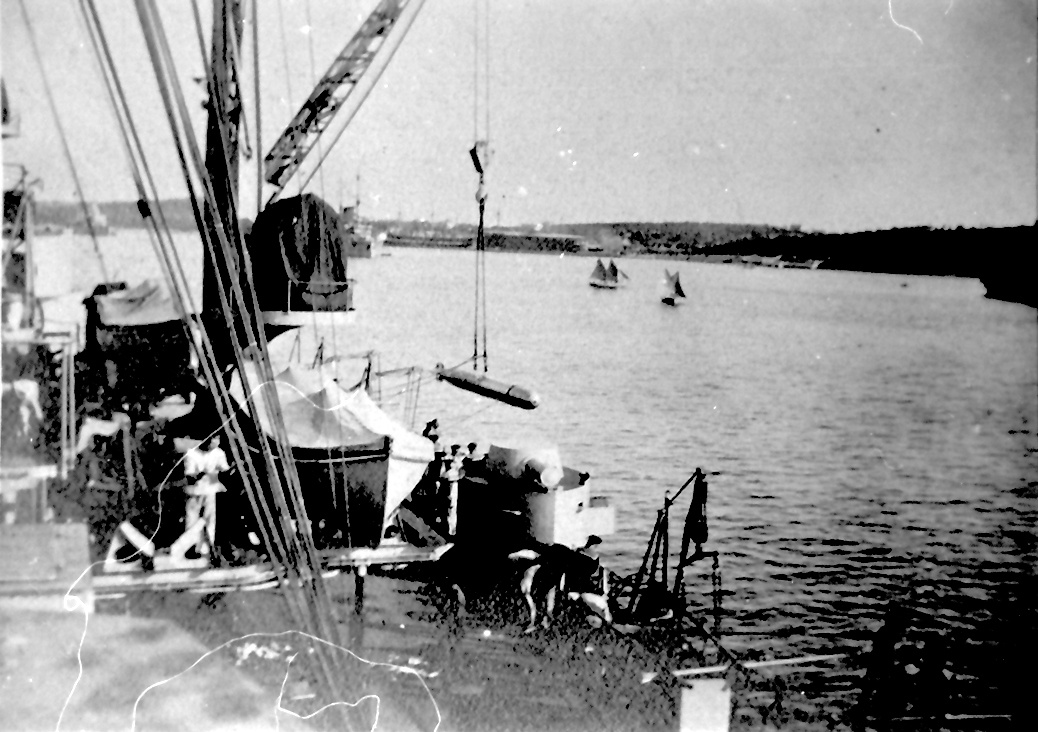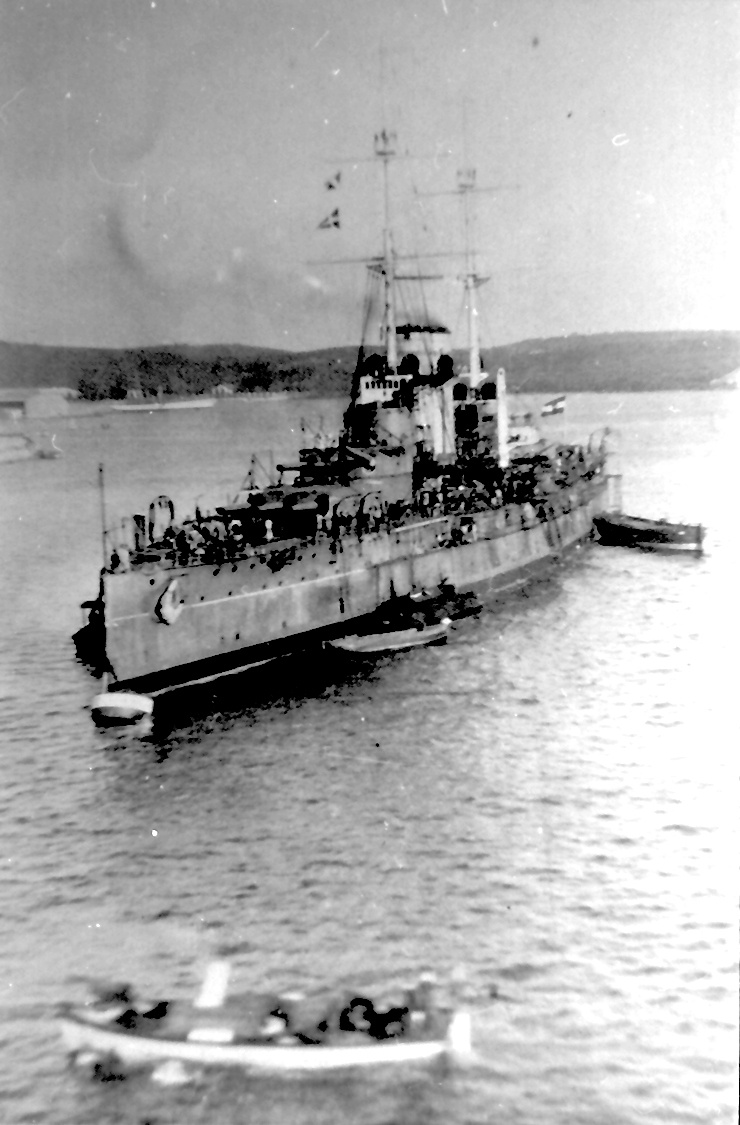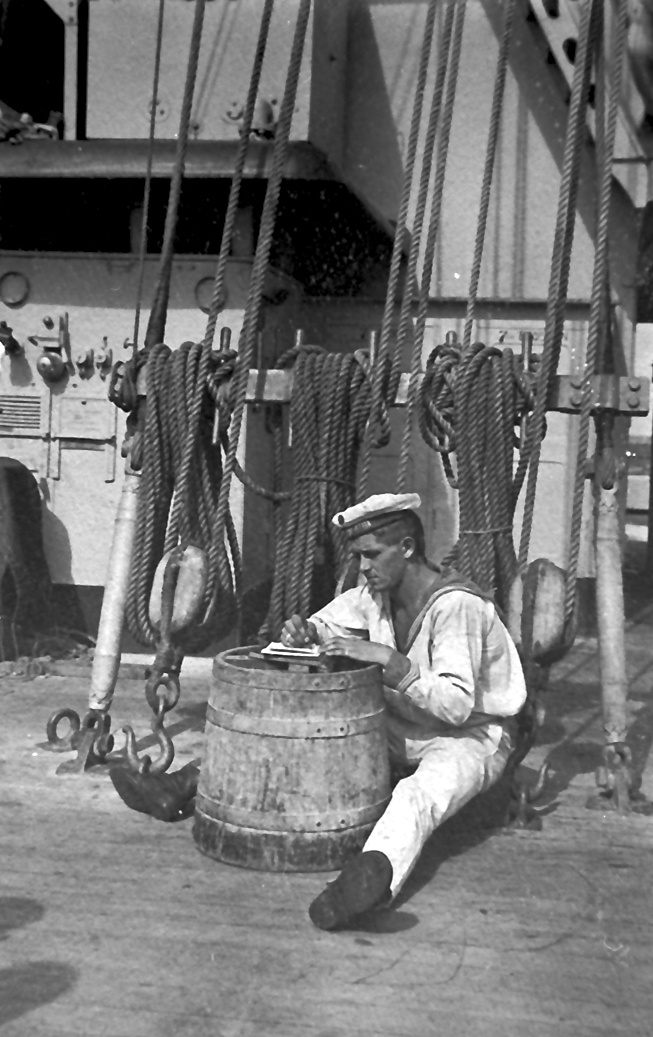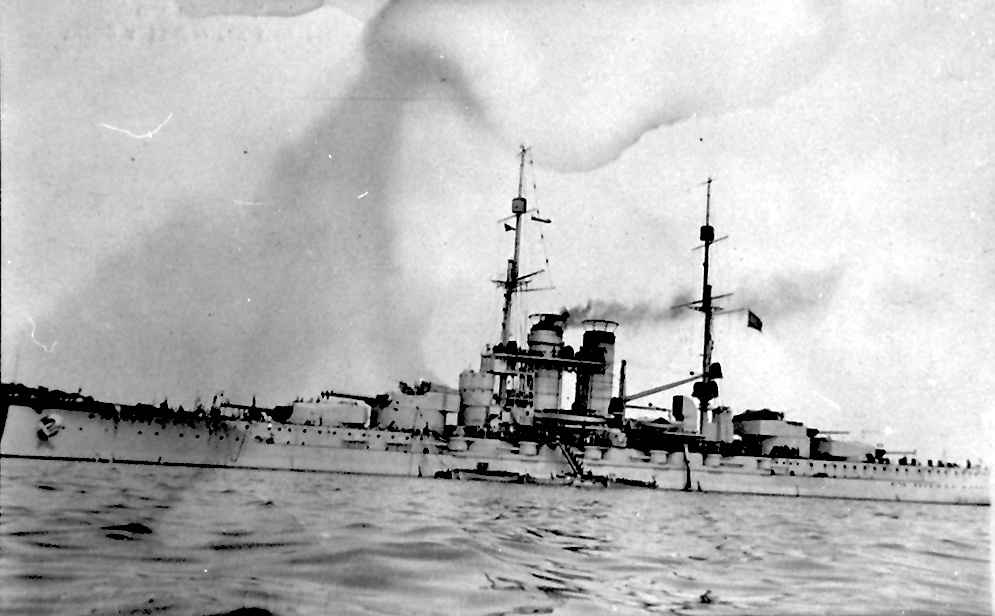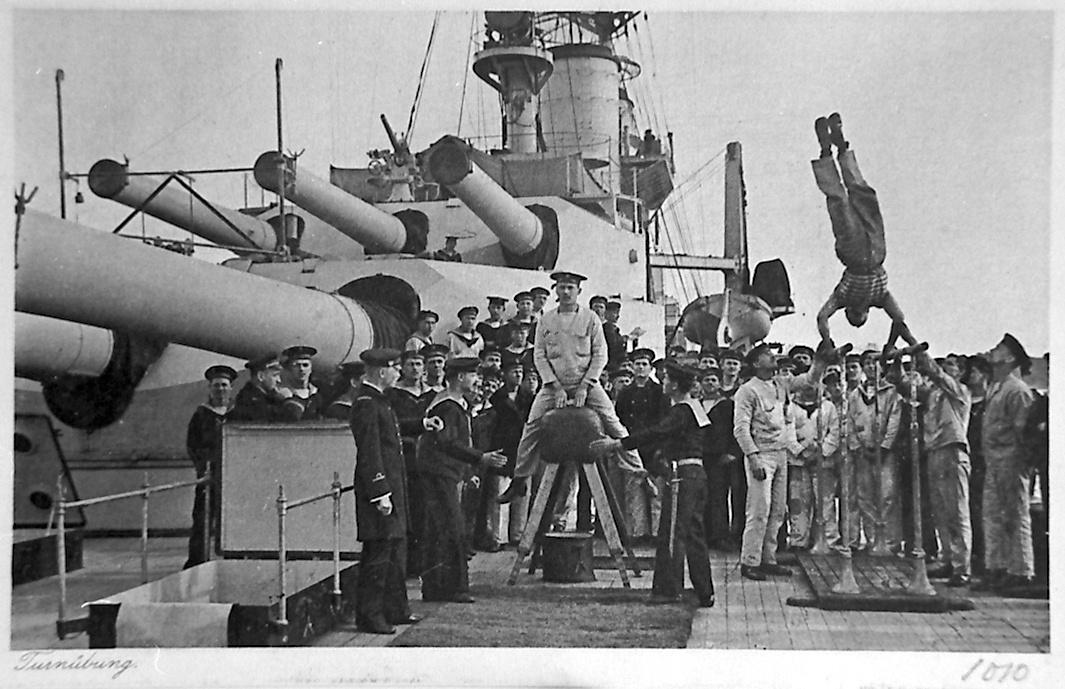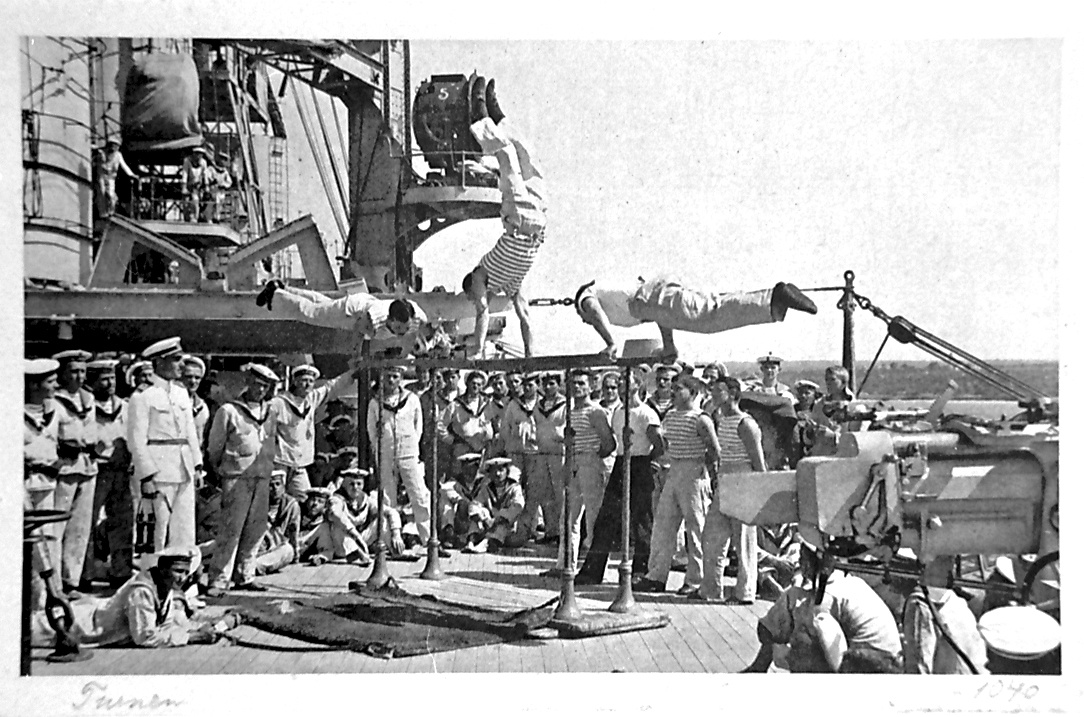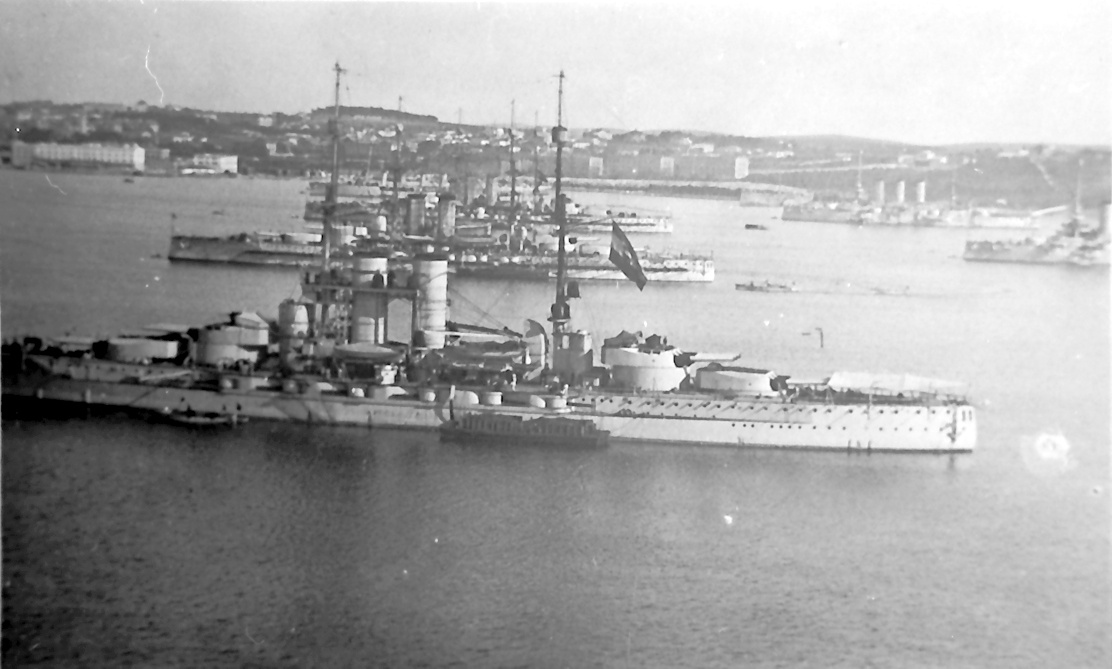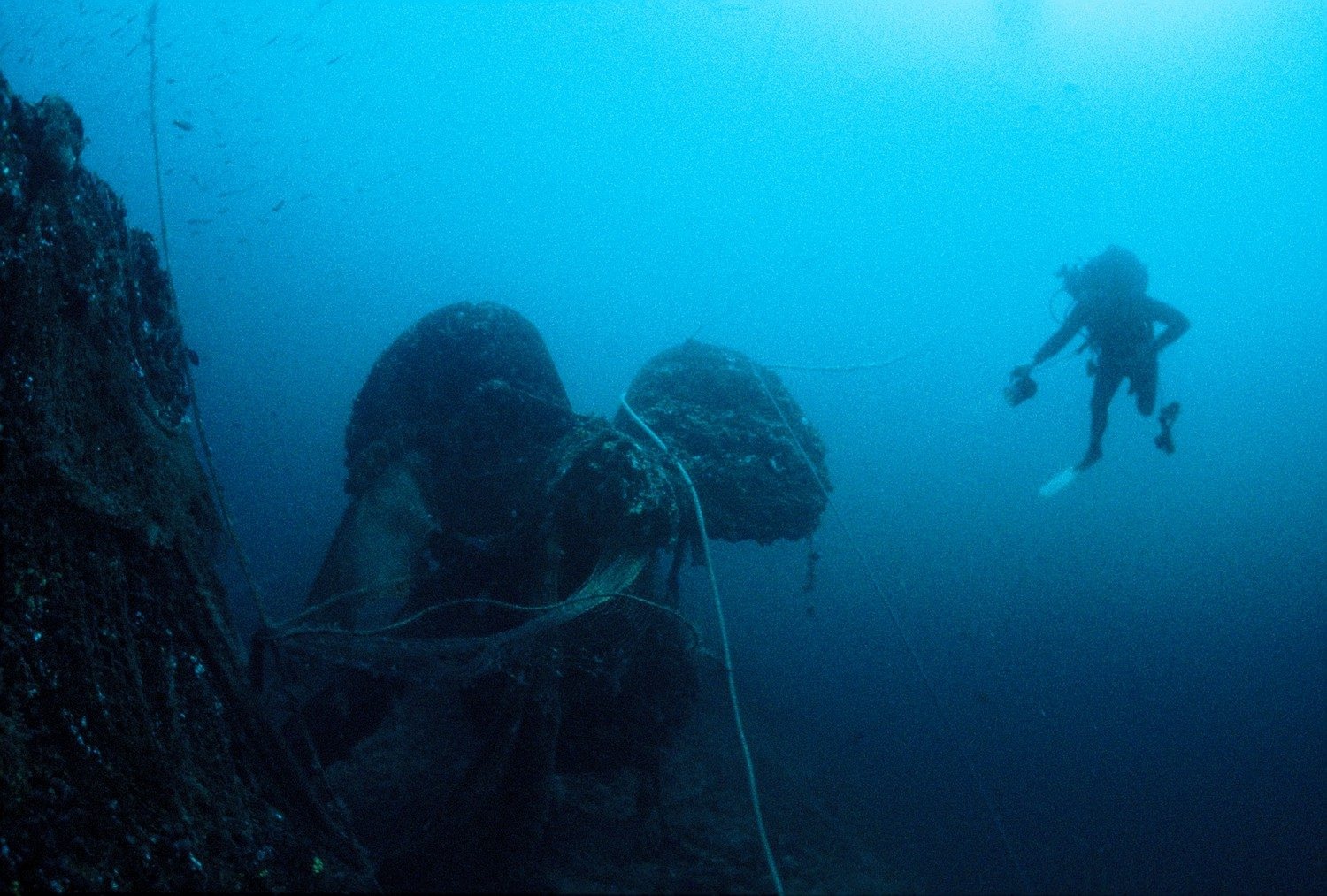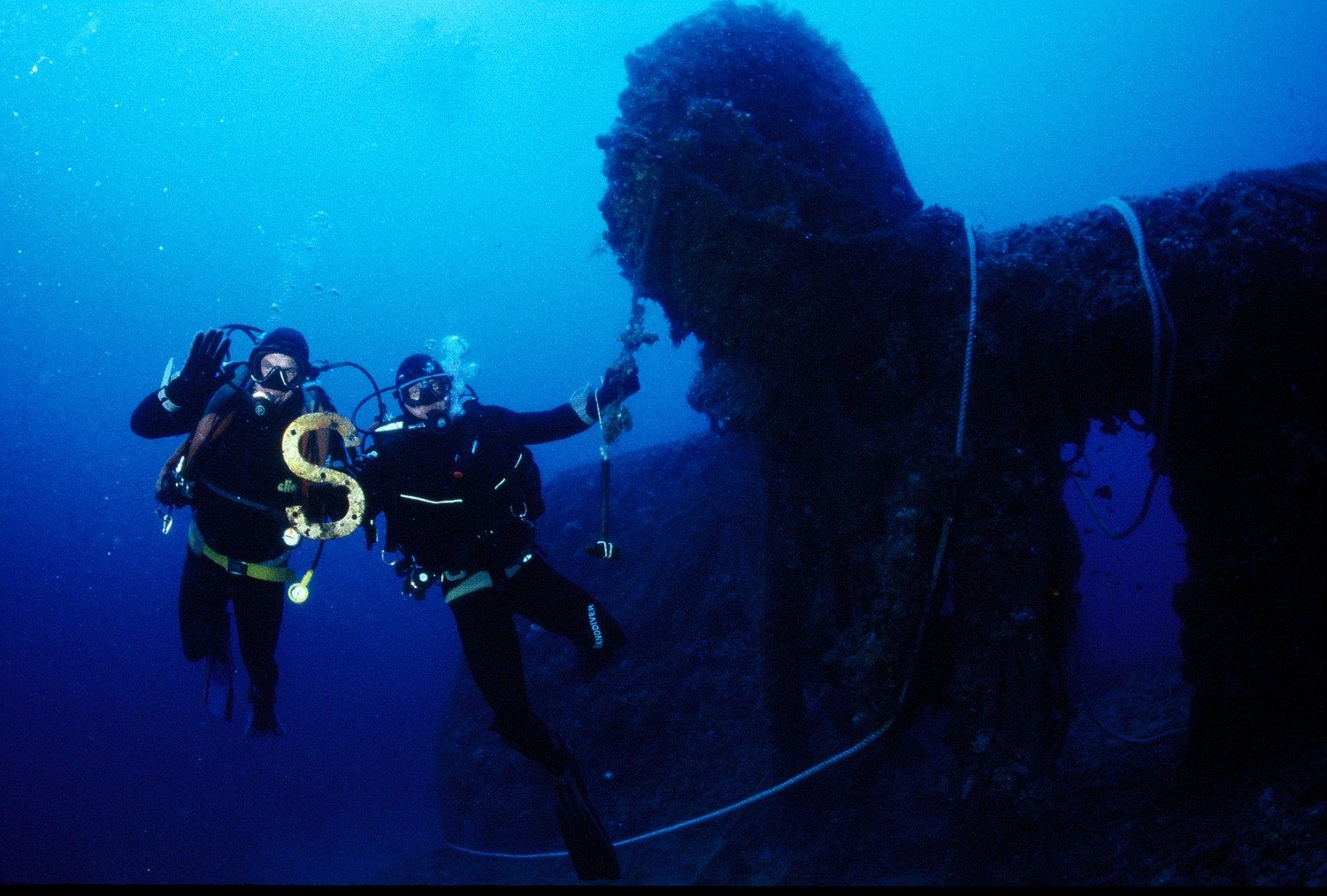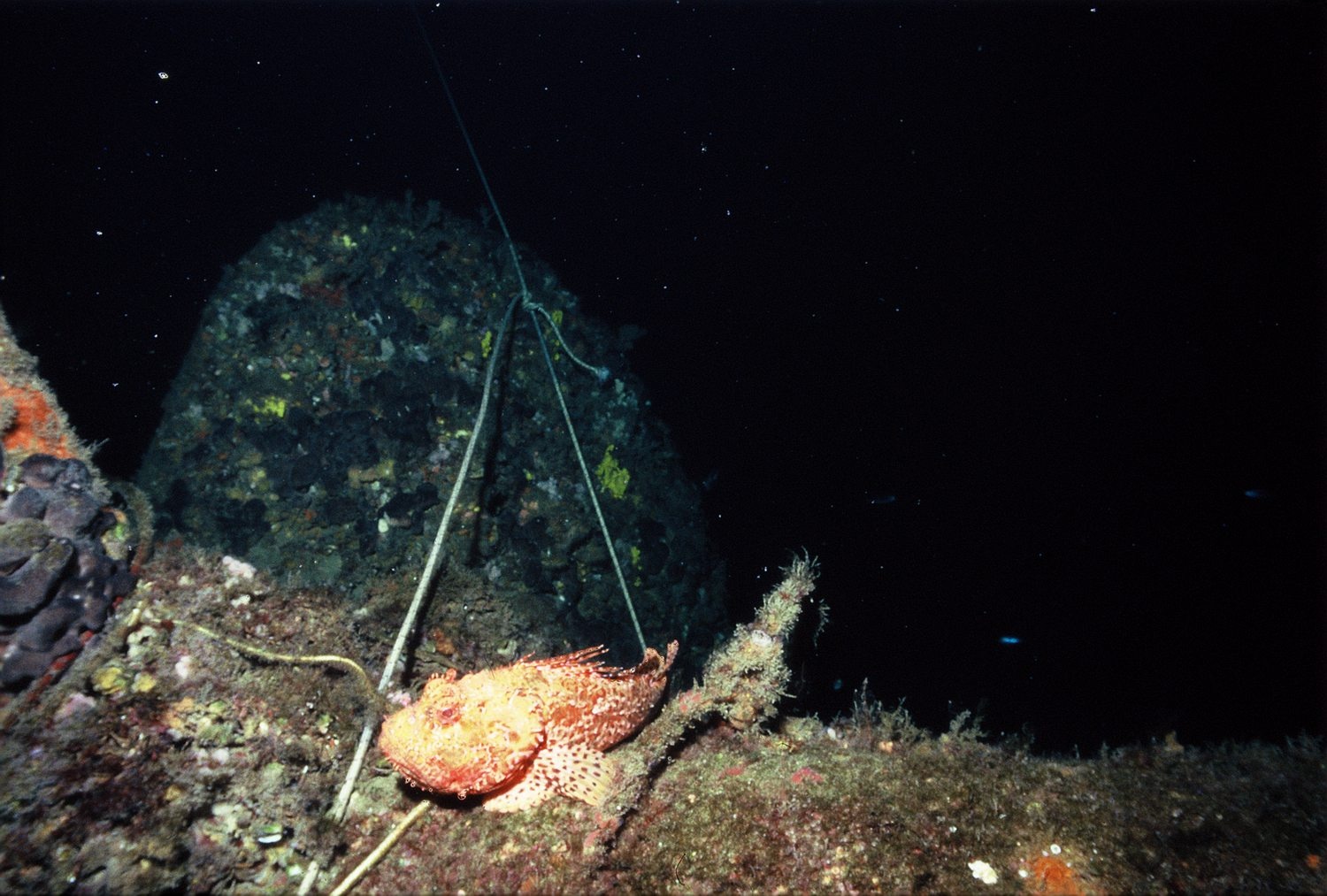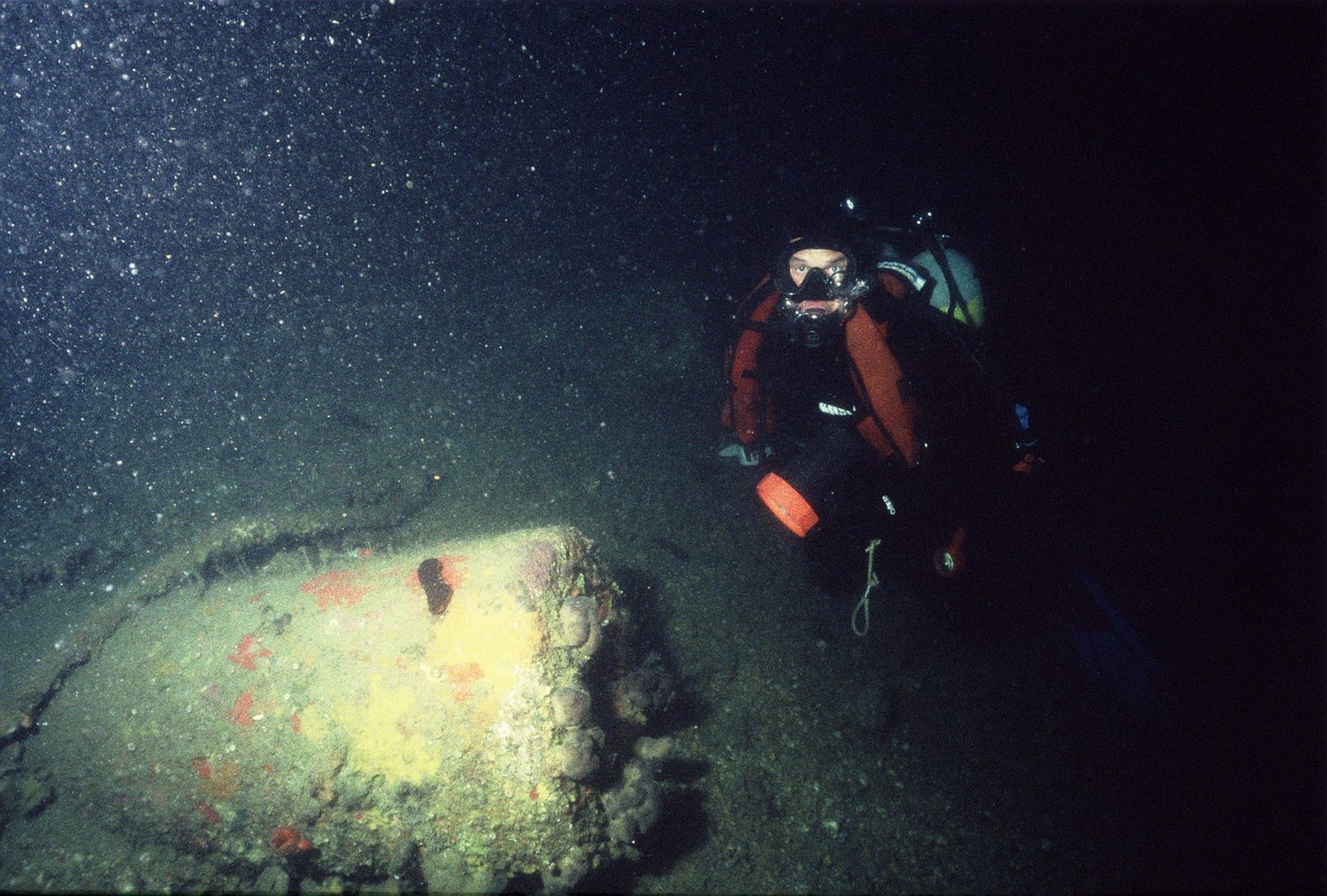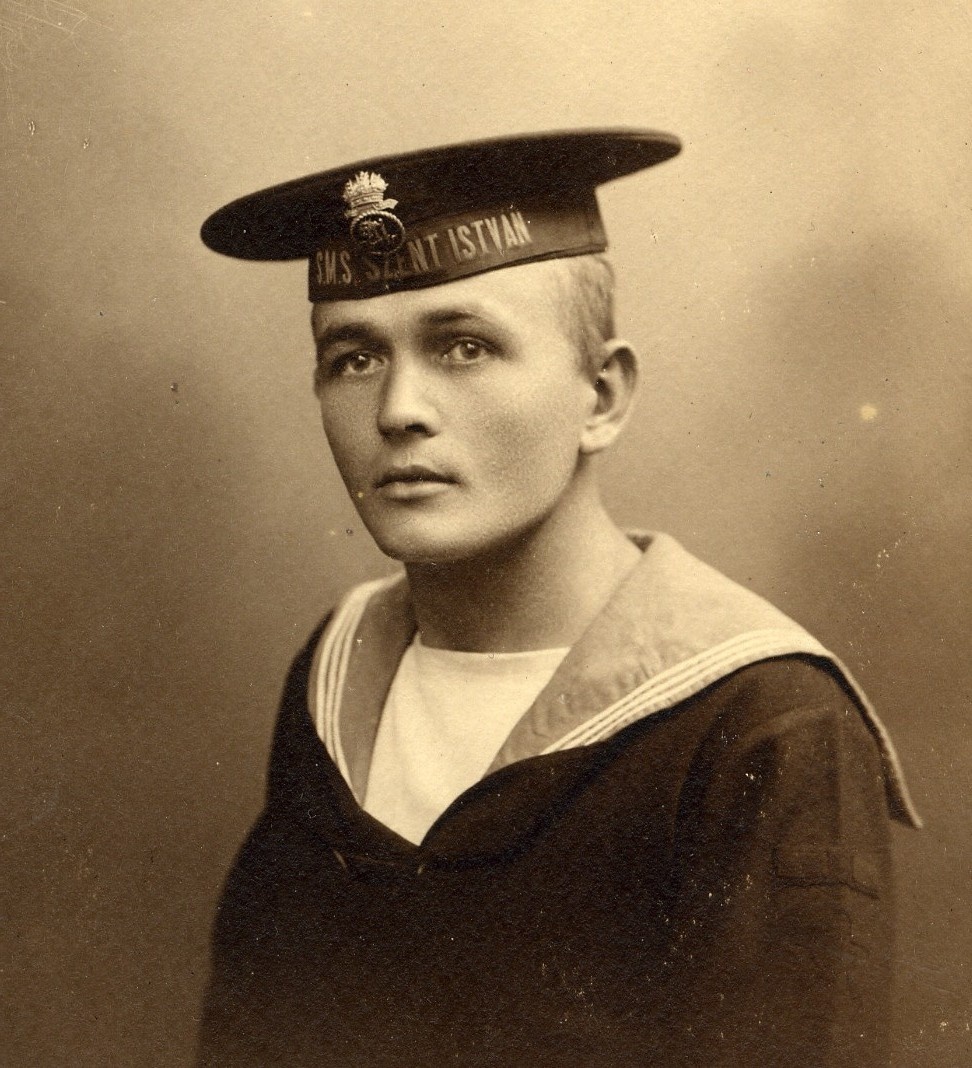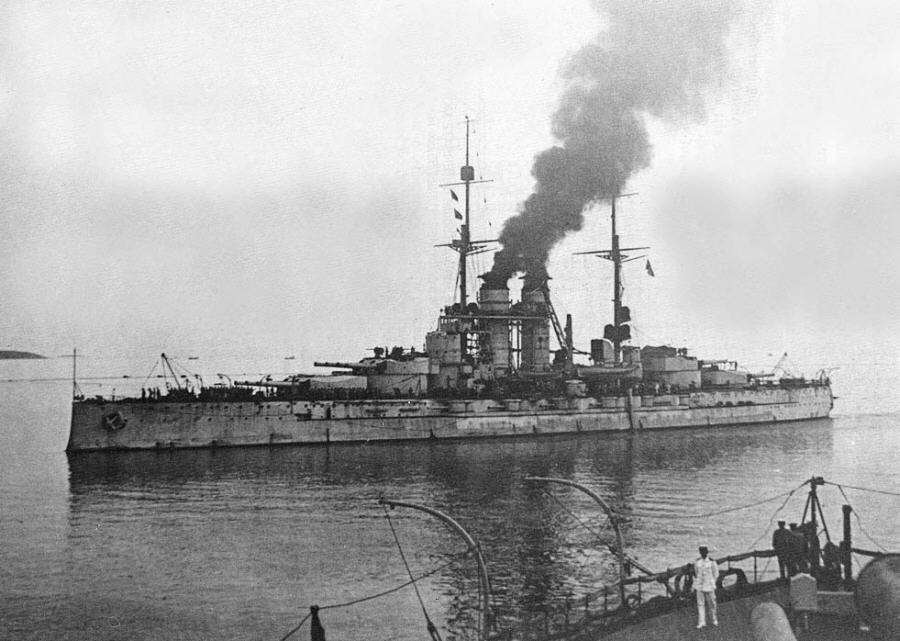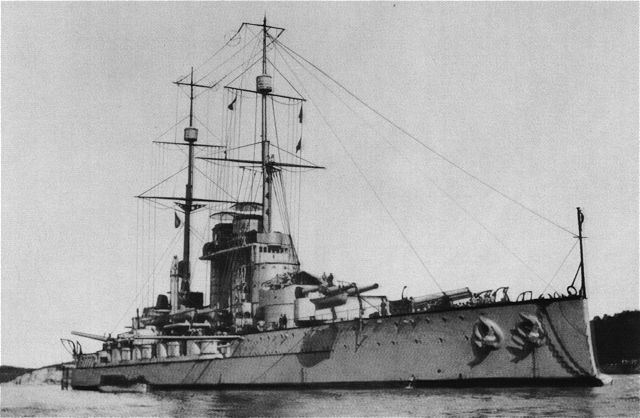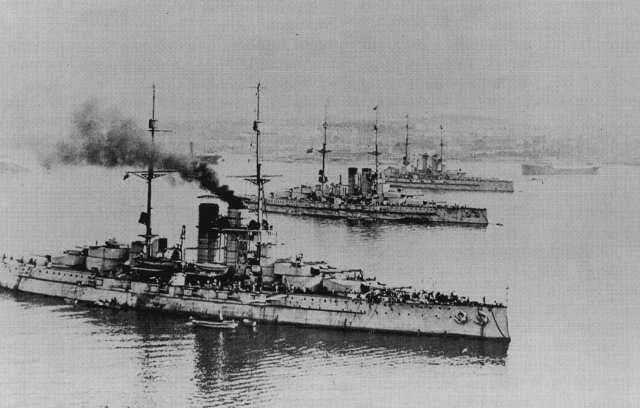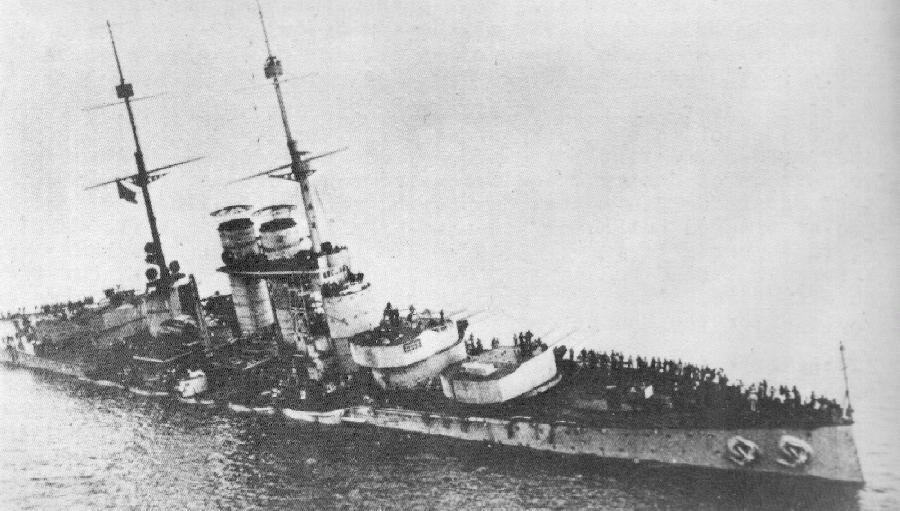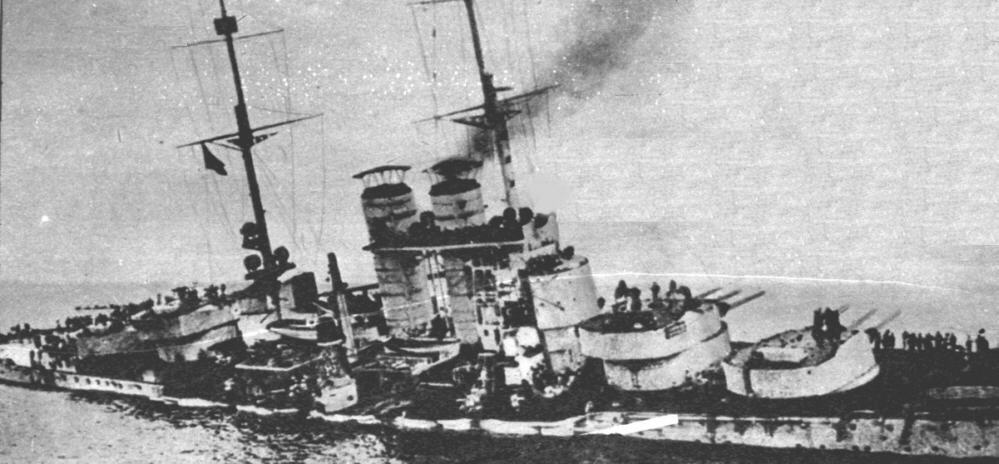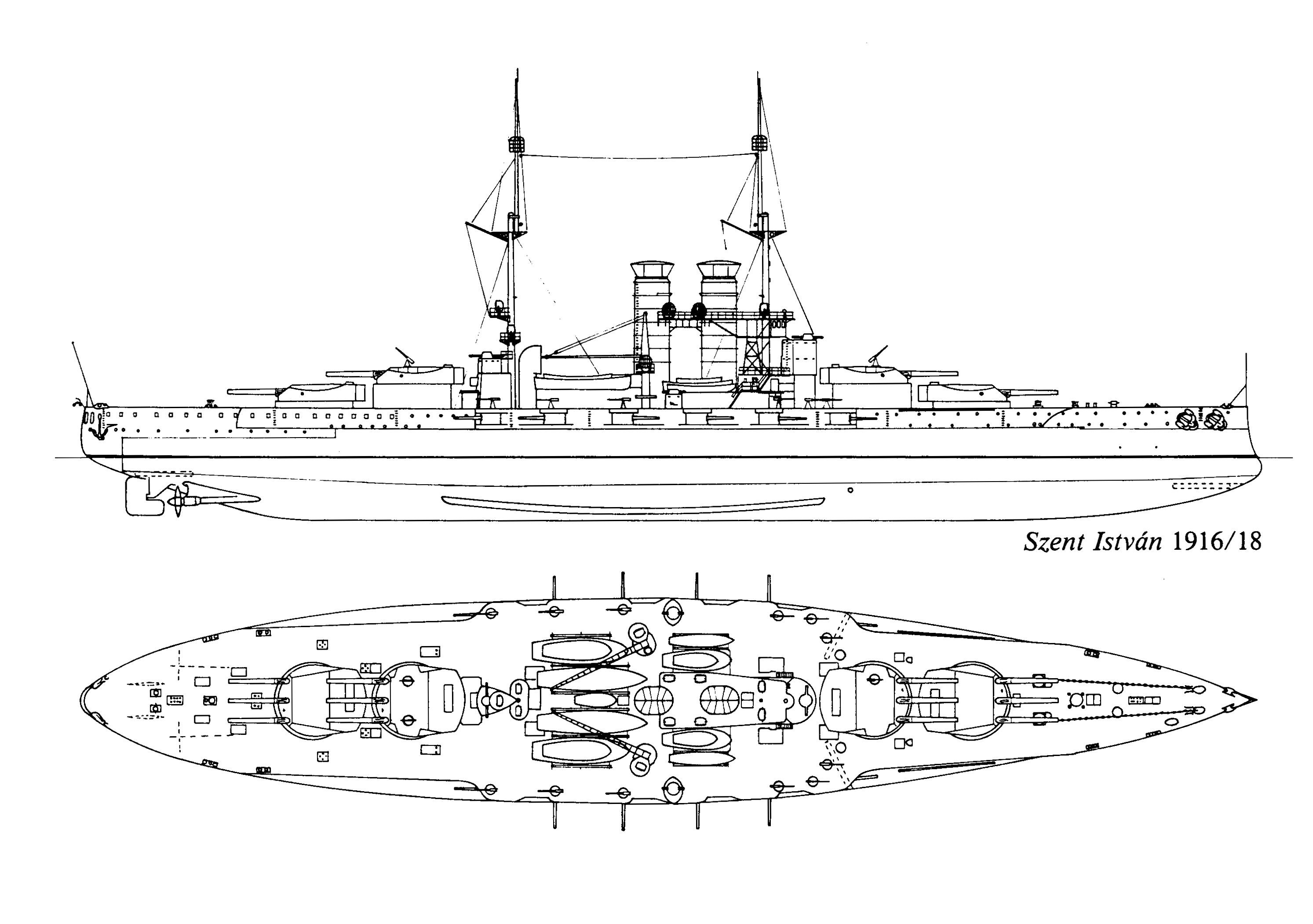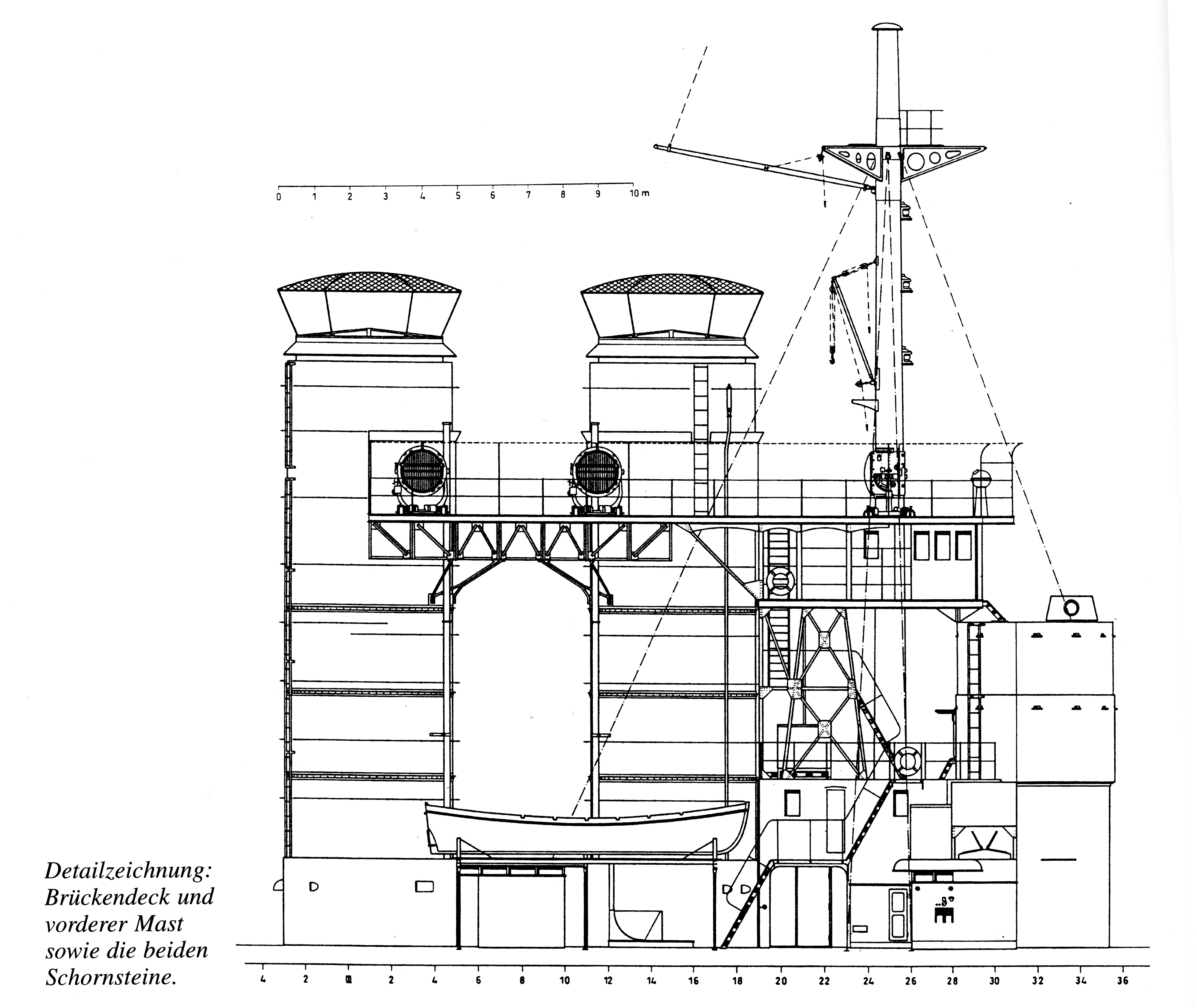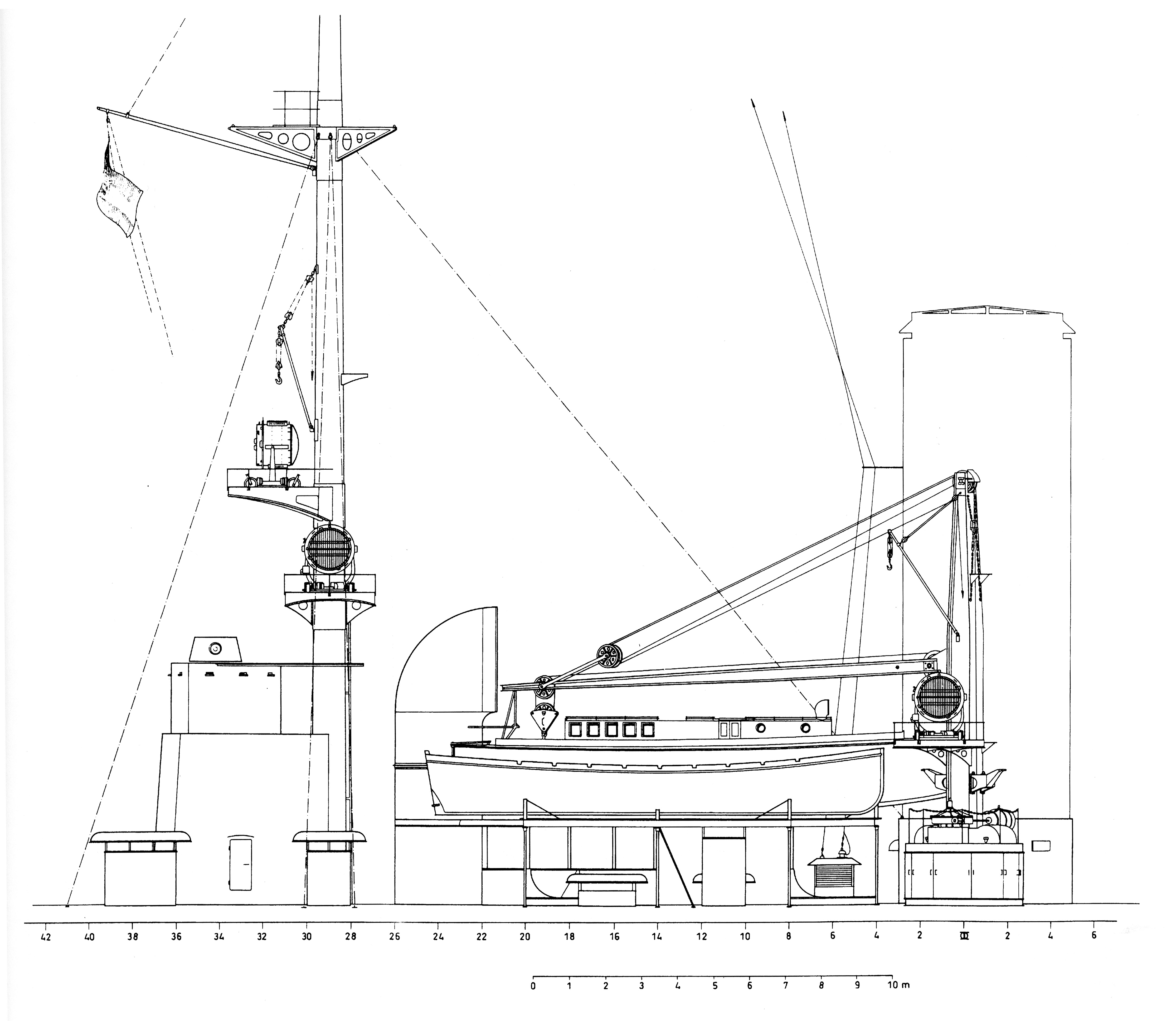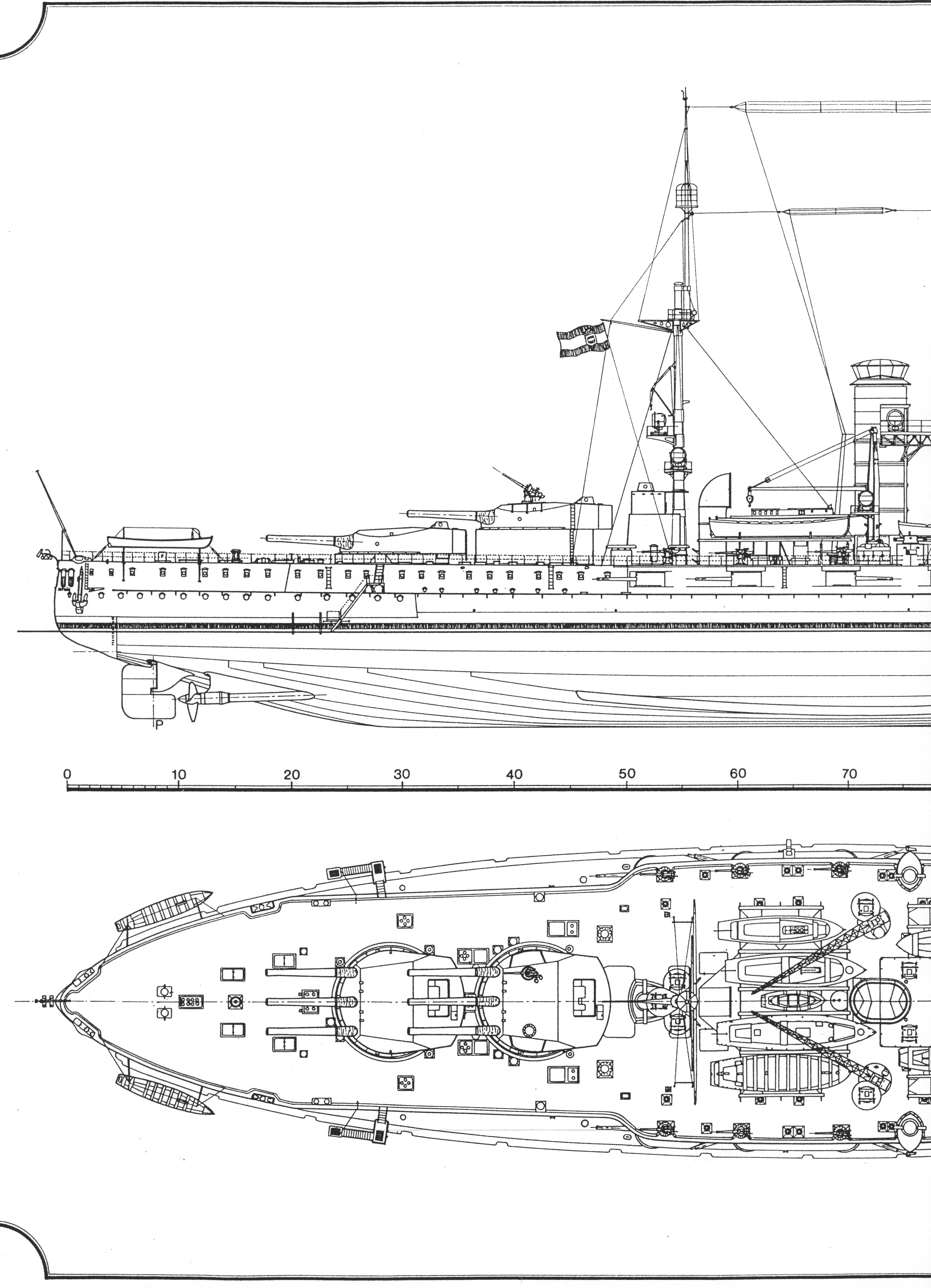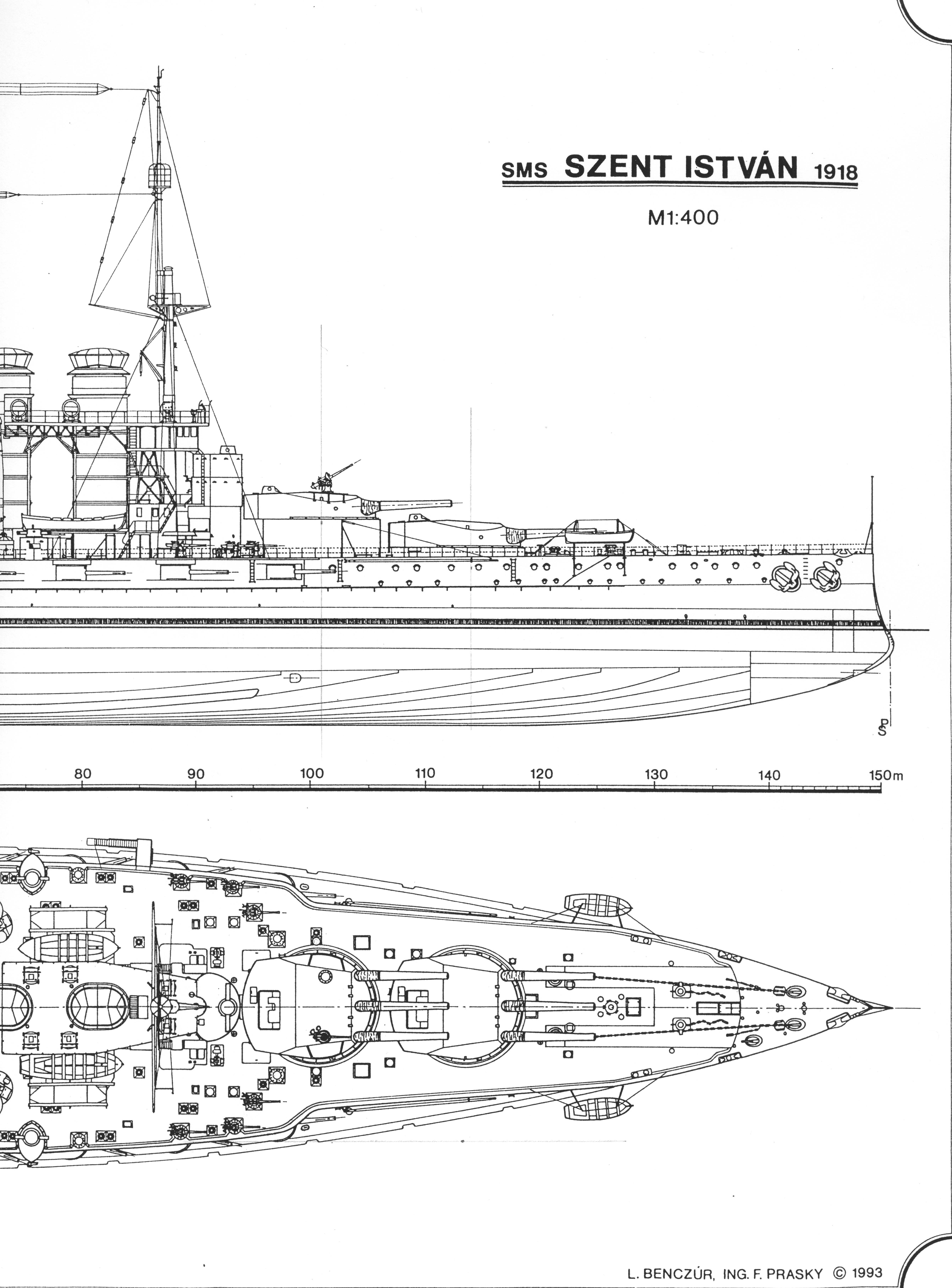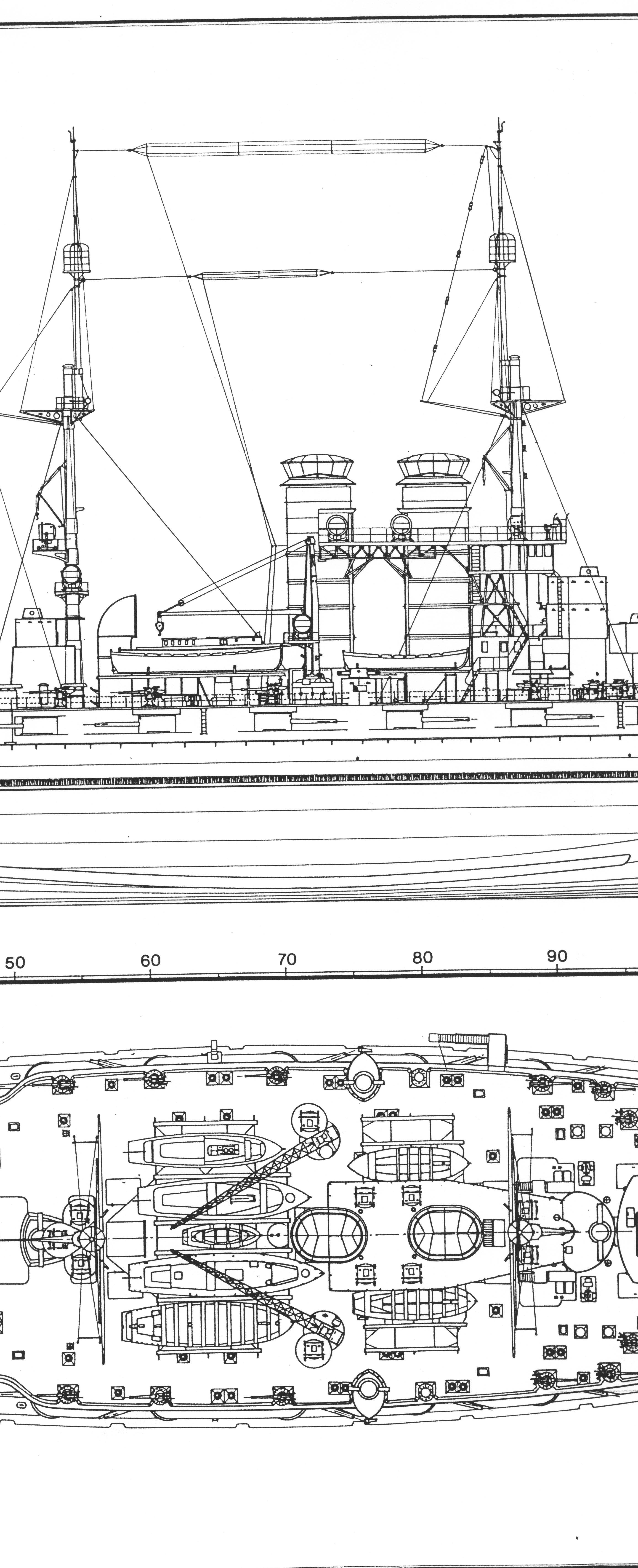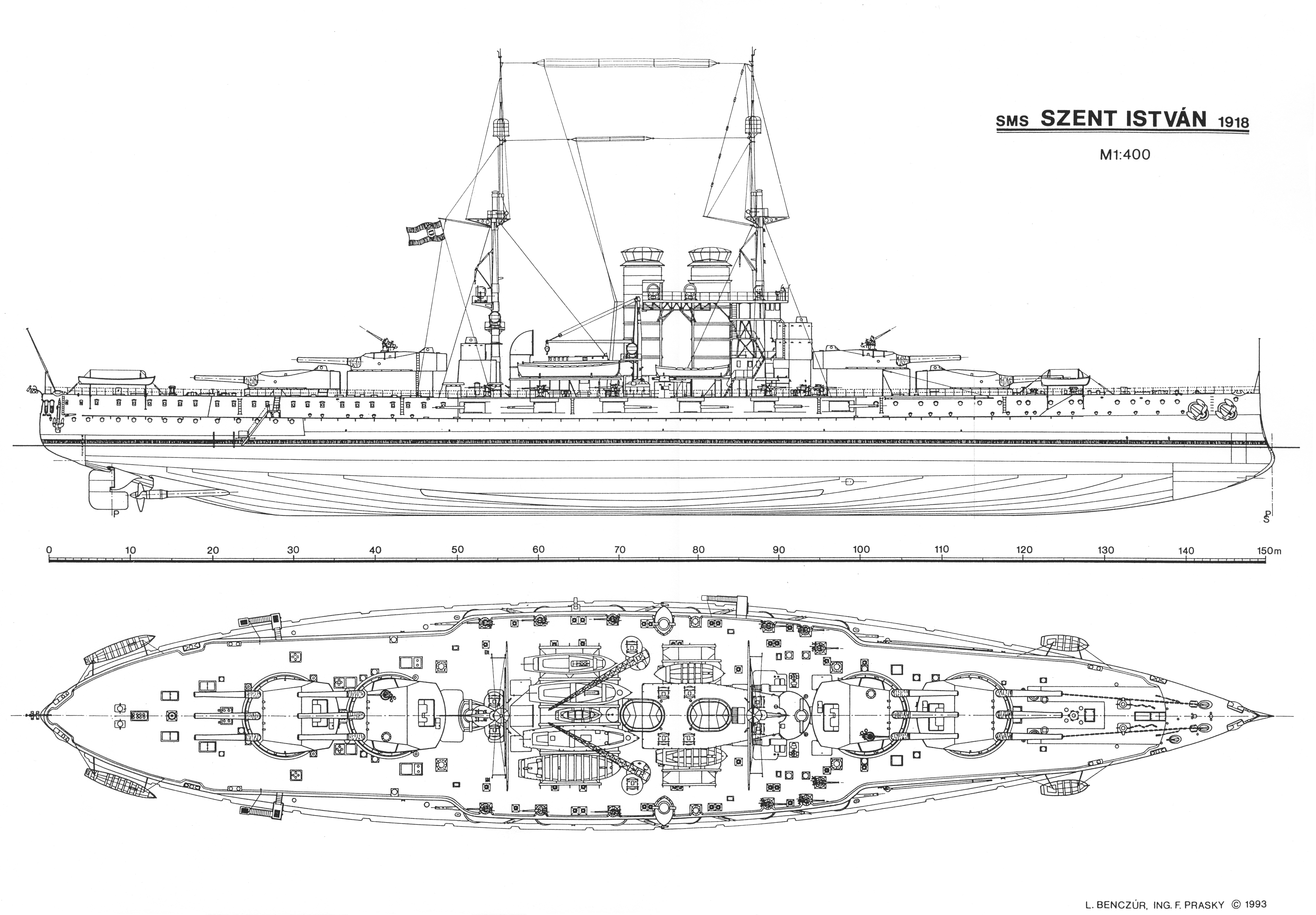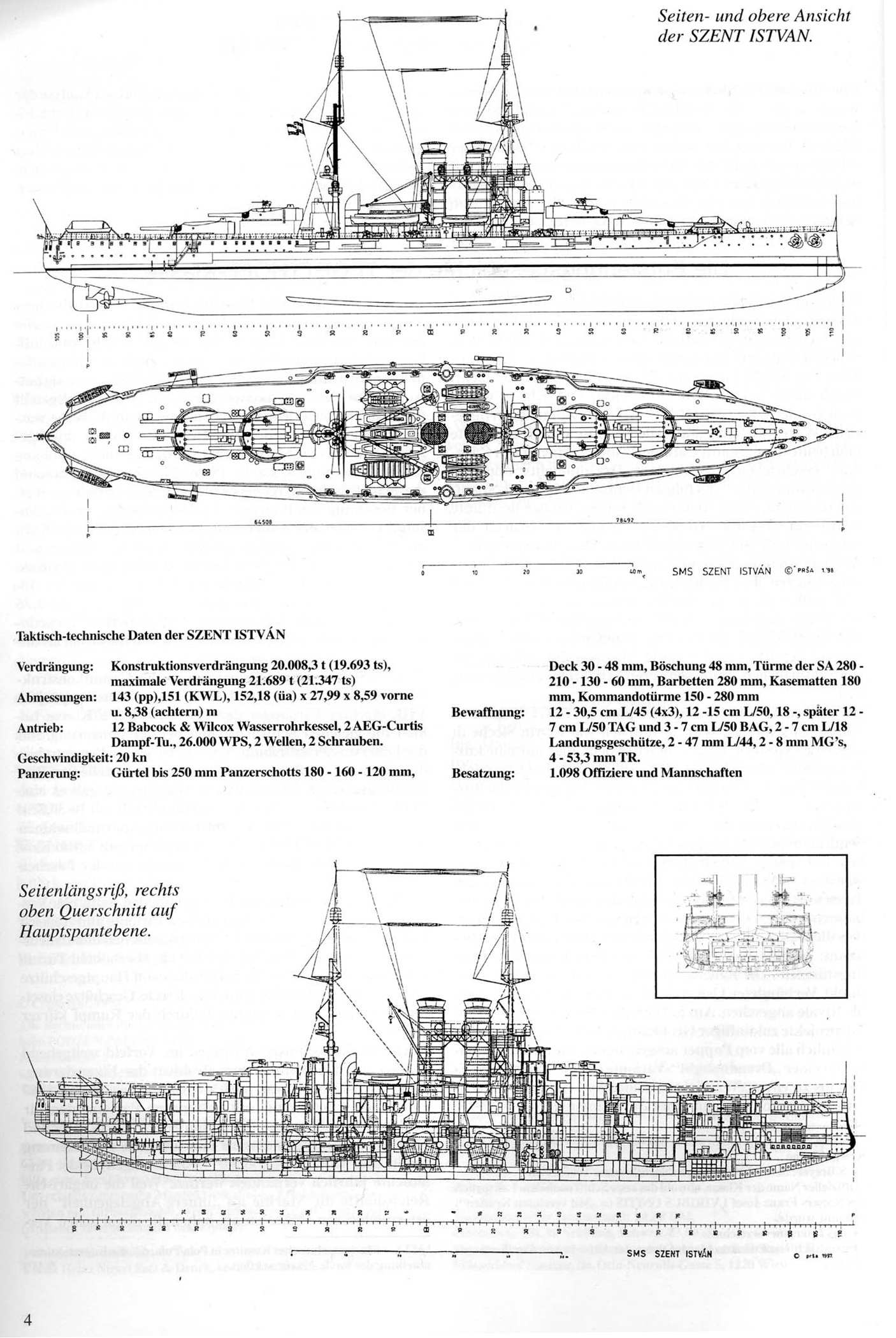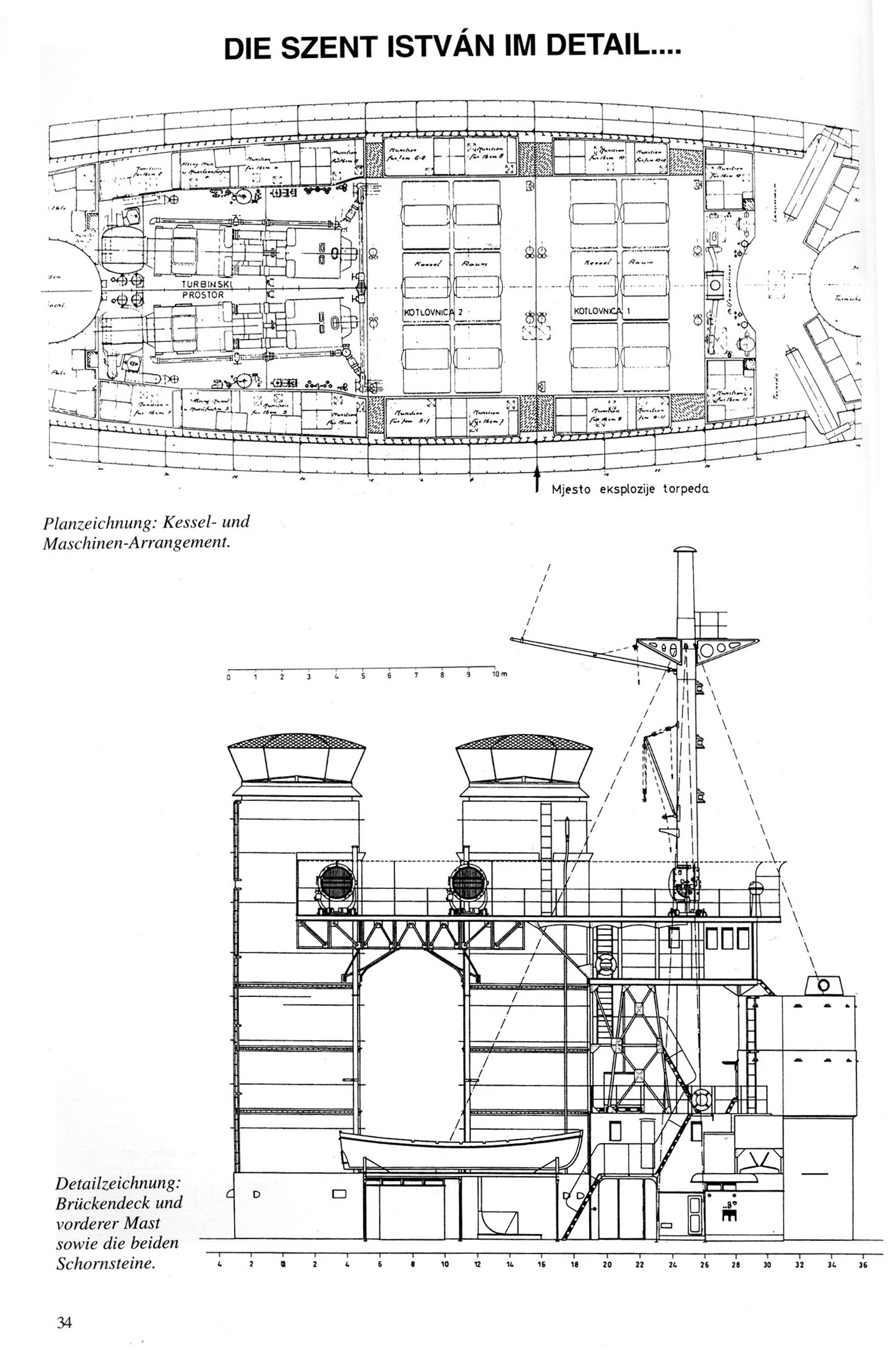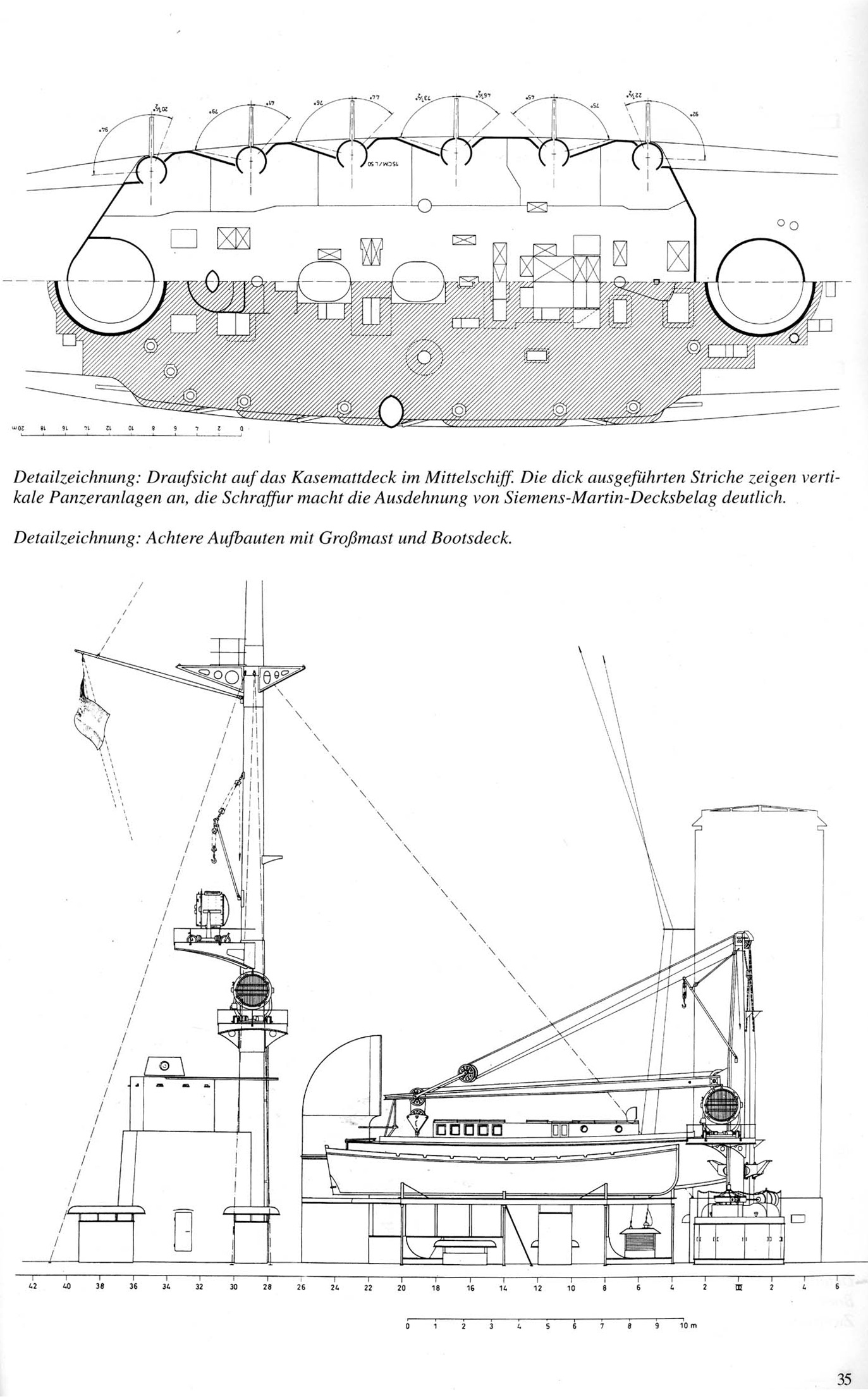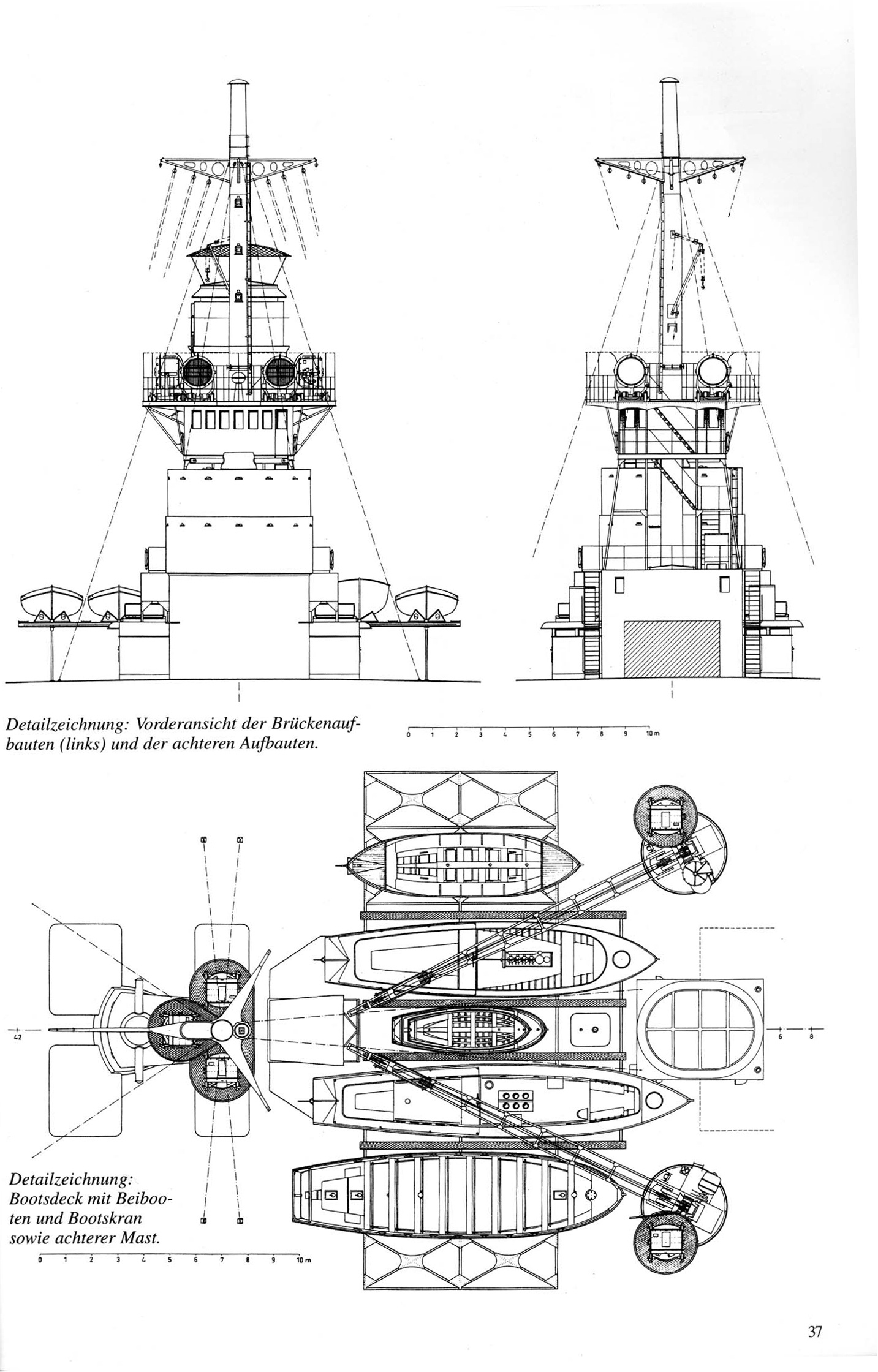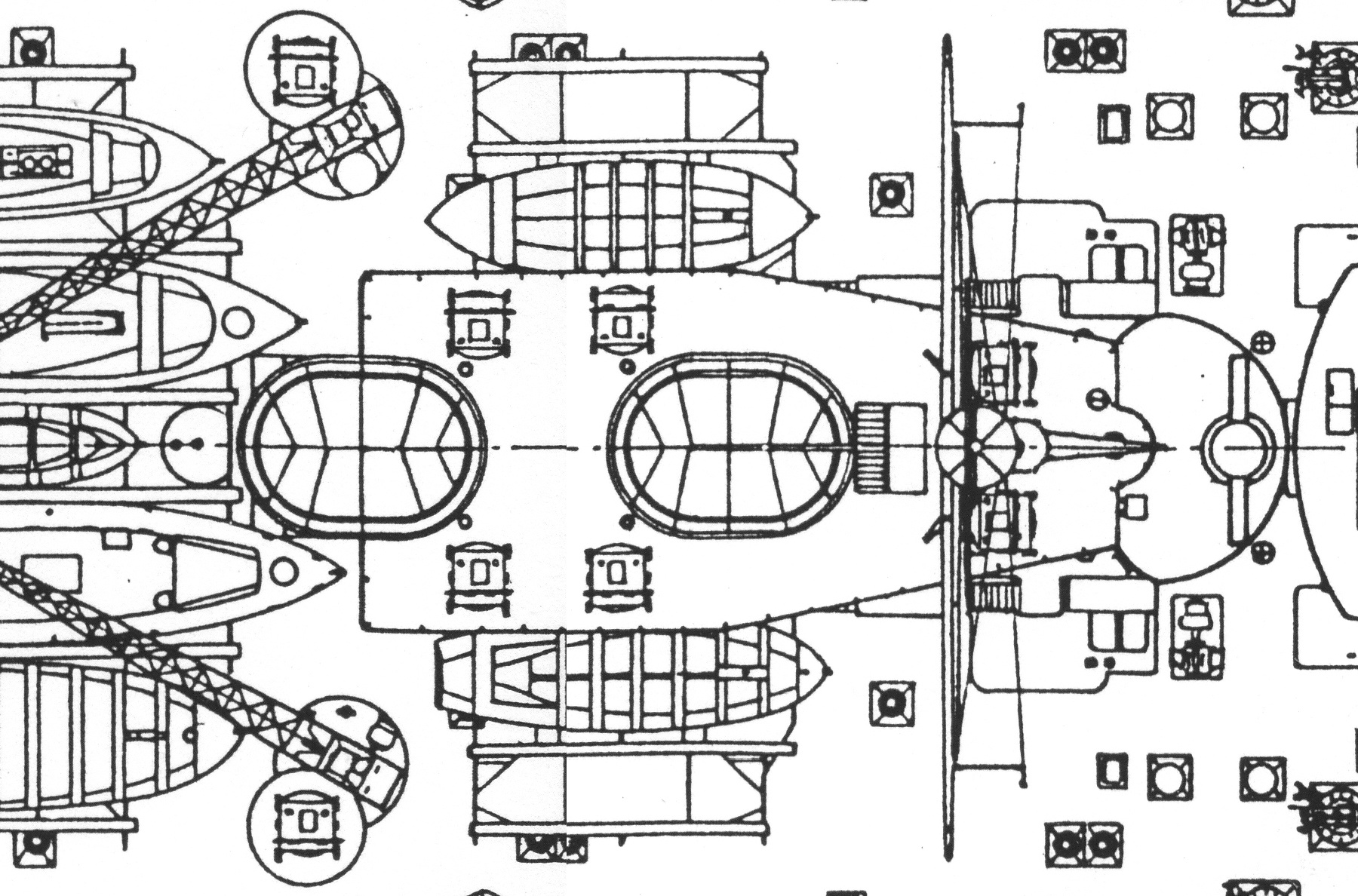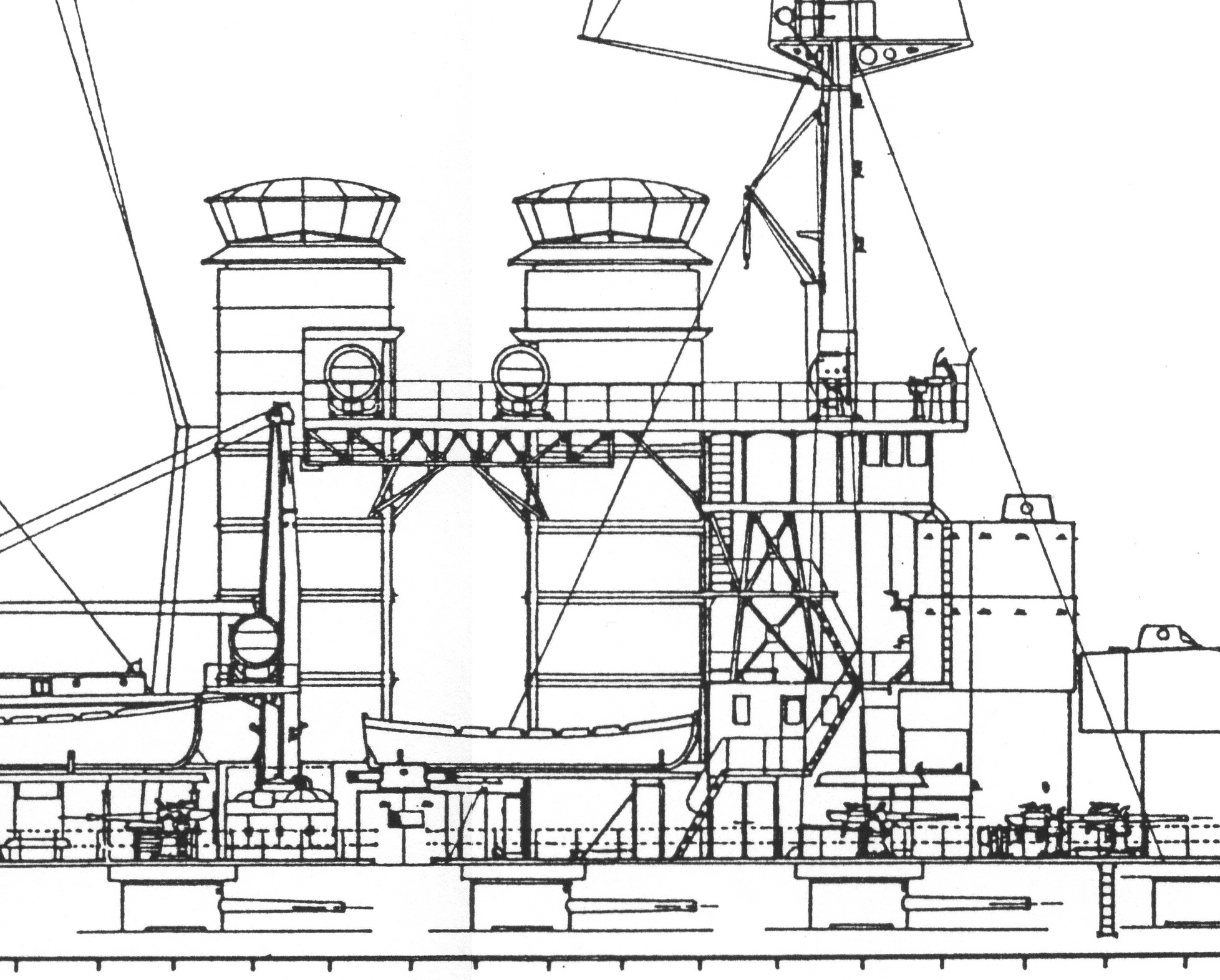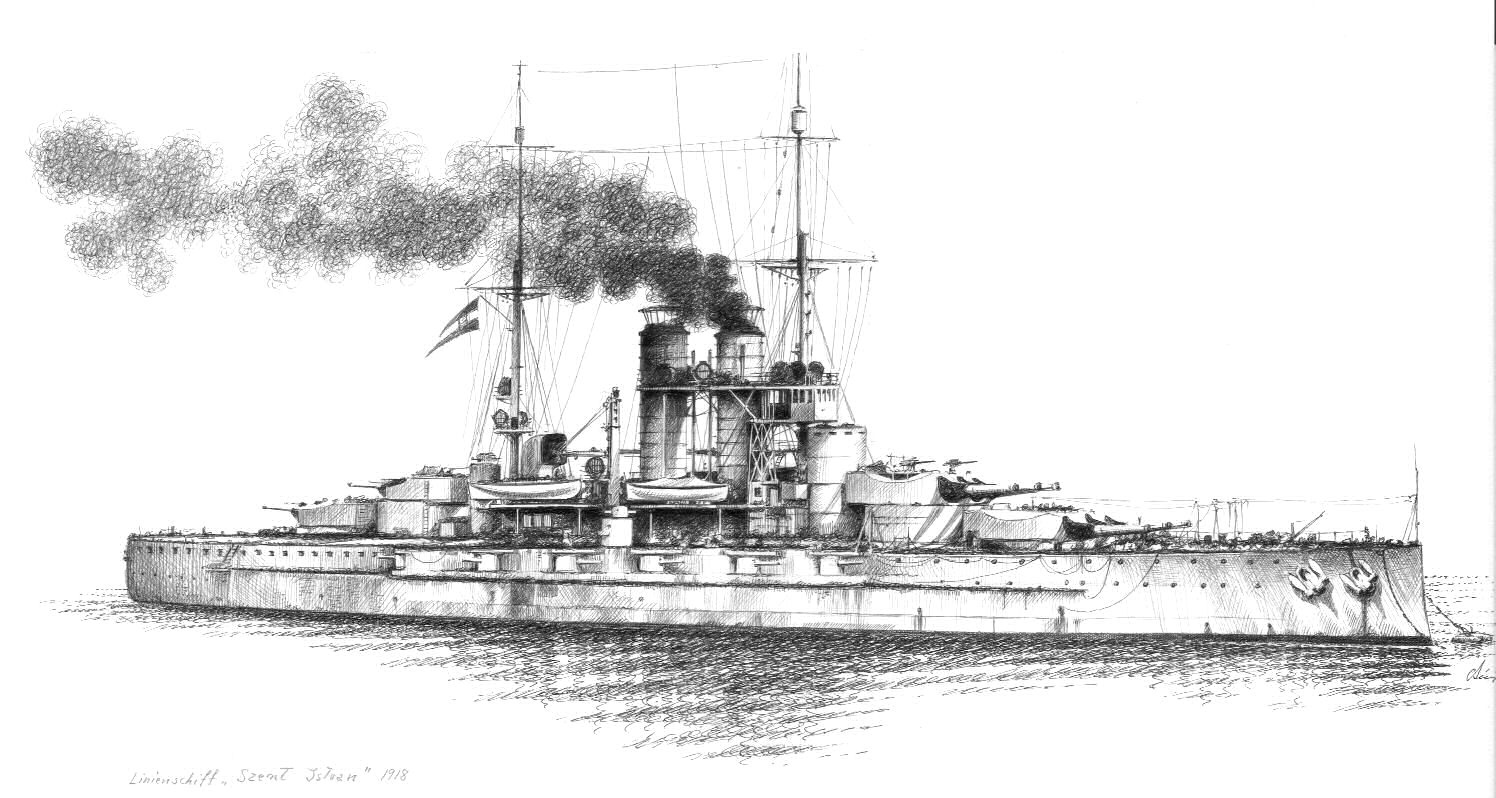S.M.S. Viribus Unitis
| |
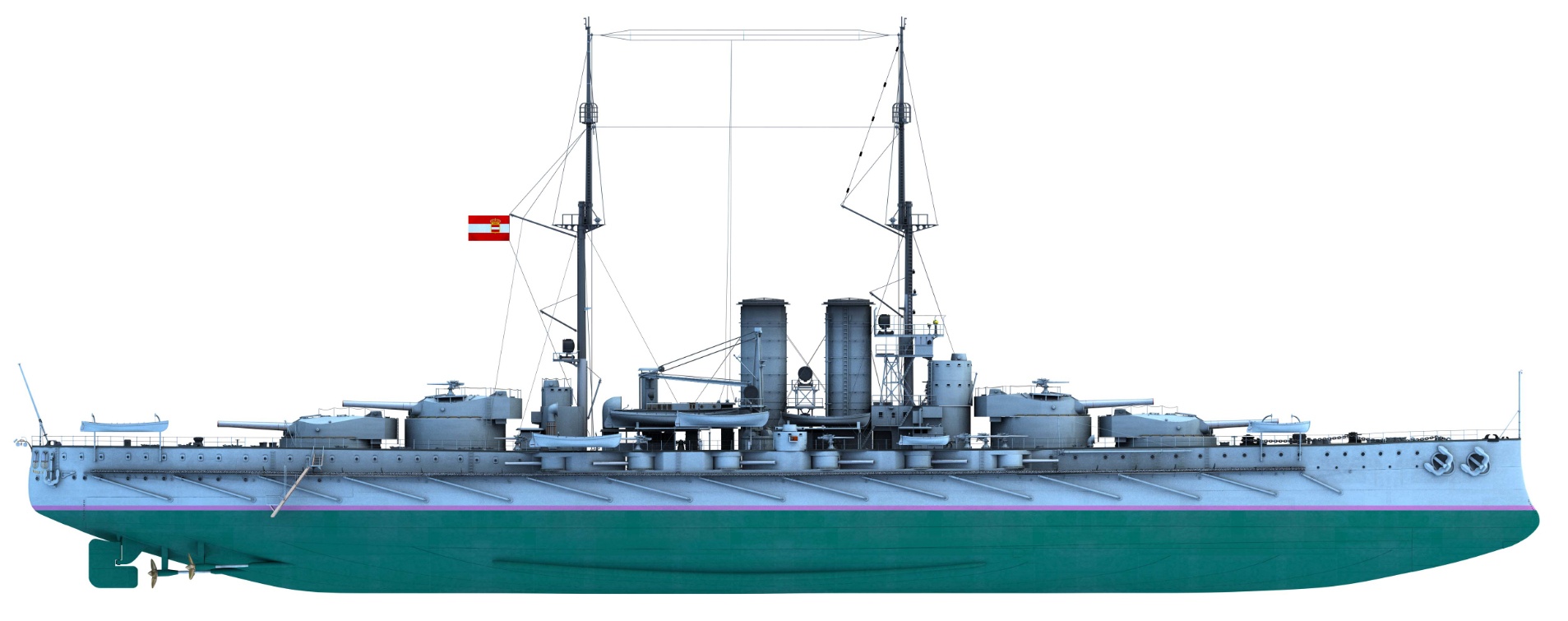
CLICK HERE to see renderings of the S.M.S. Viribus Unitis 3D Model - Created by Andrew W. Wilkie
| |

| |
Austro-Hungarian Navy Flags & Emblems
| |
Ship Plans
S.M.S. Viribus Unitis Plans - Friedrich Prasky
S.M.S. Viribus Unitis - Original Scanned Plans
Boiler Room Machinery
| |
Ship Class Photos & Videos
Above: film footage that includes scenes of the Viribus Unitis launching, main guns firing and the sinking of the Szent István.
Above: 3D model animation of the 305mm gun turrets on the Viribus Unitis
| |
Ship Illustrations, Drawings, Maps and Diagrams
| |
History
The following is from the Free Encyclopedia – Wikipedia.org on the  Tegetthoff Class Battleships
Tegetthoff Class Battleships
The Tegetthoff class (sometimes called Viribus Unitis class) was the sole class of dreadnought battleship built for the Austro-Hungarian navy. Four ships were built, SMS Viribus Unitis, SMS Tegetthoff, SMS Prinz Eugen and SMS Szent István.
CONSTRUCTION
The Austrian government ordered the construction of a new fleet in 1908 following the announcement of the start of construction of first dreadnought for the Regia Marina (the Italian navy): the RN Dante Alighieri. The chief designer of the Austro-Hungarian navy, Siegfried Popper, was nearly blind at this stage (he was retired before the ships were launched), and some have blamed this for design deficiencies of the class of ships. The ships of this class were among the first ships to utilise triple gun turrets for its main armament, the first one being the Italian battleship Dante Alighieri whom the Austrian ships were supposed to act against in a war; as for the Italian ship, this choice made it possible to deliver a heavier broadside than other dreadnoughts of a similar size. The triple turret was built at the Skoda Works, in Plzen, Bohemia, and was available at short notice because Skoda were already working on a design for an order for the Russian navy.
The first unit was to bear the name of Wilhelm von Tegetthoff, an Austrian naval admiral of the 19th century, but Franz Joseph I wanted it to be named after his personal motto, Viribus Unitis (Latin: "With united forces"). Anyway, the class name remained Tegetthoff The first three ships were built at the Stabilimento Tecnico Triestino yard, Trieste, but as a condition of agreeing to the construction of the new fleet, and paying for it, the Hungarian parliament insisted that one of the battleships be built at a Hungarian facility, the Danubius yard, at Fiume (Rijeka), which unfortunately had never built anything bigger than a destroyer before and therefore caused delay in construction as the yard had to be extended first. For this reason the final ship, delivered seventeen months late, was given a Hungarian name, named for Saint Stephen, the first king and patron saint of Hungary
OPERATIONS
The Austro-Hungarian navy actually saw little action during the First World War, spending most of its time in its base at Pola (now Pula, Croatia), but the mere fact of its existence tied up the Italian navy and the French navy in the Mediterranean for the duration of the war. The navy's inactivity was partly caused by a lack of coal, and partly by a fear of mines in the Adriatic, which also kept the Italian navy in port for most of the war. In 1918 Admiral Miklos Horthy de Nagybanya became rear admiral of the fleet, and he determined to use the fleet to attack the Otranto Barrage. On 8 June 1918 he took the Viribus Unitis and Prinz Eugen south with a small supporting flotilla; on the evening of 9 June Szent István and Tegetthoff followed. Unfortunately in trying to make maximum speed in order to catch up, Szent István's engines started to overheat and speed had to be reduced to 12 knots. When an attempt was made to increase to 16 knots Szent Istvan started to produce a lot of smoke, which at dawn on 10 June attracted the attention of a pair of patrolling Italian torpedo boats. MAS-21 attacked Tegetthoff, but one of her torpedoes failed to leave the launch tube and the other failed to explode. MAS-15 however succeeded in striking Szent István with two torpedoes at 3.31 a.m.. An attempt to beach the ship on nearby Molat island (northwest of Zara) failed, and at 6.12 a.m. Szent István capsized, taking 89 of her crew with her. Szent Istváns' sinking was filmed from Tegetthoff (one of only two battleship sinkings on the high seas to ever be filmed, the other being that of the British battleship HMS Barham in the Second World War). Horthy called off the attack and the fleet returned to base for the rest of the war.
By the late autumn of 1918 the disintegration of the Austro-Hungarian Empire was well under way. On 6 October 1918 the National Council of Slovenes, Croats and Serbs (SCS) was founded in Zagreb. Note that the Serbs in the council represented the Serbs resident in Croatia, not Serbia. On 29 October the Council cut all political and diplomatic links between Croatia and Austria and Hungary, and established the State of Slovenes, Croats and Serbs, comprising Croatia, Slovenia and Bosnia (Drzava SHS, in Croatian). Emperor Charles I gave the entire Austro-Hungarian navy and merchant fleet, with all harbours, arsenals and shore fortifications to the Council of SCS. On 31 October in Pula harbour the Emperor's Hymn, Gott erhalte unseren Kaiser was played for the last time and the Austro-Hungarian flag was replaced by the Croatian flag.
SINKING OF THE VIRIBUS UNITIS
At 5 p.m. on 31 October 1918 the commander of Viribus Unitis, Janko Vukovich de Podkapelski took command of the entire fleet. The National Council of SCS promoted him to rear admiral, and sent diplomatic notes to the governments of France, the United Kingdom, Italy, the United States of America and Russia, to notify them that the State of SCS was not at war with any of them and that the Council had taken over the entire Austro-Hungarian fleet. Later that night, while the crews were celebrating on their brightly lit ships, at 10:13 p.m. the Italian torpedo boat MAS-95 a few miles from Pula, sent a tiny vessel towards the harbour. The vessel, called a Mignatta (Leech), carried two divers and two 200 kg (400 lb) mines. With some help from Italian agents in Pula, the vessel passed through all the nets, barrages, and other obstacles placed at the harbour entrance. It entered the anchorage, and just before dawn, amongst the brightly lit ships, the divers Rossetti and Paolucci selected the Viribus Unitis as their target.
At about 5 a.m. on 1 November they were spotted, and a boat from Viribus Unitis pulled them out of the water. However the divers had already placed their mines under the flagship. When they were brought aboard, they told everything to the officers and the admiral. The prisoners were transferred to the sister ship, Tegetthoff. The mines detonated but as the ship's coal bunkers were empty design features intended to minimise the effect of explosions did not work and at 6:10 a.m. 1 November 1918, the flagship Viribus Unitis, with the Croatian flag on her mast, capsized and sank quickly with around 300 members of her crew aboard. Admiral Vukovich, who commanded the Croatian fleet for barely twelve hours was last seen standing peacefully on the stern, waiting for death to come.
On 4 November Italian troops entered Pula and seized Tegetthoff and Prinz Eugen. The Italians kept Tegetthoff for their own use, although they broke her up in 1924 following the Washington Naval Treaty of 1922, but she had first featured in the movie Eroi di nostri mari about the sinking of Szent István. Prinz Eugen became French property -- they removed the main armament for inspection and used the ship to test aerial bombardment attacks, before she was finally used as a target ship by the battleships Paris, Jean Bart, and France.
S.M.S. Viribus Unitis Wreck
Below: wreckage diagram showing Viribus Unitis upside down on the bottom of Pola harbour. This illustration shows the location and damage caused by the Italian manned torpedo. She was later salvaged but some wreckage still lies there today.
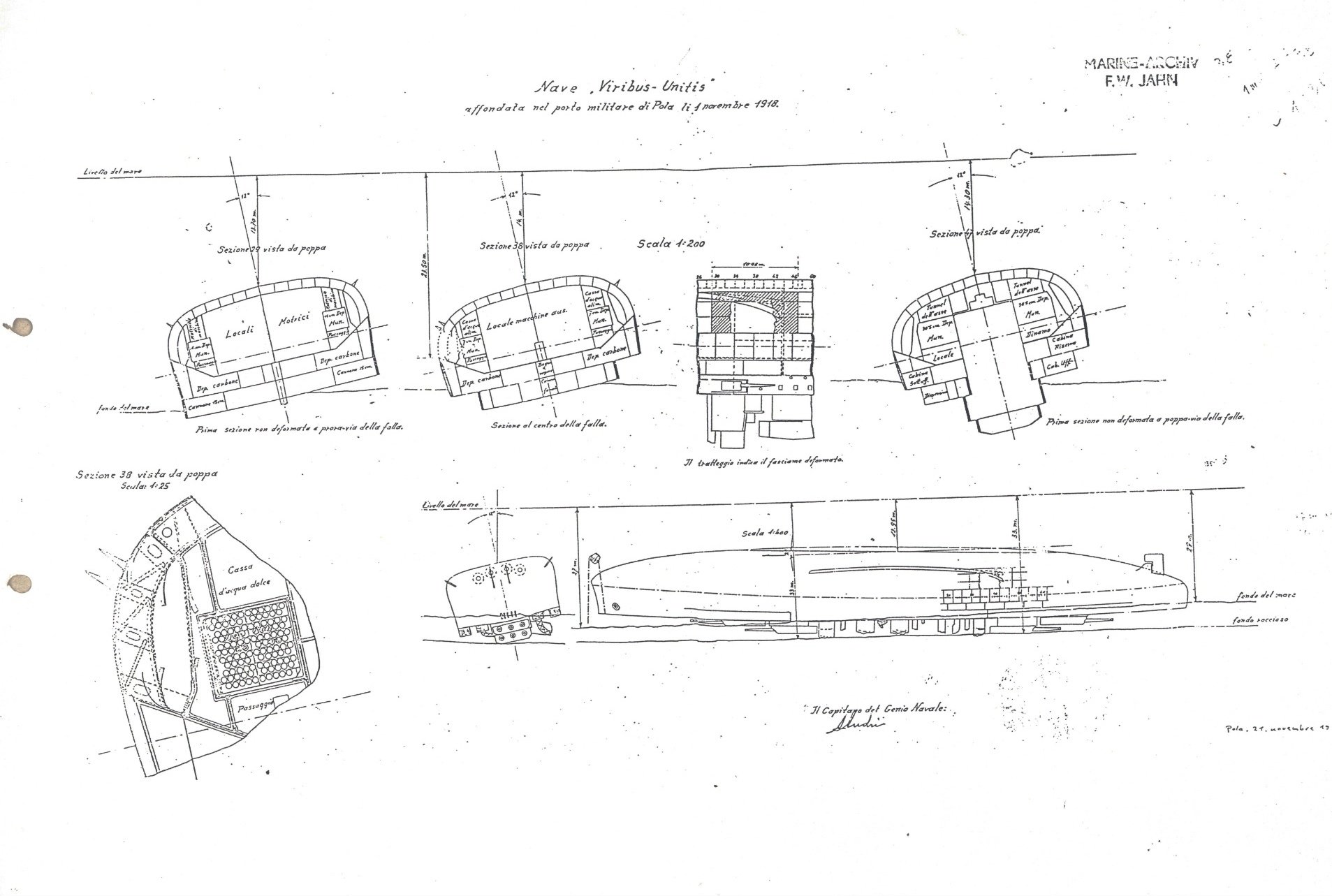
Above: This is a fragment of the manned torpedo "Mignatta" that sank Viribus Unitis on 1 November 1918
(click to enlarge)
(Located at the Naval History Museum, Venice, Italy)
| |
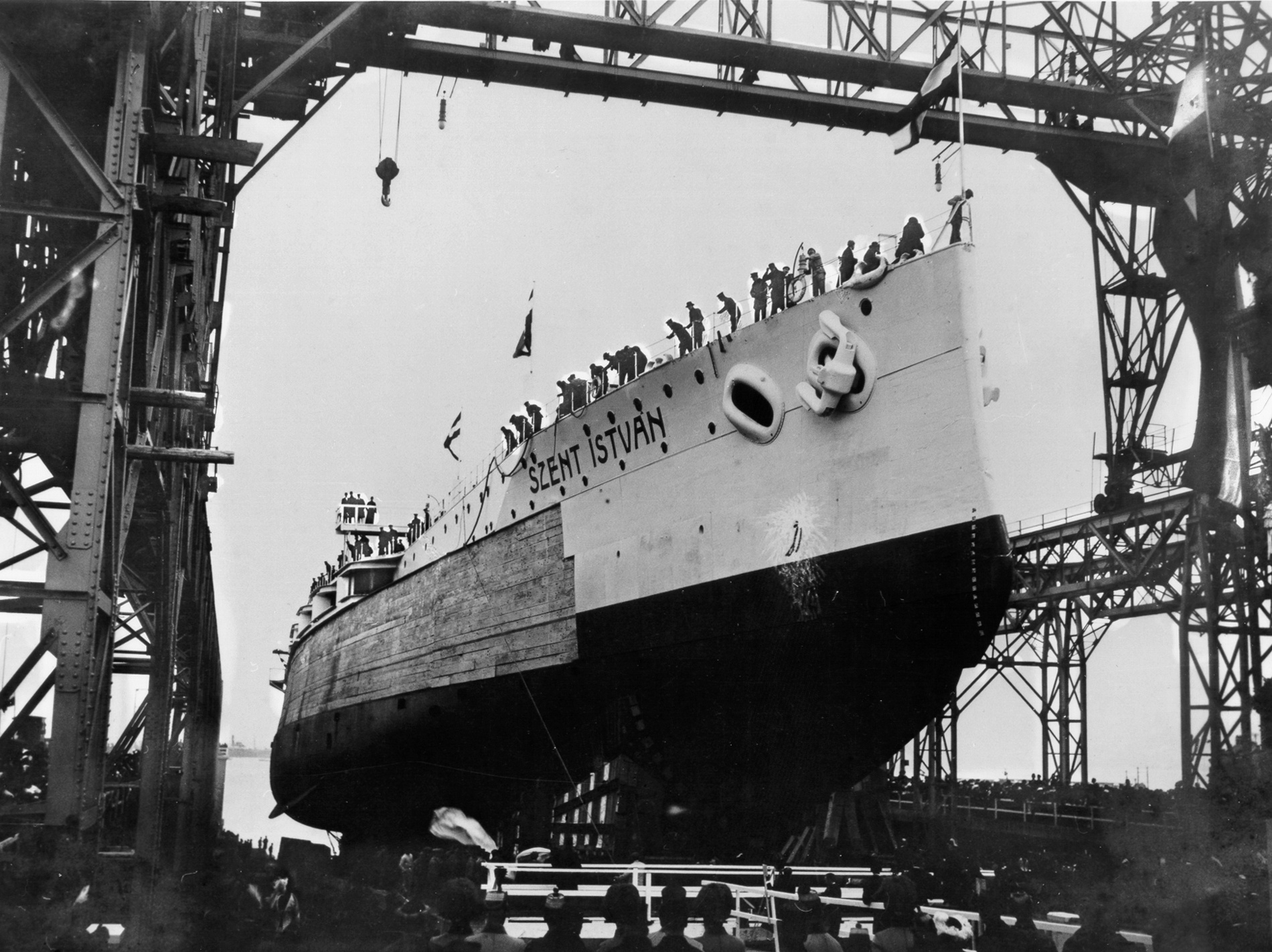
| |
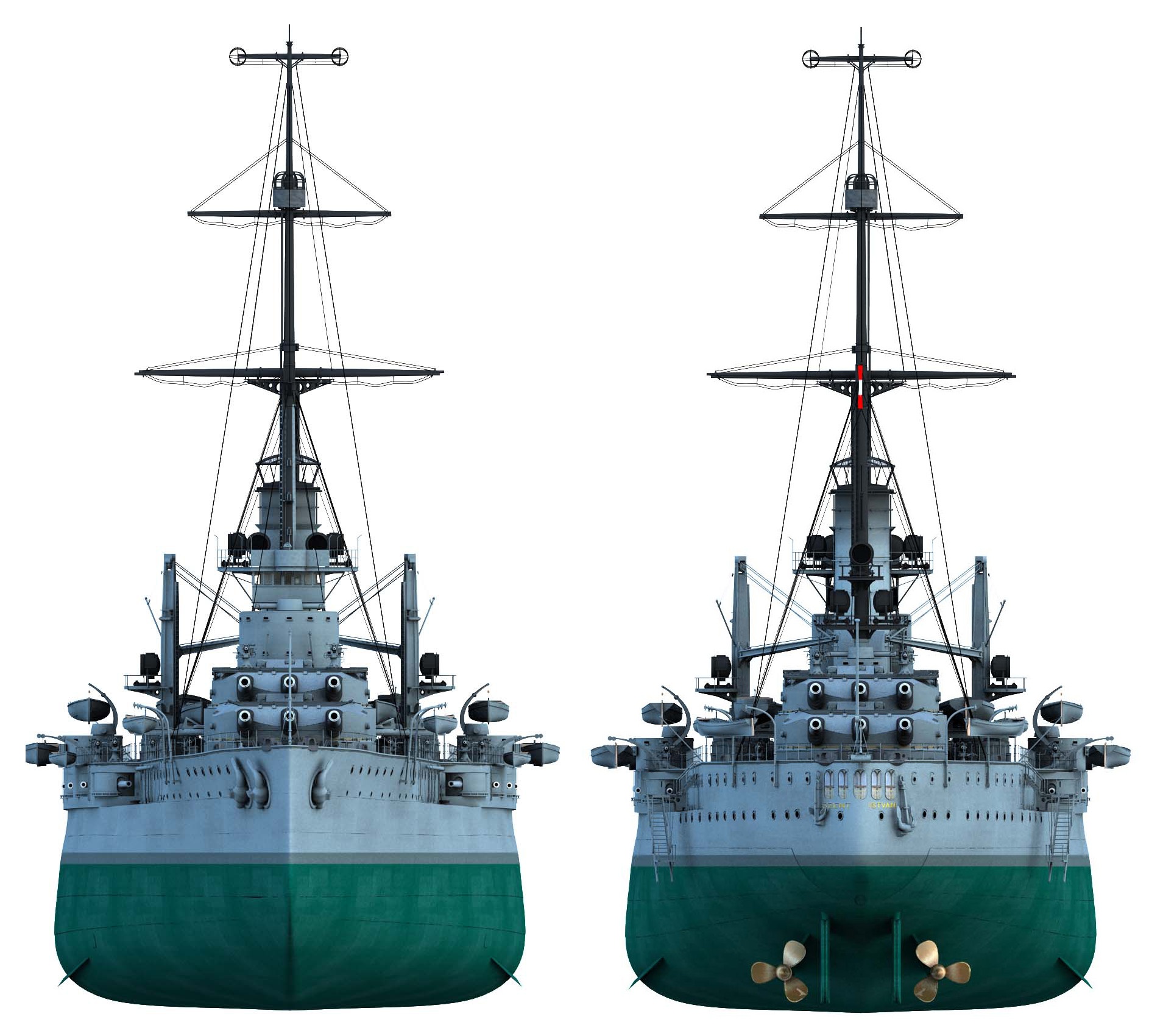
| |
| |
Ship Photos & Videos
Above: S.M.S. Szent István sinking on June 10, 1918 after being struck by two torpedoes from MAS-15, Italian Torepedo Boat
| |
Ship Illustrations, Drawings, Maps and Diagrams
| |
Ship History
The following is from the Free Encyclopedia – Wikipedia.org on the  Szent Istvan Battleship
Szent Istvan Battleship
Wreck Reference Materials
| Szent István Wreck Expedition 1991.pdf |
The SZENT ISTVÁN - Wreck Divers experiences by Erwin F. Sieche |
MAP: Szent István Attack and Sinking Location
